- Philippines
- South Korea
- National Parks
- Travel Stories
- How Much Does It Actually Cost to Travel the World?
- What’s In My Backpack: The Ultimate Long-Term Travel Packing List
- My Favorite Non-Fiction Travel Books
- All Budget Travel Resources
- Writing Portfolio

Mongolia Travel Tips: Everything You Need to Know
This post may contain affiliate links. This just means I may receive a small commission at no extra cost to you for helping them promote their product or service. I don’t endorse any services I don’t personally use or recommend.
“Serene lakes, abundant wildlife, high snow-capped Altai peaks, vast verdant landscapes, and hot dusty desert. You can expect all this in Mongolia. Travel here isn’t luxurious and it’s rarely easy. But it offers adventure that will likely change the way you view the world.”
This guide is filled with Mongolia travel tips and contains *everything* you need to know to travel in Mongolia. How to stay in a real local Ger (what is a ger?), where/how to rent your own vehicle, reputable tours for those that want them, invaluable items you should definitely bring with you, and which ATMs will actually give you cash. Think of it as a “before you go” informative guide. It doesn’t matter how you plan to visit the country — this guide is good for everyone.
I’ve written a slew of blog posts on travel in Mongolia following our heavily researched 3-week overlanding adventure in the country.

Mongolia Packing List & What to Bring on a Mongolia Road Trip
No frills on this packing list. These are the things you NEED to bring…

18 Best Things to Do in Mongolia: Your Mongolia Bucketlist
The best things to do in Mongolia and HOW to experience them for yourself.

EPIC Self-Drive Mongolia Itinerary: Gobi Desert, Altai Mountains, & Reindeer Tribes
The perfect 3-4ish week itinerary for independent travelers.
All Our Mongolia Travel Tips + Mongolia Travel Advice

What to Expect in Mongolia
Mongolia is a rugged adventure travel destination no matter which way you tackle it. Most of the roads are unpaved and pot-holed while the environment ping-pongs from scorching hot to freezing cold.
You’ll most likely spend your nights camping in the remote wilderness or sleeping on a very thin “mattress” inside a Ger. Amenities like hot showers are not commonly available. You should be prepared to do your business in the outdoors if need be.
Ger is a traditional Mongolian nomad house. It’s like a yert, but made from canvas or yak hide. It usually contains several beds, a table w/ sitting area, and a wood stove.
You’ll also probably spend a lot of time driving or sitting in a vehicle because sights in Mongolia are very spread out. We often spent 10 hours a day in the car. On rough roads. If that sounds miserable to you this might not be your destination.
Mongolia is also not a foodie haven. It’s mostly survival food like flavorless boiled lamb and packets of instant noodles.
Towns outside the capital of UB are rarely more than a handful of homes, a Ger camp or hotel, one mini-market for groceries, a restaurant or two, and a basketball hoop. Mongolians love basketball.
You can also expect stunning scenery, fuzzy yaks and Bactrian camels, rolling sand dunes, and reindeer herders.
Mongolia doesn’t get a ton of tourists but those that do come are mostly South Korean and Chinese. They almost always travel in large group tours and you’ll see lots of these in the Gobi.
Toilets in Mongolia
I feel this deserved its own little section. Be sure to bring your own toilet paper and hand sanitizer. These are some of the toilets you should expect in Mongolia.

Sometimes they are more enclosed! But outside of cities and fancy ger camps you should expect this kind of natural squat toilet.
Planning Your Trip
I’ve written some sample itineraries that I recommend for a 1-week , 2-week, or 3 to 4-week Mongolia trip.
Keep in mind you will ALWAYS need more time than you think you do in the country. Especially if you are traveling independently— leave yourself time for misadventure.
Best Time to Visit Mongolia
Full Travel Season: Late May-September
Peak: Late June-August
This is not a year-round destination for most people. Ulaanbaatar is actually the coldest capital in the world with an average temp of -1 degrees C. Up north, temperatures drop to -45 C in winter. If you plan to travel around the country plan your visit for the travel season. Peak season if you can.
Note: Many remote attractions, businesses, and museums close outside the tourist season. But the few open hotels are usually 1/2 or 1/4 of the price they sell for in July/August. Especially the more luxurious places.
Mongolia Travel Tips for Before You Go…
Things you should definitely pack (or purchase on arrival) for mongolia .
- Warm Layers. Lots of them. It gets cold at night even in the summer months.
- A good pillow. For camping and Gers.
- A hat and sunglasses for the desert.
- Lifestraw water bottle .
- Sunscreen & Bug Spray.
I wrote a huge post about what to pack in Mongolia if you plan on driving the country yourself.
If you’ve forgotten anything essential UB can probably help. There are camping and outdoor stores literally all over the city.
3 Apps to Download for Mongolia

1. Google Translate
English is not widely spoken and menus will rarely be in English. The offline version of this app will help you communicate in a pinch.
2. Maps.Me
For getting around the country without the internet.
3. UBCab
This is Ulaanbaatar’s version of Uber and without a doubt the best way to get around the city.
Mongolia Maps & Guidebooks
For most travel, I think blogs have replaced guidebooks. But Mongolia is a very complicated and difficult destination to travel independently. It’s good to have a hard copy map or guidebook on hand. I thumbed through the LP Mongolia guide and found it rather helpful.
Lonely Planet Guidebook
Wifi & Internet in Mongolia
Wifi is a no-go pretty much anywhere outside of Ulaanbaatar. Even then it’s not the best. Many of the fancier Gers we stayed at had power and hot water but no wifi. This is why most travelers get a SIM card in the country. Or use this time to really disconnect. We almost NEVER get a SIM while we travel but we did here.
Mongolia has a surprisingly good network of coverage…we had service in the Gobi desert!

Getting a Mongolian SIM Card
If you plan on traveling in Mongolia independently at all you’ll benefit from a SIM card.
The most popular brands with good coverage are Unitell & Mobiphone.
Note: If you’re road tripping it’s best to have one of each among your group. Maximize your coverage.
Unlike most countries where you get your SIM at the airport— this isn’t the case for Mongolia. You can get your SIM easily at State Department Store right in the city center instead. Or just head to any of your desired provider’s offices throughout the city.
Outside of UB, you’ll have to get a “local SIM”. This means you need a kind local with an ID card to purchase the plan for you. This is possible but more difficult and why you should get this sorted in UB right away.
Cash or Card: Money in Mongolia
Mongolia is a mostly cash economy. You’ll want a lot of it before you head out of Ulaanbaatar. ATMs in rural areas are not usable with a foreign card.
- Mastercard is not accepted everywhere. Have a backup.
- Gas stations *typically* take cards but don’t count on them.
- Basically, everything in Ulaanbaatar accepts card but don’t expect that anywhere else.
- You might have to try several ATMs in a city to find one with cash in it.
Note: Most ATMs only allow you to take out 800,000 tugriks at one time.
Getting Around Mongolia
Travelers have essentially 4 options when visiting the country.
1. Take a Tour.
There is no shortage of tour companies operating in Mongolia. Every single hostel/hotel in Mongolia offers them. There are also hundreds online ready to book long before your trip. You can expect to pay anywhere from $1,500-$3,000 per person for a 7-day tour. This is the most popular and expensive option.
Tips for Choosing a Tour
- It will always be cheaper to book your tour in Ulaanbaatar from your hostel or other budget accommodation than online.
- Tours in Mongolia are super structured and all visit basically the same places.
- If you plan to visit the nomadic reindeer herders DO NOT book with a guide from Ulaanbaatar. There are lots of reasons for this that I outline in my full post about our visit with the Tsataan Tribe.

Tour Companies I Recommend
Get Your Guide Tours
This is my favorite search engine to find tours led by local guides.
Zaya (Gateway to the Reindeer Herders)
Zaya is the only reindeer herder who speaks fluent English. She can organize your entire visit to the Tsaaganuur area. You can contact her on WhatsApp or via email to organize your visit. She doesn’t always have service because she lives in the Taiga but give her time and she will get back to you. This is important to arrange in advance if you can.
Whatsapp: +976 9977 0480
Email: [email protected]
Note: It’s important you go through her because this is the only way your money actually makes it to the tribe you’re visiting. Read more about it here.
2. Overland or Drive Yourself
I may be biased but I’ll just come out and say it, this is the best way to experience the country. Mongolia’s sights are impressive but it’s the camping and vast nature in between them that make the country unique. This gives you the most control over your trip. You can expect to pay around $200 per day for a 4×4 vehicle with camping gear and rescue supplies through Drive Mongolia . Be sure to secure your car as far in advance as you can (6 months is recommended).
Note: This is NOT the route for everyone. Before you commit to driving the country independently please read my blog post “Can You Drive Mongolia on Your Own?” (*coming soon*)
Where to Rent Your Car
While several major car rental companies operate in Mongolia, we chose to use Drive Mongolia for the customer service, the included gear, and the local knowledge. It was also cheaper. So really, there’s no better option.

Mongolian Road Conditions
This is something worth considering before you opt to rent your own car. Our group of four managed to navigate across the country on the rough (non-existent) roads but you should prepare for the worst. This is only for people looking to have a “roughing it” style adventure. Read all my blog posts on road-tripping the country to get a better idea of what it’s actually like out there.
3. Rely on Public Transportation
Despite the lack of paved (or sometimes even designated roads), Mongolia has public buses. Or more likely public Russian Vans. Utilizing these will get you to all major towns in Mongolia (even Tsagaannuur!). It won’t however, get you to all the sights and it will not be comfortable.
This is the super budget-friendly option for travelers to Mongolia. Expect a 12-hour ride to cost about $20.
Mongolia Travel Tips for Super Budget Travelers
- When you reach a major city like UB, Murun, or Tsagaannuur you can reach out to local guides via your homestay. This way you can see all the sights in the area.
- Stick to cooking your own meals and small local restaurants for food. Plates at these kinds of places are usually $2.50.
4. Hire a Driver
If you don’t want to drive yourself in Mongolia THIS is the next best option. Rather than a structured group tour you can simply hire a driver to take you everywhere you want to go. Funnily enough, this is typically cheaper than hiring your own vehicle (due to Mongolian insurance purposes). Expect about $140 per day for driver and car.
Where to Hire a Driver?
- Drive Mongolia . He can also hook you up with a driver, not just a car.
- Facebook Group. This is a great option for solo travelers looking for Mongolia Travel Tips or couples because you can link up with fellow travelers and split the costs.
Note: Mongolians are insane drivers. Hiring a driver does not mean your car won’t break down, crash, or be extraordinarily bumpy— it just means you’ll have a local there to help you solve the problem.
Accommodation in Mongolia
When in Mongolia you’ll likely be utilizing 3 types of accommodation.
1. Tent Camping (if independently traveling)
This is totally free. In Mongolia, you can essentially set up your tent anywhere in nature and wild camp 100% for free. You should do this at least once on your trip.

The Central and Southern areas of the country centered around the Gobi are difficult to camp in because of the lack of grass and rocky soil. Keep this in mind when planning to camp.
Note: I scoured the Internet for epic campsites recommended by other overlanders but truthfully, it’s all beautiful. Don’t bother looking online and just judge the landscape for yourself.
2. Gers
This is one of the big attractions in Mongolia. Sleeping in a local Ger camp. These yerts are scattered all over the country and are still the main housing for farmers and nomads today.
Camps range from small family-run single Ger to sprawling tourist camps with 30+ Gers and extra facilities like showers and toilet blocks. They are priced per person and obviously the basic ones run by families are cheaper. Expect to pay from $8 per person to $20 per person.

Amenities varied wildly with the Gobi desert camps being most expensive. Occasionally, a basic breakfast would be included in this price.
Eating at the Gers
I read a lot about Ger camps offering meals and having restaurants— and while some did, it was not super common in my experience. About 50/50. This is probably because we turned up unannounced and didn’t speak Mongolian. Plan on cooking for yourself UNLESS you are on a tour in which case the Gers always prepared them food.
Some areas had super luxurious gers that cost up to $200 per night. Obviously, these are not the real nomad Gers. We tried to stick to small ger camps and were always very happy with the experience. Here are some of our favorites.
Do you need a reservation?
Typically, no. The one exception was in Terelj where many owners actually live in UB so a heads-up would be nice. Just give them a call at the phone number listed on Google.
We did run into a few instances where camps were full because of arriving tours (high season) but there was always another one just down the road.
You will always find Ger camps near any attraction or any place you might visit in Mongolia.
3. Guesthouse/Hostel/Hotel
You will most likely only use these in major cities like UB.
If you’re traveling in peak season (you should) you will want to book your accommodation in Ulaanbaatar as far in advance as you can. The cheap city center hostels and hotels book quickly. I recommend a week in advance if possible.
Ulaanbaatar Accommodation Recs
The budget-friendly option is in the best neighborhood BUT with a full buffet, excellent wifi, and an incredible shower that can hose off all the dirt after all your cross-country exploring the Ibis is worth an end-of-trip splurge for some.
Budget: Mongolia Vision Tours

Luxury: Ibis Polaris

Food in Mongolia
Boiled lamb. It’s what’s for dinner.
And lunch and sometimes even breakfast. This is the staple of Mongolian cuisine. You’ll get so tired of boiled lamb you’ll never want to even look at it again.

The most popular dishes are fried meat pockets called Huushuur, Tsuivan; a fried noodle dish, and Lavsha; a wheat noodle soup. There are also delicious dumplings.
Food in UB was alright, but overall unimpressive. This is not a country to come to for the food alone. Instead, all my foodies should go to Vietnam (specifically, Ho Chi Minh City ).
Vegans or Vegetarians in Mongolia?
Expect to cook your own meals. Often small local restaurants had no veg options.
Mongolia (especially the rural area) is still sustenance farming and eating whatever is available to survive. Vegetarian and veganism is not prominent here.
As it’s seen as incredibly rude to refuse a cup of tea (which is made with local milk) I would strongly reevaluate why you want to visit this country if you’re strictly vegan.
For a full list of Mongolian etiquette & superstitions check out this blog post. *coming soon*
General Mongolia Travel Tips
Here are the odds and ends to wrap up what you need to know for Mongolia travel.

- Medical care is pretty good in the cities and very good in UB. But outside major cities, you’ll likely be days away from any hospital.
- Days are long in Mongolia’s peak season! The sun doesn’t set until 8 or 9 PM in August. But obviously, the opposite can be said about traveling in the off-season.
I’m thoroughly impressed if you’re still with me. Mongolia is an incredible destination and one that requires quite a bit of pre-planning but it is so worth it. I hope this guide helps you feel more prepared to land in the country and excited to explore all the natural wonders it has to offer!
Save Mongolia Travel Tips for Later!

Further Reading...

How to Visit The Tsaatan: Mongolia’s Nomadic Reindeer Tribe

Khongoryn Els: The Mongolian Gobi’s Biggest Sand Dune

Amarbayasgalant Monastery: A Stunning Buddhist Monument Worth Visiting
No comments, leave a reply cancel reply.
Save my name, email, and website in this browser for the next time I comment.
Notify me of new posts by email.
Sign up to our newsletter!
This site uses Akismet to reduce spam. Learn how your comment data is processed .
Mongolia's Flaming Cliffs: What You Need to Know
How to visit the tsaatan: mongolia's nomadic reindeer tribe, beyond_the_bucketlist.

Language selection
Canada and mongolia.
Services for Canadians if you're visiting, studying, working or doing business in Mongolia. Includes information about coming to Canada.

Travel advice and advisories - Mongolia
Exercise normal security precautions
Travel advice, passport and entry requirements, health and safety information, and more.
Services and information
Coming to canada.
Apply to immigrate. Get a visa to study, work or visit Canada.
Travelling outside of Canada
Travel advice for how to stay safe and returning to Canada.
Living abroad
Everything you need to know to prepare to leave Canada to live in a foreign country.
Canada-Mongolia relations
Canada’s diplomatic, economic or cultural relationship with Mongolia.
Doing business in Mongolia
Business opportunities, market and sector advantages and other insights.
Most requested
- Authentication of documents
- Registration of Canadians Abroad
Find a Government of Canada embassy, high commission or consulate
- Canada and Mongolia news (Canada news)
- Canada and Mongolia news (Local statements)

Canada’s Indo-Pacific Strategy
Advancing and defending Canada’s interests by supporting a more secure, prosperous, inclusive, and sustainable region, while protecting Canada’s national and economic security.

- Embassy of Canada to Mongolia
Terms of service
X (Twitter)
- Canada in Mongolia

- Tour packages
- Tailor Made
- Trip Calendar
- How to get to Mongolia
- Book train ticket
- Book cheap air ticket to Mongolia
- Best time to travel
- Tourist Sim card
- Mongolia Visa information
- What to pack
- Travel Insurance
- List of Mongolian Embassy
- Company profile
- Clients Feedback
- Job Vacancy
- Terms & conditions
- Privacy Policy
- Practical Information
- Destinations
- Things To Do
- Culture, Art & History
- Nature & Geography
- People & Society

- Practical information
- Gobi Desert
- Western Mongolia
- Eastern Mongolia
- Central Mongolia
- Northern Mongolia
- Ulaanbaatar
- Around Ulaanbaatar
- Weather Forecast
How it began

Latest blogs
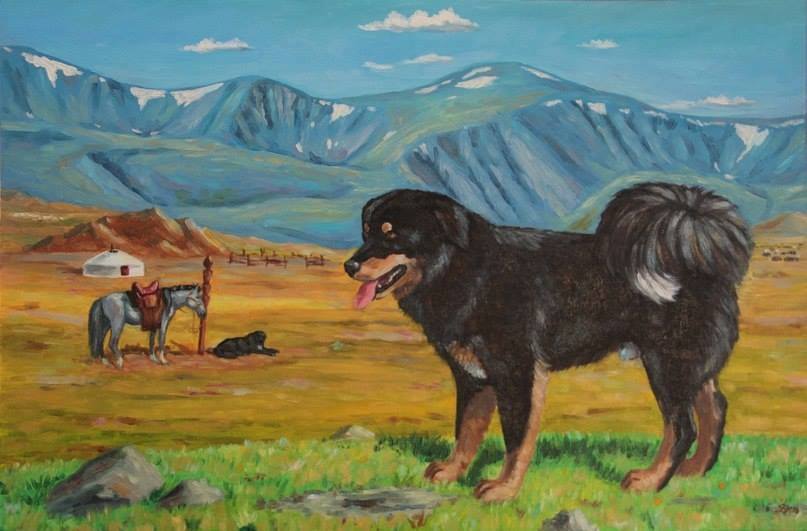
Travel to Mongolia from the US and Canada

If you’re looking to travel to Mongolia from the US or Canada, there are some things you should know before you go. For our best tips on traveling to Mongolia from these two North American countries, keep reading:
Mongolia Is a Landlocked Country
Since Mongolia is a landlocked country, you can only reach it directly by land or air. However, neither of these two options is very straightforward. In both air and land travel, you’ll have a long way to go and a couple of connection flights to make. Alternatively, you can use a combination of flights and train travel, especially if you wish to see some more of Asia.
Flights from the US and Canada
When taking a flight from the U.S., you’ll be landing at the Chinggis Khaan International Airport (ULN), 15 kilometers away from Ulaanbaatar, the Mongolian capital . However, it will take a few connection flights. By Korean Air, you can catch a connecting flight to Ulaanbaatar from Seoul. Air China would take you to Ulaanbaatar from Beijing, while Turkish Airlines would take you there from Istanbul. Finally, it’s also possible to catch a connecting flight to Ulaanbaatar from Moscow by Aeroflot. If you are from Canada, you have the same connection flights available. But Seoul, Beijing, Moscow, and Istanbul can all be more than just a stop along the way, too!
Train Rides
If you’re looking for an unforgettable experience, you could take a train ride via the legendary Trans-Siberian Railway . It’s the longest continuous rail line on Earth, running 7,925 kilometers. You can catch a ride on the Trans-Siberian Railway from almost all of the cities we mentioned earlier. The railway links Ulaanbaatar with Irkutsk, Moscow, and Beijing.
From Moscow, it would take you about 5 days to arrive in Ulaanbaatar. From the Baikal Lake and Irkutsk, it would take a day, while traveling from Beijing to Ulaanbaatar via the Trans-Siberian Railway takes 28 hours. Taking the train is a great way to see more of Asia’s natural beauty while you’re on the road.
When it comes to needing a visa , U.S. citizens don’t need it for visiting Mongolia, provided that the visit doesn’t last longer than 90 days. For Canadian citizens, the window is a little shorter — you won’t need a visa if you plan on staying less than 30 days.
Mongolia might be far away from your home country, but it’s worth a visit! Gorgeous valleys, harsh and beautiful deserts and steppes combined with the warm welcome of the Mongolian people will make your trip unforgettable.
If you liked this article, you might find more similar travel ideas here
Need Help Planning Your Vacation?

Related Blogs
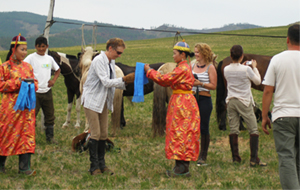
Most Popular
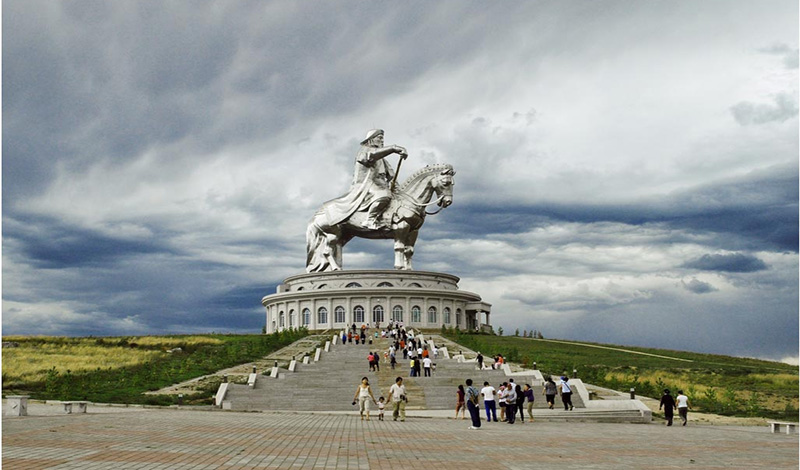
Since 2004, we have been helping people the world over to enjoy unforgettable adventures to our homeland, and we do it all with expertise and passion.
- Best seller tours
- Tailor made tour
- A day tours
- Join in tours
- Private tours
- Best Time to Travel
- Mongolian Visa Information
- Hotel booking
- Flight ticket booking
- Train ticket booking


Mongolia Travel Advice and Travel Advisories
Mongolia travel vaccines and advice.

Mongolia is a mosaic of landscapes. Between steppes and forests, green mountains, arid plains, vast plateaus dotted with rare species of wildlife and flowers, desert and lakes, this luscious setting cannot help but delight its visitors. Explore remote rural villages, the Siberian taiga and the Gobi Desert. For more of a unique experience, reserve a yurt for the night. You must also ensure to treat your taste palates by tasting gourmet Mongolian cuisines such as buuz and khuushuur . Do not finish your trip to Mongolia without chatting with some locals to gain a sense of their warm hospitality.
Mongolie/Mongolie (1).jpg)
Recommended travel vaccinations for Mongolia
Recommended medication for travelling to mongolia, current weather in mongolia, medical care in mongolia.
Although a visit to Mongolia proves incredibly memorable, the sanitary conditions in the country are inadequate and visitors are exposed to the possibility of contracting diseases. Medical care is limited, especially in regions outside of Ulaanbaatar. Despite these conditions, Mongolia offers modern services such as a medical center en route to the airport. You can find another hospital located on Avenue de la Paix.
Medical assistance can be obtained by dialling 103 . However, medical evacuation is necessary in the event of serious illnesses.
Is Mongolia Safe for Travel?
Do i need a visa to visit mongolia.
Prior to travel, make sure you check with your transportation company about any passport requirements. This is important as in some cases their regulations on passport validity may be more strict than those of the destination country.
Only a passport is required to enter Mongolia for trips under 30 days. Your passport must be valid for at least six months beyond the date of departure .
Please click here for more information.
Embassy of Canada to Mongolia information
When travelling to another country, it is important to know where the Canadian embassy is located in the event of:
- A legal problem
- A lost passport
- The need to report a crime
It is advisable to make a copy of your original passport in case you lose it.
Canadian Embassy to Mongolia Street Address: Sukhbaatar Square 2, Central Tower, Suite 608, Sukhbaatar District, Horoo 8, Ulaanbaatar, Mongolia
Tel.: (976-11) 332-500 Fax: (976-11) 332-515
Email: [email protected]
Click here to access the embassy’s website

©GML/Getty Images

Check out this year's Best in Travel winners
Rugged Mongolia is an adventure destination where travelers can experience vast, untouched landscapes and learn about nomadic culture.
Best Time to Visit
Best places to visit, leave the planning to a local expert.
Experience the real Mongolia. Let a local expert handle the planning for you.
Attractions
Must-see attractions.
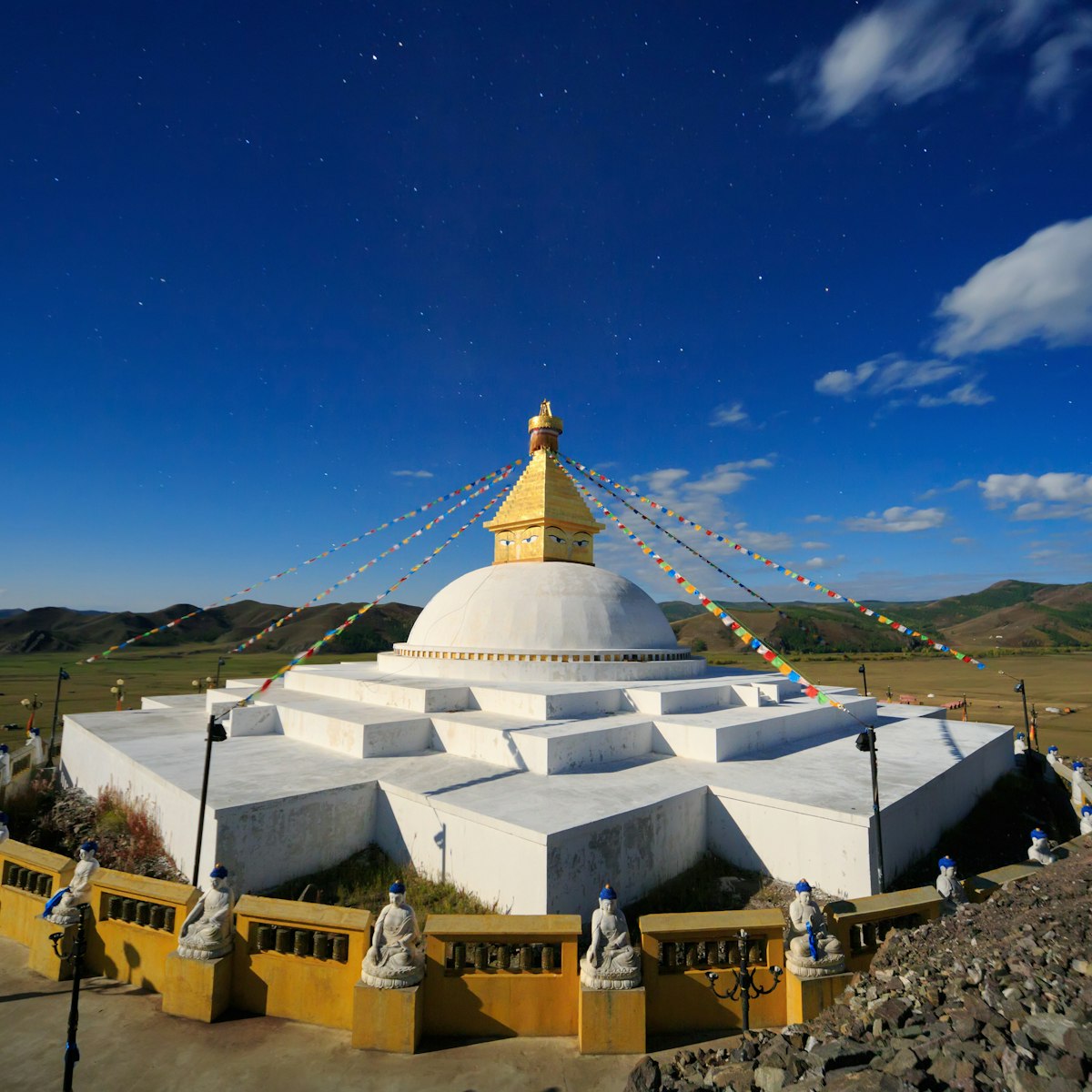
Amarbayasgalant Khiid
Amarbayasgalant Khiid was built between 1727 and 1737 by the Manchu emperor Yongzheng, and dedicated to the great Mongolian Buddhist and sculptor…
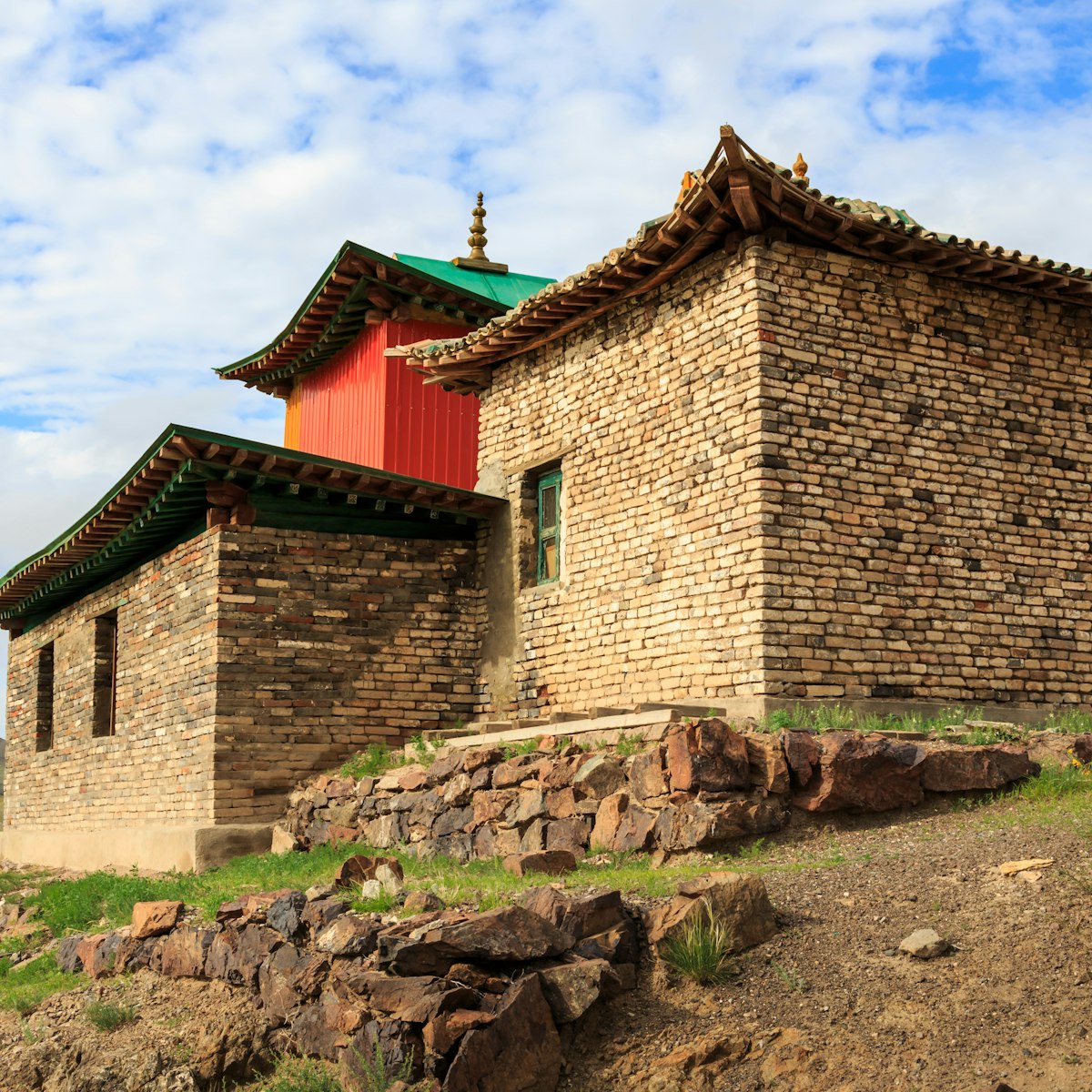
Ongiin Khiid
The bend in the river here marks the remains of two ruined monasteries which are today considered one vast complex known as Ongiin Khiid. Bari Lam Khiid…

Ikh Nartiin Chuluu Nature Reserve
This 670-sq-km nature reserve, only a four-hour drive from Ulaanbaatar, at an elevation of 2200m, is home to hundreds of ibexes (mountain goats), argali …
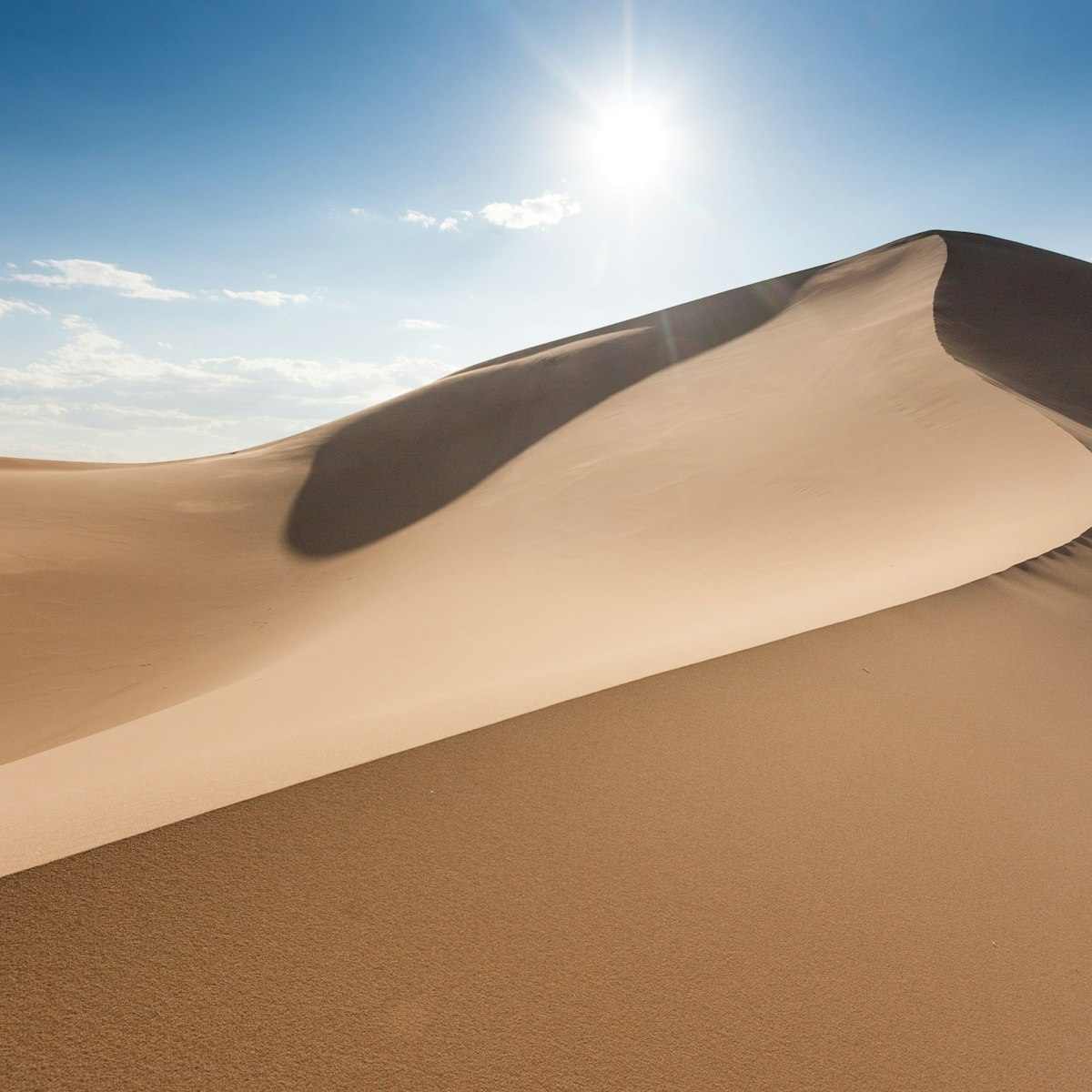
Khongoryn Els
Khongoryn Els are some of the largest and most spectacular sand dunes in Mongolia. Also known as the Duut Mankhan (Singing Dunes – from the sound they…
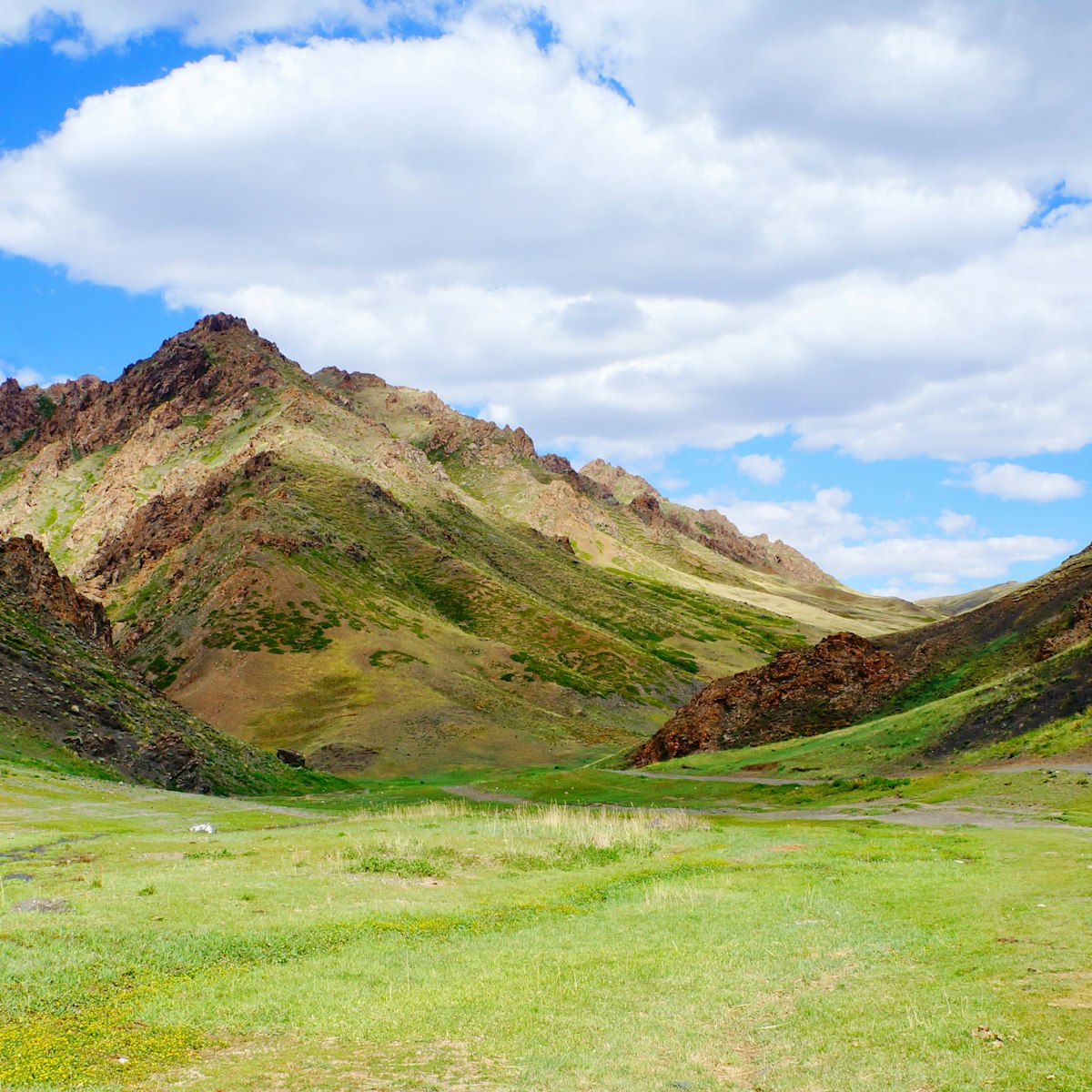
Yolyn Am Gorge
A pleasant 2km path leads from the parking area to this gorge filled with blue ice, one of the park's can't-miss sights. You can hike, bike or hire a…
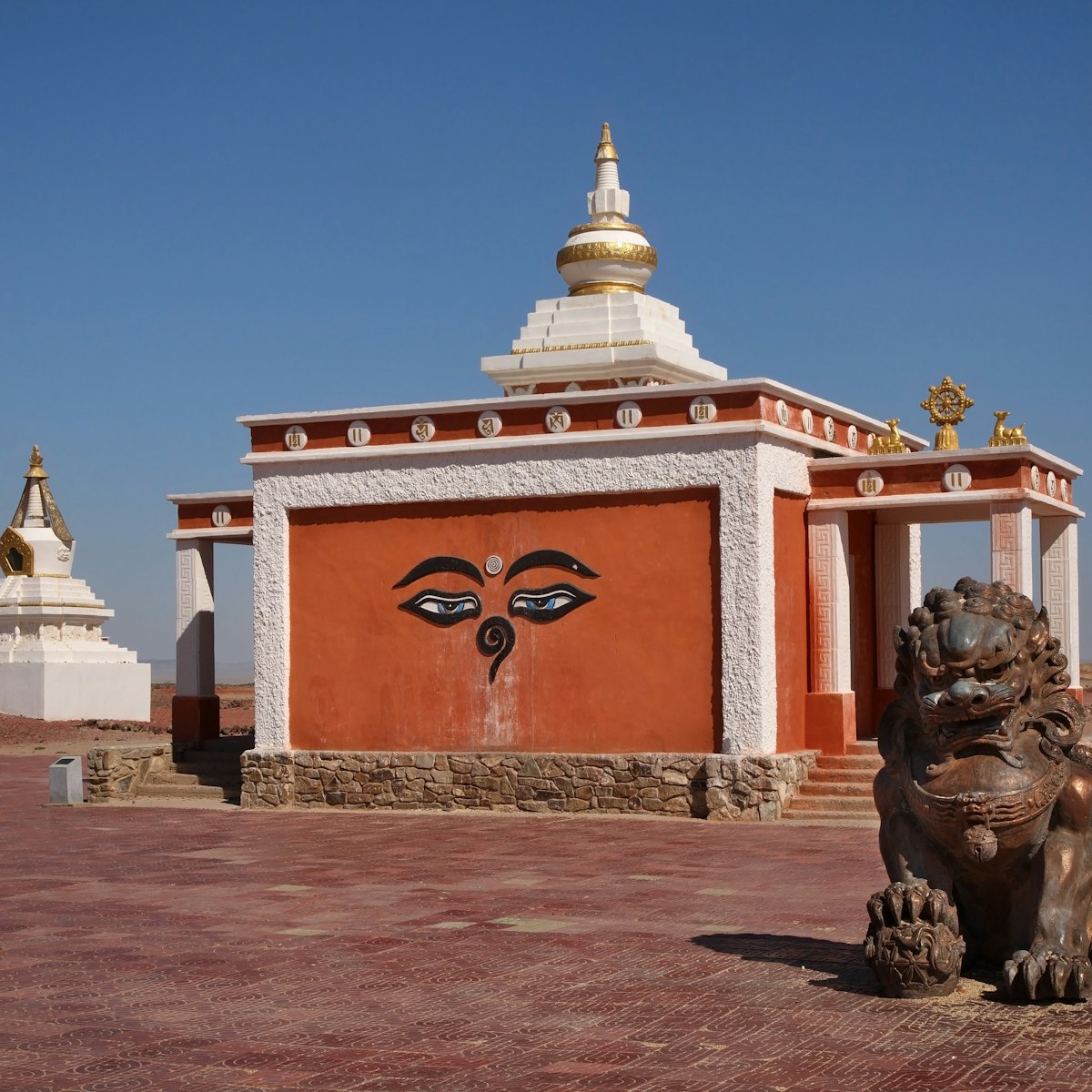
In 1853 Danzan Ravjaa told the local people that he would die in three years but that they could forever come to this place and speak to his spirit…
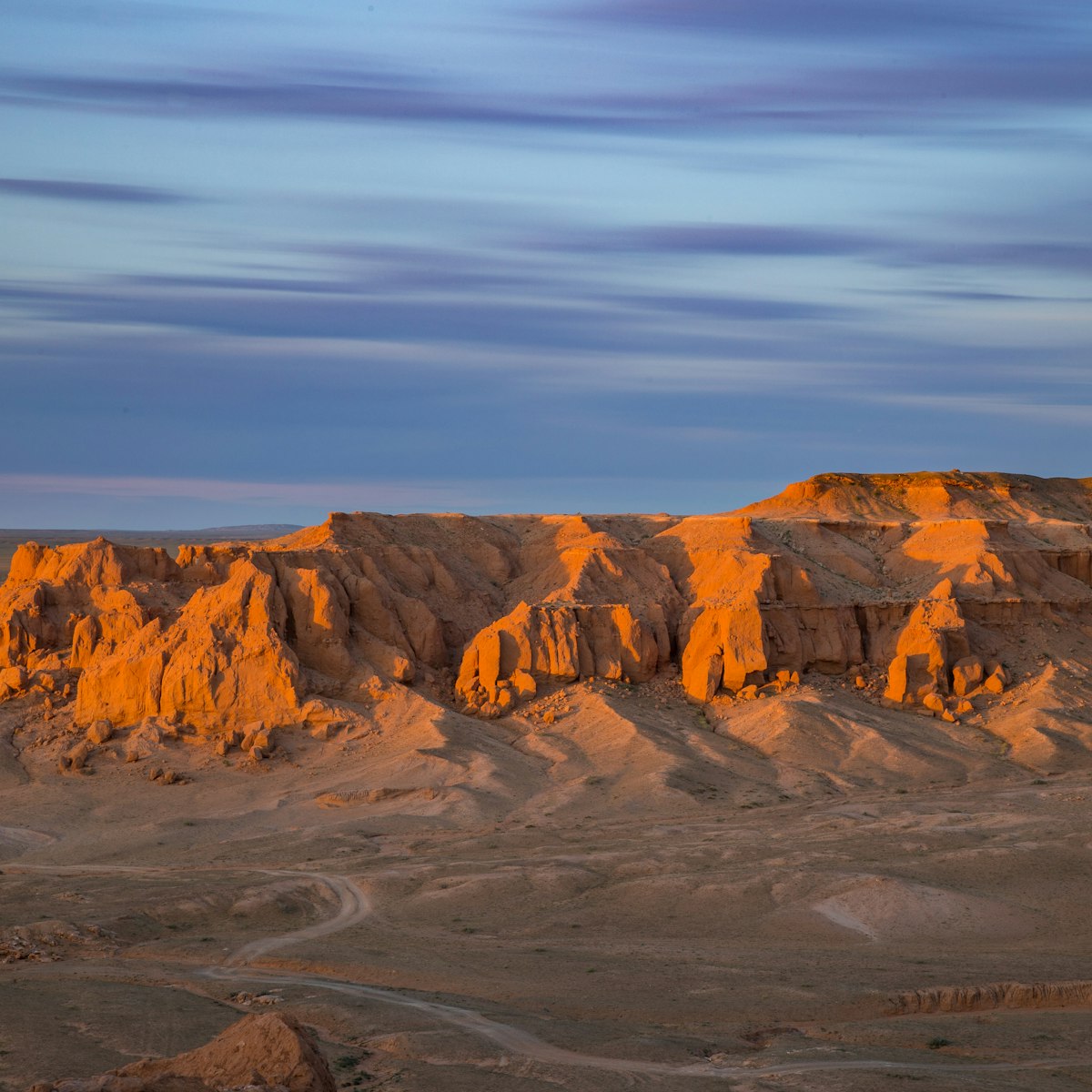
The so-called Flaming Cliffs are a Gobi highlight and an important palaeontology site first excavated by Roy Chapman Andrews in 1922. Even if you are not…

Yolyn Am was originally established to conserve the region's bird life, but it’s now more famous for its dramatic rocky cliffs and narrow, heavily shaded…
Top picks from our travel experts
6 of the best things to do in mongolia.
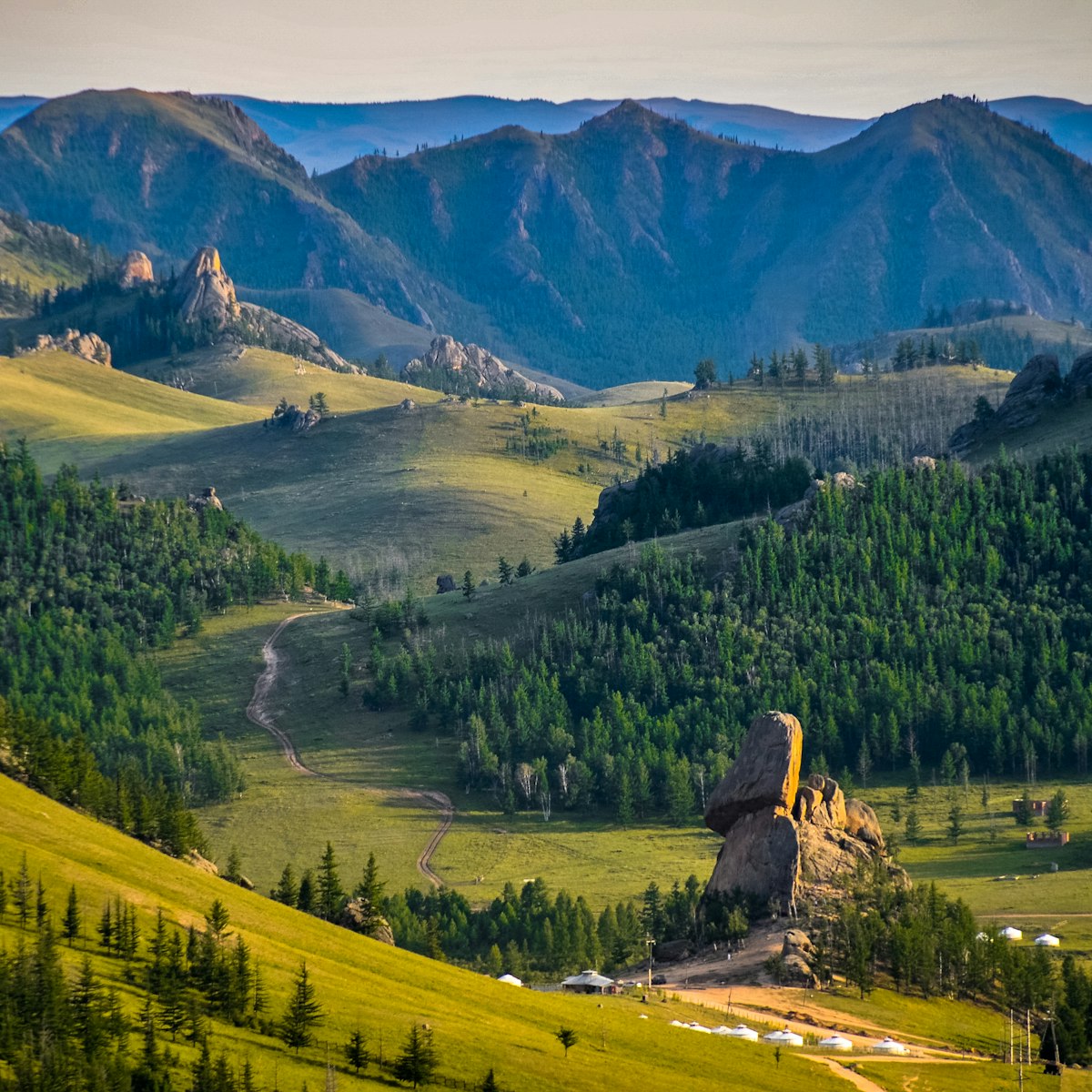
Gorkhi-Terelj National Park
Located 55km northeast of Ulaanbaatar, this popular national park is characterised by picturesque alpine scenery. It offers great opportunities for hiking…

Khermen Tsav
Way off the beaten track; you are likely to have this complex of canyons all to yourself. Some say they are even more spectacular than Bayanzag. Be sure…
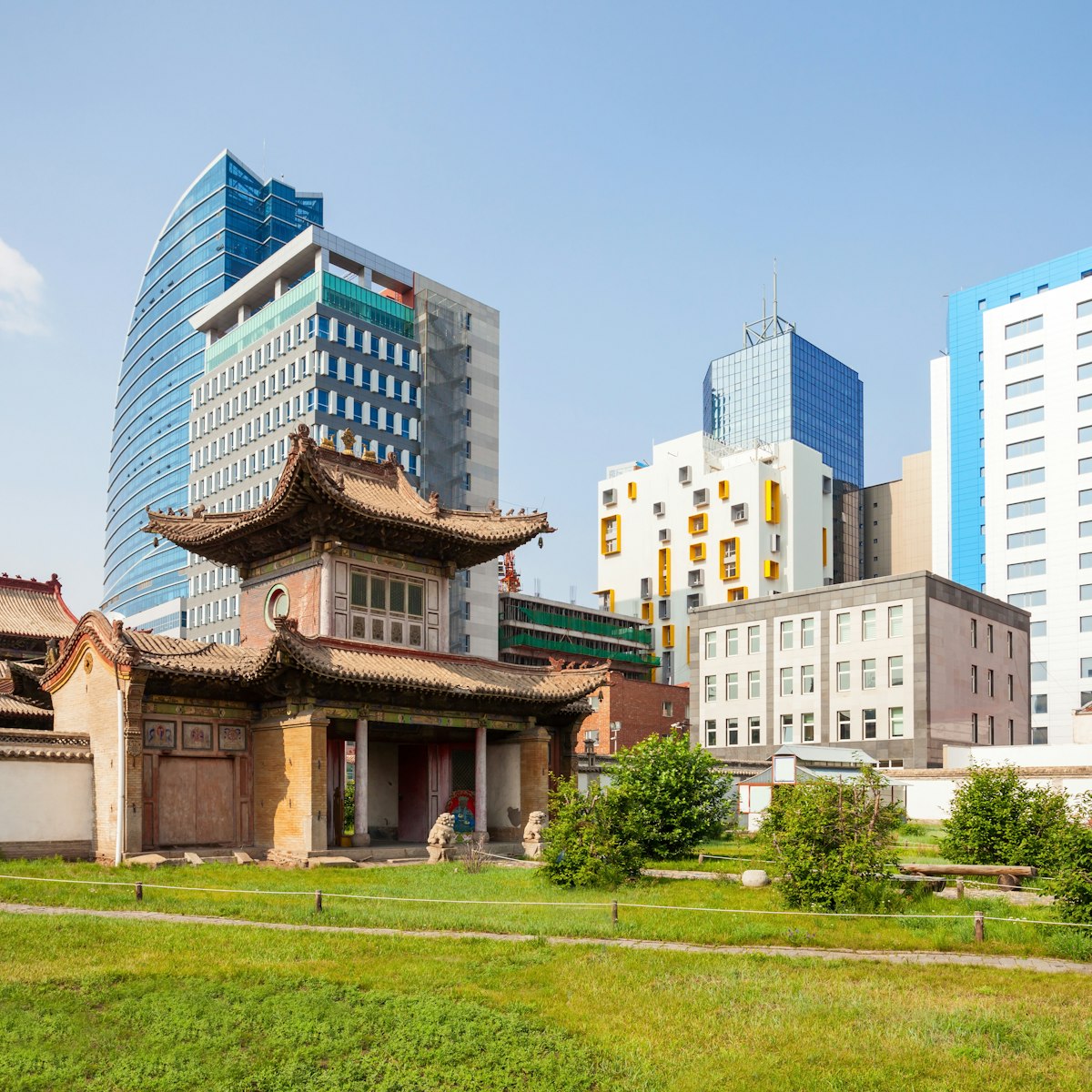
Choijin Lama Temple Museum
Ulaanbaatar
This temple museum smack in the middle of downtown Ulaanbaatar was the home of Luvsan Haidav Choijin Lama (‘Choijin’ is an honorary title given to some…

Khuisiin Naiman Nuur Nature Reserve
The area of Naiman Nuur, which was created by volcanic eruptions centuries ago, is now part of the 115-sq-km Khuisiin Naiman Nuur Nature Reserve. Despite…

Khavtsgait Petroglyphs
If you take the main route from Dalanzadgad to Khongoryn Els, keeping the mountains to your left as you go, you can stop and hunt the hills for this…

Mongolian National Modern Art Gallery
Sometimes called the Fine Art Gallery, this place contains a large and impressive display of modern and uniquely Mongolian paintings and sculptures, with…

Zanabazar Museum of Fine Arts
This fine-arts museum has a superb collection of paintings, carvings and sculptures, including many by the revered sculptor and artist Zanabazar. It also…

Central Museum of Mongolian Dinosaurs
Dinosaurs of all shapes, sizes and appetites once roamed the Gobi Desert. Their fossilised bones and eggs were first uncovered by American explorer Roy…

Sükhbaatar Square
In July 1921 in the centre of Ulaanbaatar, Damdin Sükhbaatar (the ‘hero of the revolution’) declared Mongolia’s final independence from China. A square…
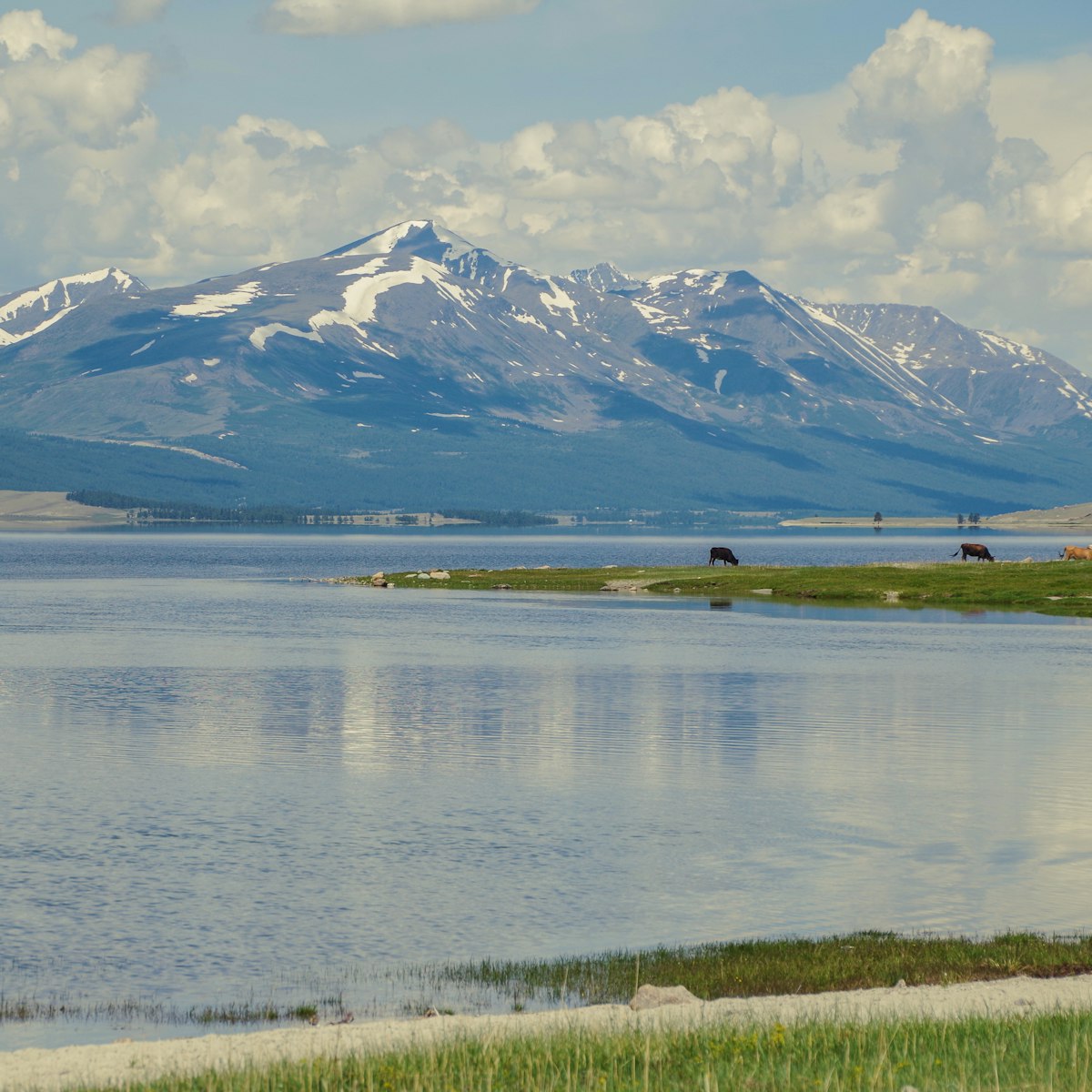
Altai Tavan Bogd National Park
Western Mongolia
Covering 6362 sq km, Altai Tavan Bogd National Park takes in the Tavan Bogd massif – which includes Khuiten Uul (4374m), Mongolia's highest mountain…
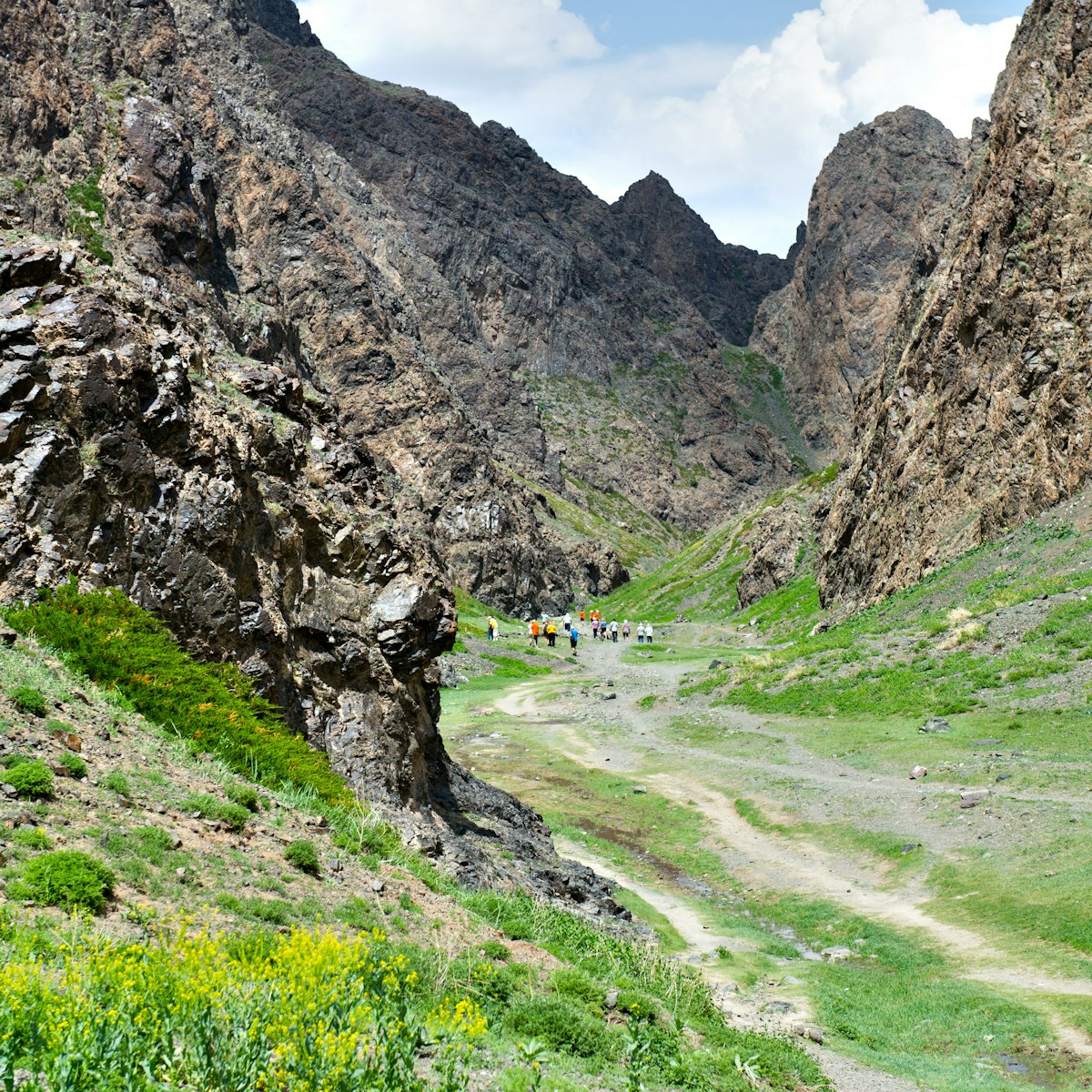
Gurvan Saikhan National Park
Gurvan Saikhan National Park (20,000 sq km) offers a wealth of sand dunes, canyons, dinosaur fossils and mountainous terrain. Desert wildlife includes…

Gandan Khiid
Around the start of the 19th century more than 100 süm (temples) and khiid (monasteries) served a population of about 50,000 in Urga (the former name of…

Ancient Karakorum
Stretching out for about 1km east of town is the site of ancient Karakorum. The foundations of Karakorum’s buildings are all underground and little has…

Bogdkhan Uul Strictly Protected Area
The Bogdkhan Uul is said to be the world’s oldest nature reserve. Established in 1778, the park was guarded by 2000 club-wielding lamas. Animal poachers…
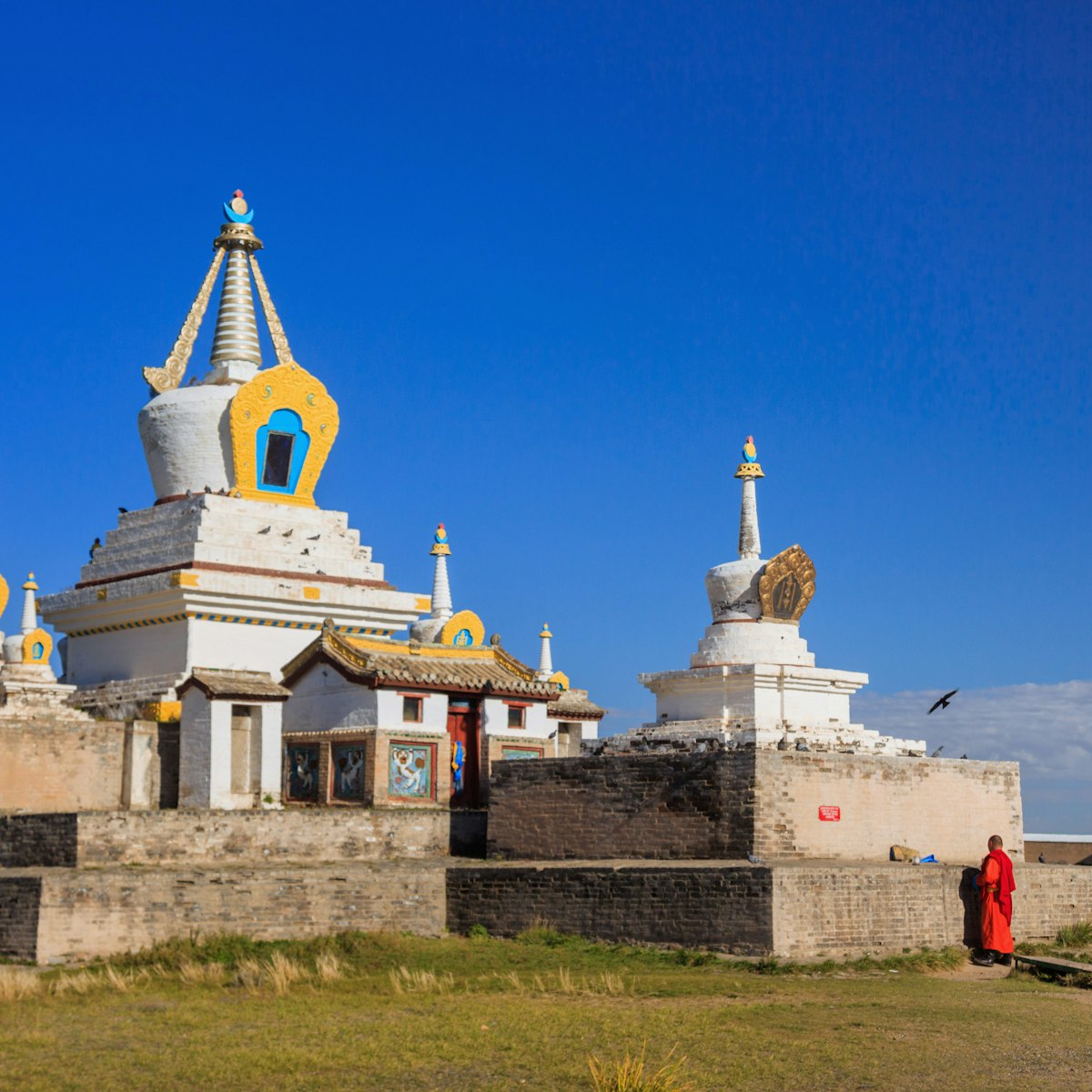
Erdene Zuu Khiid
Founded in 1586 by Altai Khaan, Erdene Zuu (Hundred Treasures) was the first Buddhist monastery in Mongolia. The monastery went through periods of neglect…
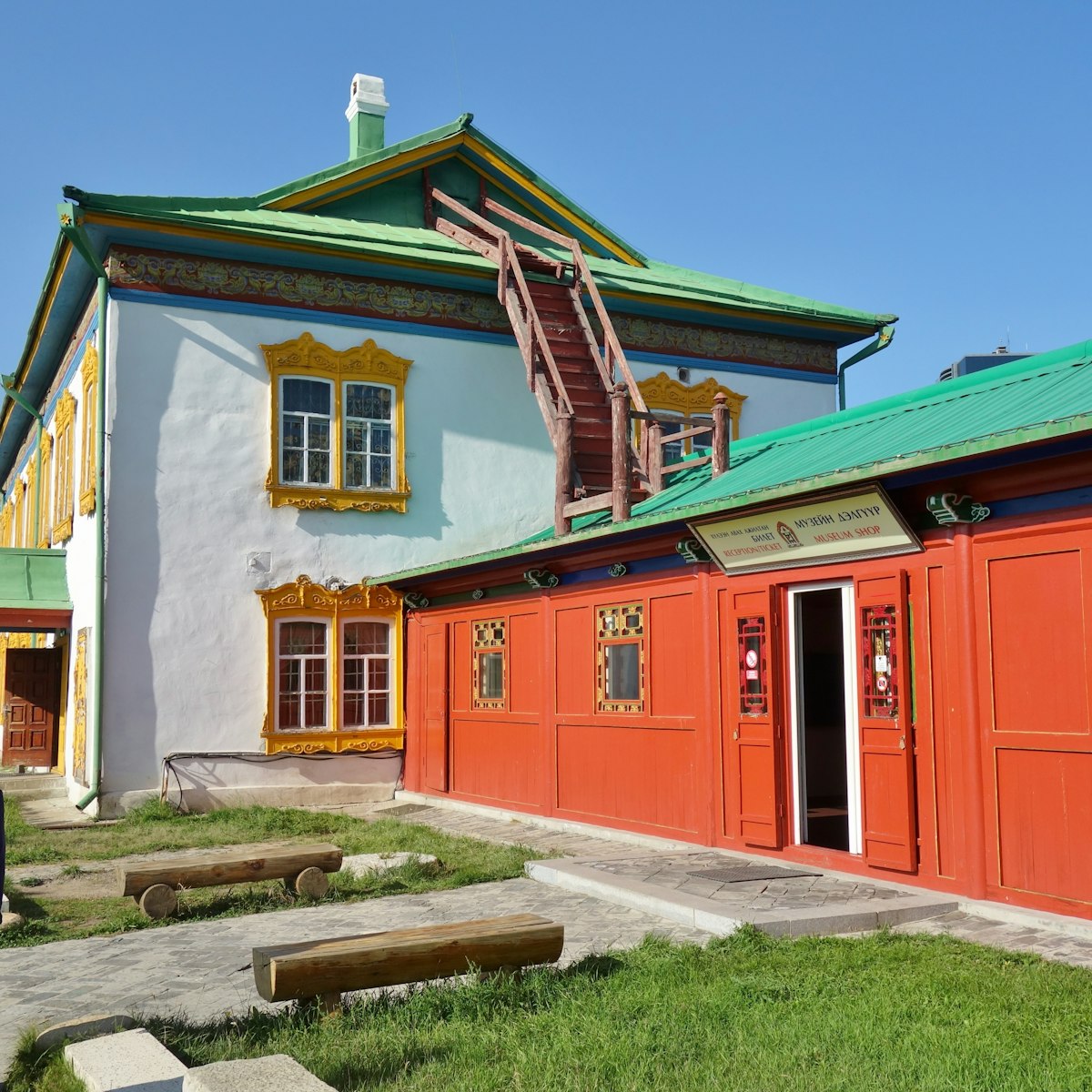
Winter Palace of the Bogd Khan
Built between 1893 and 1903, this palace is where Mongolia’s eighth Living Buddha, and last king, Jebtzun Damba Hutagt VIII (often called the Bogd Khan),…
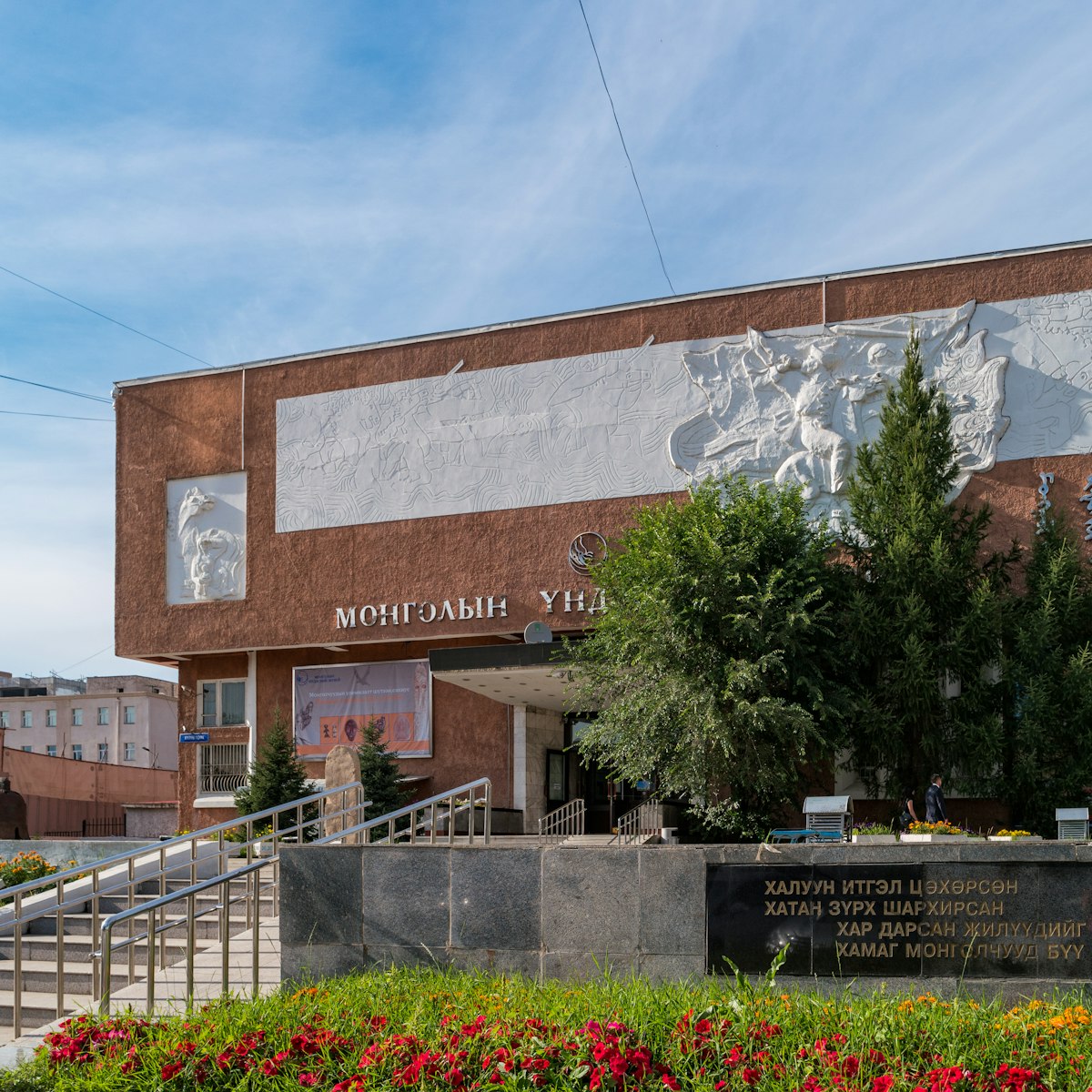
National Museum of Mongolia
Mongolia’s wonderful National Museum sweeps visitors from the Neolithic era right to the present day. It’s UB's only genuine blockbuster sight, offering…
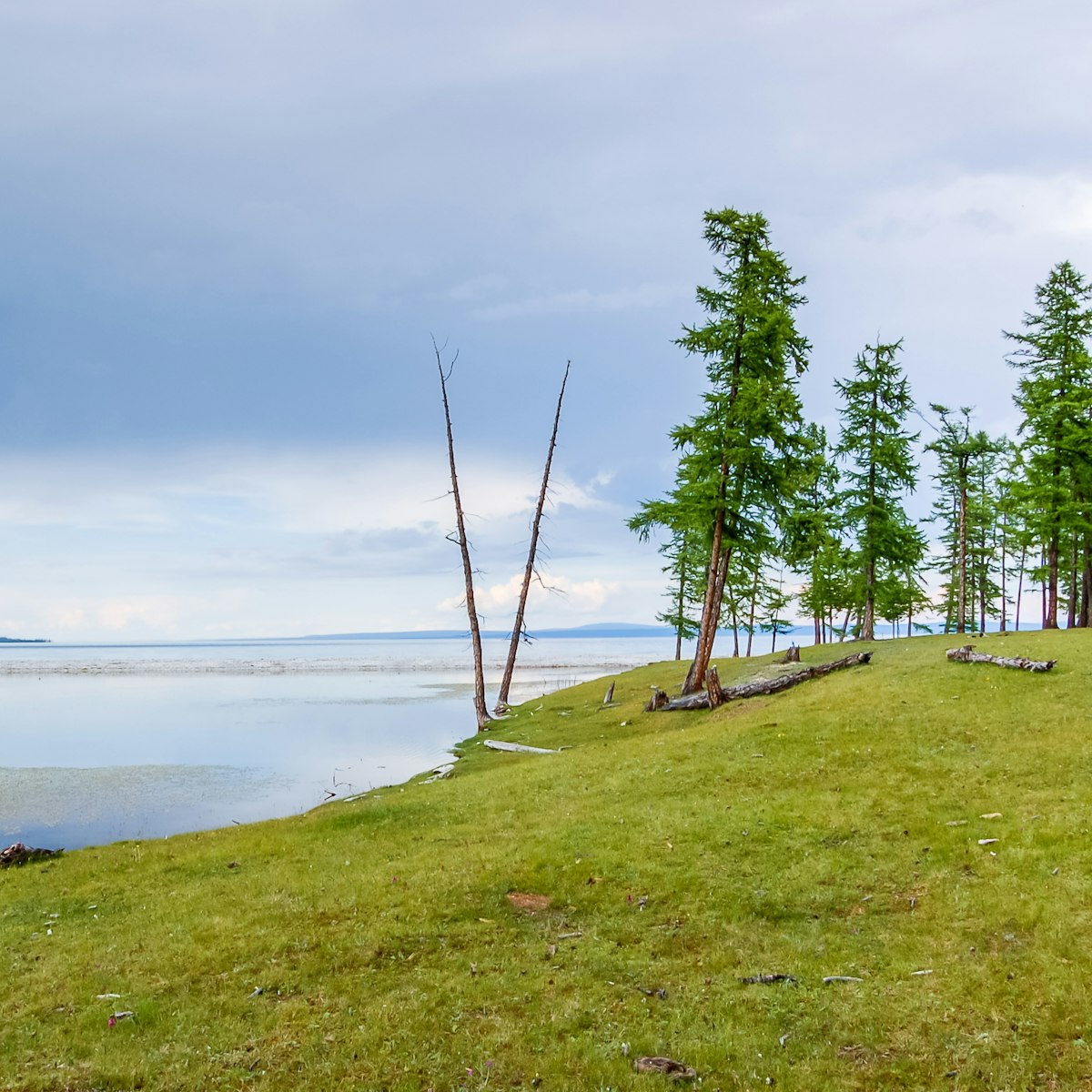
Khövsgöl Nuur National Park
Cupped in the snowcapped fist of the Sayan and Khoridol Saridag mountains, this national park is anchored by the shimmering blue sweep of the ice-cold,…
Planning Tools
Expert guidance to help you plan your trip.
Best Things to Do
Mongolia is an adventure like no other. Experience the very best of the country with these top activities.
Things to Know
With planning and booking tips along with info on health, safety and etiquette, here's what first-time visitors should know before traveling to Mongolia.
Transportation
Getting around in Mongolia is a proper adventure. Here’s how to go about it.
Visa Requirements
Been dreaming of Mongolia's vast unspoiled landscapes? We've got good news – getting a visa is now even easier. Here's everything you need to know.
Money and Costs
Some things are expensive in Mongolia, but there are still ways to experience this fascinating country on a budget. Here’s how.
Best Road Trips
Imagine bouncing over rolling grasslands in a 4WD, with nothing but rolling green steppe extending in every direction. This is road-tripping, Mongolian style!
Traveling with Kids
Mongolia is a very special place for a family adventure. Explore nomadic lifestyles, see pristine nature, and create unforgettable memories.
Plan with a local
Experience the real Mongolia
Let a local expert craft your dream trip.

Latest stories from Mongolia
Filter by interest:
- All Interests
- Adventure Travel
- Art & Culture
- Beaches, Coasts & Islands
- Food & Drink
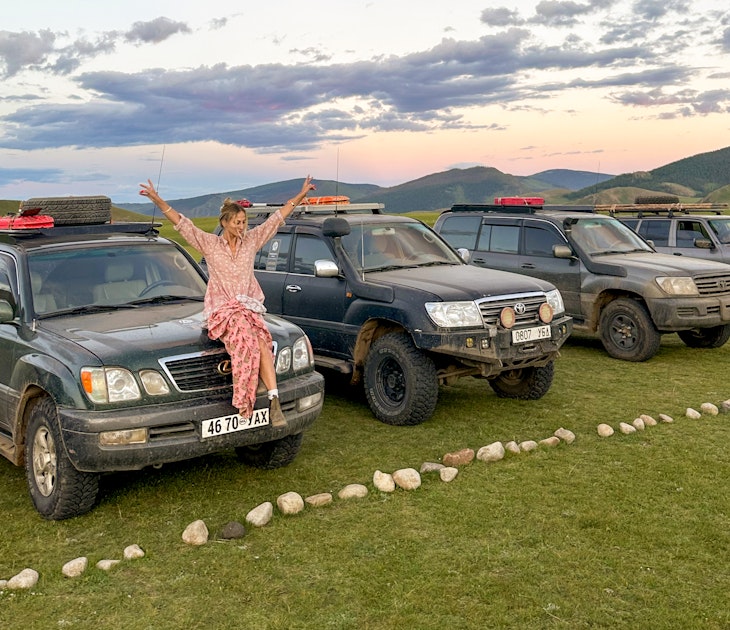
Best in Travel
Oct 30, 2023 • 3 min read
Mongolia has so much to offer travelers looking for wide open spaces, adventure and culture. Here's what it is like to travel there.
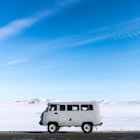
Sep 30, 2023 • 6 min read

Sep 28, 2023 • 4 min read
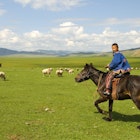
Sep 22, 2023 • 10 min read

Aug 30, 2023 • 9 min read
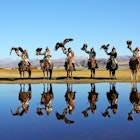
Aug 27, 2023 • 5 min read
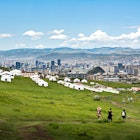
Aug 25, 2023 • 7 min read
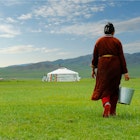
Aug 24, 2023 • 9 min read
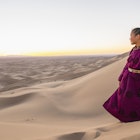
Aug 20, 2023 • 7 min read
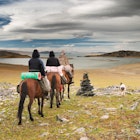
Aug 12, 2023 • 6 min read
in partnership with getyourguide
Book popular activities in Mongolia
Purchase our award-winning guidebooks.
Get to the heart of Mongolia with one of our in-depth, award-winning guidebooks, covering maps, itineraries, and expert guidance.
Mongolia and beyond
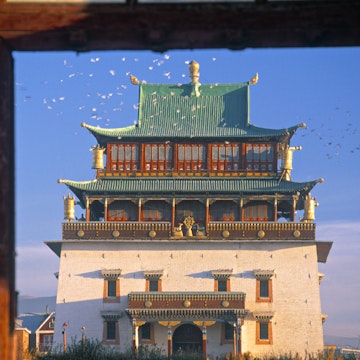
Situation in Haiti April 5, 2024
U.s. citizens in haiti, update january 10, 2024, information for u.s. citizens in the middle east.
- Travel Advisories |
- Contact Us |
- MyTravelGov |
Find U.S. Embassies & Consulates
Travel.state.gov, congressional liaison, special issuance agency, u.s. passports, international travel, intercountry adoption, international parental child abduction, records and authentications, popular links, travel advisories, mytravelgov, stay connected, legal resources, legal information, info for u.s. law enforcement, replace or certify documents.
Share this page:
Mongolia Travel Advisory
Travel advisory july 24, 2023, mongolia - level 1: exercise normal precautions.
Reissued with obsolete COVID-19 page links removed.
Exercise normal precautions in Mongolia.
Read the country information page for additional information on travel to Mongolia.
If you travel to Mongolia, you should:
- Enroll in the Smart Traveler Enrollment Program (STEP) to receive Alerts and make it easier to locate you in an emergency.
- Monitor local media for breaking events and adjust your plans based on new information.
- Follow the Department of State on Facebook and Twitter .
- Review the Country Security Report for Mongolia.
- Visit the CDC page for the latest Travel Health Information related to your travel.
- Prepare a contingency plan for emergency situations. Review the Traveler’s Checklist .
Travel Advisory Levels
Assistance for u.s. citizens, mongolia map, learn about your destination, external link.
You are about to leave travel.state.gov for an external website that is not maintained by the U.S. Department of State.
Links to external websites are provided as a convenience and should not be construed as an endorsement by the U.S. Department of State of the views or products contained therein. If you wish to remain on travel.state.gov, click the "cancel" message.
You are about to visit:

Mongolia Travel Guides
The best tips and advice for visiting Mongolia in 2024 , including up-to-date travel guides, packing tips, budgeting advice, and your most common Mongolia travel questions answered.
Mongolia is one of the most fascinating places to visit in the world because it has it all. A fascinating history filled with even more fascinating stories relating to it’s ancient rulers and khans, traditions that date back thousands of years, and some of the most beautiful scenery you’ll find anywhere in the world.
This up and coming country really is a place deserving of all the travel hype surrounding it, and now is the best time to visit.
I hope that my Mongolia travel blog not only helps you plan the perfect trip to Mongolia, but I also hope that they’ll show you a different side to this incredible country. One that I love calling home.
Popular Mongolia Guides:
Thinking about traveling to Mongolia? Start with my Ultimate Mongolia Travel Guide .
- Is Mongolia a Place to Travel with Kids? (Yes!)
- Best Time to Visit
- 11 Traditional Mongolian Foods To Know
- Gift Ideas for Visiting a Nomadic Family
- Mongolian Language Cheat Sheet
- What to Budget and Travel Costs (2023)
Top 5 Tours and Itinerary Ideas:
- Join this Women’s Retreat (August 2024)
- Attend Naadam Festival (July 2024)
- 9 Things to Do in Winter
- Best Things to do in Kharkhorin, Genghis Khan’s Ancient City
- 101 Best Places to Visit
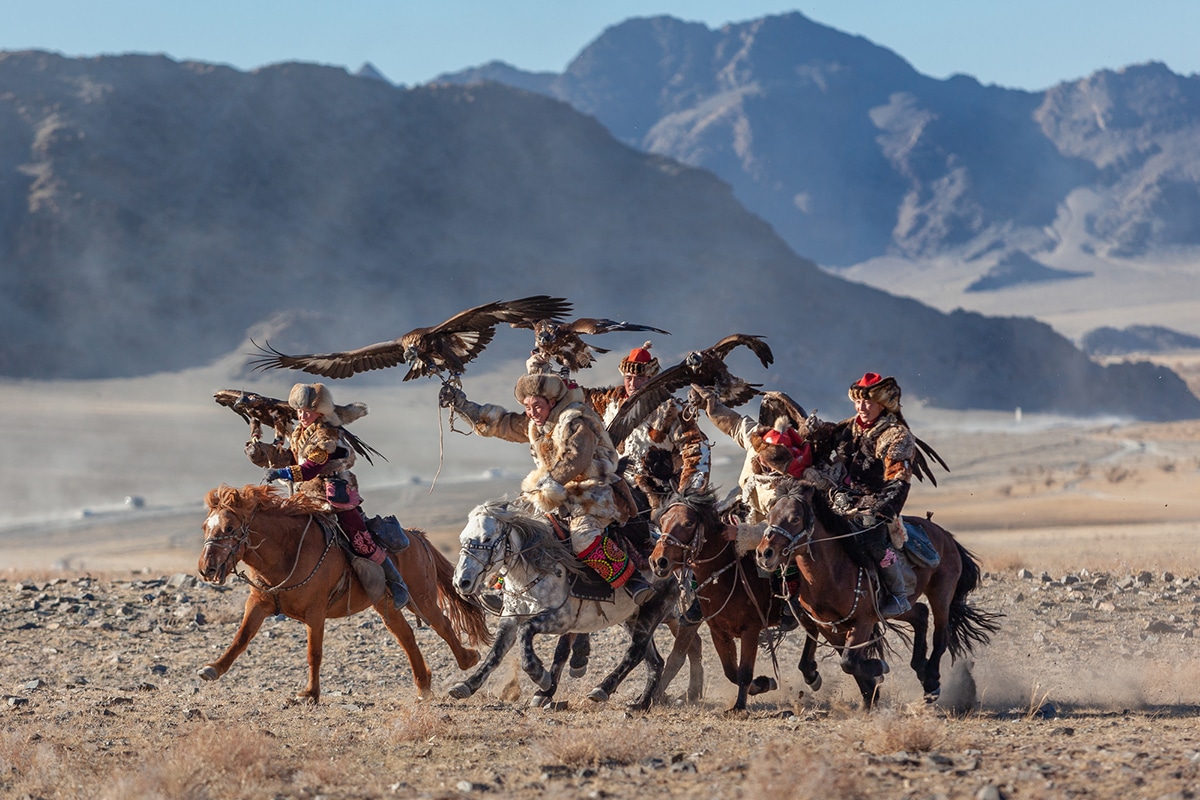
Live with an Eagle Hunter Family During this Eagle Festival Tour 2024
Attend the Eagle Festival, live with an Eagle Hunter family, and explore the beauty of the Altai Mountains during this small group tour September 28 – October 9, 2024.
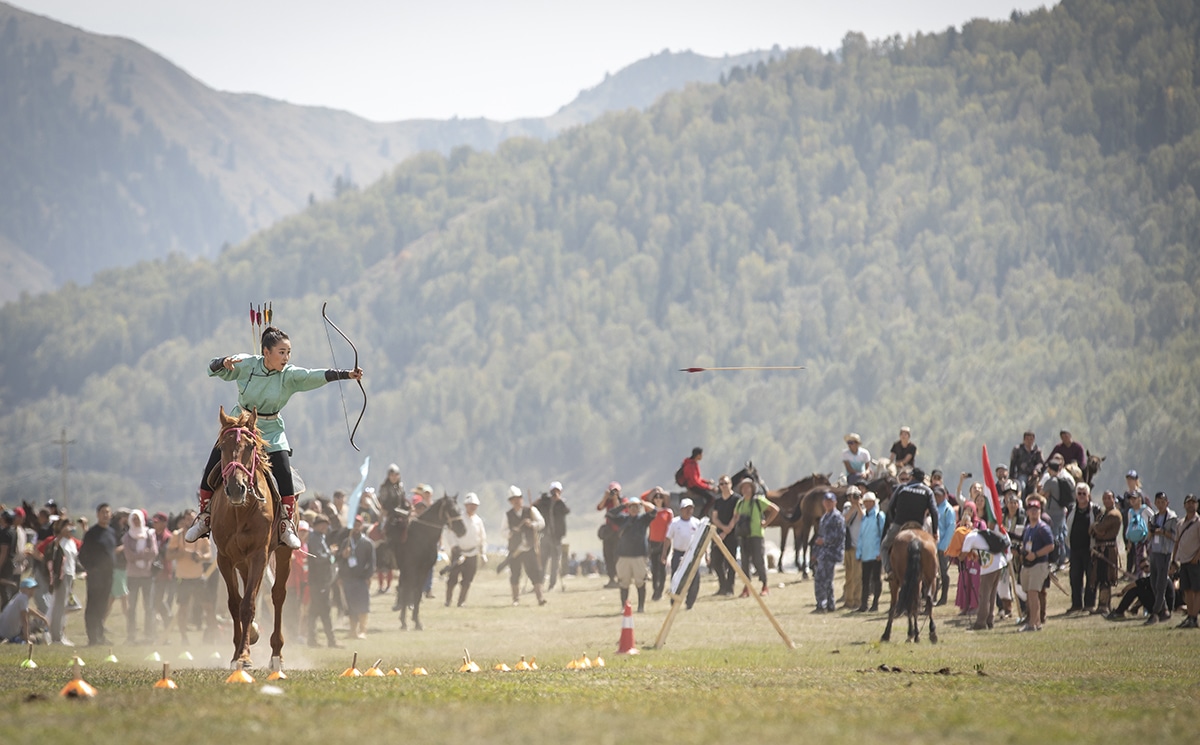
What is Mongolian Traditional Mounted Archery?
Everything you need to know about traditional Mongolian mounted archery. Including the history and how to join a training camp and channel your inner Mongol warrior.
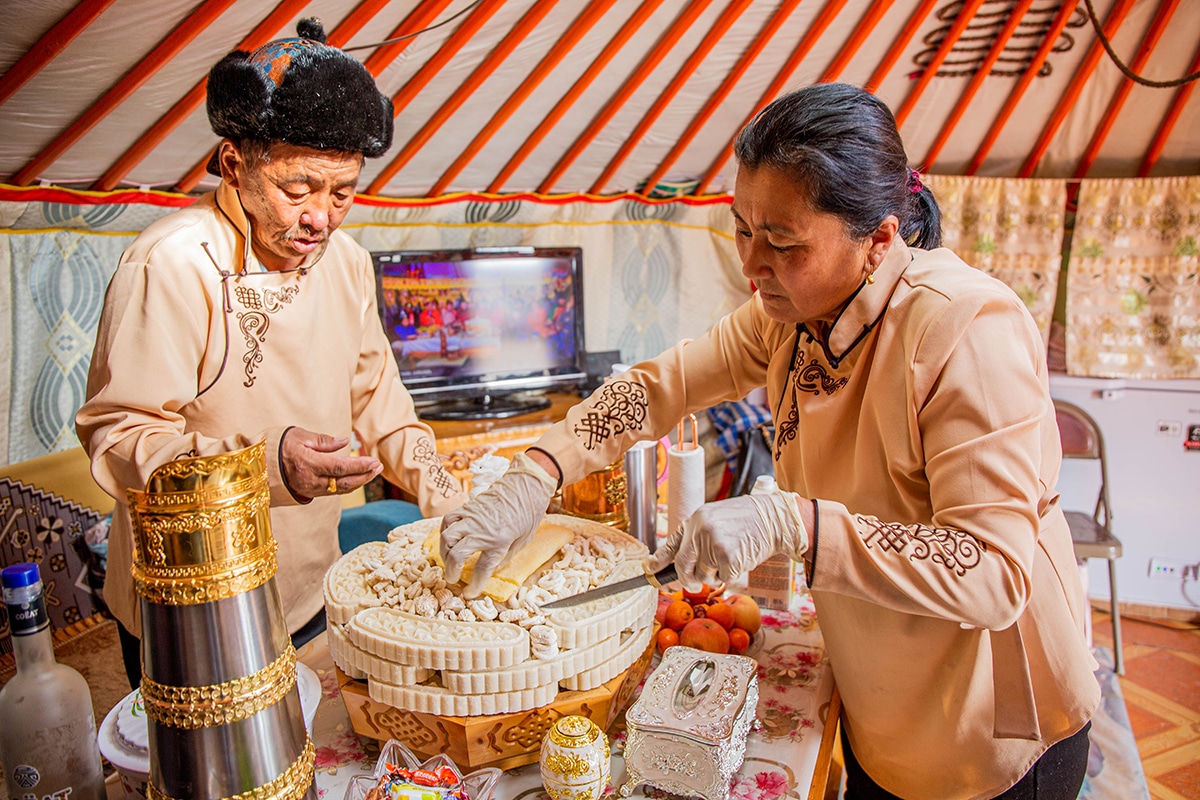
Mongolian Lunar New Year and Shambala Winter Tour 2025
Meet local families and spend Mongolian Lunar New Year learning the ancient traditions associated with this important holiday. Plus, travel to the Gobi Desert to Shambala and Khamariin Monastery to get a better understanding of Mongolian Buddhism, February 27–March 6, 2025.
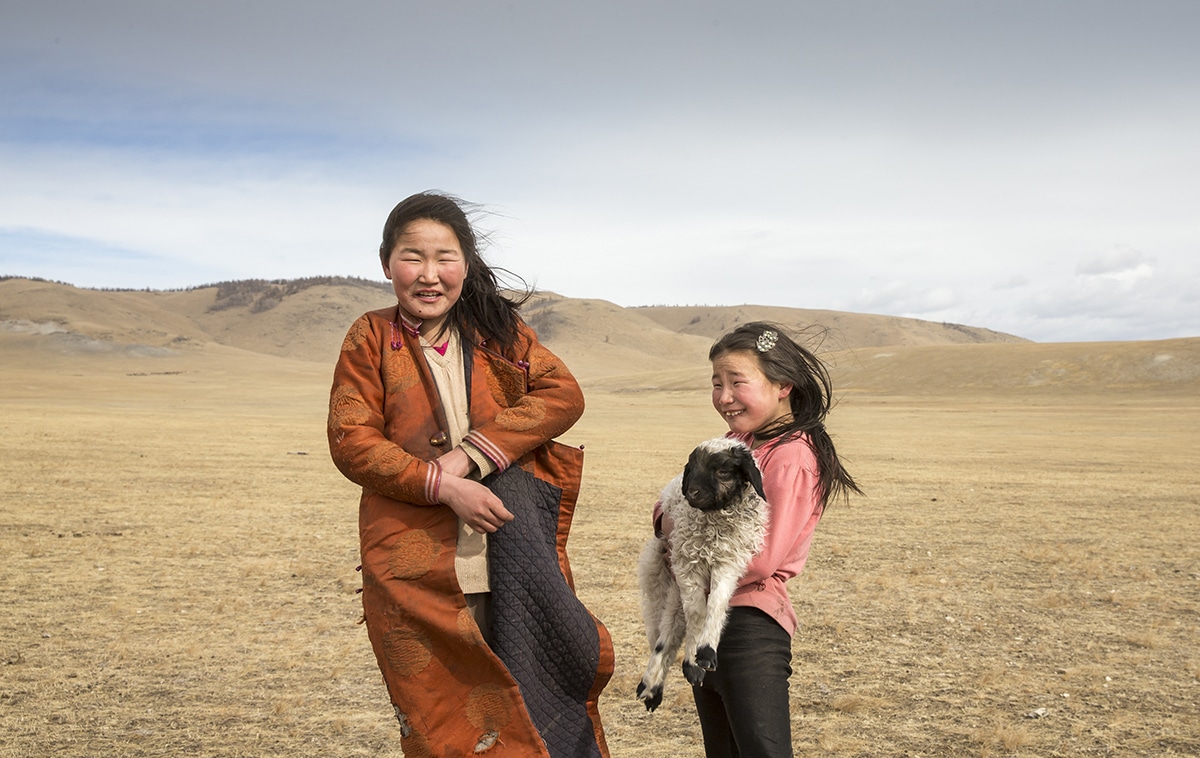
Ultimate Mongolia Family Travel Guide 2024
Family travel tips plus the perfect 4, 6, and 9-day family-friendly itineraries to get the most out of your trip to Mongolia.

13 Best Hotels in Terelj National Park
The best hotels and places to stay in Terelj National Park, Mongolia. Five-star yurts to local family experiences.
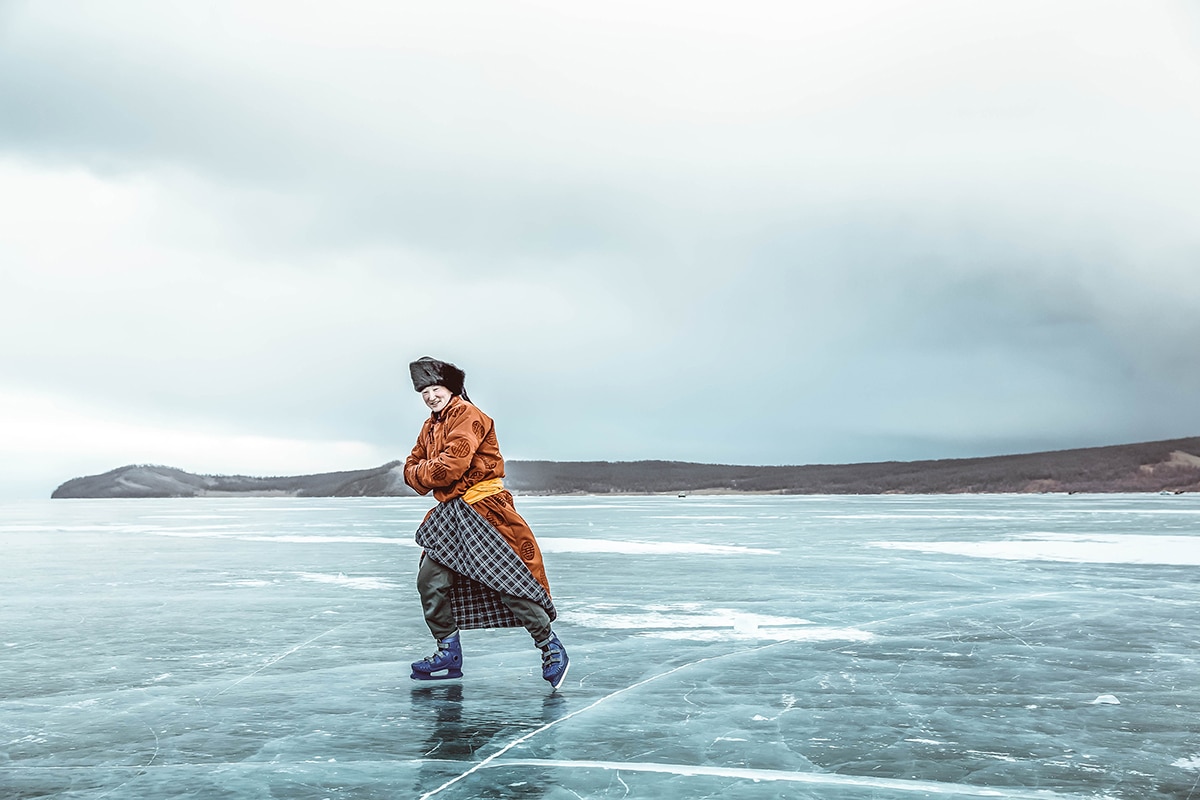
Winter in Mongolia: 7-Day Itinerary (+What to Budget)
With temperatures that drop below -30°C (-22°F), there are a few things you need to know about traveling to Mongolia during the winter season. Plus, I share my packing essentials to help you stay warm, even when it seems impossible.
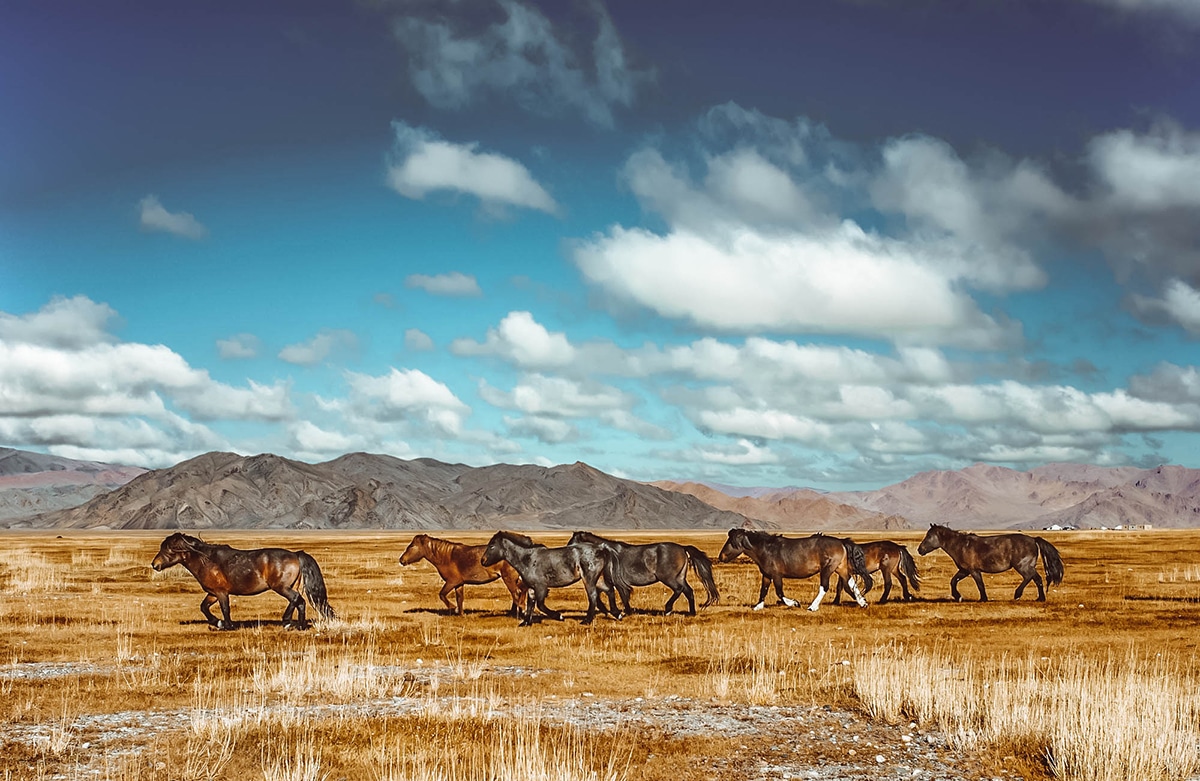
Everything You Need to Know About Horse Riding in Mongolia
If you really want to see what Mongolia is about, hop on a horse!

5 Things I Wish I Knew Before Visiting Mongolia
Not sure what you need to know about visiting Mongolia? One traveler shares the 5 things she wishes she knew before arriving.

Mongolian Shamanism: What to Know and How to Visit One
Everything you need to know about Mongolian shamanism plus how to visit one when you’re traveling in Mongolia.
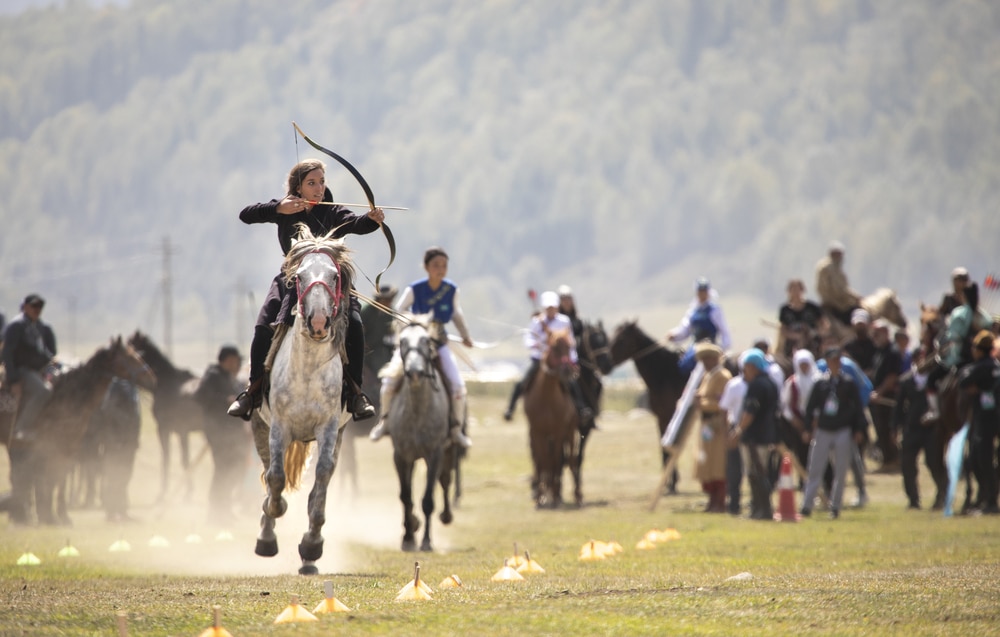
Train Like a Mongol Warrior During this 6-Day Mounted Archery Trip
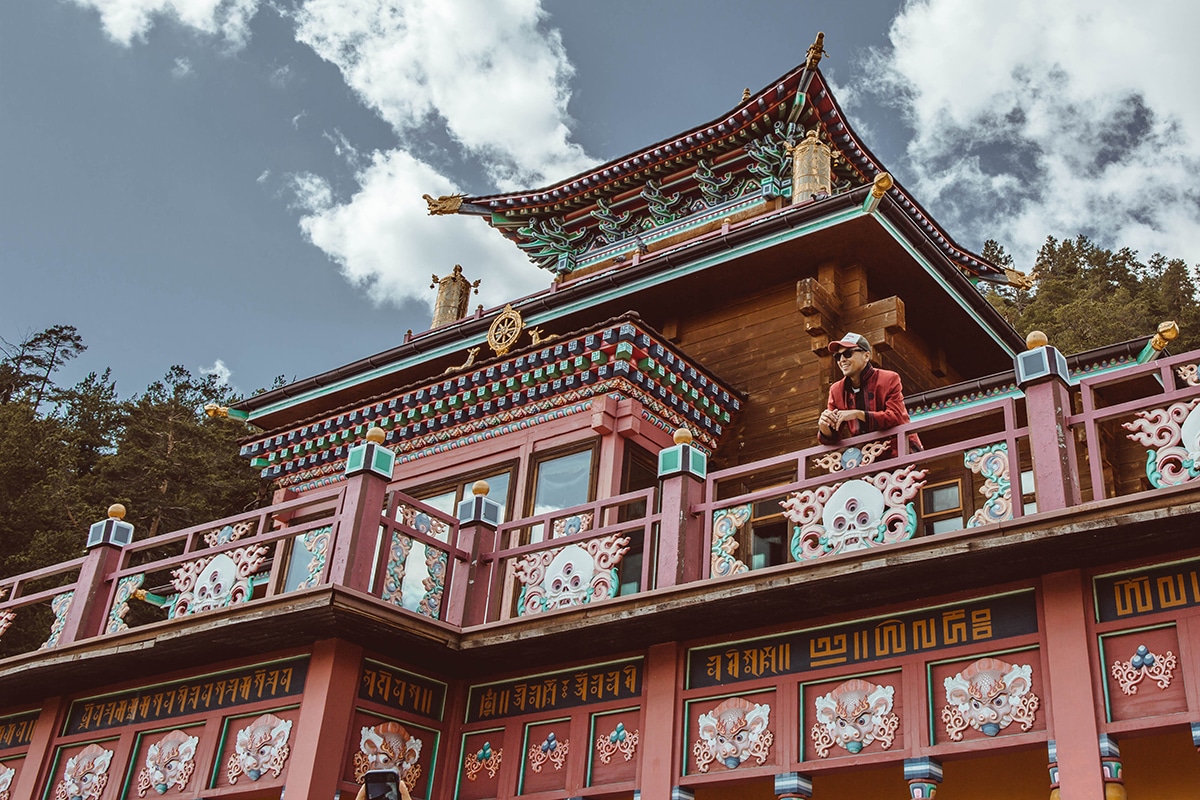
9 Main Buddhist Monasteries to Visit in Ulaanbaatar
Privacy policy, terms & conditions, join my private travel group on facebook.
Proudly Based in Ulaanbaatar, Mongolia © 2024 Meanwhile in Mongolia
AFFILIATE NOTICE
This website contains links to products and services where I may make a commission when you purchase. This supports the continued upkeep and development of this website. For an explanation on this policy, read my Advertising Policy page .

- South Africa
- Czech Republic
- United Arab Emirates
- Puerto Rico
- South Dakota
- West Virginia
- Accommodation
- Travel Gear
- Itineraries
- Travel Blogging + Photography
- Where I’ve Been
- Bucket List
A Local’s Mongolia Itinerary for First Timers (and Why it Needs to Be on Your Bucket List)
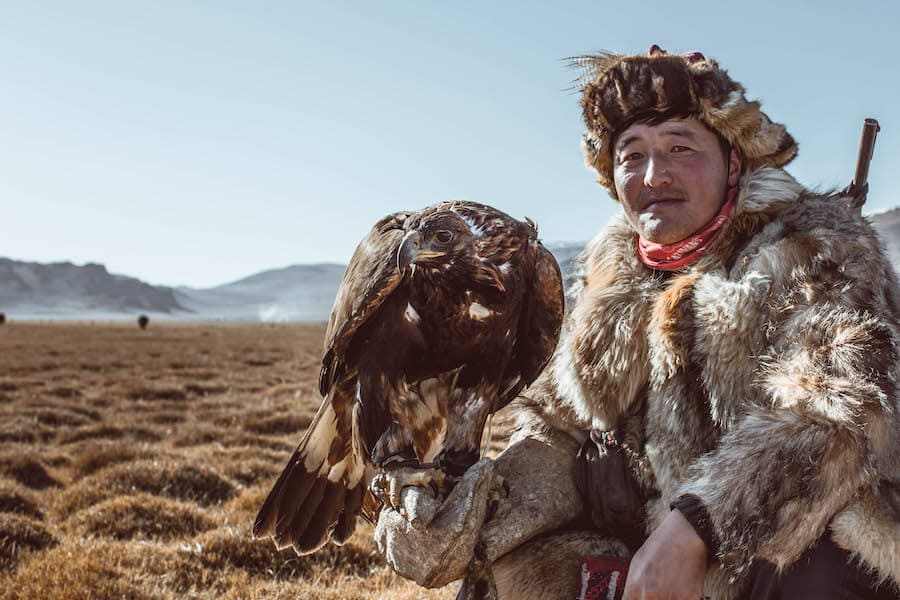
Ever dreamed of visiting Mongolia? The thought might seem daunting or a bit out of your comfort zone, which is why I’ve enlisted Mongolia expert Breanna Wilson to share her top tips and Mongolia itinerary–3 in fact–to jumpstart your planning process. Keep reading for a deep dive into everything you need to know about exploring this vast country.
It was by accident that I visited Mongolia a few years ago. I knew nothing about the place (except for some hazy memory from high school history of a Mongol ruler named Genghis who did that one thing, that one time, 800 years ago).
But I had just quit my full-time job, had a hefty tax refund in my bank account, and had just been introduced to some guy on Instagram. “That guy” quite literally changed my life. (And not in some mushy rom-com kinda way. We’re better than that, girls. He’s now one of my dearest friends in life as well as a badass business and adventure partner. We all need an Erik Cooper in our lives.)
Today, Mongolia is my part-time home (I split my time between Ulaanbaatar and Tbilisi, Georgia) and is a place that I’ll forever have a fascination with and passion for. It’s not an easy place to live (by any means), but that’s what I love about it.
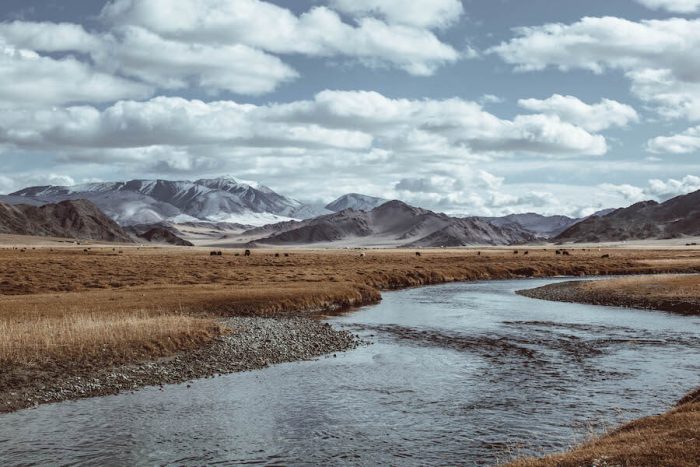
Everything about Mongolia pushes you. Pushes you to your limits. Pushes what you thought you knew about yourself. Pushes you to open your eyes and your mind. Mother Mongolia, as I like to call her, doesn’t mess around; just when you think you have everything under control, she throws something unexpected your way.
It’s a place where you truly have to let go–let go of control, schedules, and yourself. The only way to truly experience Mongolia and everything she has to offer is to let go. Once you do, she’ll show you everything you’ve ever wanted to know about yourself, and so much more.
After two years in the country, I still discover new things every day. From befriending reindeer riders, Kazakh eagle hunters, and Gobi Desert camel herders to uncovering unexpected street art and fashion scenes, underground jazz clubs, and experimental cuisines, I never grow tired of what this country has to offer.
Which is exactly what led me to launch Meanwhile in Mongolia –to share my experiences of scuba diving in the world’s most landlocked country to hiking volcanic craters, and everything in-between.
That’s why I love Mongolia and why I think it should be on everyone’s bucket list. But don’t just take it from me, it’s a place that you need to experience for yourself. And when you do, well, here’s everything you need to know about visiting Mongolia for the first time.
See you there.
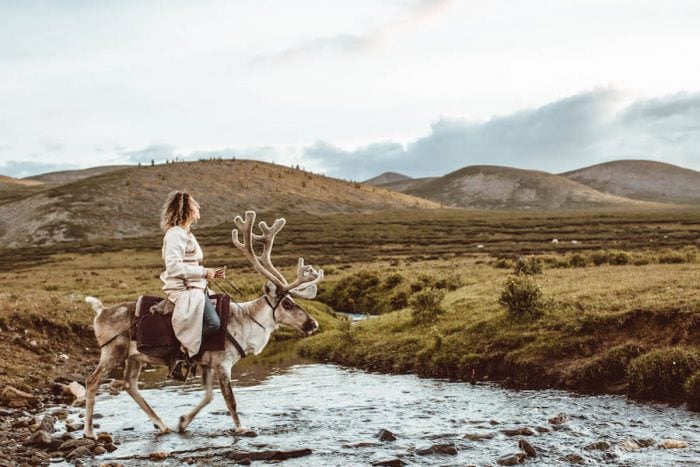
Why Mongolia Should Be at the Top of Your Bucket List
From riding reindeer to hunting with eagles, swimming in color-changing lakes or cruising on camels across the Gobi Desert, visiting Mongolia puts your wanderlust into overdrive.
Some of my favorite adventures include:
- Winter Dog Sledding in Gorkhi Terelj National Park
- Motorcycling Across Mongolia in Vintage Russian Urals
- Learning to Hunt with Eagles from the Kazakh Eagle Hunters in the West
- Riding Reindeer Across the Taiga in the Northern Provinces
Is Mongolia Safe for Female Travelers?
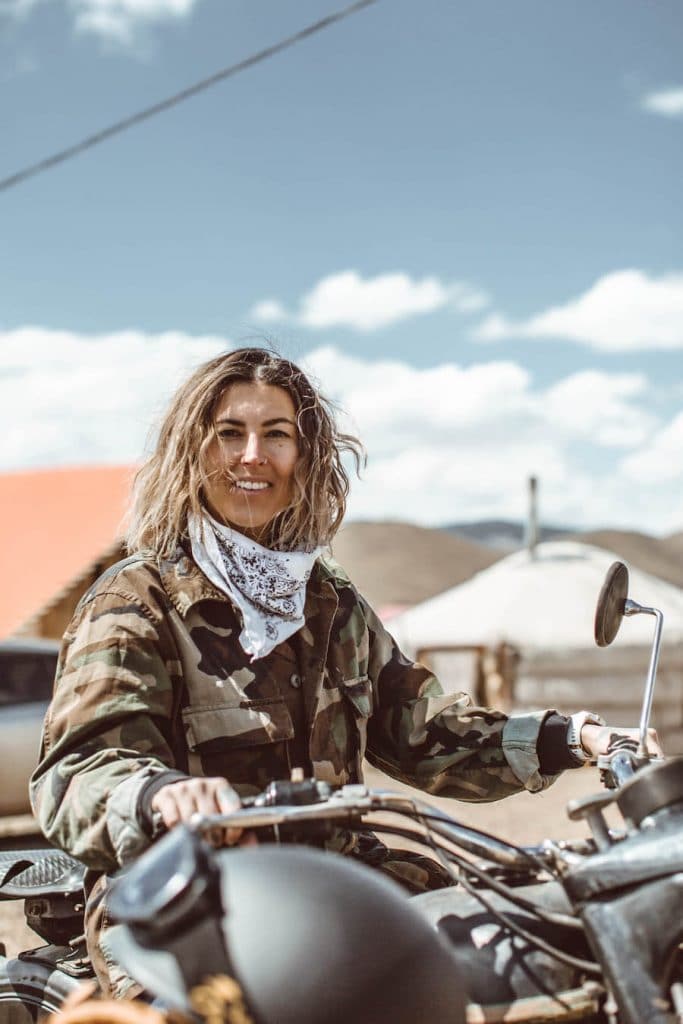
Is Mongolia safe? It’s the number one question people have about traveling to Mongolia, especially solo female travelers like myself (it was my biggest fear about moving here as well).
Mongolia is like any other country–there are parts that are extremely safe, and parts where you’ll need to be cautious. There’s no point in sugarcoating this: foreigners absolutely stand out here. Because of this, I do not recommend females travel around the country by themselves. I say this for a few reasons.
First, you’re remote. Like, remote, remote. There’s no one around for miles and miles. So, if you’re driving solo in a rental car and get a flat tire (or worse), you’re all alone. No AAA. No 911. It’s up to you to figure out this problem, and I can almost guarantee it won’t be a little one. Mongolia is a rough and rugged place.
Second, alcoholism is very common among locals. I’m not saying this to make you think all Mongolians are alcoholics, but only to provide 100% clarity on what you’re getting into.
So, if you’re staying in a ger (also known as a yurt) with a family, be aware of both your and the family’s alcohol consumption. We all know that alcohol can increase aggression, and miscommunication without a clear understanding of cultural nuances or the language leads to increased frustrations. Create a safe experience for yourself by avoiding these situations altogether.
Overall, Mongolia is a place where guns are rare (unless you’re in the countryside protecting a herd), and although pick pockets and petty theft are common, that’s the worst of it. Wars and political unrest are practically unheard of, and natural disasters are nearly impossible.
Read More Travel Guides:
7 things you have to do on your first trip to morocco, an india bucket list for photographers, how to spend one day in abu dhabi, a 1-day north bali itinerary from ubud.
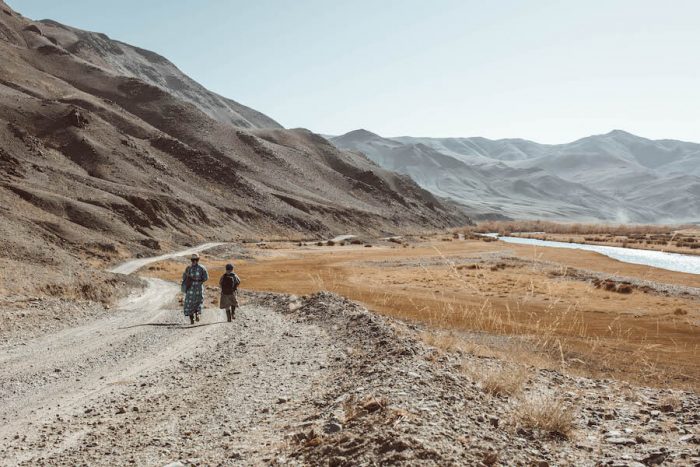
When to Go to Mongolia
Summer is the absolute best time to visit Mongolia (unless you really enjoy -40 C/F weather).
In May you still face the risk of getting stuck in a snowstorm, but by June temperatures are warm. Rain is common, but it won’t ruin your trip.
July is when Naadam, the biggest festival of the year, takes place. The entire country shuts down for about two weeks usually starting around the second weekend of the month. Horse races, wrestling matches, and archery all take place across the country during this time. It’s an incredible way to experience Mongolian culture.
August is hot and a great time to escape north to higher elevations or to Lake Khovsgol, the second largest freshwater lake in Mongolia (after Lake Baikal).
September and October are just as wonderful but be prepared for cold nights. Ger camps start to close down for the season during this time, and some nomads begin moving towards their fall and winter camps.
Summer summary: Nights are chilly. The weather is dry, and usually in the 80s F. Overall, it’s a place where layers are your friend and you can adventure freely without delays.
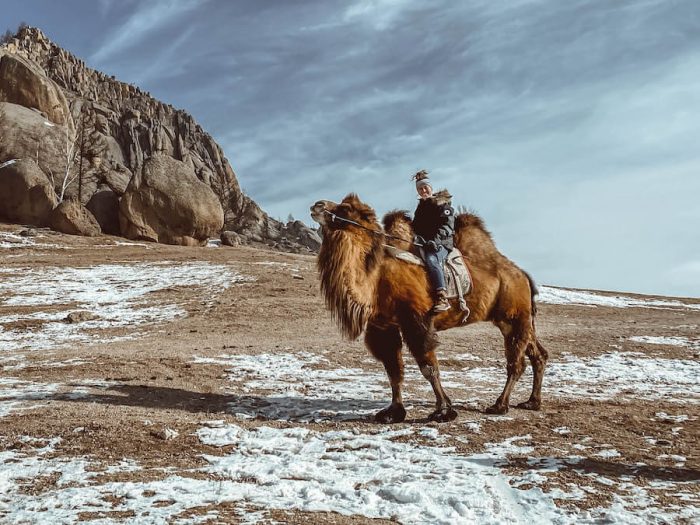
How to Get There
Getting to Mongolia from the US is, well, a journey. It’s going to take at least 24 hours, and you’ll have to go through Istanbul (my preference), Hong Kong, Beijing, Seoul, or Moscow. ( Note : these are all pre-Coronavirus flight patterns and not all of these routes may have reopened, so research accordingly.)
The country’s main international airport is located in Ulaanbaatar, Mongolia’s capital. Though there’s a smaller international airport in Bayan Olgii, it’s mostly for “local” international flights out of Kazakhstan and Russia.
The main airlines that fly to Ulaanbaatar include Turkish Airlines, Korean Air, Cathay Pacific, Aeroflot, and Air China. Turkish Airlines is my airline of choice as flying through the new Istanbul airport offers plenty of food options and quiet corners for sleeping.
Aeroflot flights typically leave from New York City through Moscow, but I know more people than I’d like to tell you about who’ve lost their baggage on this route. If you’re heading out of the city shortly after landing, I’d recommend avoiding Aeroflot since it’s a bit of a process to recover lost luggage once in Ulaanbaatar.
From the west coast, flying through Seoul, Beijing, or Hong Kong are fairly good options. Layovers in Beijing or Hong Kong can be 12 hours, but if you’re on a budget, it usually offers a good fare.
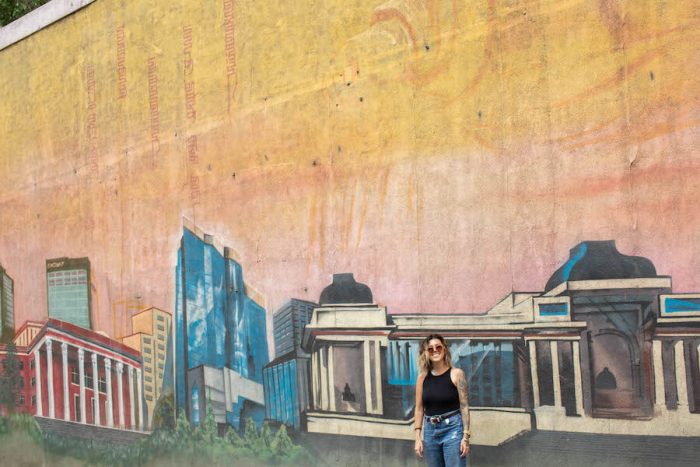
Where to Eat, Sleep, and Play in Ulaanbaatar
If you ask me, Ulaanbaatar is one of the most misunderstood cities in the world. It’s not exactly pretty at first glance. There’s an insane amount of traffic. Things don’t open early–or even on time. It’s a place–like the rest of Mongolia–where you have to go with the flow.
Service is slow (or nonexistent). Food quality is hit or miss. And complicated orders are a recipe for disaster (sorry vegans and eaters with dietary restrictions, this is not going to be an easy place for you).
But, when it comes to things to do in Ulaanbaatar, the possibilities are endless. It’s the hidden gems that really make this place stand out. No matter where you stay, most activities are either walking distance or a short taxi ride away. Plus, you’ll have to fly in and out of Ulaanbaatar regardless, so adding it to your Mongolia itinerary is non-negotiable.
Where to Stay:
- Budget: Zaya Hostel
- Mid: Holiday Inn
- Luxe: Shangri-La Ulaanbaatar
Search for more Ulaanbaatar hotels on Booking.com:
Where to Eat:
- La Rosa Tapas & Tequila Bar
- Rosewood Ulaanbaatar Kitchen + Enoteca
- ROC Caffeine Bars (Coffee)
Where to Play:
- Fat Cat Jazz Club
- MB Beer Plus
- Republik Pub
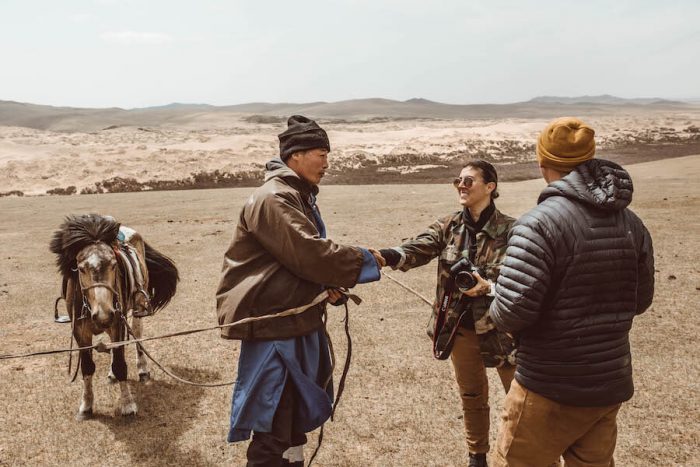
Quick Tips for Planning Your Mongolia Itinerary
Here are a few quick tips for planning your trip that will make your Mongolia itinerary run more smoothly:
Plan *almost* everything in advance
Mongolia is not a place to “wing it”. You won’t find hotels everywhere. Or water, for that matter. Wi-Fi won’t necessarily work once you leave the city. And don’t expect people to speak English.
Stock up on some solid gear
While I hate pushing gear on travelers, I’d recommend stocking up on some solid staples before leaving. You DO NOT need the best of the best to travel/hike/adventure/overland here, but it can get cold at night so a down puffer jacket is an absolute must.
A portable water purifier just might save your life. And never underestimate the power of quick-dry socks, a waterproof rain jacket and pants, and a knife.
Buy travel insurance
Just do it. Trust me. It personally saved me $3,000 when I broke my collarbone in Mongolia last summer.
[Note: For travel insurance, Live Like it’s the Weekend recommends World Nomads or SafetyWing for the best budget options with the most coverage. If you want to read more about my experience with travel insurance, click here ).
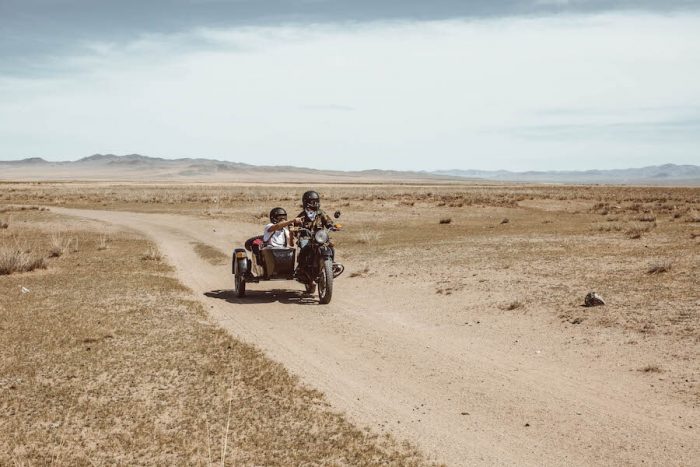
Three Bucket List Mongolia Itineraries for First Timers
Mongolia isn’t an easy place to plan for or explore on your own. Here are three ways to explore Mongolia without feeling overwhelmed, because these badasses have done the work for you.
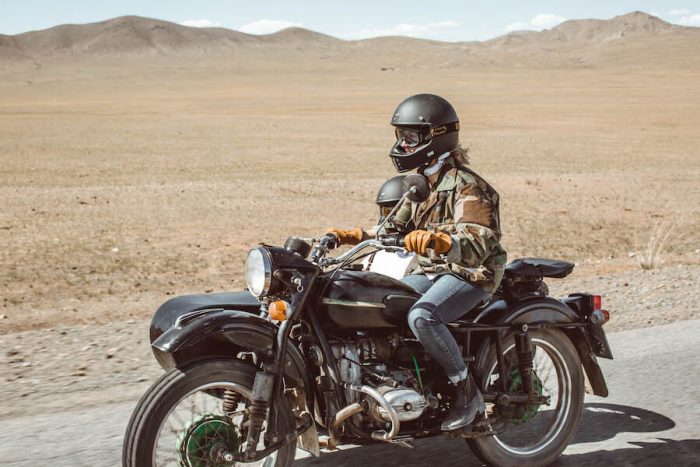
How to Explore Mongolia by Motorcycle: Moto Trip Mongolia
Who this trip is perfect for: New and experienced motorcyclists looking to adventure in style.
I may be biased since I designed this trip with some friends, and I personally lead this adventure … but it’s good .
Along with the nomadic herders and translators we bring along who will open your eyes to Mongolian life and culture in one of the most unique ways possible, this experience will make you rethink everything you thought you knew about life, travel, and most importantly–yourself.
What to expect on a Moto Trip Mongolia itinerary :
- A vintage Ural motorcycle with sidecar (so, 2 riders per motorcycle– perfect for bringing a friend).
- A motorcycle driving experience that includes off-roading across the Mongolian steppe.
- All drivers must have a motorcycle license and proof of travel insurance. Riders in the sidecar do not need a motorcycle license but must have travel insurance. The tour is set up so that drivers and riders will switch throughout the trip, but if someone doesn’t want to drive (or doesn’t have a motorcycle license), that’s okay too–they can be the passenger the entire duration of the trip!
- While it is required that you have a motorcycle license for this trip, this is a great trip for new and beginner motorcyclists! These Urals are easy to manage since you’re on three wheels, and there isn’t much chance of a traffic accident out on the steppe–it’ll be just us out there!
- And I can’t forget to mention, this is a great trip for females since it’s led by me !
- All meals, accommodations, transportation, motorcycles, and fuel are included.
- The trip also includes a follow car for carrying luggage, a translator, and motorcycle mechanic who will repair and tune up the bikes all along the way.
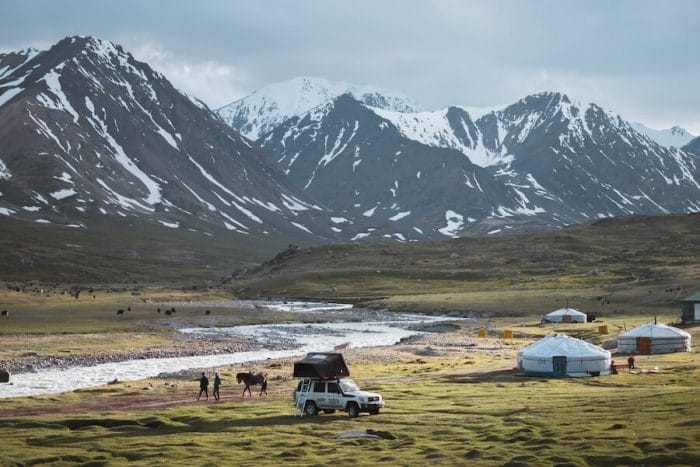
Self-Drive Mongolia and Take a Photography Masterclass Along the Way: Follow the Tracks
Who this trip is perfect for: Self-sufficient explorers looking for great photos for the ‘gram.
I really, really like the Follow the Tracks model. It’s a self-driving tour plus a photography masterclass designed by Max Muench, a guy you’ve almost certainly seen (more like, stalked) on Instagram .
You can choose from a few different routes (I recommend the Gobi Desert one), all of which start and end in Ulaanbaatar. You’ll have your own rental car, car camp essentials, and an iPad loaded with everything you need to make the most of this go-at-your-own-pace adventure.
I recommend grabbing enough friends to do this trip with at least two cars so you can tow each other in case of any hairy situations. Plus, more people equal more fun.
What to expect from the Follow the Tracks experience:
- A rental car from Sixt Rent a Car will be waiting for you in Ulaanbaatar at the start of your trip.
- Each car has 4-wheel drive and is equipped with a rooftop tent for sleeping.
- The car will have a GPS system loaded onto an iPad for your use during your self-driving adventure. This iPad will also act as your photography masterclass workbook, pointing out the best spots to capture photos along the route, and the best camera settings to do so.
- Additionally, the car will have camping and kitchen equipment, but you are responsible for purchasing your own food–and fuel–for the duration of your trip. (I suggest stocking up on food in Ulaanbaatar before hitting the road. Once you reach the tiny soums (tiny villages) in the countryside, you never quite know what you’re going to find.)
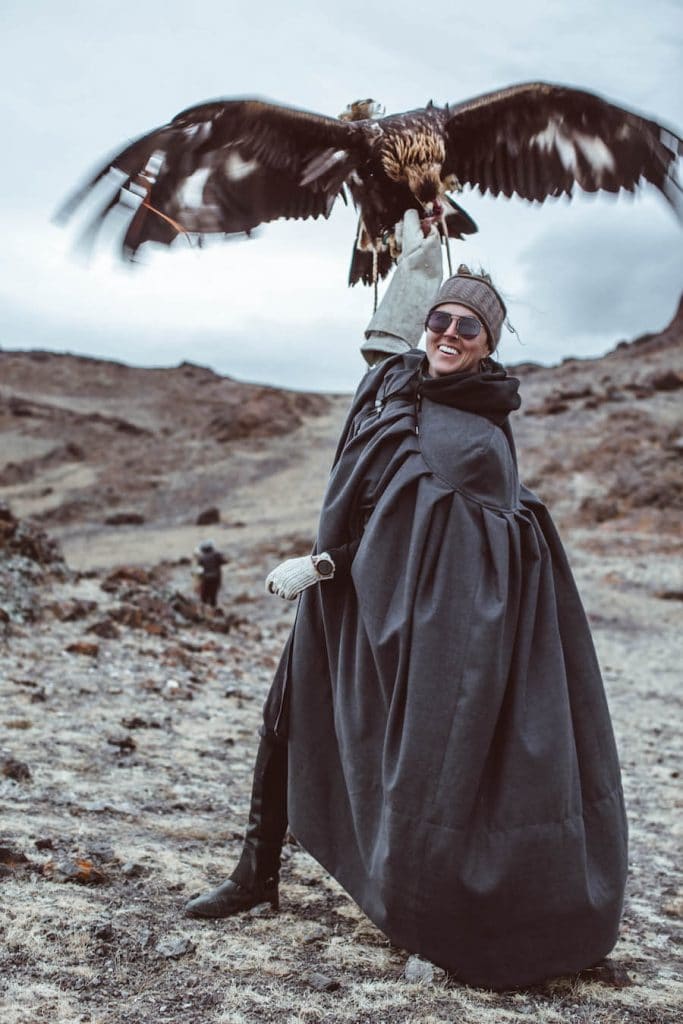
Ride Reindeer and Learn the Ancient Tradition of Hunting with Eagles: Erik Cooper Adventures
Who this trip is perfect for: Equestrians looking to really embed themselves with Mongolia’s unique–and very remote–tribes.
Erik is the gateway to the Tsaatan Tribe and Kazakh eagle hunters (he’s also the reason I fell head over heels in love with Mongolia). He’s spent the last eight summers in Mongolia and his connections are truly the reason why his tours are the most immersive, unique, and bang-for-your-buck.
You are thrown into the lifestyle, into the steppe, and into everything Mongolia has (for better or worse) to offer, with a touch of boujee along the way. There isn’t anyone that I trust more in Mongolia–or with my life. You can tell him I said that.
What to expect on an Erik Cooper Adventures Mongolia itinerary:
- All meals, accommodations, and transportation included. A translator will also accompany you during the duration of the trip.
- You MUST be comfortable on a horse. Because there are no roads where you’re going, you’ll be riding semi-wild horses for two days just to get to the Tsaatan Tribe’s home on the taiga, for example. If you are inexperienced on a horse, or afraid of riding, this trip is not for you. Erik will vet you before the trip, so don’t expect to fake your way into this experience, it’s simply too dangerous to do that.
- Each of Erik’s trips is different. You never know if you’ll get to ride reindeer across a glacier, watch locals compete in a reindeer race, or watch on as Eagle Hunters battle in ancient Kazakh games. No matter which trip of Erik’s you join, each one is specially curated and pulls out all of the stops.
Hope to see you all in Mongolia. You know where to find me when you do.
Planning a trip right now don’t miss my go-to websites for booking everything from flights and tours, to accommodation and more:.
- Booking.com for the best hotel deals
- World Nomads for flexible travel insurance
- VRBO for awesome rentals
- Skyscanner for finding the best flight deals
- Hostelworld for budget accommodation
- Rentalcars.com for easy car rentals

You Might Also Like
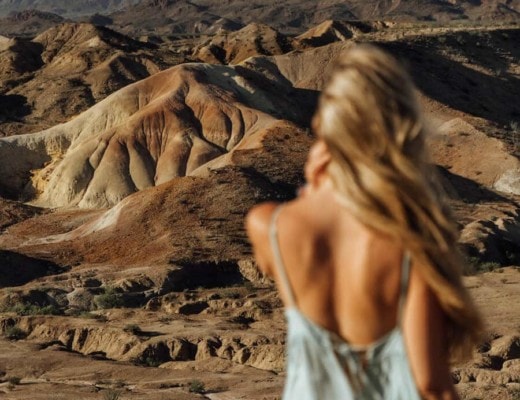
My 2019 Year in Travel Blogging
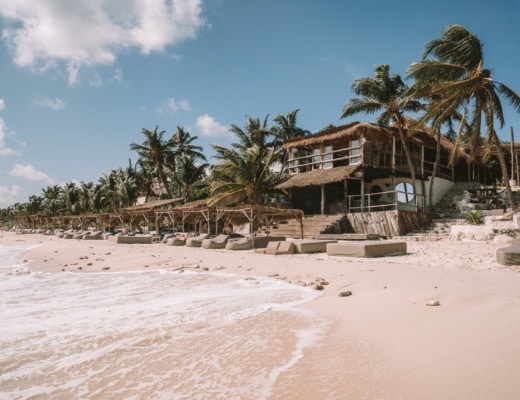
Tulum’s Papaya Playa Project Review (My Honest Take)
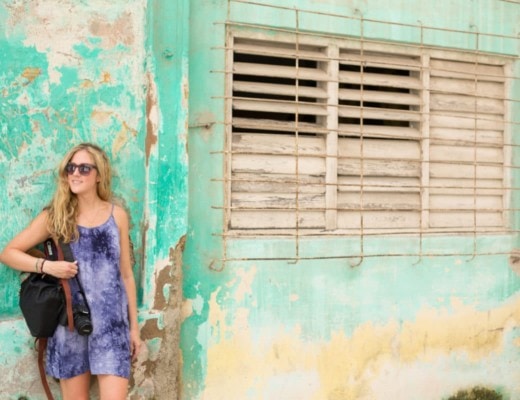
My Complete 7-Day Cuba Itinerary
On the contrary, it’s very easy to eat vegan in Ulaanbaatar. There’s plenty of great vegan spots to eat there.
That’s helpful to know, Joe thank you. Can you share some of your favorite vegan spots and maybe we can update the post?
That’s an incredibly detailed and well thought out guide. Thank you
Leave a Reply Cancel Reply
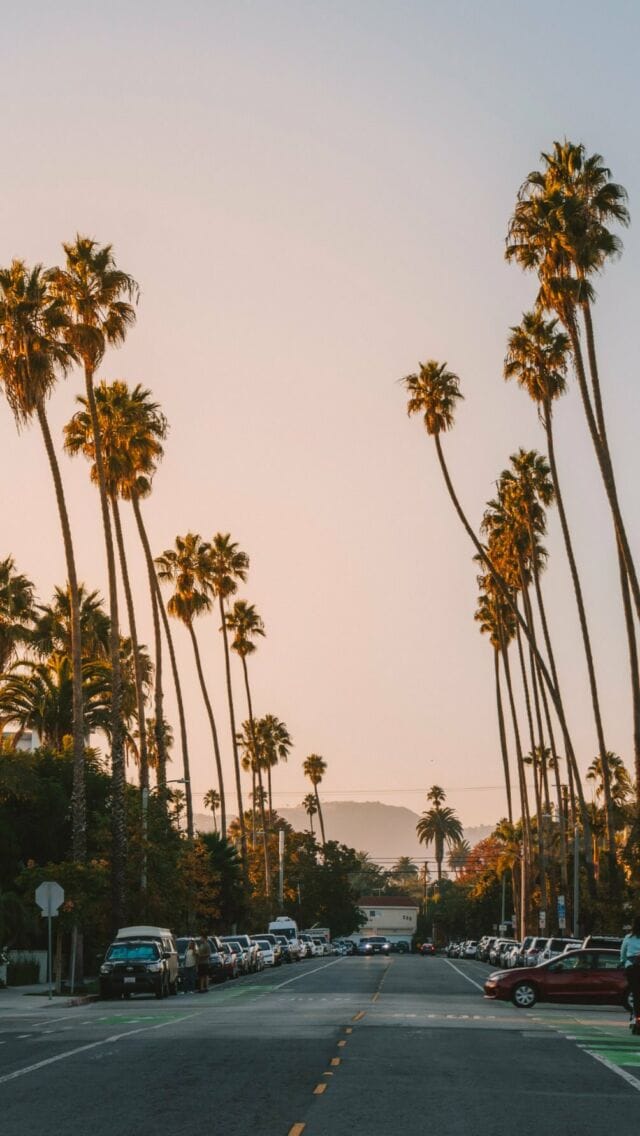
2023 © Live Like It's the Weekend - All Rights Reserved
Privacy Policy • Affiliate Disclaimer • Terms of Service
- South Korea
- United Arab Emirates
- New Zealand
- Travel Tips
- travel resources
- Get In Touch
- Start A Blog

- Destinations
Ultimate 9-Day Mongolia Travel Itinerary & What To Expect
- July 7, 2023
- 19 minute read
Psst, FYI – this post may contain affiliate links, which means I earn a small commission (at absolutely no extra cost to you) and ads keep this blog free for you to enjoy. Thanks for supporting the free content on this site (and for sponsoring more doggy treats for little Albus!)
Are you ready to embark on a journey to the wild and untamed beauty of Mongolia? Trust me, it’s an experience like no other. And if you’re still unsure about this offbeat destination, let me share my experience so you’ll know why Mongolia should be on your bucket list, and what to expect along the way.
Mongolia was a travel destination my friend and I picked a few years ago before the blip in time we all know as COVID-19 happened. We were throwing out ideas like Bhutan and Nepal… basically, anywhere we could seemingly go off the grid and experience a place at its rawest. No bustling cities or tourist traps. We wanted to go somewhere we could be alone with nature. Finally, we settled on Mongolia. Once the borders opened, we booked our tickets and we were in for the ride of our lives.
Now, Mongolia is no walk in the park. Here, you have to surrender yourself to Mongolia’s embrace. Forget about schedules, let go of control, and open your eyes to the unexpected. Trust me, once you do, you’ll discover sides of yourself you never knew existed. Leave the comforts of home behind and just— experience . Mongolia will push you to your limits, challenge your preconceptions, and force you to let go of control. But hey, that’s what makes it so thrilling!

In this itinerary, we will be spending 7 days out in the Gobi Desert, a region that will test your spirit of adventure. Mother Mongolia doesn’t mess around; just when you think you’ve got it all figured out, she throws a wild card your way.
So, why should Mongolia be on everyone’s bucket list? It’s simple – you have to experience it for yourself. And when you do, get ready for an epic adventure. With so much to explore, it can be difficult to decide where to start and what to include in an itinerary. In this blog post, I’ll outline an 11-day Mongolia travel itinerary that covers some of the rawest highlights of the country which includes Central Mongolia and the Gobi Desert. But don’t worry, I’ve got you covered. Here’s everything you need to know about embarking on your first journey to Mongolia.
Get ready to embrace the wild, discover your true self, and create memories that will last a lifetime. Mongolia awaits, my fellow adventurers!
- 1 Why Mongolia Should Be at the Top of Your Bucket List
- 2 Where is Mongolia?
- 3 How do I get to Mongolia?
- 4 How do you get around Mongolia?
- 5 Is Mongolia safe?
- 6 What’s the best month to visit Mongolia?
- 7 How many days do you need in Mongolia?
- 8 Do you need a visa in Mongolia?
- 9 Can you go to Mongolia without a tour?
- 10 Money in Mongolia
- 11 SIM Cards in Mongolia
- 12 Drinking water in Mongolia
- 13 The Ultimate Mongolia Itinerary
- 14 Day 5: Visit Mongolia’s ancient capital, Kharkhorin
- 15 MY TOP TRAVEL TIPS & RESOURCES
Why Mongolia Should Be at the Top of Your Bucket List
Prepare for an adventure that will kick your wanderlust into high gear! In Mongolia, you can ride reindeer, join the ranks of eagle hunters, or hop on a camel for a wild ride across the magnificent Gobi Desert. It’s a thrill-seeker’s paradise where every moment is packed with excitement and wonder. It’s no wonder CNN is naming Mongolia the country to visit in 2023.
- Jaw-Dropping Landscapes : Get ready to have your mind blown by the epic beauty of Mongolia’s vast steppe, rugged mountains, and mind-boggling deserts. Seriously, your Instagram feed will thank you!
- Nomadic Vibes : This might have been my favorite part of my entire Mongolian adventure (if picking a favorite was even possible). It was the most precious experience getting to immerse myself in the nomadic culture of Mongolia and learn about their culture and traditions. It’s like stepping into a whole new world!
- Adventure Awaits : Mongolia is a paradise for adventure junkies. From galloping on horseback across the open plains to riding camels through the desert, it’s a thrill-seeker’s dream come true. Definitely unlocked a core memory for me!
- Soul-Stirring Moments: Get ready for those “pinch-me” moments that touch your soul. The serene landscapes, the simplicity of life, and the genuine connections you’ll make will leave an indelible mark on your heart. Mongolia has a way of changing you for the better.
- Animal-lovers Paradise: Mongolia’s five jewels are its animals, namely horses, goats, camels, cows, and sheep. We got to meet and interact with all five which was an absolute dream come true for me. Here you’ll get up close and personal with these animals in their natural habitat. No fences, no ticket prices, no barbed wires. Just you and these glorious creatures. It was heaven for an animal-lover like me. I got to ride horses and camels, and even cuddle baby goats!

So, pack your sense of adventure, a camera with lots of storage space, and an open mind. Mongolia is calling, and it’s time to answer that call.
Where is Mongolia?
Mongolia is a landlocked country located in East and Central Asia. It is bordered by Russia to the north and China to the south, east, and west. The capital city, Ulaanbaatar, is situated in the north-central part of the country.
How do I get to Mongolia?
Mongolia is a relatively remote country, but it is possible to reach it by air or overland. Here are some of the most common ways to get to Mongolia:
- Chinggis Khaan International Airport in Ulaanbaatar is the main gateway to Mongolia and is served by several airlines from various countries, including Korean Air, Air China, Turkish Airlines, and MIAT Mongolian Airlines.
- From Russia: The Trans-Siberian Railway connects Moscow to Ulaanbaatar, with a journey time of around 4 days. It is also possible to cross the border by road.
- From China: There are several border crossings between China and Mongolia, with regular buses and trains connecting major cities in China to Ulaanbaatar.
It is important to note that visa requirements vary depending on your nationality and the purpose of your visit. Be sure to check the current visa requirements and regulations before traveling to Mongolia.
How do you get around Mongolia?
Getting around Mongolia can be an adventure in itself, as the country is vast and its infrastructure is still developing. A lot of the time we found ourselves driving through the desert on unmarked roads. And we were left wondering how our driver even knew where he was headed to, but we always made it to our destination safely.

With that said, I highly discourage first-time travelers from renting a car and driving on their own. You might be able to do that in Ulaanbaatar, but if you’re venturing any further than that, I highly recommend going with a reputable tour company that’ll arrange a professional guide and driver for you.
It is important to note that road conditions and transportation options may vary depending on the season and weather conditions. Be sure to research and plan ahead to ensure a safe and enjoyable journey in Mongolia.
Is Mongolia safe?
Mongolia is generally considered a safe country for travelers. The crime rate is relatively low, and violent crime is rare. However, as with any travel destination, there are some risks to be aware of.
One potential risk in Mongolia is the harsh and unpredictable weather, particularly in the winter months when temperatures can drop below -40°C (-40°F) and blizzards can occur. Travelers should be prepared for extreme weather conditions and follow the advice of local authorities.

Another potential risk is the condition of the roads and transportation infrastructure. Many roads in Mongolia are unpaved and can be difficult to navigate, especially in rural areas. Travelers should exercise caution when driving or riding in vehicles and ensure that their chosen mode of transportation is safe and reliable.
Finally, as with any travel destination, it is important to take precautions to protect your personal belongings and avoid scams or tourist traps. It is also recommended to avoid political demonstrations or protests, as these can sometimes turn violent.
Overall, with proper planning and precautions, Mongolia can be a safe and enjoyable travel destination.
What’s the best month to visit Mongolia?
The best time to visit Mongolia is during the summer months from June to August when the weather is warm and dry, and the countryside is in full bloom. This is the peak tourist season, and the days are long, providing ample time to explore the vast landscapes and experience the rich cultural traditions of the nomadic herders. Tourist ger camps are open during this time so those seeking a little more comfort while traveling in the desert can opt for this period.

During the summer months, temperatures can range from 20°C to 30°C (68°F to 86°F) during the day, but can drop significantly at night, so it is important to bring warm layers for evenings and early mornings. Mongolia is notorious for experiencing 4 seasons in a day. While we were there in April, we experienced 15°C days and subzero nights, so a good layering strategy is essential when traveling in Mongolia. I’ll be posting a Mongolia packing guide soon to share my packing list tips and tricks.
If you are interested in attending the Naadam Festival, a traditional Mongolian festival featuring sports competitions, music, and dance, it takes place every year from July 11th to 13th in Ulaanbaatar and other parts of the country. I highly recommend visiting during this time. I plan to revisit Mongolia just for this festival in the future!
While the summer months are the most popular time to visit Mongolia, it is worth noting that the shoulder seasons of April, May and September can also be good times to visit, with fewer crowds, cooler temperatures, and beautiful autumn foliage in September.
We visited in late April, one week before the tourist camps open, and we had almost if not all the tourist attractions to ourselves. Weather was great, and we could take everything at a leisurely pace. If you can, I highly recommend coming during this time!
How many days do you need in Mongolia?
The number of days you need in Mongolia depends on your travel preferences and what you want to do and see during your trip. However, for a general Mongolia itinerary, a minimum of 7-10 days is recommended to fully experience the country’s unique culture, stunning landscapes, and traditional nomadic way of life.
With a 7-10 day itinerary, you can explore the capital city of Ulaanbaatar, visit the famous Terelj National Park, hike in the Altai Mountains, ride horses or camels with nomadic herders, and experience the Naadam Festival if your trip coincides with it.
Of course, if you have more time, you can explore additional regions and activities in Mongolia, such as visiting the Gobi Desert, Khovsgol Lake, or the ancient city of Karakorum, the former capital of the Mongol Empire.
It is worth noting that Mongolia is a vast country, and travel times can be long and sometimes challenging, especially in rural areas. On some days, we were on the road for 5-8 hours. It is important to plan your itinerary carefully and factor in travel time between destinations to ensure a comfortable and enjoyable trip. But if you go with a tour company, they will plan everything out for you according to how much time you have.

Do you need a visa in Mongolia?
Whether or not you need a visa to enter Mongolia depends on your nationality and the purpose and length of your visit.
Visa-free entry:
- Citizens of 26 countries, including the United States, Canada, the United Kingdom, and many European countries, can enter Mongolia visa-free for up to 30 days for tourism and non-work-related purposes.
Visa-on-arrival:
- Citizens of several other countries, including Australia, New Zealand, Japan, and South Korea, can obtain a visa on arrival at the airport in Ulaanbaatar for a fee. The visa is valid for up to 30 days for tourism and non-work-related purposes.
Visa required:
- Citizens of some countries, including India and China, are required to obtain a visa in advance from a Mongolian embassy or consulate before traveling to Mongolia.
It is important to check with the Mongolian embassy or consulate in your home country to confirm the visa requirements for your specific situation and plan accordingly.
Can you go to Mongolia without a tour?
The answer is yes and no. If you’re just planning to travel around Mongolia’s capital city, Ulaanbaatar, then yes it is possible. However, if you’re planning to venture out of the capital city, independent travel can be challenging, especially if you are not familiar with the local language, customs, and geography.
If you decide to travel independently, you will need to arrange your own transportation, accommodation, and activities. While there are some public transportation options available in Mongolia, they can be infrequent and unreliable, especially in rural areas.

Additionally, the nomadic way of life in Mongolia means that many attractions, such as traditional ger camps and horseback riding experiences, are often owned and operated by local families rather than large tourist companies, which can make it more difficult to book directly without local connections.

We personally booked a tour with Sunpath Mongolia , and it was the best decision we made on the trip. Although I ordinarily prefer to travel independently and take the less touristy route, traveling through the Gobi and the more remote areas in Mongolia required the help of a tour guide and driver. But Sunpath managed to let us experience Mongolia as authentically as possible while still making it as comfortable as possible for us.
Money in Mongolia
The official currency of Mongolia is the Mongolian Tugrik (MNT). Cash is the most commonly used form of payment in Mongolia, especially in rural areas, so it is recommended to carry cash with you during your trip. However, some larger businesses, hotels, and restaurants in urban areas also accept credit cards.
Here are some tips and information regarding money in Mongolia:
- ATMs: ATMs are available in Ulaanbaatar and other major cities in Mongolia, but they may not be as widely available in more remote areas. Some ATMs may only dispense Mongolian Tugrik, so make sure you have a currency conversion calculator or app to ensure you withdraw the correct amount.
- Currency exchange: It is recommended to exchange money at banks or exchange offices in Ulaanbaatar or major cities. Avoid exchanging money on the street, as this can be unsafe and unreliable.
- US Dollars: US Dollars are widely accepted in Mongolia, and some hotels and tour operators may also accept payment in USD.
- Tipping: Tipping is not expected in Mongolia, but it is becoming more common in tourist areas. If you feel that the service was exceptional, a small tip is appreciated.
- Budget: The cost of travel in Mongolia can vary widely depending on your travel style and itinerary. Budget accommodation and food can be found for around $20-30 per day, while mid-range hotels and restaurants can cost around $50-80 per day. Tours and activities can range from $50-100 per day and up.
Overall, it is recommended to have a mix of cash and credit cards with you during your trip to Mongolia, and to plan your budget carefully to ensure you have enough funds for your entire trip.
SIM Cards in Mongolia
Getting a local SIM card is a good option for travelers to Mongolia who want to stay connected and have internet access on their phones during their trip.
The three main mobile network operators in Mongolia are Mobicom, G-Mobile, and Unitel. They all have booths at the airport and in Ulaanbaatar, and SIM cards can also be purchased at some convenience stores and supermarkets. We picked up a Mobicom SIM card for 15,500MNT (USD4.40) which gave us 15GB for the duration of our trip.
We were lucky to have picked Mobicom as our guide told us that Mobicom has the best coverage in the desert. However, coverage is still spotty regardless, and we had no service when we were traveling on the roads on certain days, and in certain ger guesthouses. In general, we had internet connection about 60% of the time, which is a lot more than I was expecting!
Alternatively, if you don’t want the hassle of changing SIM cards, you can download the Airalo app , purchase a package, and get connected instantly! This is my favorite way to stay connected as it saves all the hassle of buying a SIM card and messing about with these tiny SIMs. PLUS, you can purchase the package in advance and get connected instantly even when you’re still on the plane! Find out more about Airalo.
Drinking water in Mongolia
Access to safe drinking water can be a concern in Mongolia, especially in rural areas. Our guide bought us enough bottled water to last us throughout our trip, and we used this water for drinking and for brushing our teeth. There is no running water while we’re out in the desert!
The nomads usually get their water from nearby wells and filter them before drinking or cooking. To be safe, make sure to have bottled water with you or bring a filtered water bottle for travel that provides clean drinking water anywhere on Earth. It filters almost any type of water, including from river streams, and turns it into clean drinking water.
The Ultimate Mongolia Itinerary

When planning our Mongolia trip, we were spoilt for choice with all the beautiful sights the country has to offer. We ended up opting for a more authentic experience that focused on nature and nomadic living. In this Mongolia itinerary, we explore the Gobi Desert and Orkhon Valley where we got to walk on frozen rivers, go horseback riding, and experience the nomadic way of life.
Without further ado, here we go!
Day 1: Arrival in Ulaanbaatar
Start your Mongolian adventure in the capital city of Ulaanbaatar. Spend the day exploring the city, or if you’re arriving late just like us, get lots of rest and enjoy a good shower as you won’t be having one for a while! It’s also a good opportunity you’ll need for the next 9 days away from civilization.

Day 2: Journey into the Mongolia desert

Today we met up with our tour guide and driver from Sunpath Mongolia who were going to be with us for the next 9 days. Once we leave Ulaanabatar, most of the journey will be off-road so hiring a local company to take you will be your best bet as roads are unmarked and you’ll literally be driving through the desert!
Our journey begins with a thrilling 450km (279 miles) drive to the iconic White Stupa, also known as Tsagaan Suvarga.
We stopped for lunch in a town called Mandalgovi where we tried local food for the first time! Mongolian dishes mostly consist of meat. Meat, meat and lots more meat. You’d be hardpressed to find much vegetables here. Most of the time, you’ll only find carrots and potatoes. Sometimes , you’ll find cabbage. But remember, out in the desert, it’s hard to grow leafy vegetables so say goodbye to your spinach and kale for a couple of days.

Located in the Middle Gobi Province, the White Stupa is a geological formation that stands out with its towering cliffs of white and orange limestone, resembling ancient ruins. As we explore the area, we learn that the White Stupa holds significant geological importance, with its layers of sediment representing millions of years of natural history. The unique colors and shapes of the cliffs create a surreal and magical atmosphere, making it a photographer’s dream. It is a popular tourist attraction due to its stunning white and orange cliffs that resemble a massive stupa or temple.

Visitors to the White Stupa can explore the area and hike around the cliffs to admire the natural beauty of the landscape. The cliffs offer a fantastic opportunity for photography, especially during sunrise or sunset when the colors become even more vibrant.
Aside from the visual appeal, the White Stupa holds significance for the local nomadic herders who consider it a sacred place. It is believed to have spiritual and healing properties, and visitors are encouraged to show respect and be mindful of the cultural and natural significance of the site.
After we were done exploring the White Stupa, we headed to our ger for the night situated just a few minute’s drive away. Days in Mongolia are mostly like this as distances between sights can be quite long, so you’ll often be visiting one sightseeing spot per day while spending most of your time on the road.
We were very excited for our first night in our ger! Our host was a lovely Mongolian lady who made us dumplings for dinner! I met my first herd of sheep here which had me squealing in delight.
Our first night out in the ger was so surreal. Having to get used to no running water, no showers, and no toilets – living with the bare minimum but we still found it bearable. There also wasn’t any service there so it was a great opportunity for us to get to know each other better and actually talk!

Day 3: Walk on ice at the Yol Valley

Our journey continues as we make a stop in Dalanzadgad, the capital of the South Gobi Province. This small town serves as a gateway to the Gobi Desert so we were able to stock up on some amenities and… take a hot shower! There are public showers in the town where you can freshen up, and I was plesantly surprised by how clean and spacious these shower rooms were!

From Dalanzadgad, we head to the enchanting Yol Valley , also known as the Eagle Valley. This deep and narrow gorge is renowned for its dramatic rock formations, icy streams, and stunning wildlife. As we embark on a 5km walk through the valley, we are surrounded by towering cliffs that harbor rare and endangered species, such as the bearded vulture and Siberian ibex. The cool air and tranquil ambiance create a serene atmosphere, allowing us to connect with nature on a deeper level.

In the evening, we retreat to our gers nestled within the Yol Valley.

Day 3: Marvel at the Khongor Sand Dunes and ride camels into the sunset

Today promises a thrilling off-road adventure as we journey to the mesmerizing Khongor Sand Dunes , also known as the “Singing Sands.” These expansive sand dunes stretch across the southern part of Mongolia, covering an area of over 180 kilometers.

Upon arrival, we are immediately captivated by the grandeur of the sand dunes, with some reaching heights of up to 300 meters. The Khongor Sand Dunes are known for their shifting patterns, shimmering golden colors, and the melodic sound produced when the sand is disturbed by the wind, hence the name “Singing Sands.”

It is quite a climb, so make sure you’ve got your stamina in tow. I only managed to climb up to halfway point before giving up. I’d say you’d have to be relatively fit to reach all the way up to the peak. But it’s definitely worth a shot!
Once we reached our nomad family for the night at Ongi River, we embarked on an unforgettable camel riding experience through the sunset which was truly magical.

Tonight we rest, and for the first time, going a whole day with no showers! There was also no service in the area, so the experience was as authentic as it comes! The host family even taught us some local games using ankle bones (yes, goat bones!).

Day 4: Walk in the footsteps of the dinosaurs at the Flaming Cliffs

This morning we set off at 7 am to the Flaming Cliffs , also known as Bayanzag . These towering red and orange cliffs hold great significance, most famous for yielding the first discovery of dinosaur eggs . It was so fascinating imagining dinosaurs once roaming on the very ground we were walking on!
Continuing our journey, we make a stop in Bulgan for lunch. We were supposed to have another shower here but the public showers were closed. Accepting hiccups are all part and parcel of traveling in Mongolia! And in the nomadic spirit of flexibility, we trudge on and continue on our journey. At this point, we might even be getting used to this level of hygiene (or, maybe not)!
Next, we visit the historic Ongi Monastery , which once stood as one of Mongolia’s largest Buddhist monastic complexes. Sadly, it was destroyed during the communist era, leaving behind evocative ruins that still hold immense spiritual significance. As we wander through the remains, we gain a sense of the monastery’s former grandeur and the profound impact Buddhism had on Mongolian culture.
Day 5: Visit Mongolia’s ancient capital, Kharkhorin
Today’s drive is especially long, but it’s going to be a relaxing day. We set off for Kharkhorin , the ancient capital of the Mongol Empire and an important historical site. This historic city served as the political, economic, and cultural center during the reign of Chinggis Khan and his successors.

Upon reaching Kharkhorin, we satisfy our hunger with a delicious lunch before visiting the renowned Erdene Zuu Monastery . This architectural masterpiece stands as a testament to Mongolia’s spiritual heritage and is considered one of the country’s most important monasteries. As we explore the monastery’s grounds, we are hit by a surprise— an epic sandstorm ! More adventures to add to the book.

Despite the weather conditions, we were lucky that tonight we would be staying in a hotel ! That’s one of the great things about Sunpath —they knew to break up our itinerary of staying in the gers every night with a 1-night hotel stay! Awfully thoughtful of them and much needed by us.
We hugged our toilet bowls, marveled at the water faucets, and reveled at the rain shower—comforts we so often take for granted in our daily lives.
Day 6: Immerse yourself in Orkhon Valley’s breathtaking landscapes
Today’s adventure takes us on a leisurely drive to the enchanting Orkhon Valley, a UNESCO World Heritage Site known for its natural and cultural significance—and my personal favorite spot throughout our whole trip. The valley encompasses breathtaking landscapes, including rolling hills, lush meadows, and the Orkhon River, which meanders through the region.

Everywhere you turn was a postcard view waiting to be snapped. Rolling hills and frozen rivers with horses grazing nearby. I had to pinch myself to make sure I wasn’t dreaming.

In the Orkhon Valley, we had the privilege of visiting a nomadic family and experiencing their warm hospitality. Interacting with the nomads allowed us to gain insights into their traditional way of life, from milking animals to herding livestock. We learn about their customs, traditions, and the harmony they maintain with the land.

This was our favorite nomad ger of all too. I mean, look at that landscape! Waking up to that view does wonders for the soul.

Day 7: Orkhon Valley
Today was the day we had been excitedly anticipating. We get to ride horses! We embarked on a thrilling 20km horse riding journey to the magnificent Red Waterfall , also known as Ulaan Tsutgalan . The feeling of riding through the open plains like this is just simply indescribable . It felt so surreal; like something right out of a movie scene!

We were even lucky enough to capture a herd of yaks crossing the river!

Arriving at the Red Waterfall, we are greeted by the sight of cascading water against a backdrop of lush greenery. Here, we stopped for a nourishing picnic lunch which we absolutely enjoyed!
Continuing our exploration of Mongolian traditions, we engage in archery, a sport deeply rooted in the country’s nomadic heritage. Can’t say I got the hang of it, but at least I gave it a shot! Pun intended.

Day 8: Return to Ulaanbaatar
As our unforgettable journey draws to a close, we bid farewell to the stunning Mongolian landscapes and begin our return to Ulaanbaatar. It was a 10-hour drive back to the city, but it allowed us to reflect on the remarkable experiences we’ve had and the profound connections we’ve forged with the land and its people. The beauty and vastness of Mongolia will forever remain etched in our hearts.
Day 9: Chinggis Khan Statue and Ulaanbaatar City Tour

Before concluding our Mongolian adventure, we set aside a day to visit the magnificent Chinggis Khan Statue, a colossal tribute to Mongolia’s legendary leader. The statue stands at an impressive height of 40 meters and offers panoramic views of the surrounding countryside. It’s a sight worth seeing if you have the time!
In the afternoon, we take a walk around the city of Ulaanbaatar, the bustling capital of Mongolia. It definitely shot down many misconceptions I had about the city. It’s much more developed and modern than I imagined!
This 9-day Mongolia travel itinerary has been a journey of discovery, allowing us to connect with nature, immerse ourselves in nomadic culture, and witness the beauty and authenticity of Mongolia. Mongolia has enriched my life, and I hope I’ve inspired you to embark on your own unforgettable journey through this captivating country.
Has Mongolia been on your bucket list? Or have you been to Mongolia and have your own stories to share? Leave me a comment below!

MY TOP TRAVEL TIPS & RESOURCES
Here are my top travel tips and resources to help you save money and plan your trips effectively! If you're looking for more tips, head over to my travel tips resource page or my comprehensive guide on trip planning .
- Booking Flights: When it comes to finding great flight deals, I always start my search on Google Flights or Skyscanner . To save some cash, consider flying mid-week or on the weekends, opt for carry-on only with budget airlines, and be open to red-eye or early morning flights. Check out my in-depth guide on how I find the cheapest flights .
- Accommodations : I'm a stickler for finding the absolute best deals on my stays, so I will obsessively oscillate between a few booking sites: Booking . com (in general) and Agoda (for Asian destinations). When it comes to vacation rentals, there's Airbnb or VRBO .
- Travel Insurance : It's always a wise decision to purchase travel insurance for international trips. I can't stress this enough - it's highly recommended! For international travel insurance, I suggest considering World Nomads or SafetyWing . SafetyWing , in particular, stands out as one of the few policies that cover Covid-19. They also offer excellent monthly policies that are perfect for digital nomads and long-term travelers!
- Travel Credit Card : My go-to travel credit card for booking trips is the Wise travel card. I love that there are no foreign transaction fees, so I can pay like a local and never get any surprises at the end of my trip. You can also withdraw cash from the ATMs wherever you are. With Wise , you are always guaranteed the best exchange rate, and I have saved sooo much money just by using this card. Most of the time, I get charged the exchange rate I see on Google, plus or minus a few cents.
- Tours: Most times, I prefer traveling independently but sometimes, getting a guide and a local's perspective makes the experience all the more enriching. When it comes to tour bookings, I trust Viator and GetYourGuide to provide me with excellent options. In Asia, I choose Klook as they are the biggest provider in the region. Plus, you can often get entrance tickets and discounted prices!
- Transportation : To navigate through public transit options and plan my journeys from one place to another, I rely on Rome2Rio. When it comes to rental cars, I compare rental companies and find the best deals through DiscoverCars .
- Connection : It's essential to me to have seamless connectivity wherever I go. I need it to navigate to new places, Google what's around me, and keep in touch with my loved ones. But fumbling around with multiple SIMs has always been a nightmare, which is why I choose Airalo when I travel. No more switching SIMs, just purchase a plan on your phone, on the go, anywhere, and stay connected.
- Luggage Storage : Whenever I need to check out early or take advantage of a long layover, I securely store my luggage with LuggageHero . It's a reliable service that allows me to roam around freely. As a bonus, you can use this link to enjoy your first hour of FREE luggage storage on me!
- What to Pack : I always have packing anxiety once I've left home— you know the phantom feeling that you've forgotten something even though you've checked 372836 times . So I made my own packing list and use it religiously before every trip, and by religious I mean I tick off that list at least 7 times before I zip up my bag. Check out my in-depth packing list here.

Hi! I’m Steph. You probably ended up here because just like me, you have an insatiable thirst for trotting the globe, or are just curious about travel. Get ready for brutally honest and in-depth travel guides that will be your trusty companions on global adventures. No fluff, just real talk and practical tips to make your journeys smooth. Join me as we conquer the globe, one epic destination at a time! Together, we’ll uncover hidden gems, laugh at mishaps, and create unforgettable memories. So grab your passport, pack your sense of adventure, and let’s embark on this thrilling journey!

- North America
The Ultimate 3-Day Toronto Itinerary for First-Timers
- June 5, 2023

SafetyWing vs. World Nomads: The Ultimate Guide to Choosing the Best Travel Insurance for Digital Nomads
- July 13, 2023
You May Also Like

Where to See Cherry Blossoms in Vancouver 2024 (map included!)
- March 21, 2024

The Ultimate Guide to the Best Things to Do in Luang Prabang, Laos
- March 18, 2024

Best Cafes and Coffee Shops in Edinburgh Old Town
- March 15, 2024

Everything You Need To Know About Egypt: The Ultimate Egypt Itinerary for 7, 10, or 12 Days

The Ultimate DIY Tour Of Stockholm’s Subway Art (Maps included!)
- February 29, 2024

Hiking Little Adam’s Peak for the Best Sunset in Ella, Sri Lanka

The Ultimate 10-Day New Zealand South Island Self-Drive Itinerary

How to Travel from Baku to Tbilisi via Overnight Train: A Complete Breakdown (2024)
- January 10, 2024
Hi there, I really enjoyed your Mongolia travel itinerary ! May I know which travel agent did you use for your trip? Thanks!
Hi Rose, I went with Sunpath Mongolia and only have good things to say about them! Please go, I promise you will have the trip of a lifetime!
Love this 7-10 day itinerary to experience Mongolia. This was not on my radar but is now! Love the nomadic vibe and Gobi Desert would be a fascinating adventure!
Mongolia definitely seems like a hidden gem with all of its natural beauty and culture. Thanks for this guide!
Those desert landscapes certainly are stunning–there’s a rugged beauty to them!
Those desert landscapes are stunning-there’s definitely a rugged beauty to them!
WOW! This was truly an epic adventure, with the emphasis on “adventure.” I would definitely want to go with a tour group because Mongolia seems like a place where you could get lost forever! Thanks for the super comprehensive post!
Leave a Reply Cancel reply
Your email address will not be published. Required fields are marked *
Notify me of follow-up comments by email.
Notify me of new posts by email.
Input your search keywords and press Enter.
Discover more from The Atlas Edit.
Subscribe now to keep reading and get access to the full archive.
Type your email…
Continue reading

- Travel Destination

- Photography Tours
- Discovery Tours
- Cultural Tours
- Festival & Event Tours
- Day & Short Tours
- Hiking & Trekking Tours
- Horse & Camel Riding Tours
- Special Interest Tours
- Winter Tours
- Trans Sib Tours
- Family Tours
- View All Tours
- About Mongolia
Travel Guide
- Tailor Made
- Mongolia Tours
- Online Payment

Travel to Mongolia From Canada
The distance from canada to mongolia.
According to the location of Mongolia and Canada on the map, we know that the distance between the two countries is 8217 km /5105 miles/.
Time difference between Canada and Mongolia
Mongolia has three time zones, though, it uses UTC +8 as standard time, also called Ulaanbaatar Time.
- Time Zone of Ulaanbaatar, Mongolia -UTC +8
- Ottawa, Canada - UTC-5
Other Geographic differences
Our country is beautiful land of blue sky. Most of the year has clear blue sky which is 230-260 days and which means 2600 to 3300 hours.
How to plan trip to Mongolia from Canada
Planning trip is always the most important moment. It’s almost same as you’re half of the road. We have some advice to plan trips in Mongolia. First of all, you should make sure your travelling time of the year. Then you choose your area to travel. Mongolia has extreme weather and very unpredictable even usual to see 4 season in one day. Second, choose experienced travel agency. Third, if you are the first time traveler to Mongolia, Please read some information about our culture. There’s plenty of books in the store. If you can’t find it. Watch some movies on Youtube. Such as Wolf totem, Eagle huntress, Wheeping Camel etc,
Travel by air to Mongolia
There’s no direct flight by now. You should pass by another country on the way. Here’s some suggestion below.
- Seoul – Ulaanbaatar by Korean Air /Miat or Asiana/
- Beijing – Ulaanbaatar by Air China
- Moscow – Ulaanbaatar by Aeroflot
- Istanbul – Ulaanbaatar by Turkish Airlines
You can choose from these Airlines-Korean air, Air China, Turkish Airlines and Aeroflot.
How to travel by Train
If you planning to take train to Mongolia you can have legendary Trans-Siberian Railway. It runs 7925km which is longest rail line in the world. When you traveling in Beijing, China or Moscow, Russia it will easy to catch train to Mongolia. From Moscow to Ulaanbaatar takes 5 days and 28 hours from Beijing.
From the Mongolian steppes to Lake Baikal’s remote shores, and to the Great Wall of China, you can start your adventure at any of these three completely different cultures.
It might be feels far and bit complicated to come in Mongolia by train, but I promise It’s worth it! About booking tickets you can directly request us, we can arrange your train tickets to Mongolia.
Entry & Exit or Transfer points
If you planning some unique travel passing by Mongolia, you should know about our border permission. We have 9 exit and entry borders surrounding our country totally. Only few of them allowed to pass international passengers.
- Road&train-Zamiin Uud in the South
- Road crossing-Bulgan in the West
- Road Crossing-Bichig in the Southeast
- Road crossing-Altanbulag in the North
- Train crossing-Sukhbaatar in the North
- Road Crossing-Tsagaannuur in the FarWest
- Road crossing-Khankh in the North
How about Mongolian Visa?
You do not need a visa if visiting for fewer than 30 days, but your passport must be valid for at least six months beyond your date of arrival. For stays of more than 30 days, you must register with Mongolian Immigration within seven days of arrival. Failure to register will result in a fine of $100-$300, even if you extend your stay due to circumstances beyond your control.
So, If you choose Mongolia for your next travel destination, you are welcome and feel free to travel to Mongolia without a visa.
Canadian Embassy in Mongolia
In case of you might need to contact USA Embassy in Ulaanbaatar, while you travel in Mongolia.
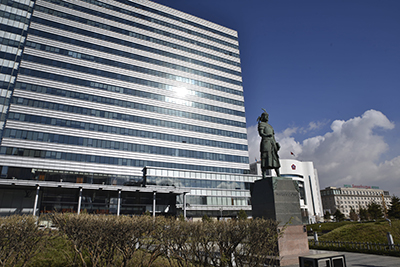
Address: Central Tower, Sukhbaatar district 8 th khoroo,
Great Chinggis Khaan, Ulaanbaatar city
Telephone: (+976-11) 332500
Fax: (+976-11) 332515
E-mail: [email protected]
Is there Mongolian Embassy in Canada?

Web: http://www.ottawa.embassy.mn/
Address: 132 Stanley avenue, Ottawa, ON, K1M 1N9
Telephone : 613-569-3830
Fax: 613-569-3916
E-mail: [email protected]
Where to go-The Best Places to Visit in Mongolia for Canadian travelers
Before starting your Mongolia tour from Canada, you should have an idea of where to go and what to see in Mongolia. For decades, Ayan Travel Mongolia have offered tour packages for numerous clients from Canada, who, in turn, help us select the best destinations in Mongolia or your consideration.
- Menen Steppe-Eastern Mongolian Grassland
- Khoton and Khurgan Lakes
- Hustai NP of Mongolia
- Khovsgol National Park, North Mongolia
- Gorkhi Tererl National Park, Central Mongolia
Canadian Traveler’s feedback on ToursMongolia
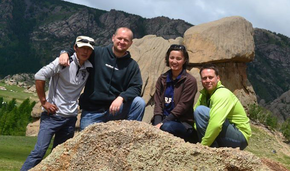
All the places were my favorite. I really didn’t know what to expect in Mongolia. I was impressed with everything I saw. How Beautiful! And peaceful!
Our tour guide and driver both went above and beyond their duties. They seemed to anticipate our needs and looked after us very well. Shinee’s knowledge about Mongolia’s history, plants, animals etc. So impressive!
Thanks for a great vacation! /Linda Hepfman from Canada/
Traveler Tips for Canadian travel to Mongolia
Before your trip to Mongolia from Canada, you have to do all the preparations, think over what to pack, the required documents for your Mongolia travel, some necessary medicines, etc.
Here below we list the useful tips for Mongolia travel preparations and when traveling in Mongolia.
►► The Best time to visit Mongolia
►► What to pack trip to Mongolia
►► Where to stay in Mongolia
►► Mongolia Events and Festivals
►► Mongolia Top Destinations
Recommended Tour Packages to Mongolia from Canada
Guided Mongolia tour or free independent travel (FIT) in Mongolia? The first one is the better one. Mongolia is a very different country from Canada. If you don’t speak Mongolian, you may encounter unexpected difficulties or troubles. If you have a tight budget or you plan to travel alone, you are encouraged to join a group tour. Our small group tour packages are well crafted and taking you to the top destinations of Mongolia.
Below recommended private Mongolia tours are for your reference. The detailed itinerary can be adjusted to meet your requirements. Or you can contact us to tailor make a Mongolia tour from Canada.
Legendary Mongolia Gobi Tour
Least thing to do in Mongolia for travelers is to visit two major important highlights of the country: South Gobi and Kharkhorin! Indeed, this itinerary could be classified as a CLASSIC by presenting true essence of Mongolian nature and culture with visits to hospitable nomad settlement, active Buddhist monastery, historical sites and natural parks.
More about the tour-click here.
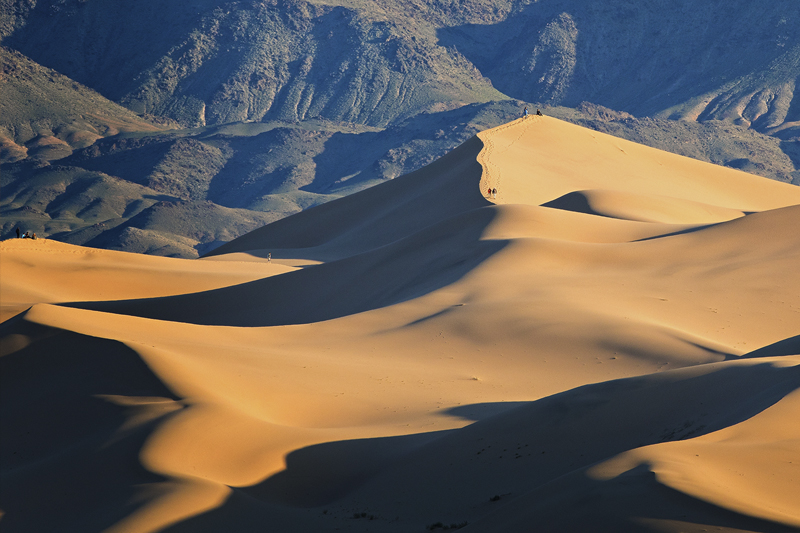
Vertical Big Loop north to south Mongolia tour
Real off road adventure which crosses the vast Mongolian land vertically, while passing by unique wild paysages of the nature. In a less 20 days you will encounter yourself in chilling areas of taiga, clear waters of the north, peaceful green meadows, as well as hot desert plains surrounded mighty impressive dunes of the south, so different colors like Mongolia itself.
More about the tour-click here.
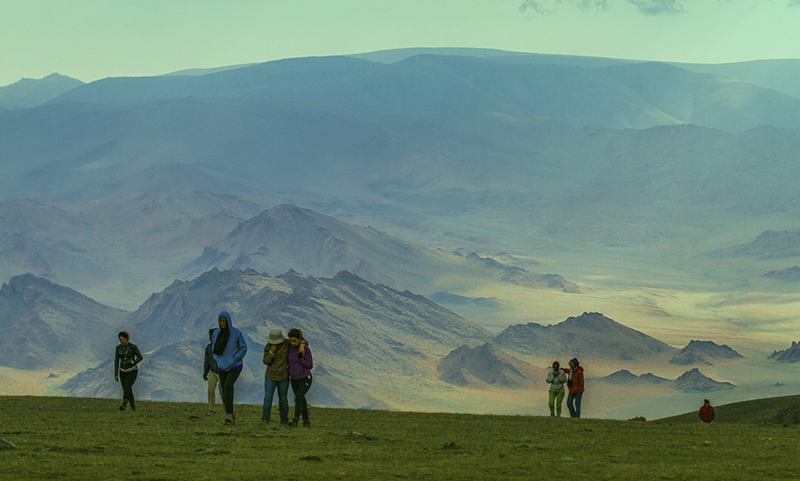
How to travel to Mongolia
Create my trip, 6 reasons to choose ayan travel.

- Northern Mongolia
- Central Mongolia
- Eastern Mongolia
- Southern Mongolia
- Western Mongolia
- Top Travel Destinations
- Best Photography Spots
- Adventure tours
- Mongolia Photography tours
- Culture tours
- Discovery tours
- Hiking & Trekking tours
- Horse & Camel riding tours
- Naadam Festival tours
- Event tours
- Best Seller tours
- Fixed Date tours
- Discounted tours
- Mongolia Trip Planning
- When you are in Mongolia
- Things To Do
- Bests of Mongolia
- Mongolia Travel Attractions
- Create my trip
- Mongolia Travel Blog
- Mongolian Geography
- Mongolian History
- People and Nomads
- Culture and Heritage
- Events & Public Holidays
- Nature and Landscape
- Foods and Drinks

- Terms & conditions

Borders Of Adventure
Leading Culture and Adventure Travel Blog by Becki Enright. Looking at the world with a different angle to change perceptions of misunderstood places, for the best in travel.
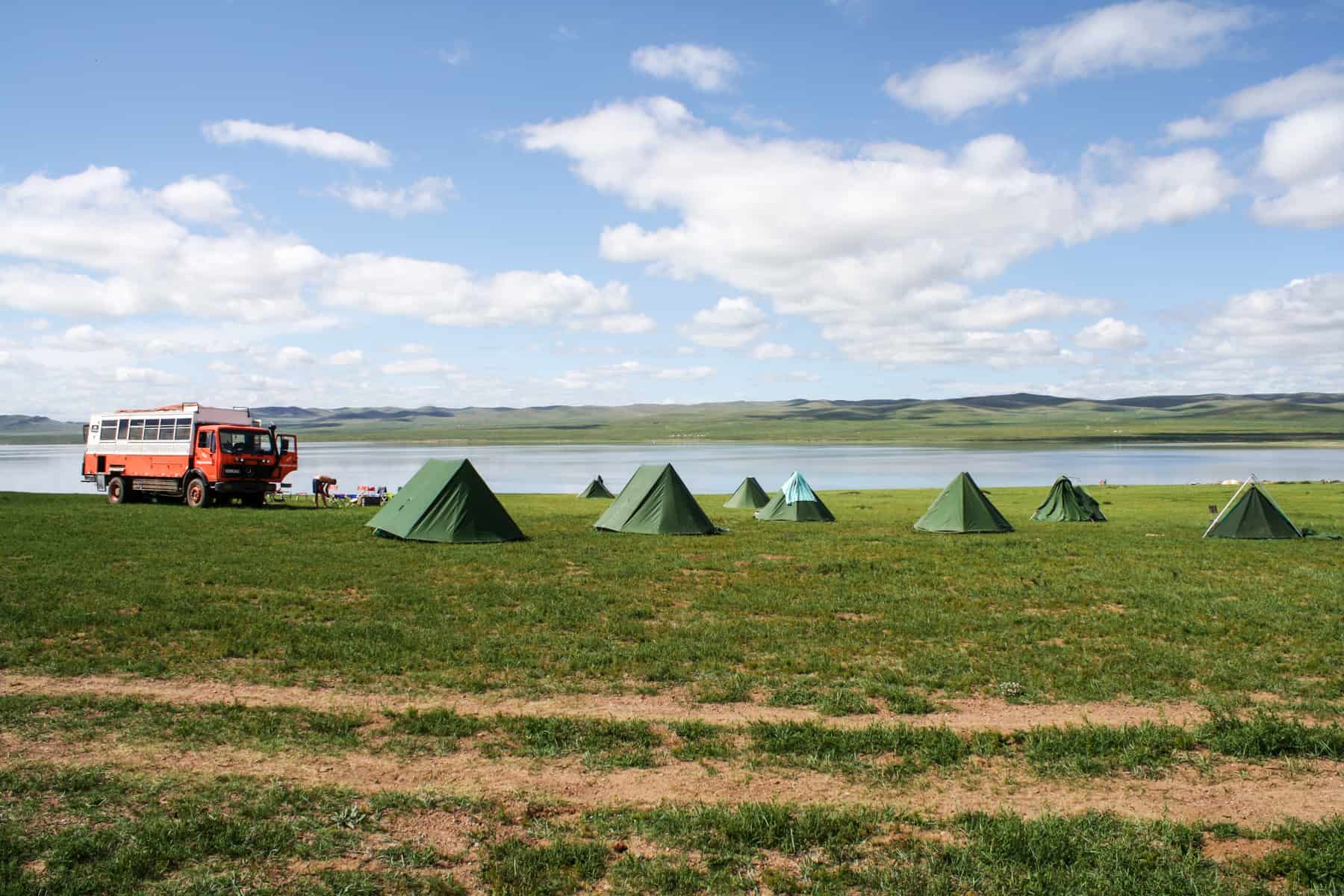
Adventure Travel , Mongolia
This is How to Travel to Mongolia – Overlanding the Least Densely Populated Country in the World
Disclaimer: This post contains affiliate links to handpicked partners, including tours, gear and booking sites. If you click through or buy something via one of them, I may receive a small commission. This is at no extra cost to you and allows this site to keep running.
Want to get to somewhere lesser-known and travel differently? This Mongolia travel guide shows how to go overlanding in the world’s least densely populated country.
Travel to Mongolia means tackling a land of extremes. Both in the landscape, from its vast desert lands and towering dunes to its lush green mountainous national parks, and in its lack of infrastructure, where you become just as frustrated as you are in awe by the country’s areas of extreme isolation.
Visiting Mongolia is to find a canvas of rugged beauty capped by a sky so blue that pollution isn’t even a word that exists here. Passing only wild horses, herds of cattle, an isolated ger in the distance, and the odd truck also on its way to the city, life here is at its purest and most beautiful.
Outside of its unkempt capital, Ulaanbaatar, Mongolia exists with limited facilities, but that’s what makes it attractive. On the road, it can take hours of driving before you pass a small ger community, a Mongolian on horseback or another vehicle, and in between blessed with the most stunning views of a country so desolate that you know you’ve reached the real heart of it.
Overlanding through Mongolia, rather than flying or taking the train, is one of the best decisions I have ever made. This guide will show you how to travel Mongolia from China by land, in a vast loop that takes in some of the country’s most treasured hotspots and wilderness hideaways.
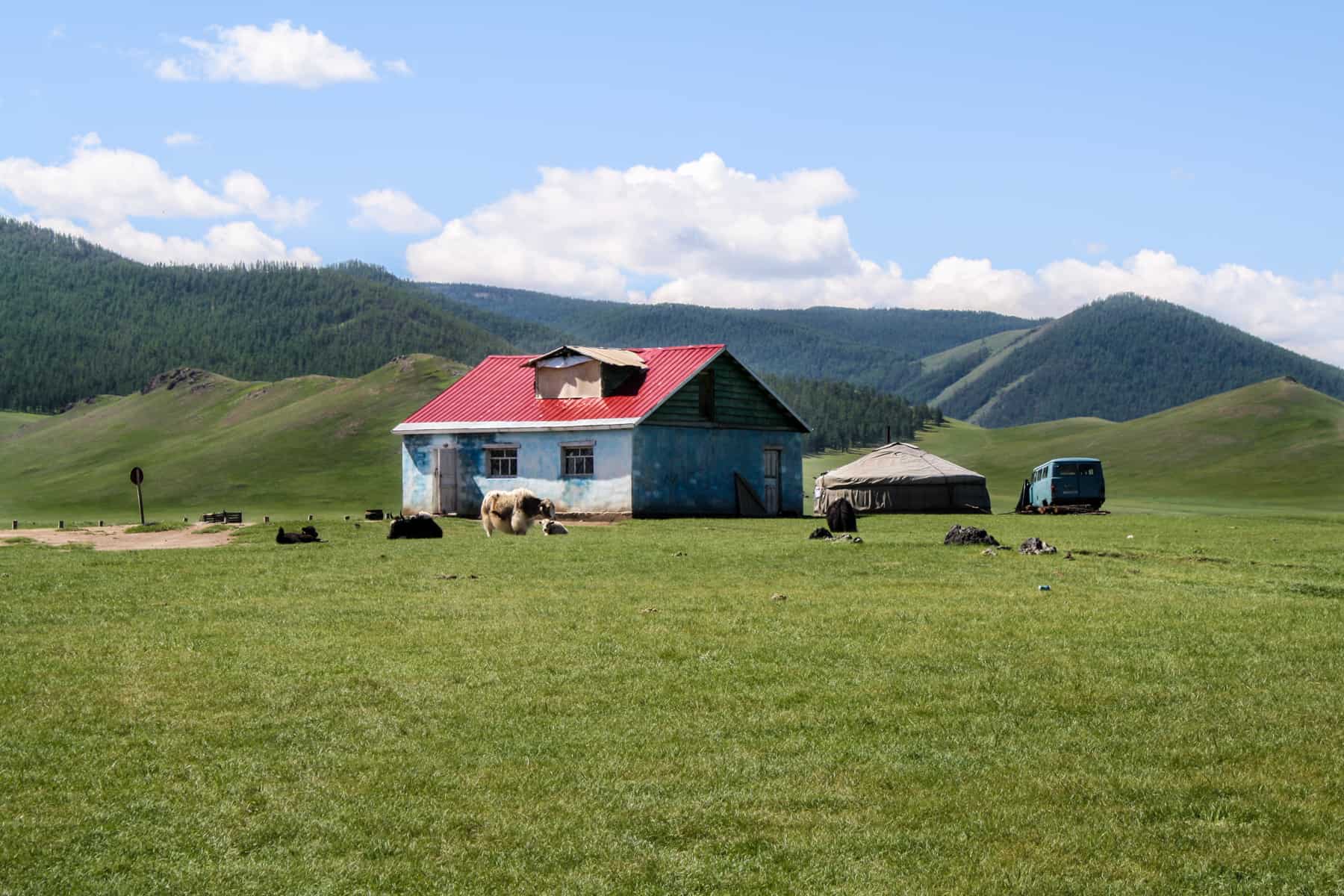
Visit the Least Densely Populated Country in the World
Off the beaten track adventure, when is the best time to go to mongolia, it pays to know a local, classic nomadic mongolia, local living mongolia, discover mongolia – national geographic journeys, experience the naadam festival in mongolia, is mongolia expensive to travel, mongolia visa on arrival, visa-free access to mongolia, day 1: visiting ulaanbaatar, day 2: getting from ulaanbaatar to the gobi desert, day 3: visit the baga gazryn chuluu rock formations, day 4: sleep at a ger camp in the gobi desert, day 5: dalanzagad to gobi discovery ger camp, day 6: hiking in yolin am – mongolia’s ice valley, day 7: a trip to the gobi desert khongoryn els sand dunes, day 8: visiting the bayanzag flaming cliffs, day 9: seeing ongii monastery and driving to arvaikhee, day 10: stuck in mongolia, day 11: hiking in orkhon valley, day 12: seeing the orkhon valley waterfalls, day 13: visiting a mongolian family in a ger, day 14: erdene zuu monastery in kharkhorin, day 15: camping at ugii lake, day 16: visiting hustain national park and seeing przewalski’s horses, day 17: driving to ulaanbaatar and visiting terelj national park, day 18: hiking terelj national park and seeing turtle rock, day 19: a trip to the ghengis khan statue on the tuul river, day 20: back to ulaanbaatar, how to overland in mongolia, building a road in mongolia, getting stuck in the mud, the unexpected river crossing, what to pack for mongolia, planning mongolia travel pin it, why travel to mongolia .
Mongolia travel changes you and makes you appreciate the beautiful patches on the earth’s surface not ruined by extreme modernisation, pollution and overpopulation.
My time in Mongolia meant experiencing everything from bush camping to ger camps, being at one with nature (and not care who sees you squatting in the process) and realising that animals like to roam and Mongolians love to chat – right outside your Ger from 5 am.
I saw a night sky so clear that I didn’t think you could ever see so many stars. I traversed a land so serene in isolation and culture so welcoming that I hope it never, ever becomes ruined by tourist traps or the tight grips of mass capitalism (currently contained to Ulaanbaatar).
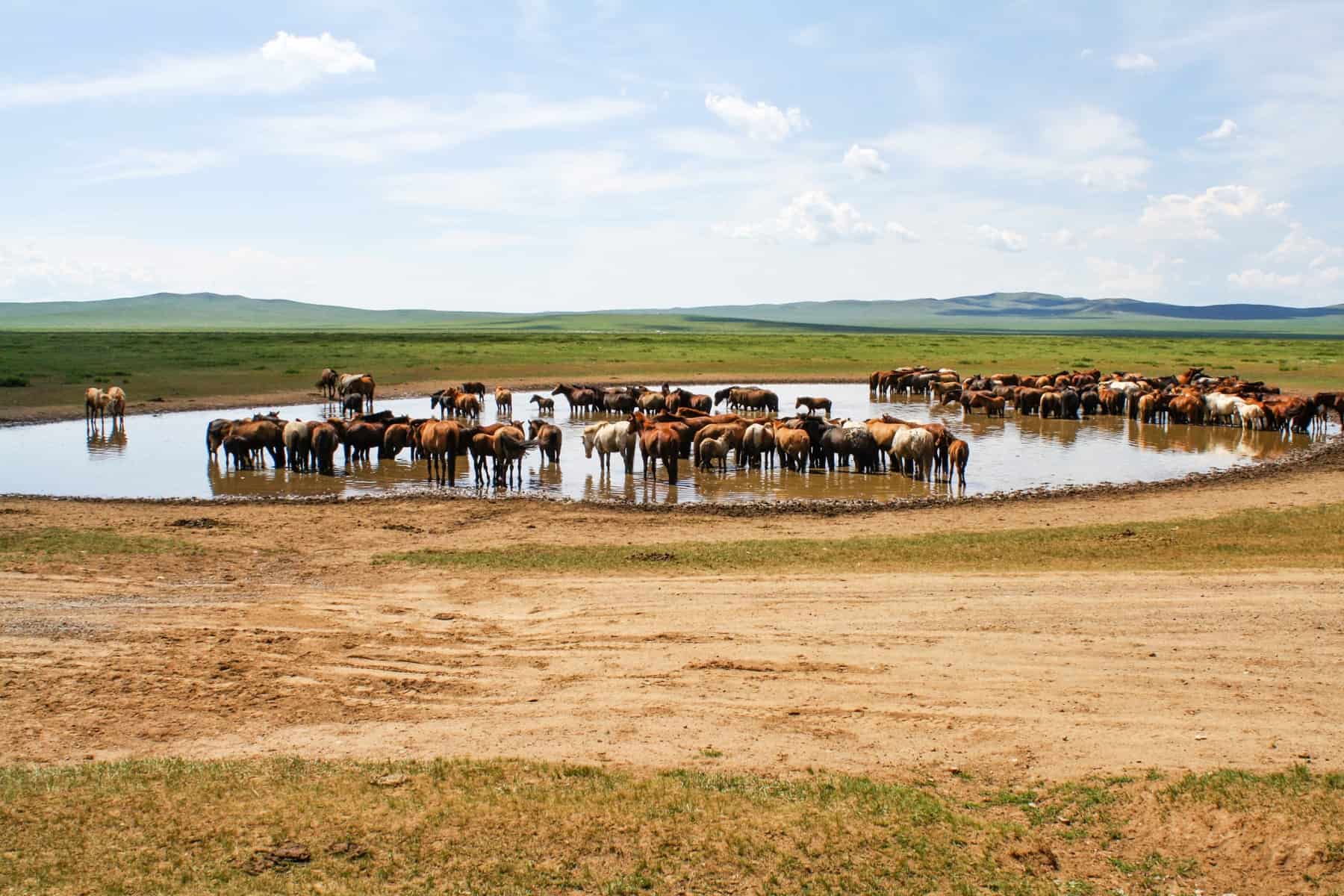
Wild horses in the vast Mongolian landscape
If you want to get off the beaten track, not be on any set grid and take each day as it comes, you will love Mongolia. But this also comes with its frustrations where you need droves of patience and a good chunk of travel time to spare.
There are hardly any roads. Roads are dirt tracks or pre-made grooves in the land pointing the way, and paved highroads are very few and far between.
Mongolia is prone to unpredictable weather conditions. That means random onslaughts of rain and the likelihood that you are likely to get bogged at some point. There were countless numbers of times where we had to dig out and push the truck or find locals to come to the rescue – tractors are a saving grace here.
It’s a vast country that you could get lost in for weeks on end, and when you accept the setbacks, you start to see them as part of the big adventure – travel at its most raw. Back to basics, getting dirty and struggling with the lack of modern amenities we too often take for granted is part of what travelling in Mongolia is all about.
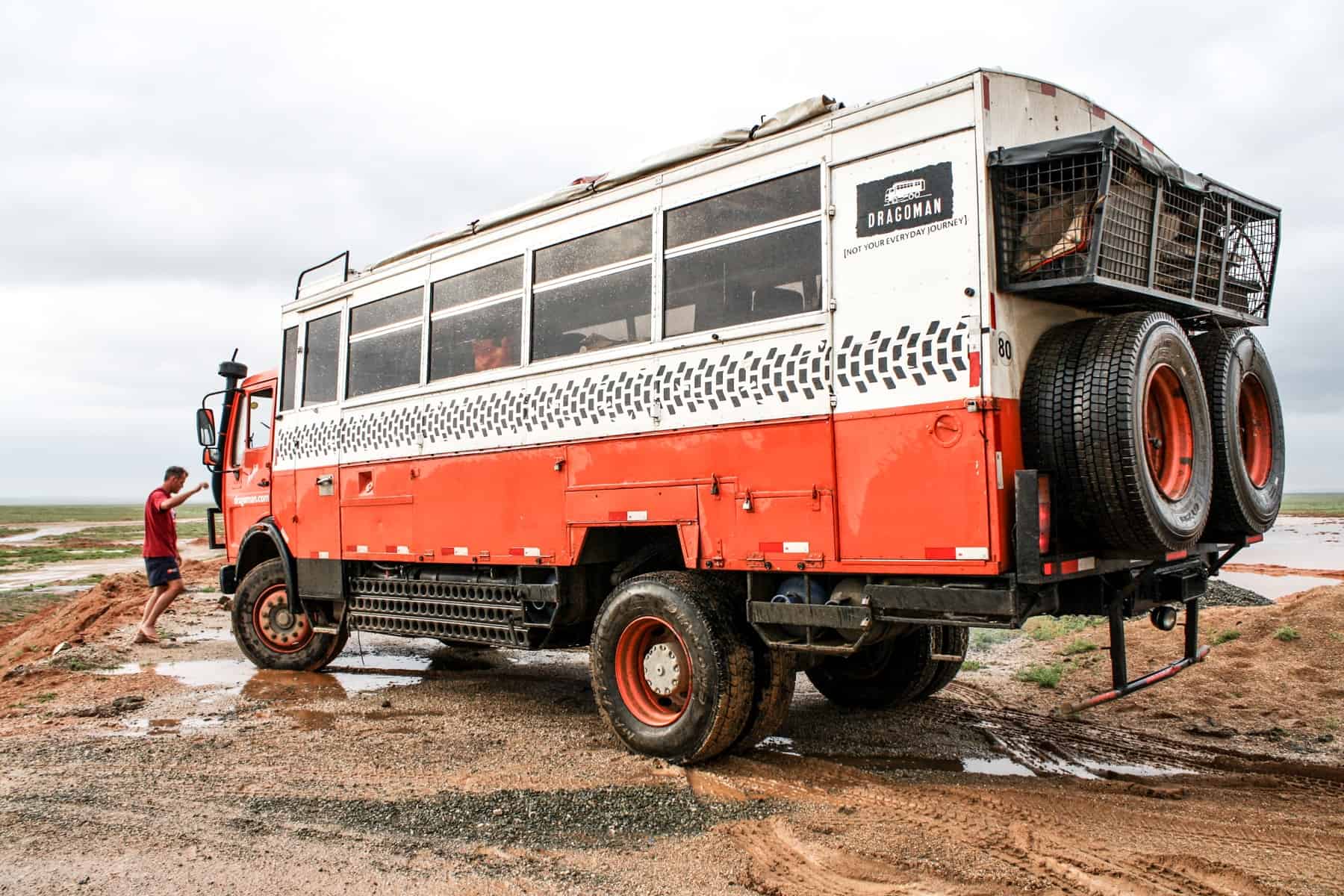
The Overlanding vehicle used to travel to Mongolia and around.
The summer season between May to September is said to be the best time to go to Mongolia. July and August are the hottest months, with temperatures in the Gobi Desert reaching 40°C. Rainfall is at its highest between June and September, balancing out the heat while keeping the forest and valley lands, in particular, lush and fertile. I travelled to Mongolia in July and experienced a lot of rainfall alongside high temperatures.
Mongolia’s winter season is from November to February. While some people like to experience the landscape in this snowy season, temperatures can drop to below minus 20°C – a harsh and challenging environment to travel in. You’ll find that not many companies run tours during this time.
Is it Safe to Travel to Mongolia Safe?
While petty crime and pickpocketing are common in the capital, Ulaanbataar, Mongolia is a relatively safe place to travel, and I never encountered any significant problems. It pays to be more streetwise and alert in the city, as you would in any other. As the landing and departure point for tourists, opportunism poses a higher risk.
Despite the lack of infrastructure and the relative isolation when travelling through the country, the only minor issue we encountered was related to the high levels of alcoholism in the country. We saw drunk drivers on our long drives and an occasion or two when inebriated locals came to our makeshift camp out of curiosity. Even then, it never felt threatening, and we were always within the safety of our group.
On the whole, we rarely saw other people, and when we did, we were met with kindness, invited into homes and welcomed into common spaces such as markets and small-town social spaces.
I also travelled alongside a Mongolian guide – someone who could speak the language when we got stuck, who could walk to a nearby home and explain the need for assistance and who understood the land’s general navigation. Therefore, in Mongolia, it pays to get yourself a local guide, join a small group tour, formulate a small group of your own in Ulaanbataar or be equipped with general wilderness survival skills if going out there entirely on your own.
Mongolia Tours
When I was planning my trip to Mongolia, Dragoman was the only company offering Mongolia tours that lasted from ten days to two weeks. The 21-day overland journey was the first trip itinerary of its kind they were running here, which included Inner Mongolia. Today the 21-day trip, called Nomads & Wilds of Mongolia, is on a loop from Ulaanbaatar and includes Khovsgol Lake in the north. Although Dragoman suspended operations during the pandemic, they are back in 2024.
Adventure travel experts G Adventures, offer Mongolia tours that all start and end in Ulaanbaatar.
A 14-day trip, including all the highlights at an affordable price (from €1999), this Mongolia trip includes a Gobi Desert and Mongolian Grasslands stay, alongside packing in the major historical must-sees and cultural experiences that make Mongolia an unforgettable adventure.
This 10-day local living trip includes staying with three different families in Gers to experience life as a nomad. Mix historical monuments with cultural moments, exploring pastures, forests, lakes and national parks by foot and horseback while helping your host families prepare traditional dinners and learn the skills of their nomadic trades.
G Adventures, in partnership with National Geographic Journeys, offers a two-week comfort adventure through Mongolia . You get to visit Khustai National Park, Karakorum (the ancient capital of Mongolia), Tsenkher Hot Springs, the Orkhon Valley and more. You will also see a nomadic camel-herding family and dive deeper into Mongolia’s culture, as well as support the local community where tourists pass through.
Want to experience the Naadam Festival’s horseracing, archery and wrestling tournaments? This mini adventure takes you to it and throws you right into the buzz of traditional Mongolian festivities.
Mongolia is expensive to travel in and around due to the very nature that it is not overly touristic. Due to the lack of infrastructure, a tour with a local guide and appropriate transport can often be necessary to cover more ground.
- You will need to budget between $2400-$3600 for an extensive trip around the country.
- An average meal (if not making your own on the trip) costs around $5.
- Entrance fees to historic sites and museums average around $2 per ticket.
For those on a budget, day trips can be taken from Ulaanbaatar, or you can try and plan some shorter 3-5 day trips from the city. However, this can often depend on having a minimum amount of people signed up for the trip to run and isn’t always guaranteed.
Do you need a Visa for Mongolia?
If you are not a national of one of the visa-exempt countries listed below, you will need a Mongolia visa.
- A single-entry visa (valid for three months from the date of issue) for up to 30 days – £40/$50
- A double-entry visa (valid for three months from the date of issue) for up to 30 days – £55/$65
It is cheaper to apply directly at a Mongolian Embassy (either at home before you leave or in the country you are travelling in prior). You will need a valid passport, passport photos and supporting trip documents alongside a completed application.
Allow one working week for processing. Some Embassies provide a one-day service for an extra charge.
A 30-day tourist visa on arrival is available for tourists coming from European and other countries where there are no Mongolian Embassies present, obtained at Ulanbataar Airport or the Mongolian land borders. I got my visa in London months before my trip.
The following countries are granted visa-free entry to Mongolia.
Visa-free entry for 90 days: Argentina, Belarus, Brazil, Chile, Kazakhstan, Kyrgyzstan, Serbia, United States (US). Those from Ukraine require a form of invitation.
Visa-free entry for 30 days: Canada, Cuba, Germany, Israel, Japan, Laos, Malaysia, Russia, Singapore, Turkey, Thailand, Uruguay.
Visa-free entry for 21 days: Philippines.
Visa-free entry for 14 days: Hong Kong.
You can find further information on the Embassy of Mongolia website .
Where to Go in Mongolia – Itinerary
I spent 20 days Overlanding in and across the central and western Mongolian plains. We travelled in a big clockwise circle from Ulaanbaatar, through the scorching Gobi Desert to beautiful lakes, forests, canyons and waterfalls, all the while passing vast herds of wild horses, camels, goats, yaks and cows.
Overlanding in Mongolia for Three Weeks:
Kilometres travelled: 2492
Number of significant times the truck got stuck: 2
Number of minor times the truck got stuck: 12
Number of incredible driving days: 15
We spent a full day in Ulaanbaatar exploring outside of the stark Soviet communist-style architecture and moving past the city’s general dodgy feeling. There’s plenty to see and do here, including a walk through the modern Sukhbaatar (Parliament) Square, the Gandan Monastery, the National History Museum and the shopping paradise of the Black Market . In the evening, check out the singing, dancing and contortion talent at the Cultural Show before hitting a few bars and pubs. There’s so many you won’t know where to start.
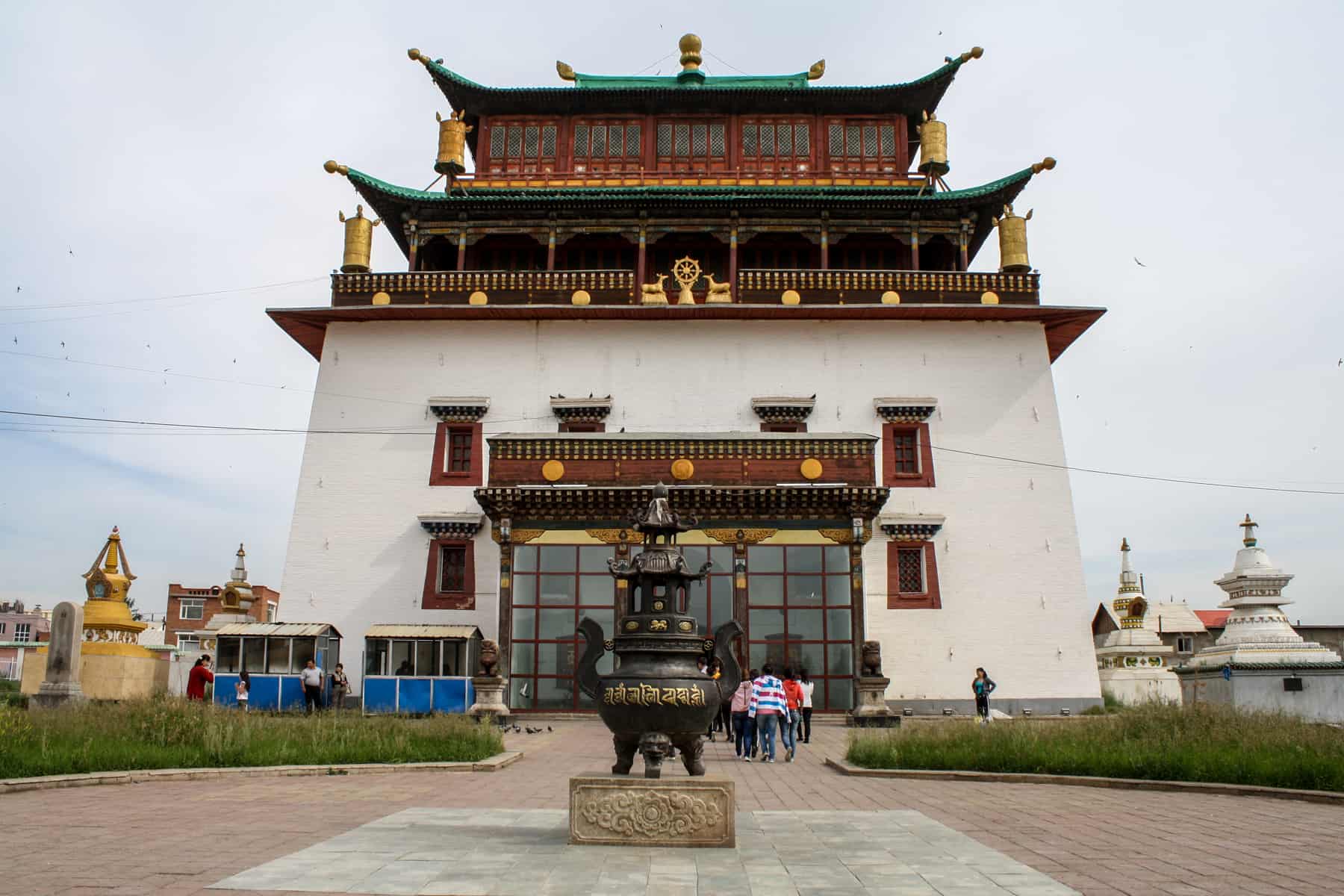
Gandan Monastery in Ulaanbaatar, Mongolia
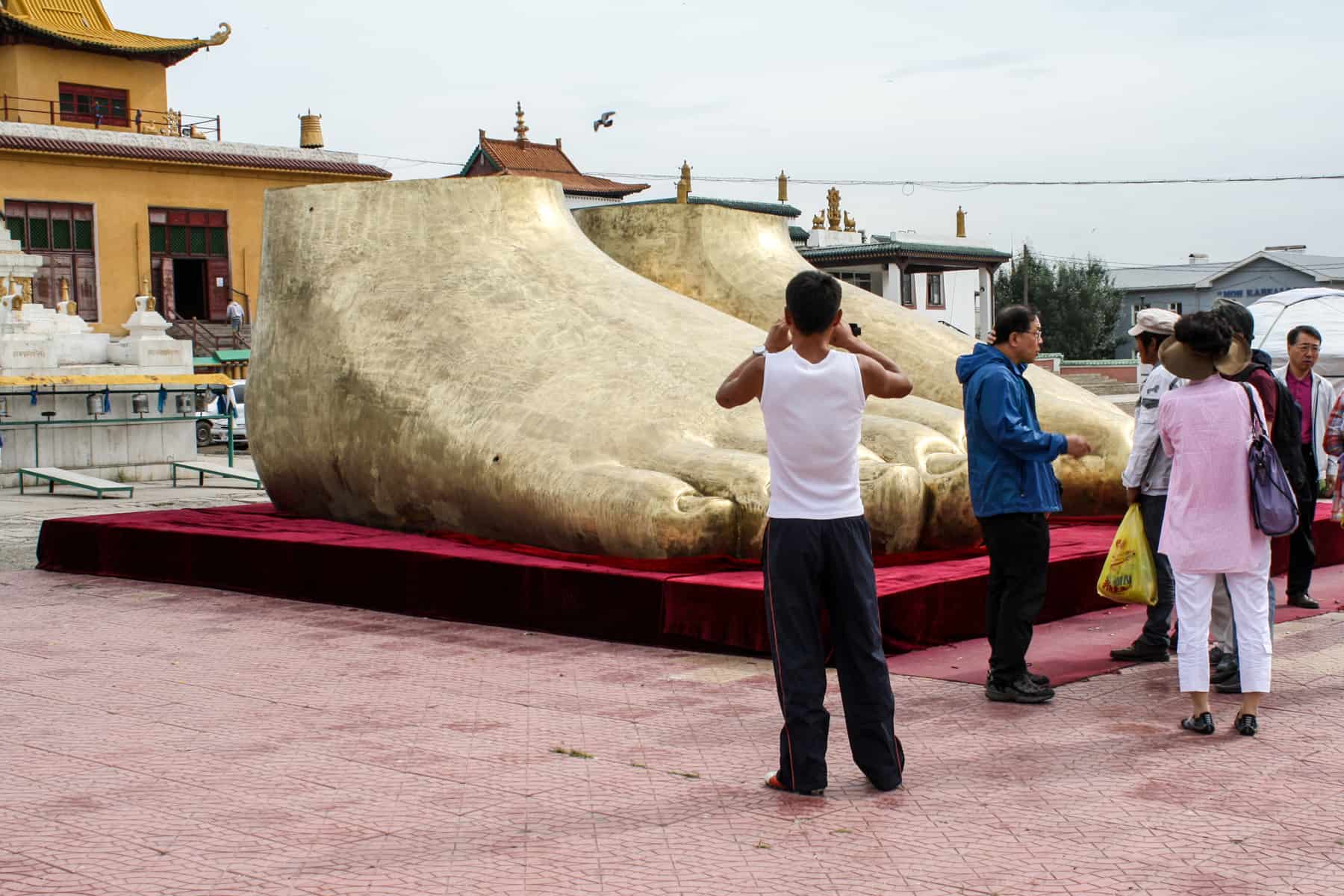
The golden feet outside the Gandan Monastery Ulaanbaatar
We set off in the truck from Ulaanbaatar to drive to the Baga Gazryn Chuluu rock formations in the Gobi desert. Due to heavy traffic when getting out of the city and general road conditions we got delayed and so decided to set up bush camp for the evening. Be prepared for delays in Mongolia but delight in being the only people in the area. All the space is yours.
We got to Baga Gazryn Chuluu – rock formations worshipped by locals who make pilgrimages here partly because legend states that Ghengis Khan camped here – before journeying to the Gobi Desert.
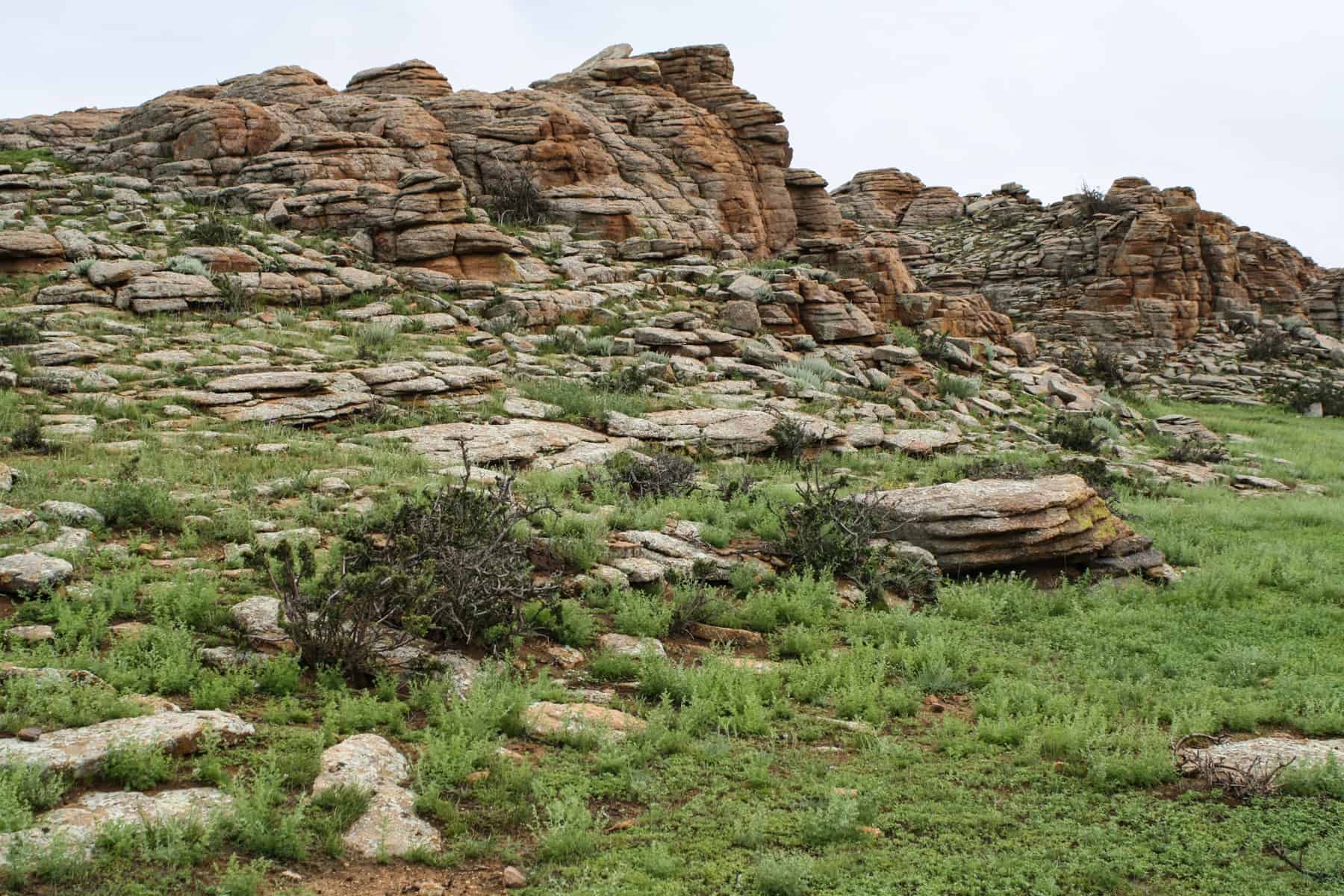
Layers of Baga Gazryn Chuluu rock formations in Mongolia
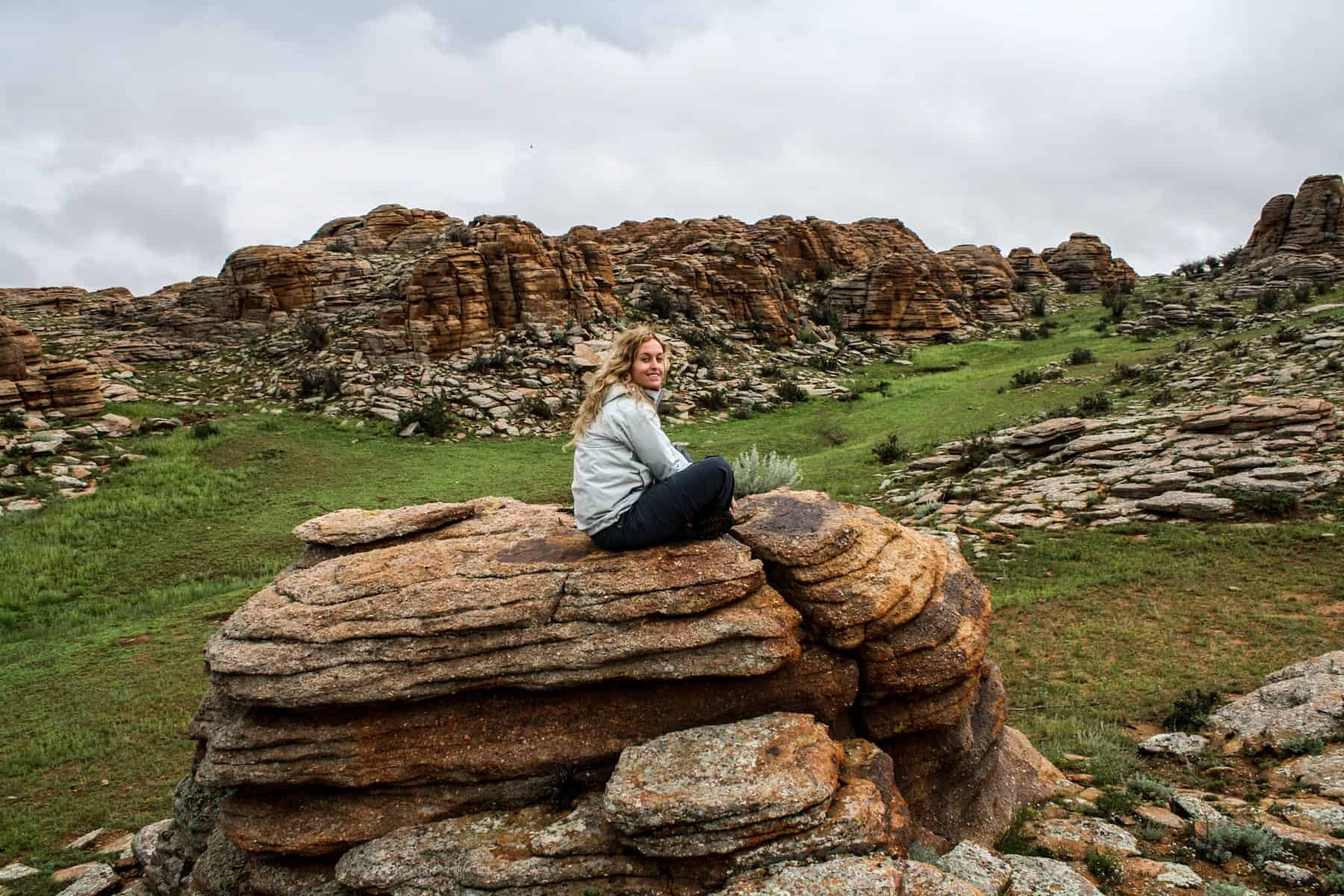
A hike to Baga Gazryn Chuluu as part of a Mongolia travel itinerary
On the way, we got to experience the famous Nadaam Festival when we passed through the local town of Mandal Govi . It was full of wrestling, horse racing, archery and fairground style fun. Nadaam means ‘games’, and the buzz was all around us as the only Westerners there. It was great to be a part of a traditional Mongolian community celebration, even if the afternoon was marred by a bogging, which resulted in the truck not being released from the soft mud until midnight.
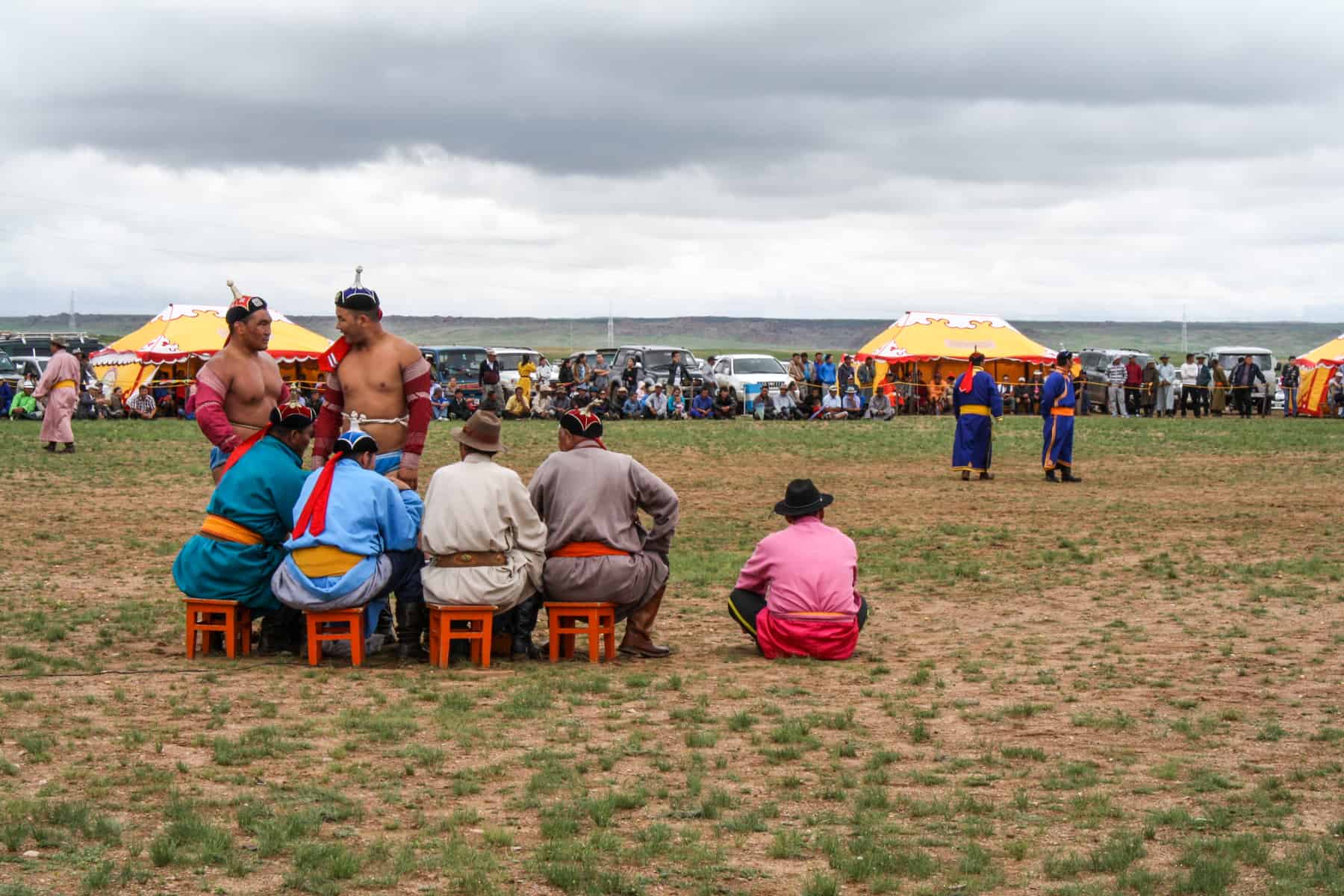
Watching the wrestling at the Nadaam Festival in Mongolia
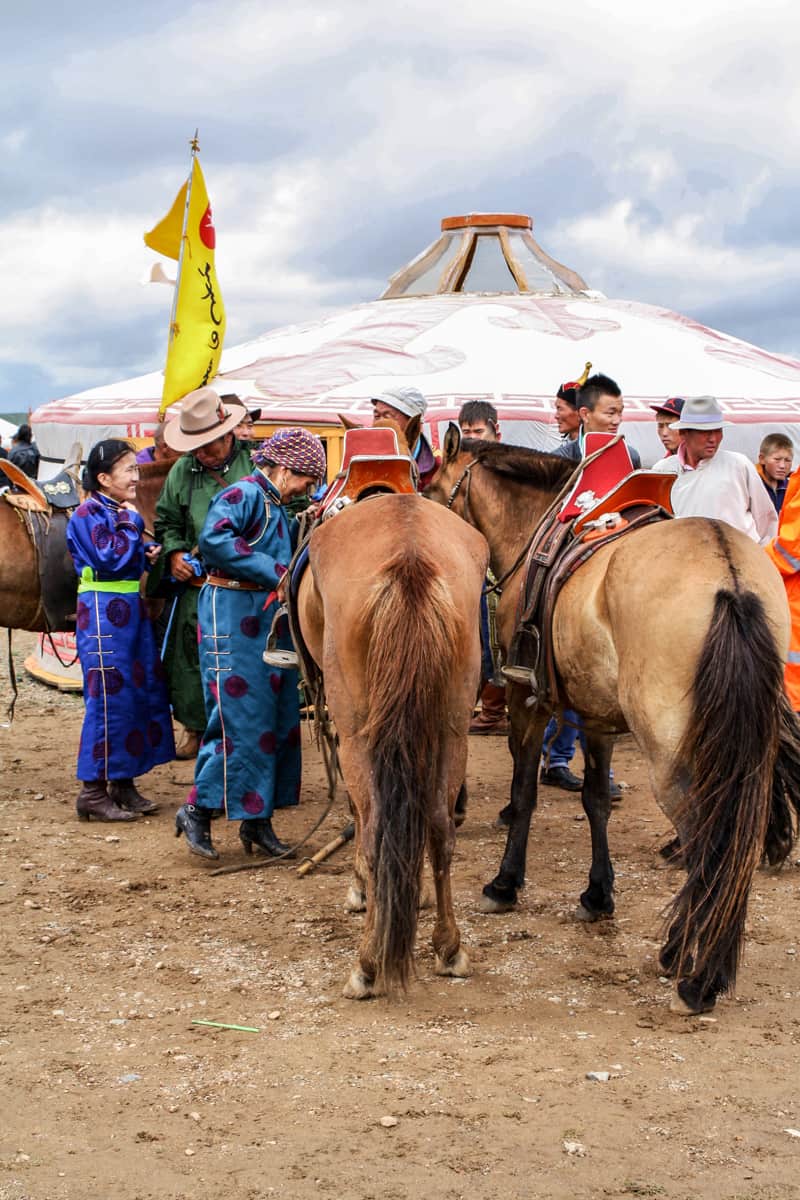
Mongolian locals enjoy the Nadaam Festival.
The plan was to get to our first ger camp, but after approximately 30 kilometres, we encountered a large ditch of water on the road. It resulted in us having to drain the water by hand and build a road and a dam for most of the afternoon to help us get across. Although this sounds horrendous, it created a great sense of camaraderie and, ultimately, an immense sense of achievement. We got to camp on a high point of the Gobi Desert instead near the town of Tsogoovi .
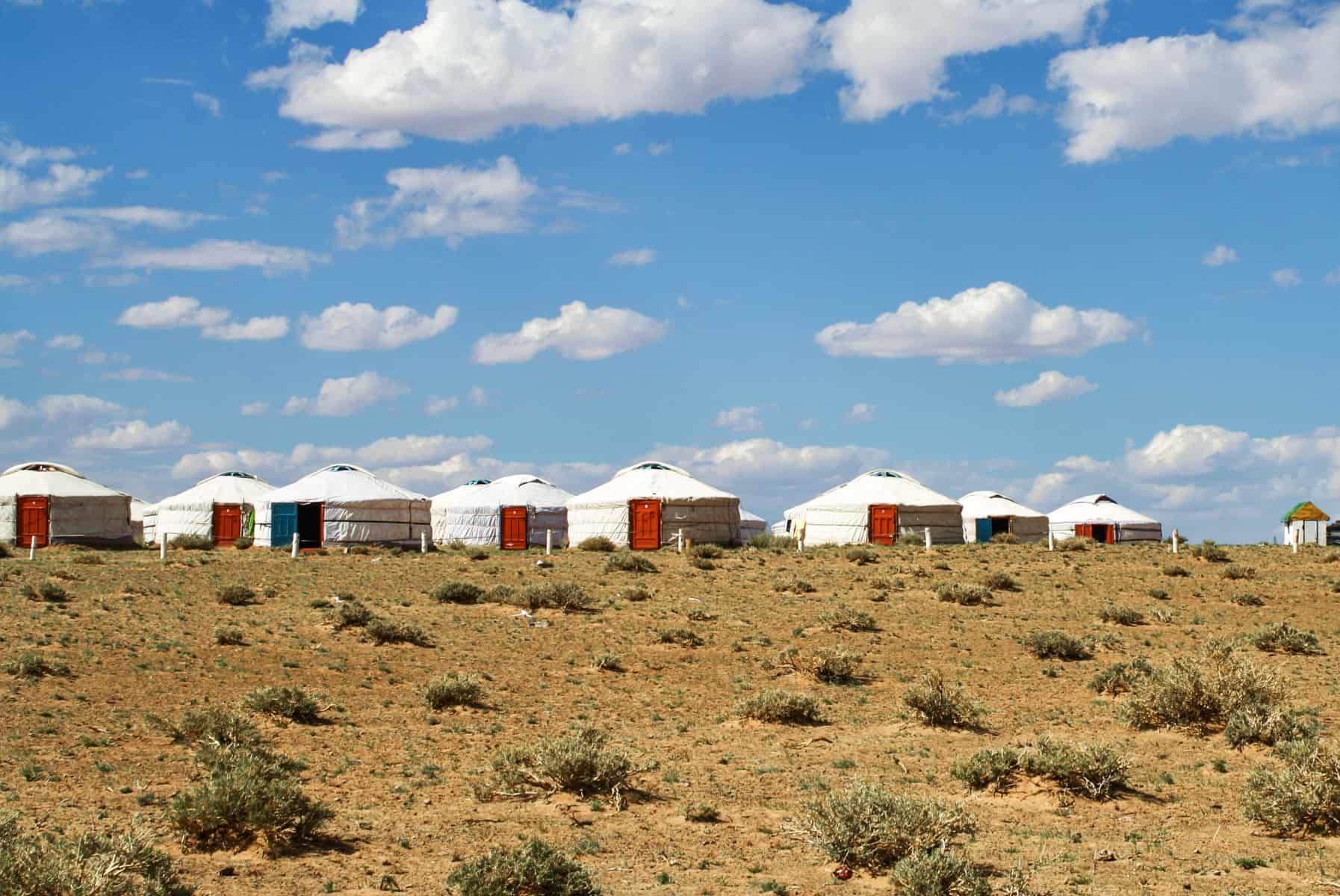
A Ger Camp on a hilltop in the Gobi Desert, Mongolia
We began our journey without a hitch to the ger Camp called Gobi Discovery, stopping at the town of Dalanzagad on the way. Mongolian towns are typically tiny and compact settlements that are reasonably large but without the ruin of a city like Ulaanbaatar.
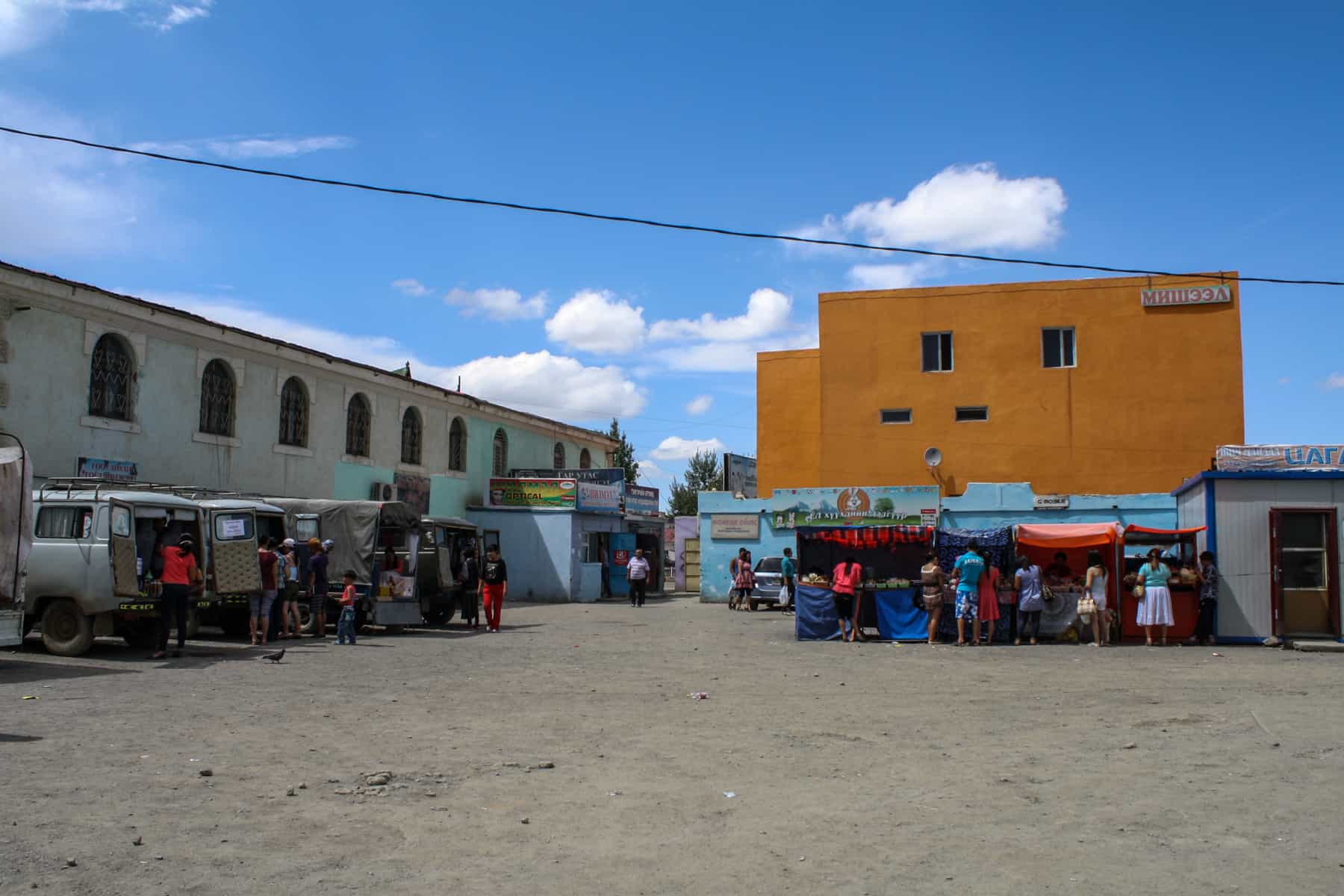
Market time in the town of Dalanzagad, Mongolia
We hiked in Yolin Am , a beautiful canyon in the Gobi, an ice valley, which hosts a colossal glacier all year round. The hike was spectacular, but, unfortunately for us, little of the iceberg remained, although we had lots of fun playing with what little ice there was regardless.
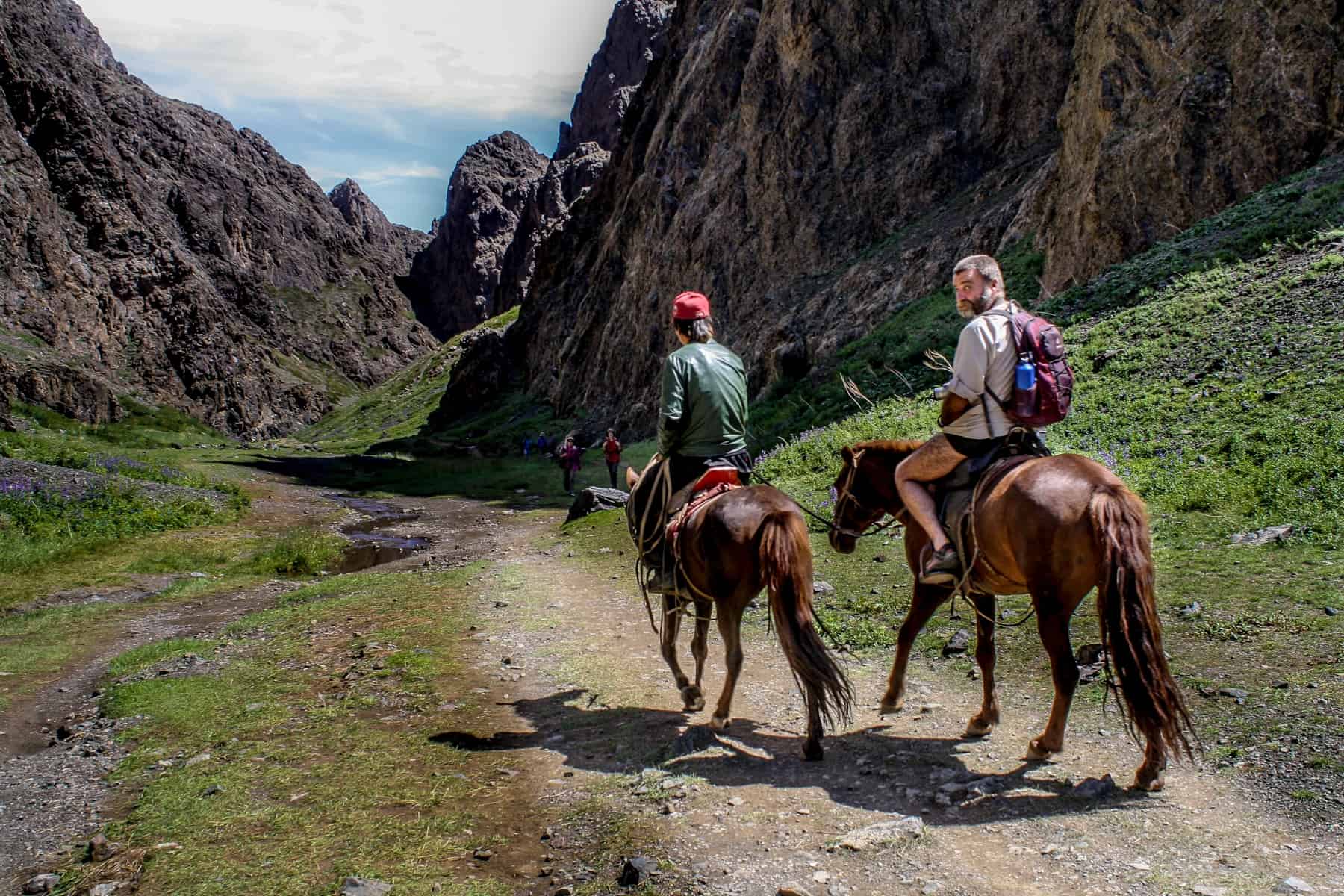
Hike or horseback in the Yolin Am Valley in Mongolia
Many sandy riverbed crossings eventually led us to our second Ger camp, Khongoryn Els Ger Camp. Here, you only have to open your ger door to be greeted with a breathtaking view of the Gobi and the Khongoryn Els Sand Dunes , which I later climbed, drank beer on and ran down. That was after a camel ride, of course.
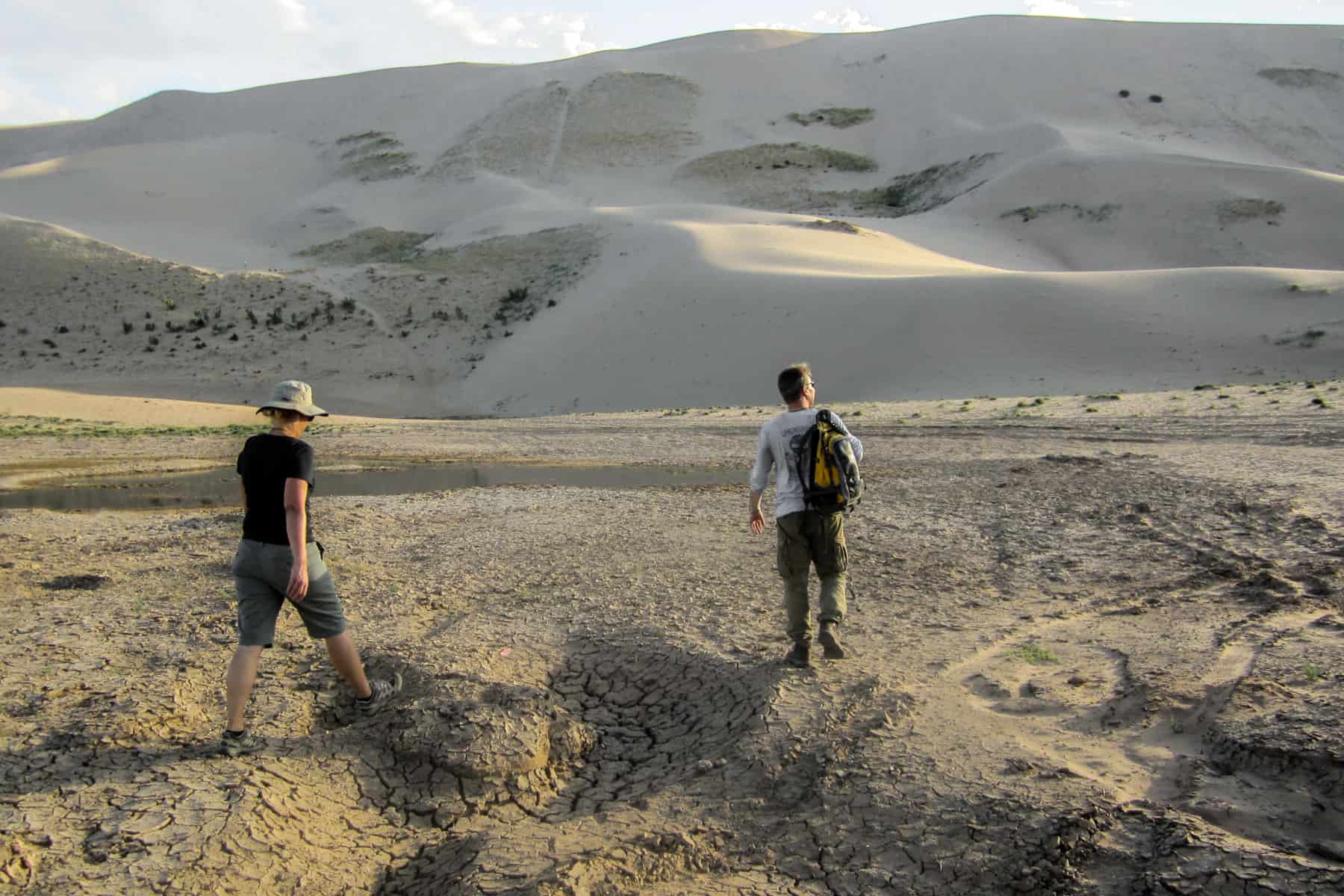
The glorious Gobi Desert Khongoryn Els Sand Dunes
Bumpy mountain roads took us to the spectacular Bayanzag Flaming Cliffs , which are a Mongolian version of the Grand Canyon, but smaller. It’s a significant site that unearthed many dinosaur fossils and eggs, and it is also a stunning backdrop for bush camping.
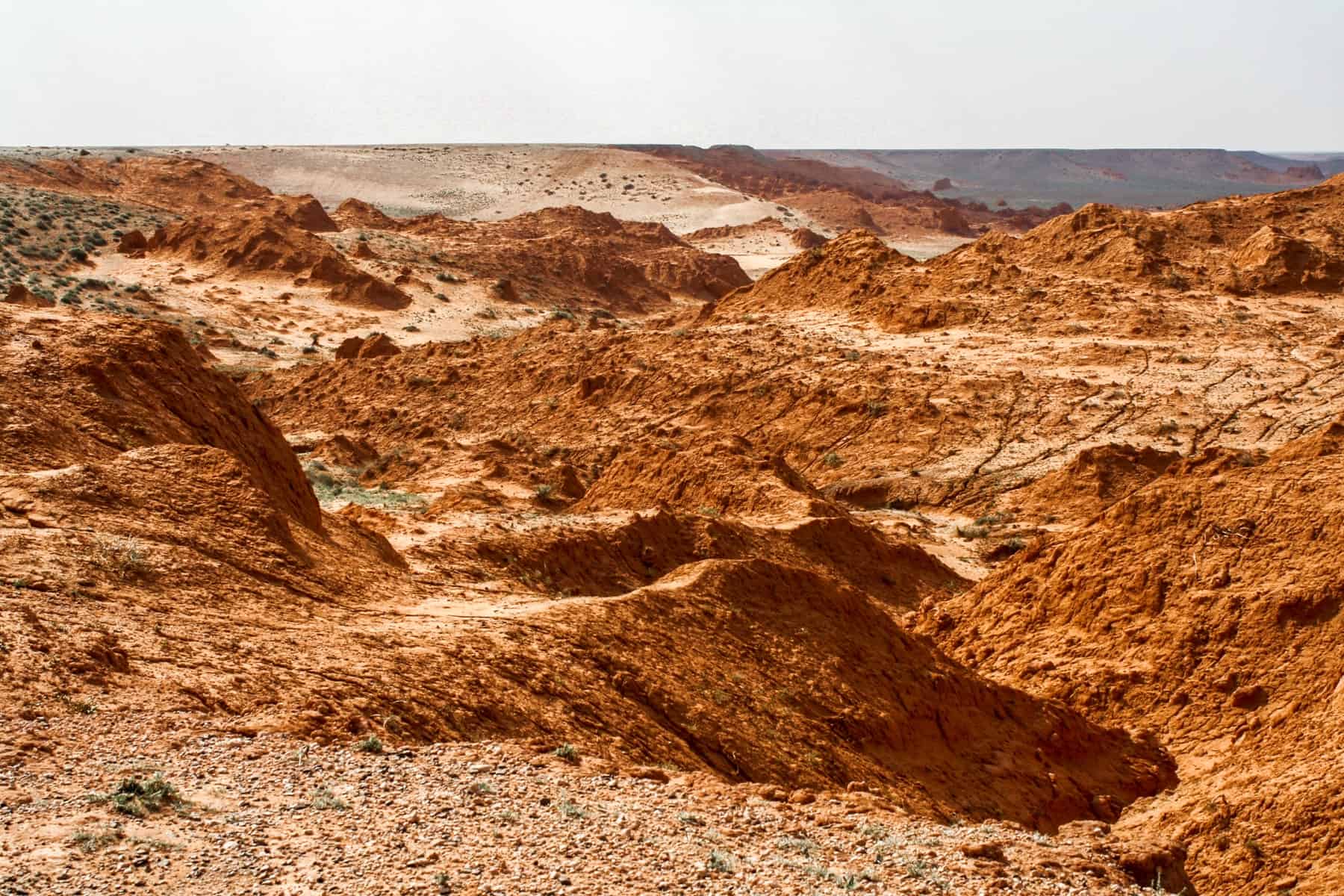
The blazing ochre colours of Mongolia’s Bayanzag Flaming Cliffs
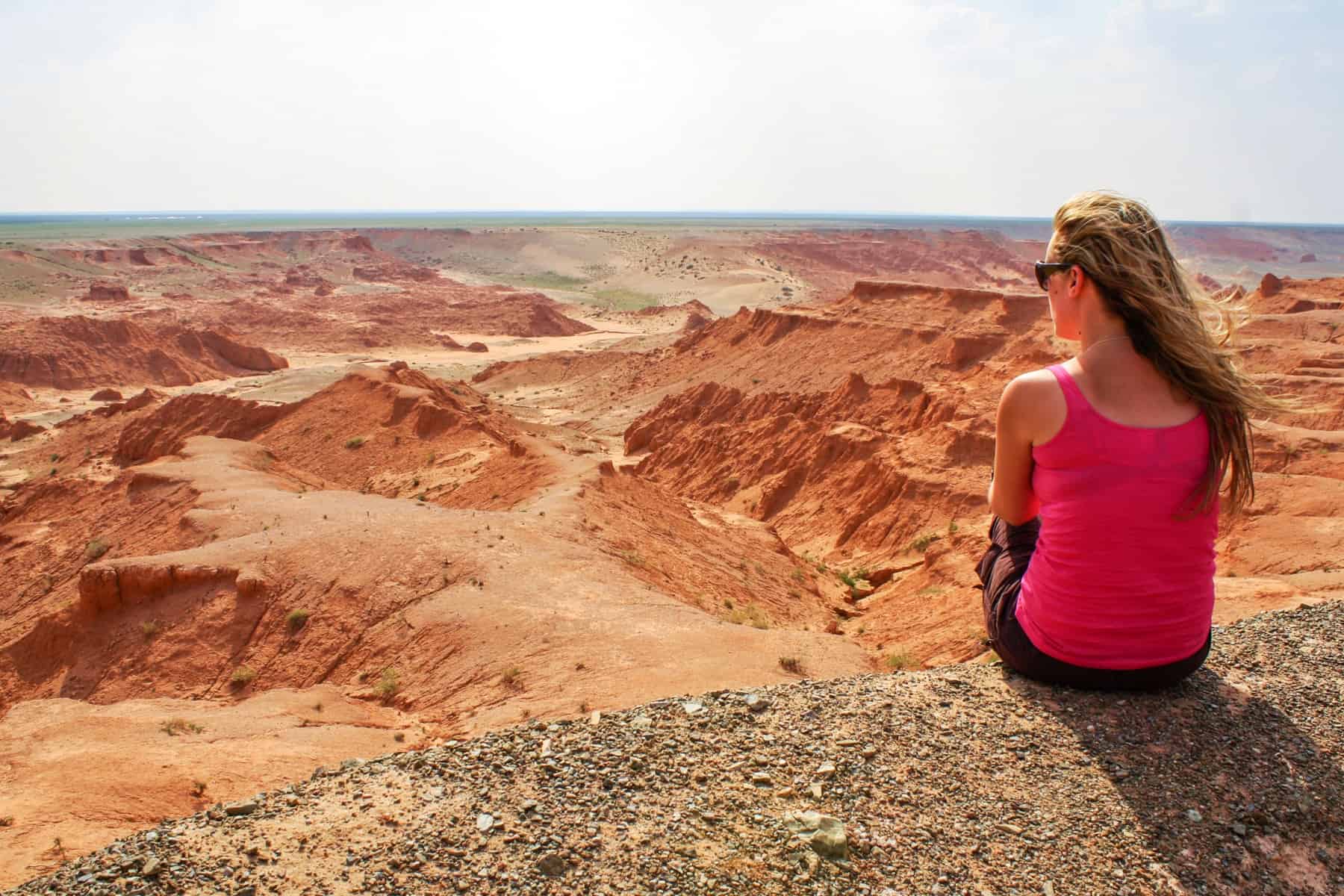
Marvel the mars-like landscape of Bayanzag Flaming Cliffs when you travel to Mongolia
When the communists invaded Mongolia in the 1930s (known as the Purges), nearly all Monasteries were destroyed. Ongii Monastery was one of them, and we visited the ruins here before driving to Arvaikheer, where heavy rain forced us into a hotel for the night. At times, random bad weather makes bush camping in Mongolia impossible, so it is essential to prepare for a budget recount at any given time.
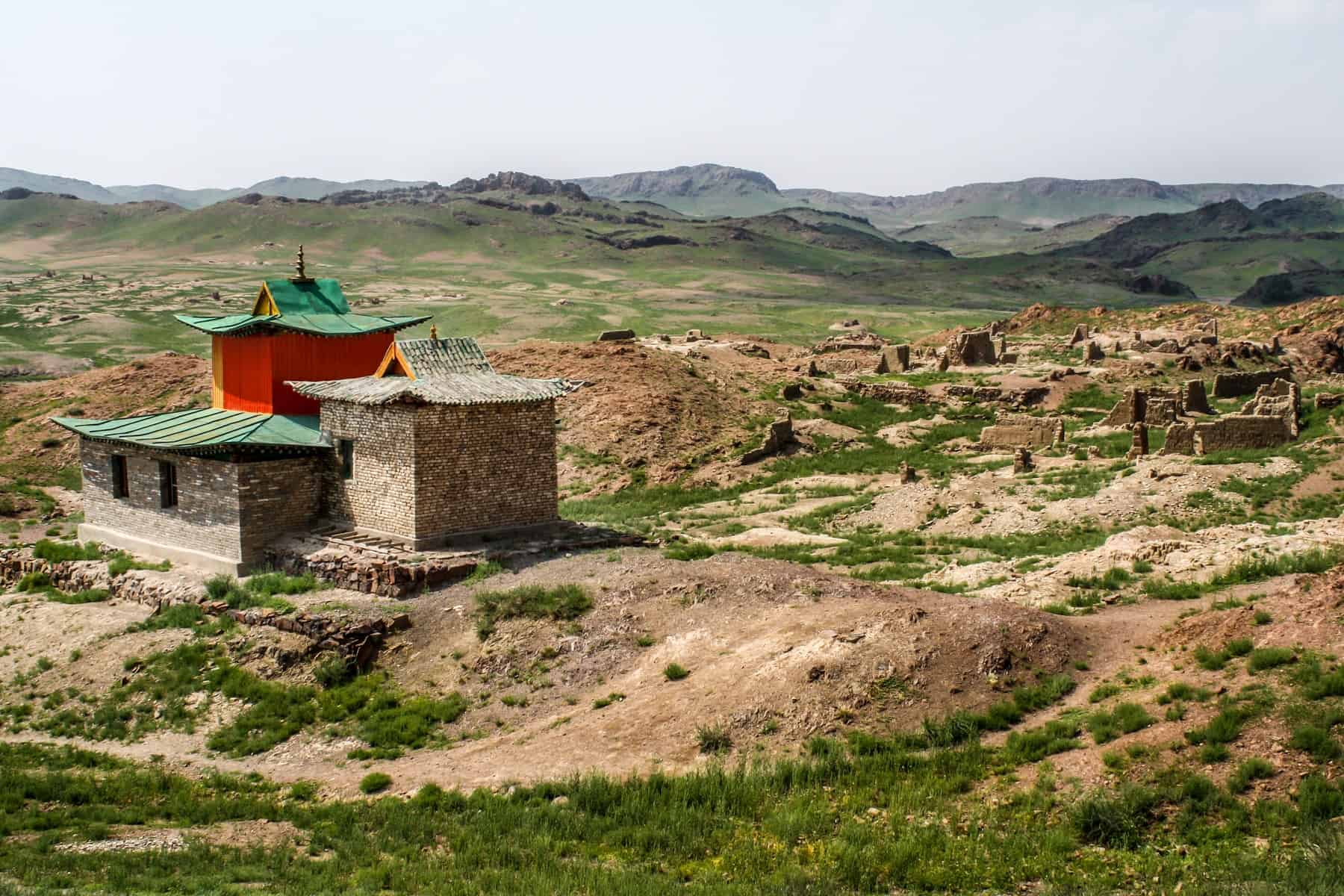
The site of the Ongii Monastery in Mongolia
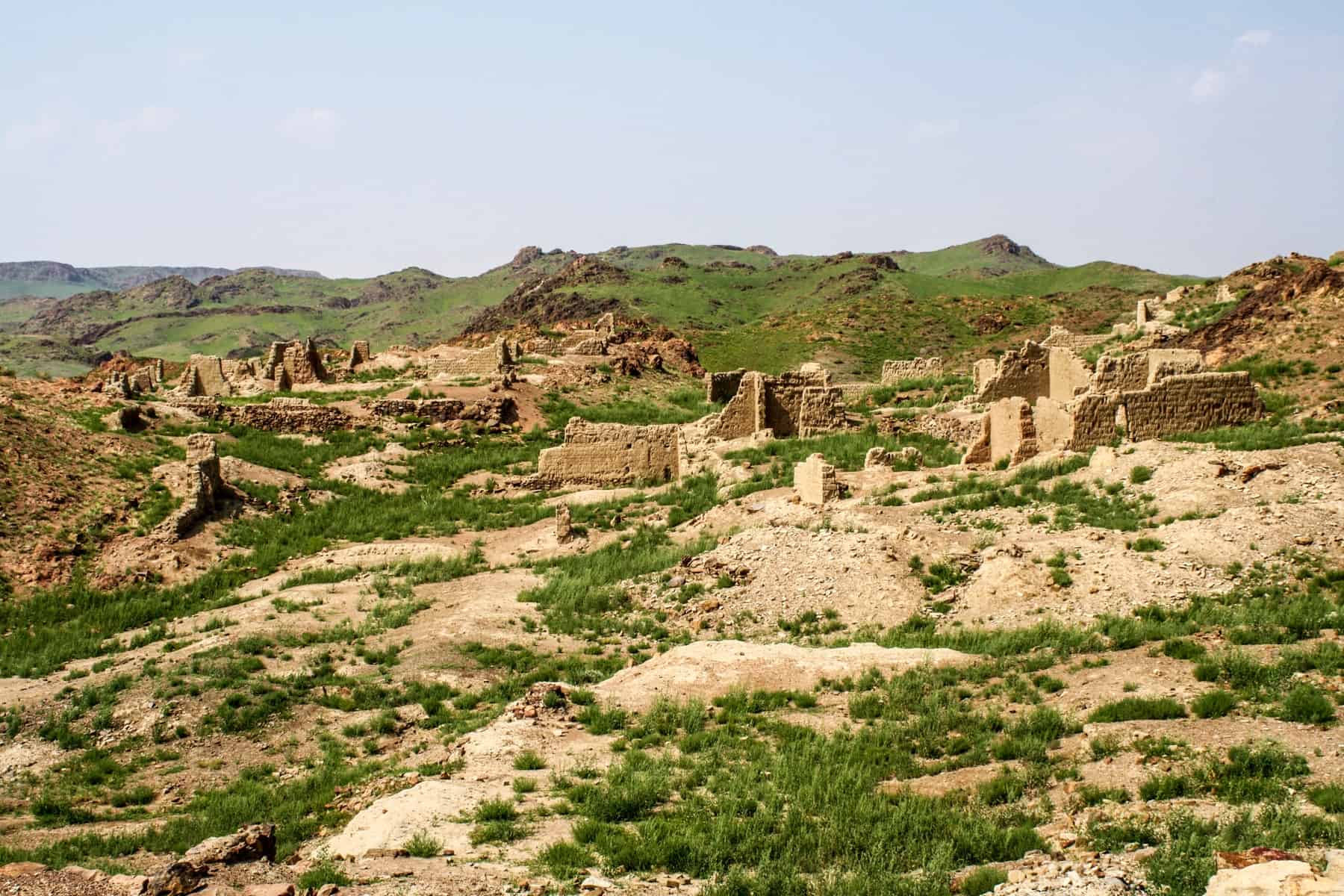
The scattered stone ruins of Ongii Monastery in Mongolia
We began our journey to the third ger camp but got badly bogged around midday after the truck had to swerve slightly, of course, to miss a drunk driver who came in our path (sadly, a lot of people drink and drive here). It took over five hours to get out, with the help of a small local tractor, and during that time, a few of us who remained to help with the truck (local jeeps rescued a few) lost our minds. It was a hilarious few hours that would have made an excellent documentary, probably how a Lord of the Flies scenario starts.
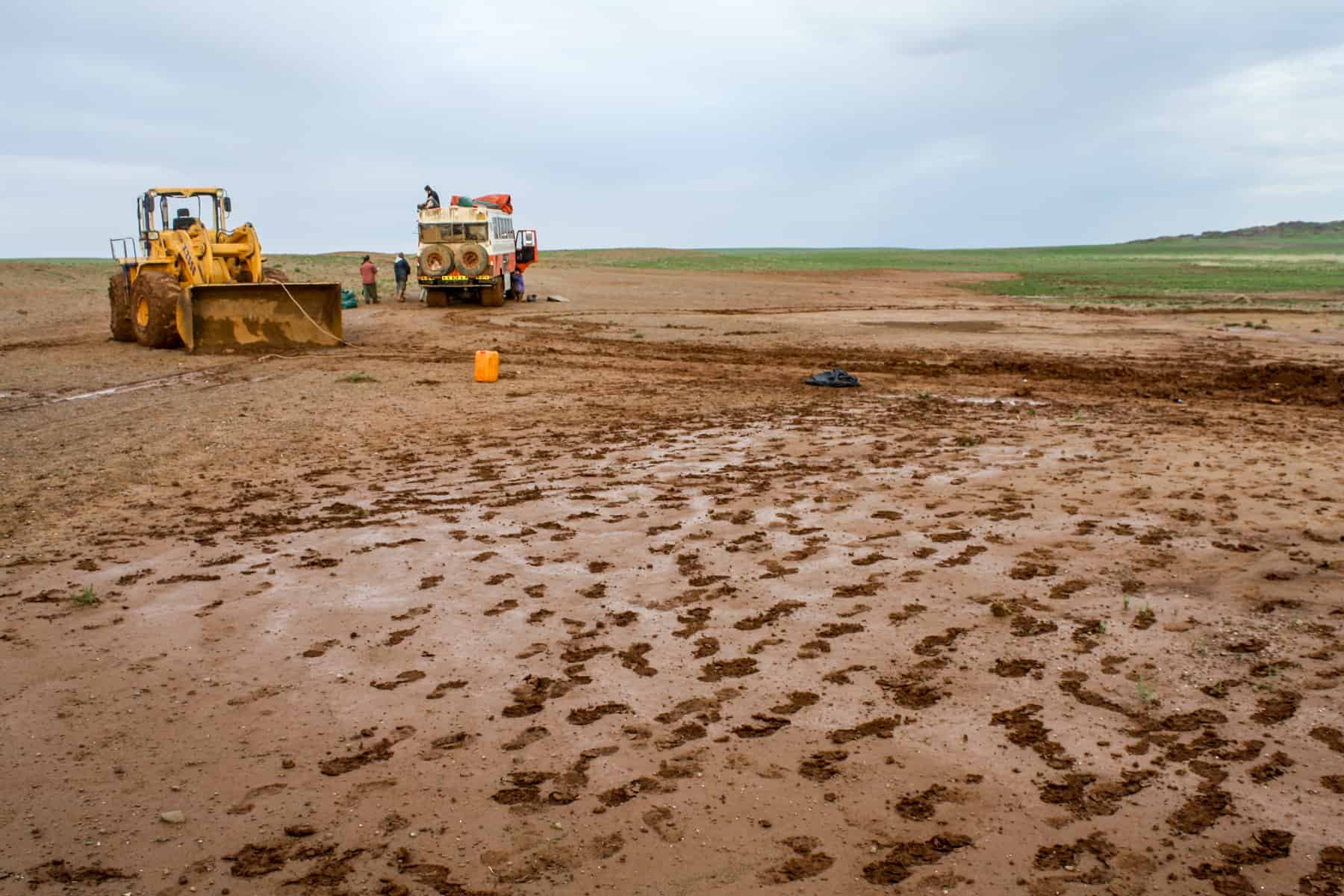
Tractors help pull the Overlanding truck out of the sticky mud in Mongolia’s rural landscape.
The roads were not rigid and stable enough for the truck to continue, especially with all the hills. After setting up tents and cooking dinner, two small vans came to the rescue to take us on our two-hour journey to the Ger Camp. It was a scary ride in the dark, where we stopped at the driver’s backyard and where a small boy jumped into the hold of the van for the rest of the journey.
I highly recommend staying in a ger camp in the beautiful Orkhon Valley . There’s nothing like a pleasant hike through the beautiful forest to reach the Tuvkhon Monastery and see the surrounding area. Pure bliss.
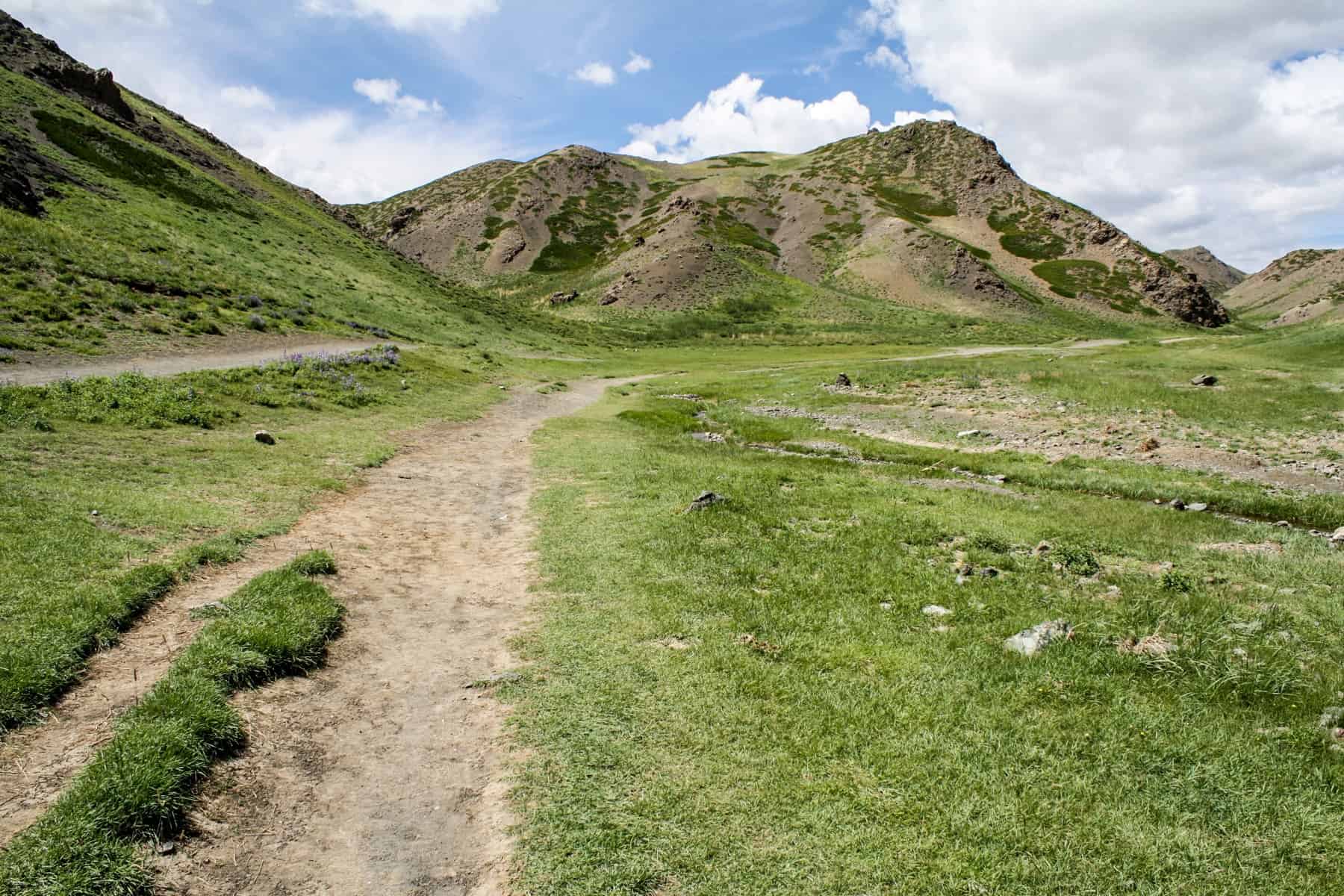
The lush green leading to the soft peaks in the Orkhon Valley Mongolia
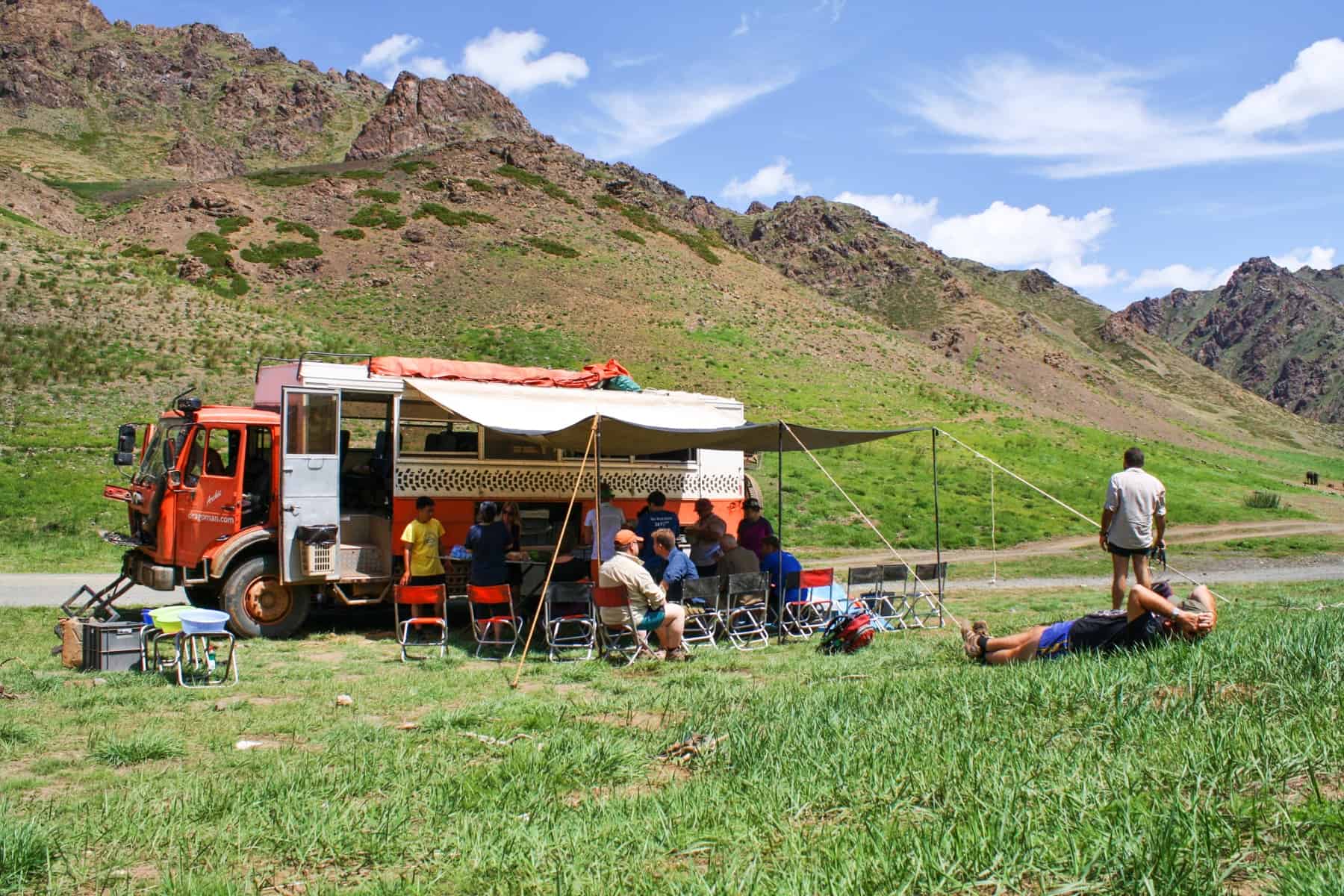
A rest stop in the scenic Orkhon Valley landscape
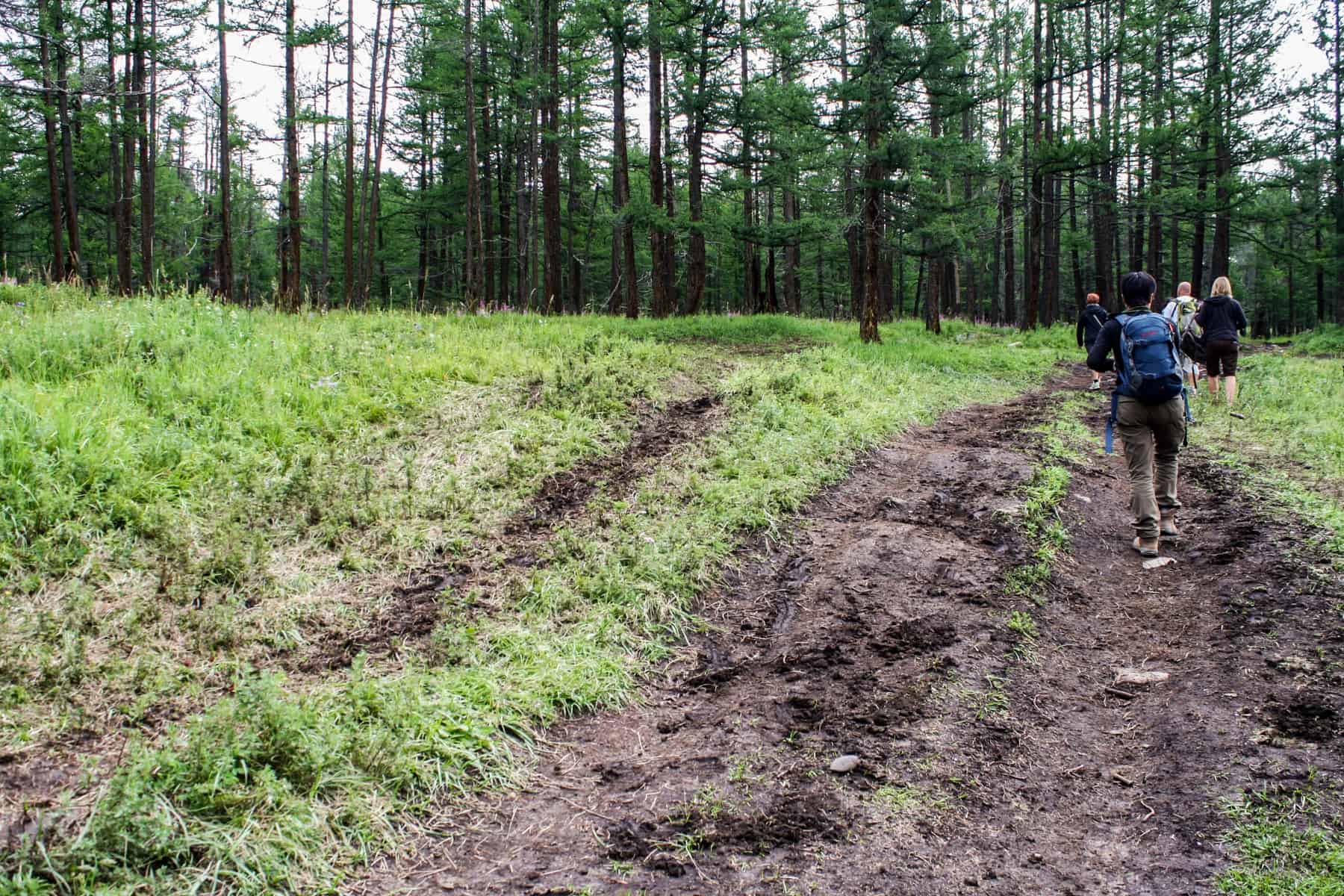
Hiking the forest trails of Mongolia’s Orkhon Valley

The rocky plateau that surrounds the Tövkhön Monastery in Mongolia

The colourful entrance to the Tövkhön Monastery
The Orkhon Valley waterfall was the next stop on our five-hour drive to the next ger camp. This camp plays host to the famous hot springs in the region, where we went skinny dipping and enjoyed a few refreshing beers.
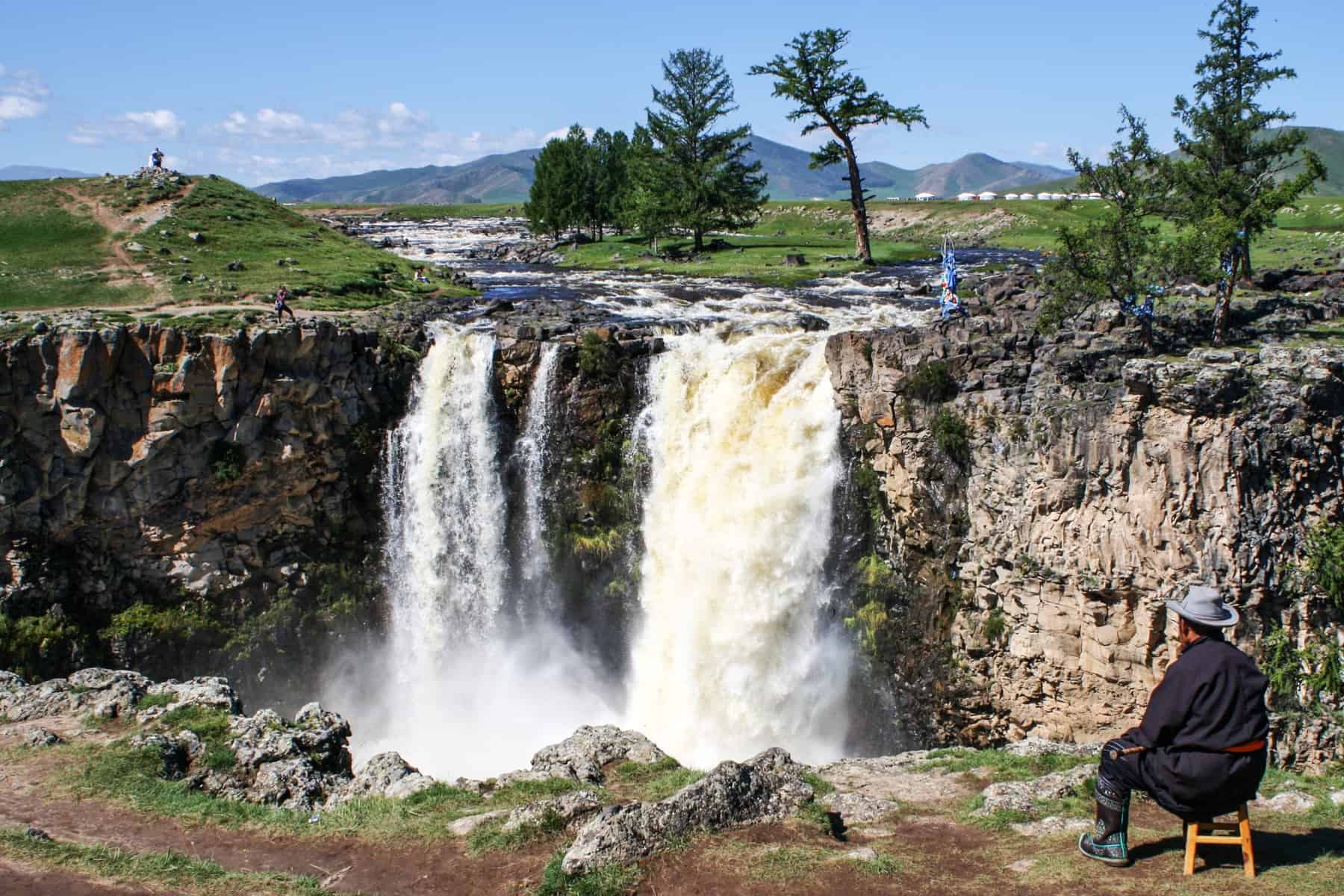
A Mongolian man sits in a chair peacefully enjoying the backdrop of the Orkhon Valley Waterfalls in Mongolia.
Fully clothed, of course, we took a short hike through the lush green forest to visit the source of the hot springs. When you come across your first sighting of trees after two weeks of barren land, you begin to appreciate such incredible surroundings.
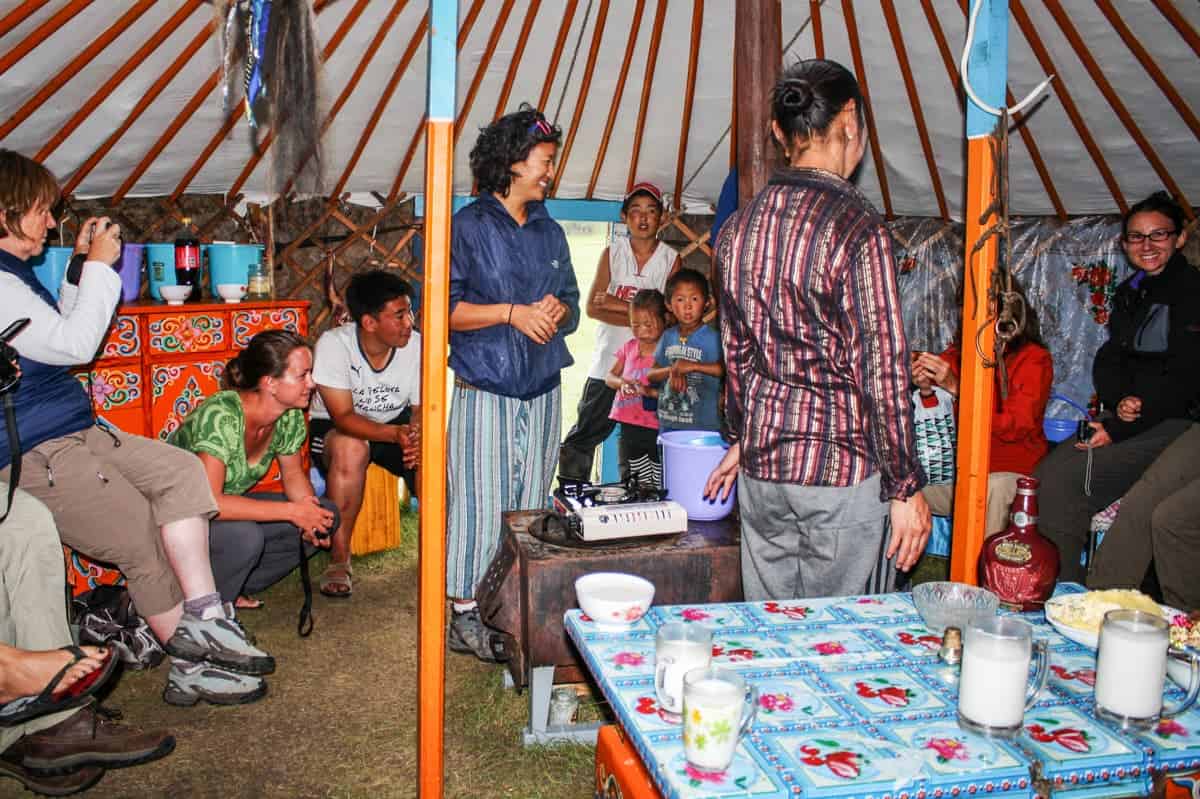
Visiting a local nomadic family in their ger in Mongolia
As we had two Mongolian guides with us (invaluable support in a country where very little or no English is spoken or understood), we could visit a Mongolian ger and a local family to learn about nomadic life.
It wasn’t a tourist set up, but a traditional, local family who lived on an isolated patch of land in the valley. We tried their dairy products (their source of income), including fermented mare’s milk, curd and butter, before learning about ger rules and traditions and asking each other many questions!
READ MORE: Visiting a Mongolian Ger – Understanding the Nomadic Culture of Mongolia
We needed a quick stop in the nearby town of Tsetserleg to stock up on food supplies. It was a market day with an electric atmosphere. I get a high from moments when you don’t know where you are and what to do, and where you have to work hard to communicate and negotiate.
We later visited the most important Monastery in the country, Erdene Zuu Monastery in Kharkhorin – the first Buddhist monastery in Mongolia that had up to 100 temples and 1,000 monks before the purges in 1937. Only three temples remained, alongside several statues and other items.
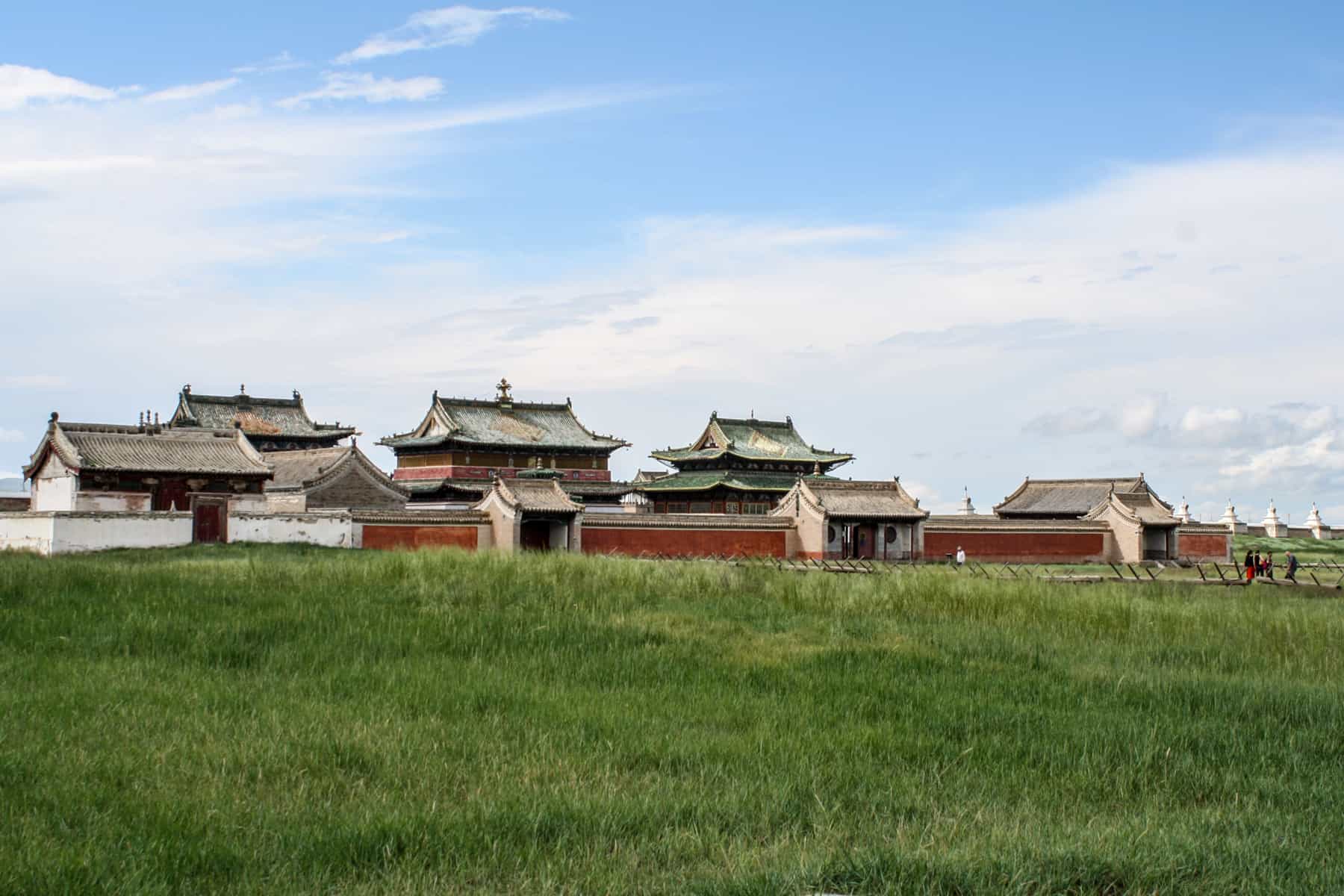
The exterior walls of the Erdene Zuu Monastery, Mongolia
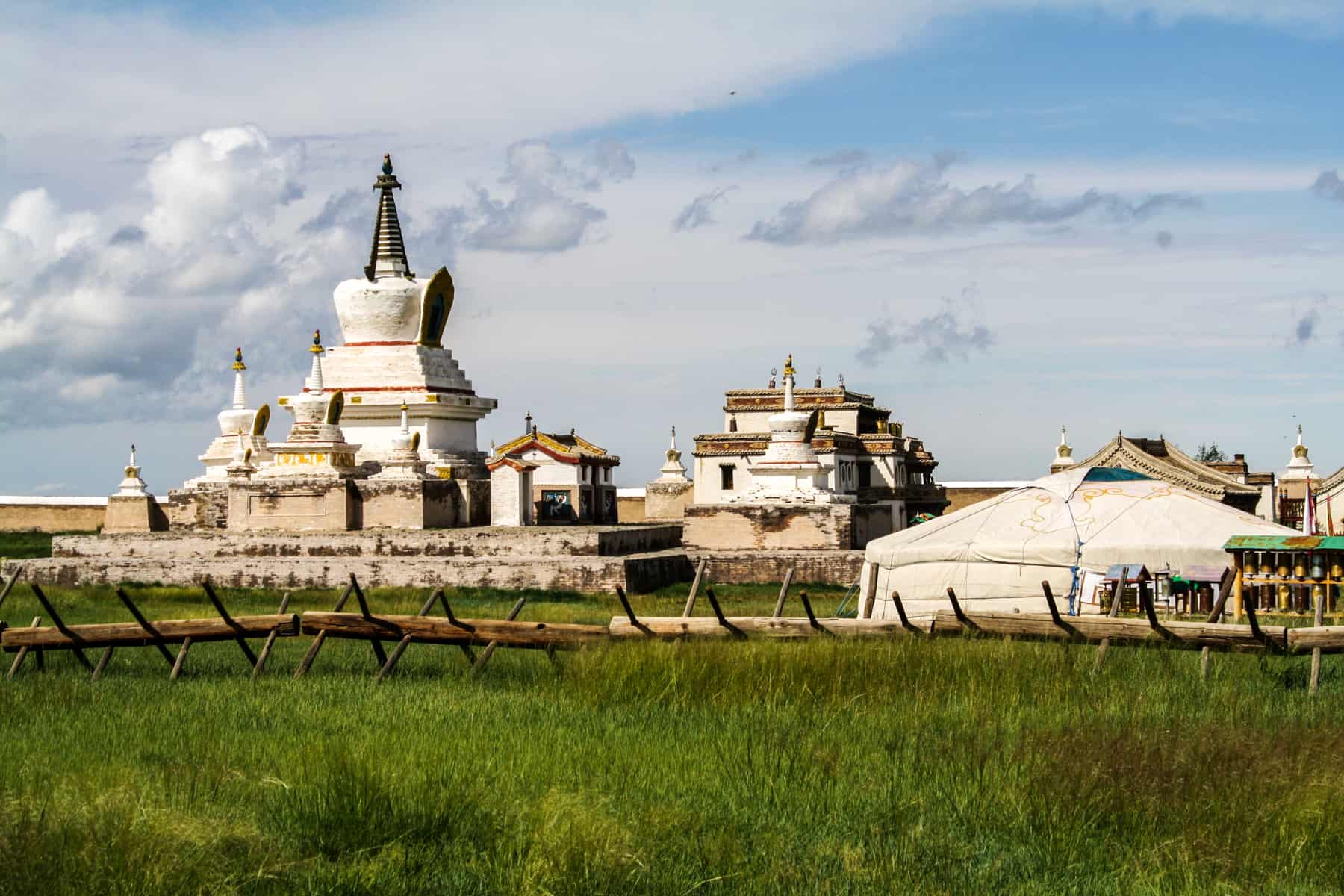
Part of the temple complex inside Mongolia’s Erdene Zuu Monastery
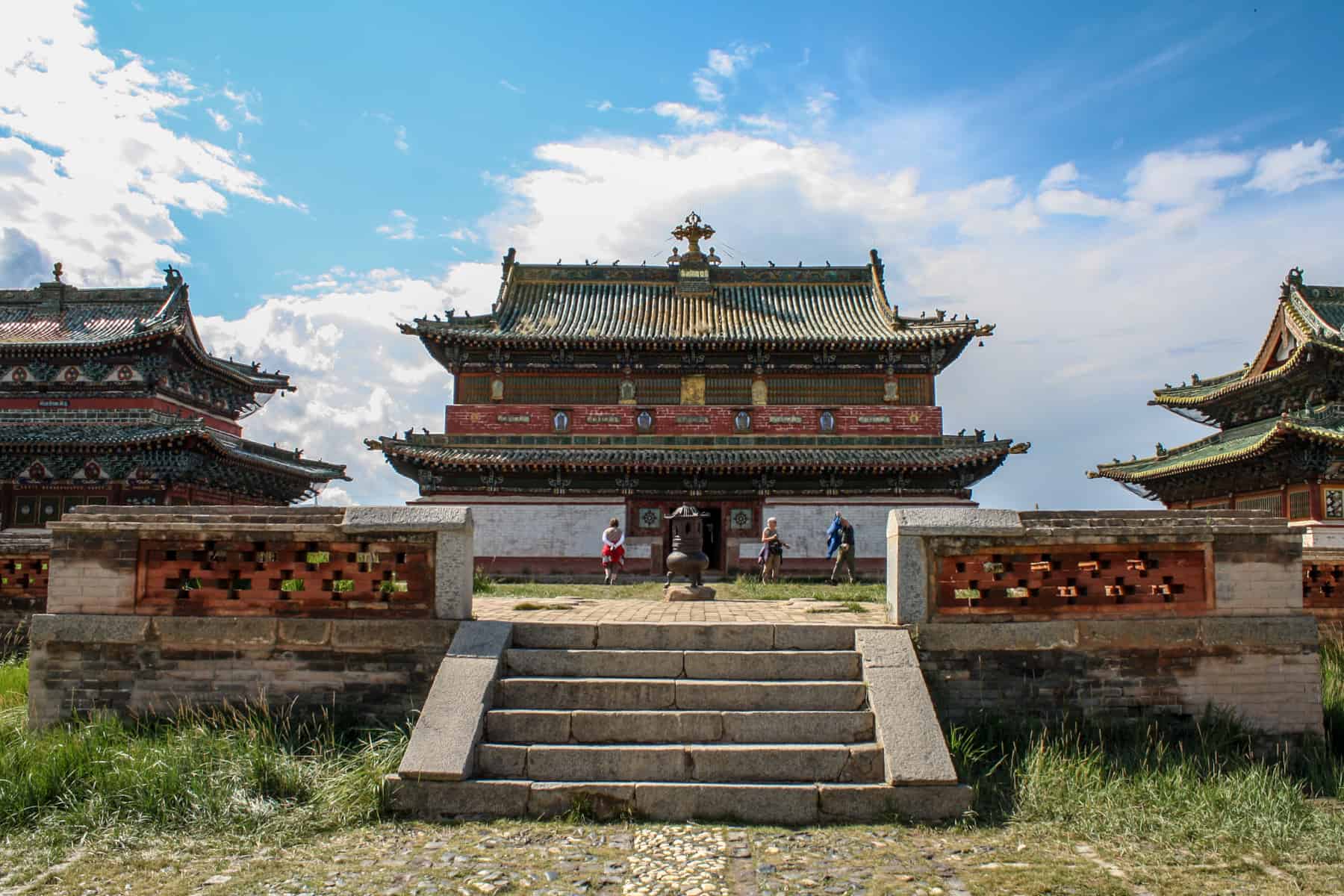
The red, gold and green temple structures at Erdene Zuu Monastery
A visit to the museum we camped next to – the Kultigen Monument, housing artefacts from the Turkish empire – set us on the way to the nearby Ugii Lake, where we would relax all day and camp for one night.
Ugii lake emits a calming atmosphere and invites you to traverse it slowly. While it would take almost a day to walk around, it’s a great place to unwind and reflect. I count this as one of my most favourite spots in all of Mongolia.
Our camping set-up beside Ugii Lake in Mongolia
We arrived at Hustain National Park in the afternoon to settle into a ger camp. This National Park is known for the rare Przewalski’s horse, unique to Mongolia. When you finally track down a small group, it’s still hard to see their beauty up close as you can’t get that close to them.
Still, we got to meet the ‘Best Mongolian Folk Band in Mongolia’ called Domog in the evening after a fantastic show where they performed rock-style tunes via the famed throat singing. I guess it is the equivalent of meeting Westlife in Ireland. Seriously.
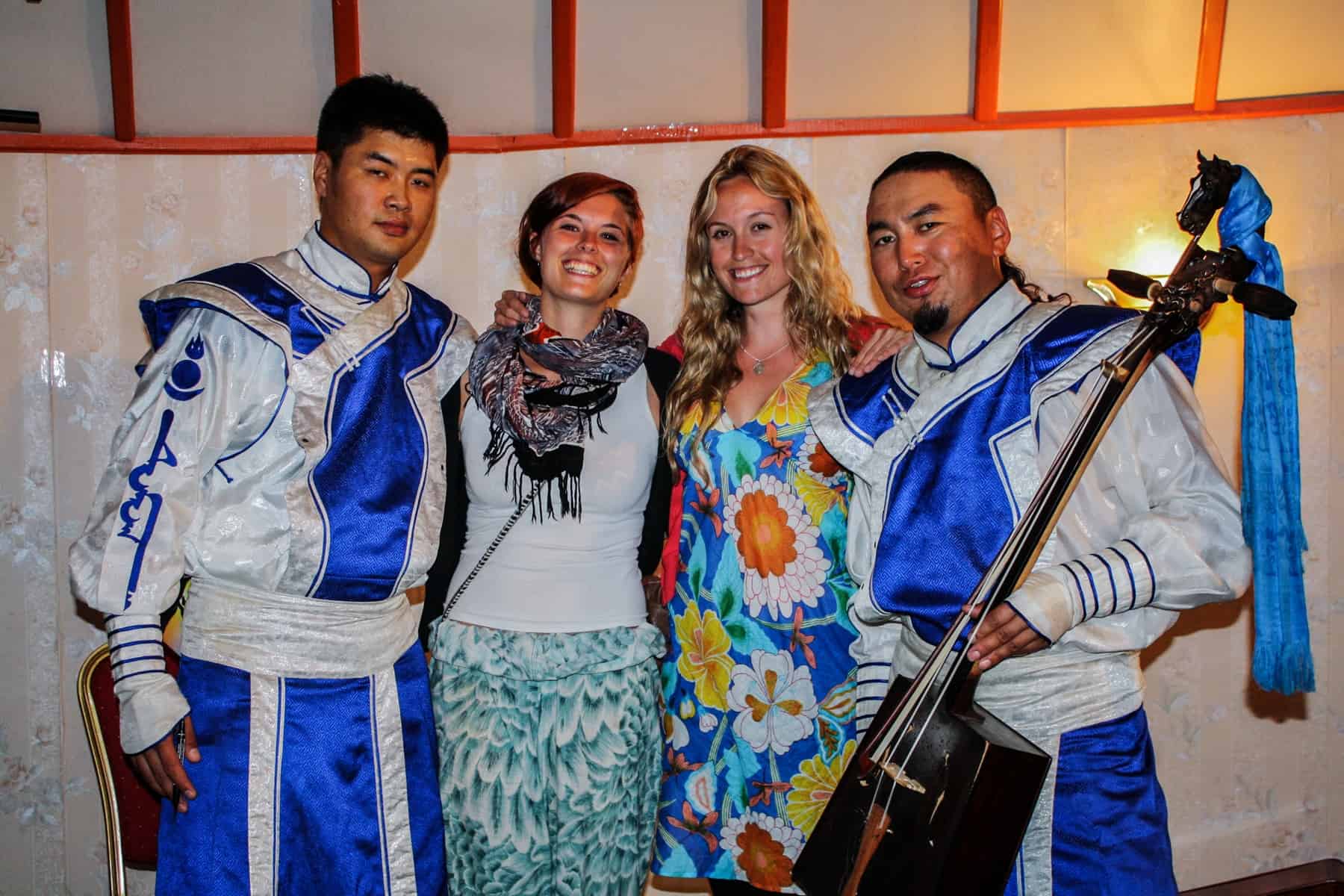
Meeting Damog, the Best Mongolian Folk Band in Mongolia
We had to journey back through the crazy, construction-overloaded, traffic-ridden Ulaanbaatar to get to Terelj National Park and the last ger camp of the trip (we were due to bush camp the weather put a stop to that).
It’s incredible how a few hours down the road from the capital brings you to some of the country’s most spectacular landscapes.
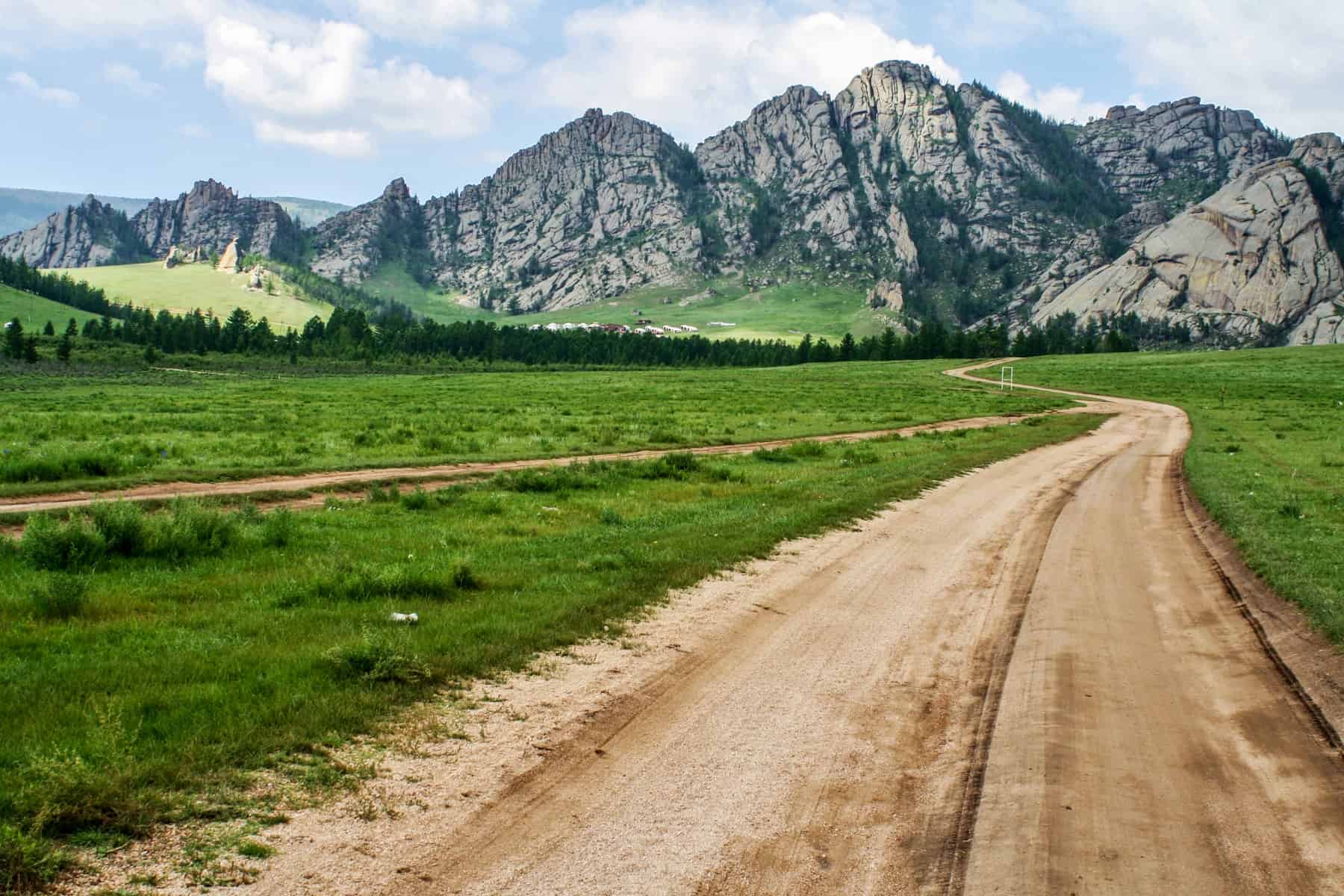
The road that leads to the heart of Terelj National Park, Mongolia
If you love walking and hiking, you will love Terelj National Park. Here you can wander for hours, hike to a Monastery and horse ride through the forests and rocky hilltops. Make sure you check out ‘Turtle Rock’ too. You may think it looks like something else from a certain angle!
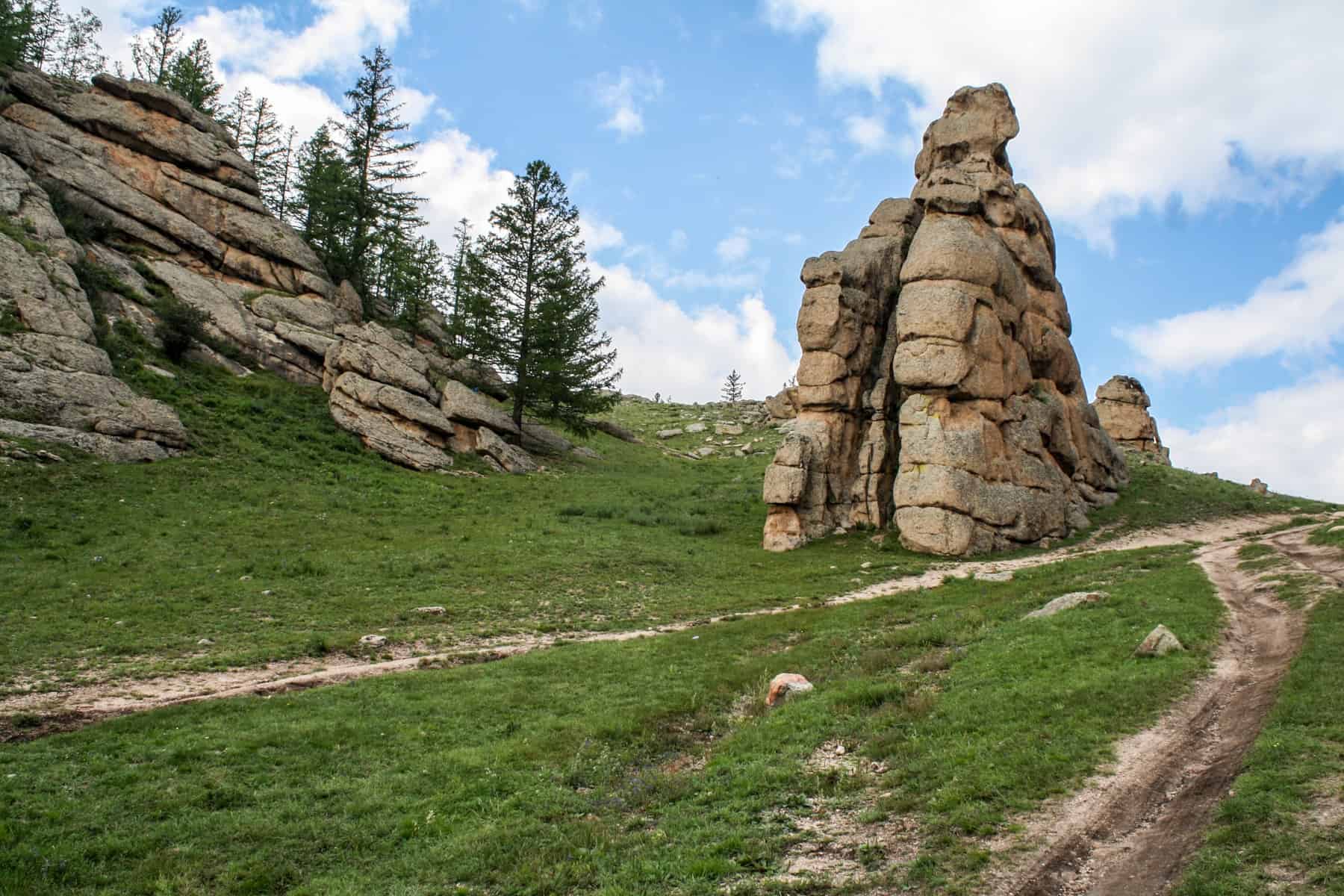
One of the layered rock formations in Terelj National Park in Mongolia
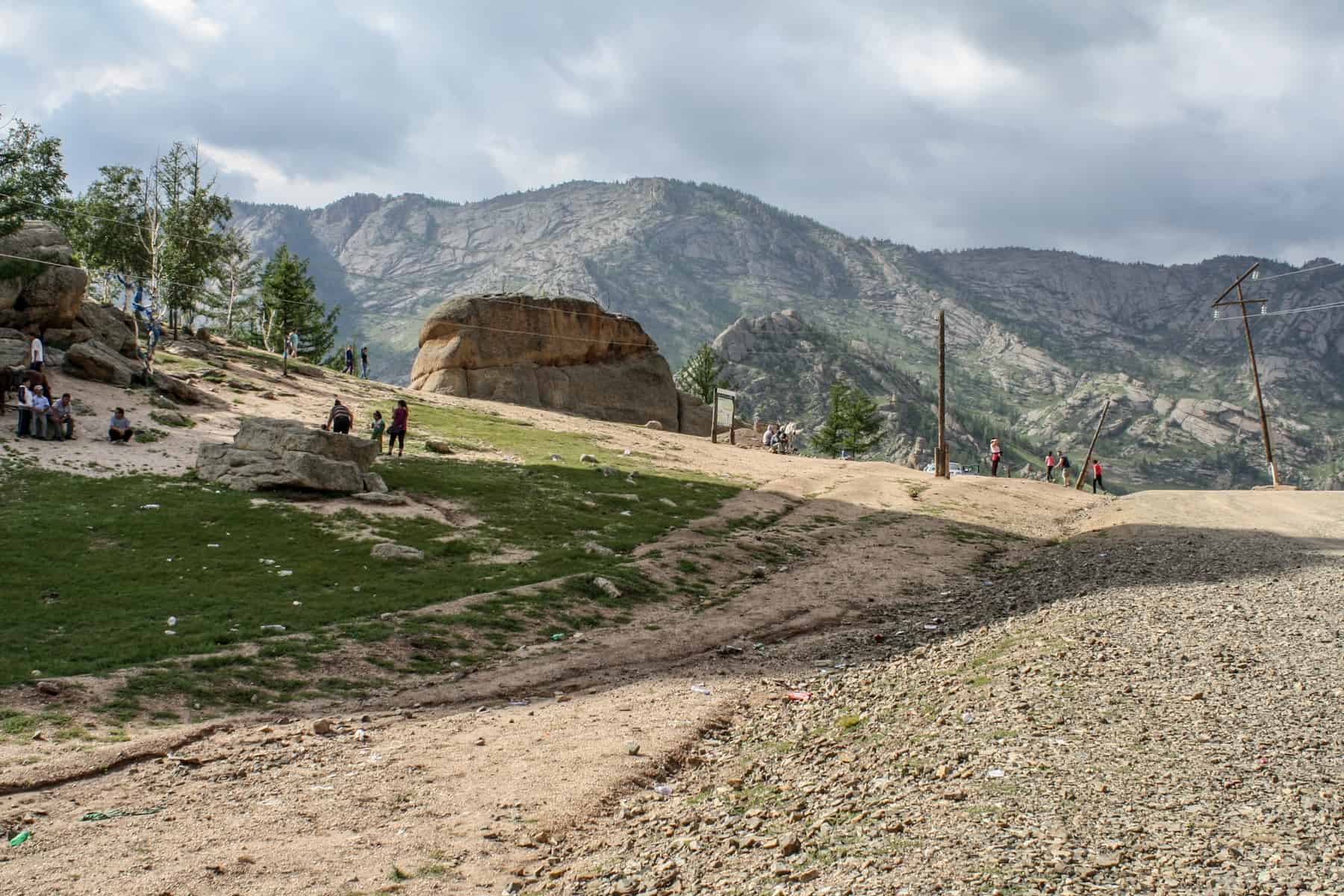
Visiting Turtle Rock in Terelj National Park Mongolia, named for its shape similar to the animal
Nothing beats the end of the wilderness journey than a visit to the giant 40-metre tall silver Ghengis Khan statue just outside of Ulaanbaatar on the banks of the Tuul River. Legend has it that it was at this spot that Ghengis Khan found his golden whip. Anyhow, a bit of a pilgrimage spot for locals, it was fascinating (if not a bit odd and imposing in the same way a colossal silver statue of Hitler in Germany would probably evoke the same feeling).
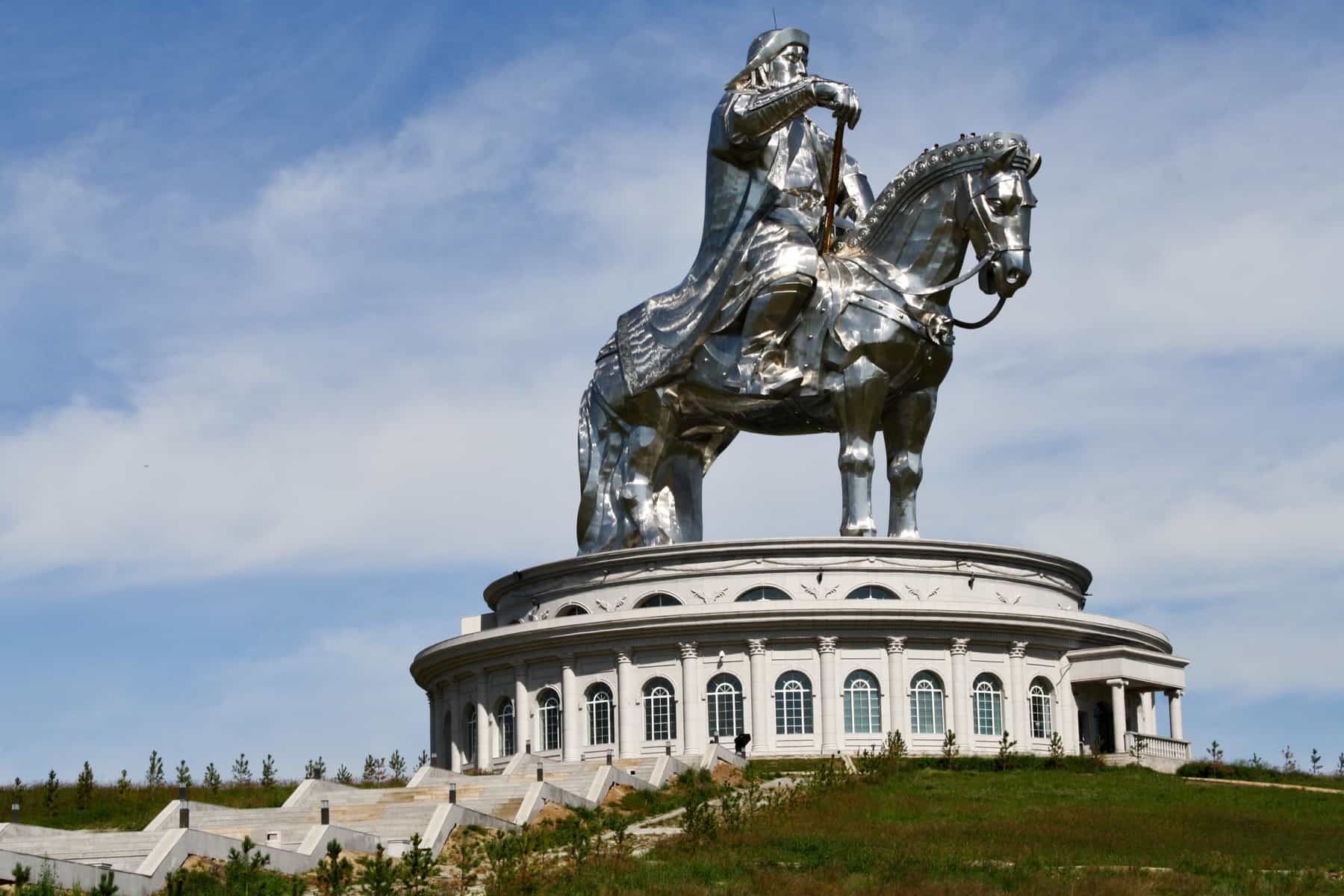
40-metre tall silver Ghengis Khan statue just outside of Ulaanbaatar, Mongolia
Back in Ulaanbaatar, I turned my hostel room into an office and distracted myself with a pizza slice, cake and coffee at Wendy’s Bakery – worth a visit alongside the State Department Store, which is right next to the hostel area. It’s an excellent chance to rest up after adventure through the vast landscapes of Mongolia.
The Dragoman overland truck is what we called home, except we didn’t sleep on it overnight. Instead, we went wild camping and every night, checking into a hotel once when the rains were too much to settle a tent comfortably.
The Outside
The truck’s exterior has lots of compartments – storage for luggage and tents and a clean water supply, mealtime equipment and food supplies. It’s a travelling transformer, and everyone has to lend a hand setting up and packing down for breakfast, lunch and dinner.
If you have no sense of camaraderie or hate getting dirty, then this isn’t the kind of adventure trip for you. I embraced it and loved every minute of ‘roughing it’.
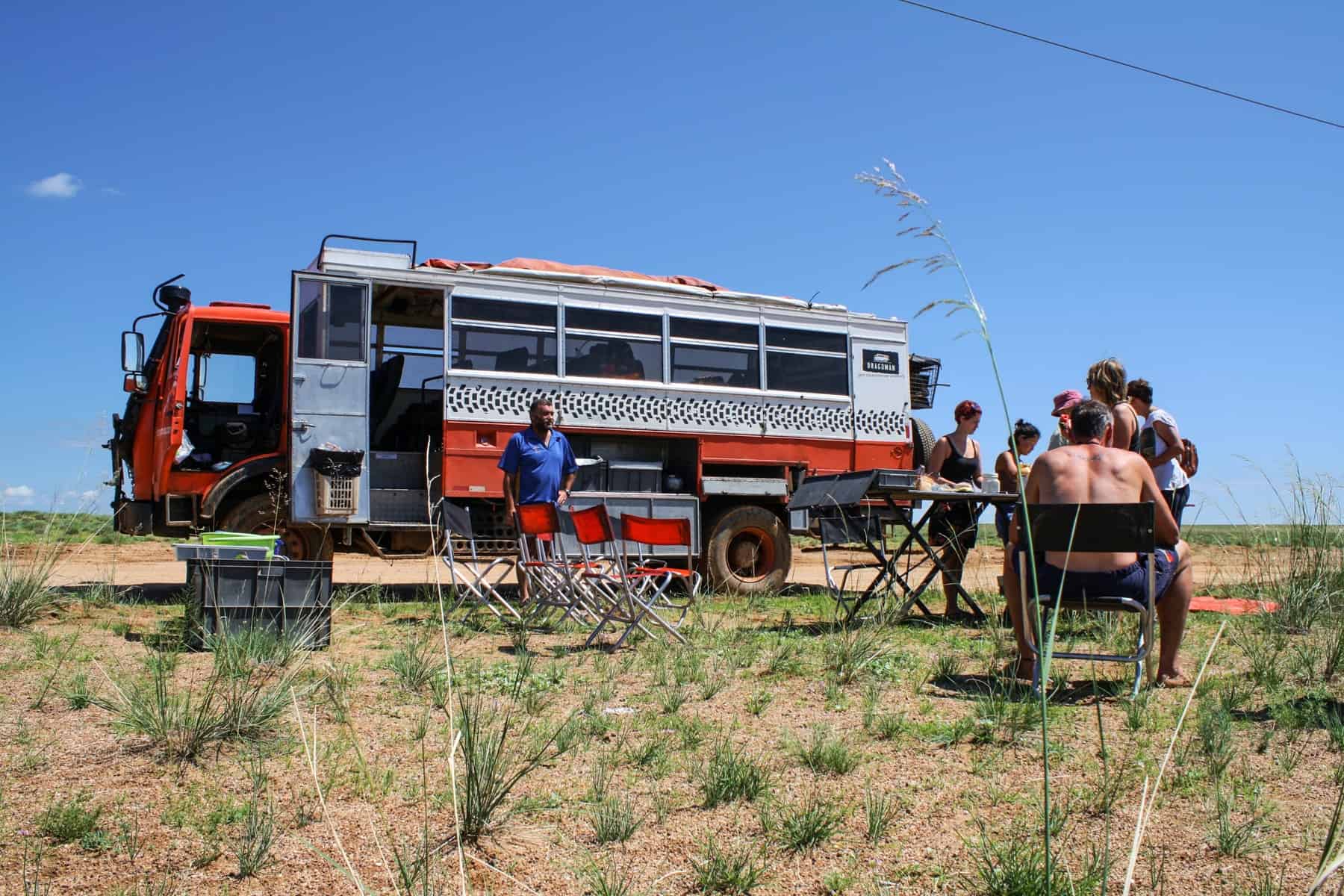
Travel in Mongolia was mostly about camping.
Twenty-three seats, a fridge, a safe, a bookshelf, prominent speakers and a place to recharge equipment, this is where we spend hours at a time, or what could end up being an entire day, traversing the landscape. We filled it with our belongings like a messy bedroom and made it cosy.
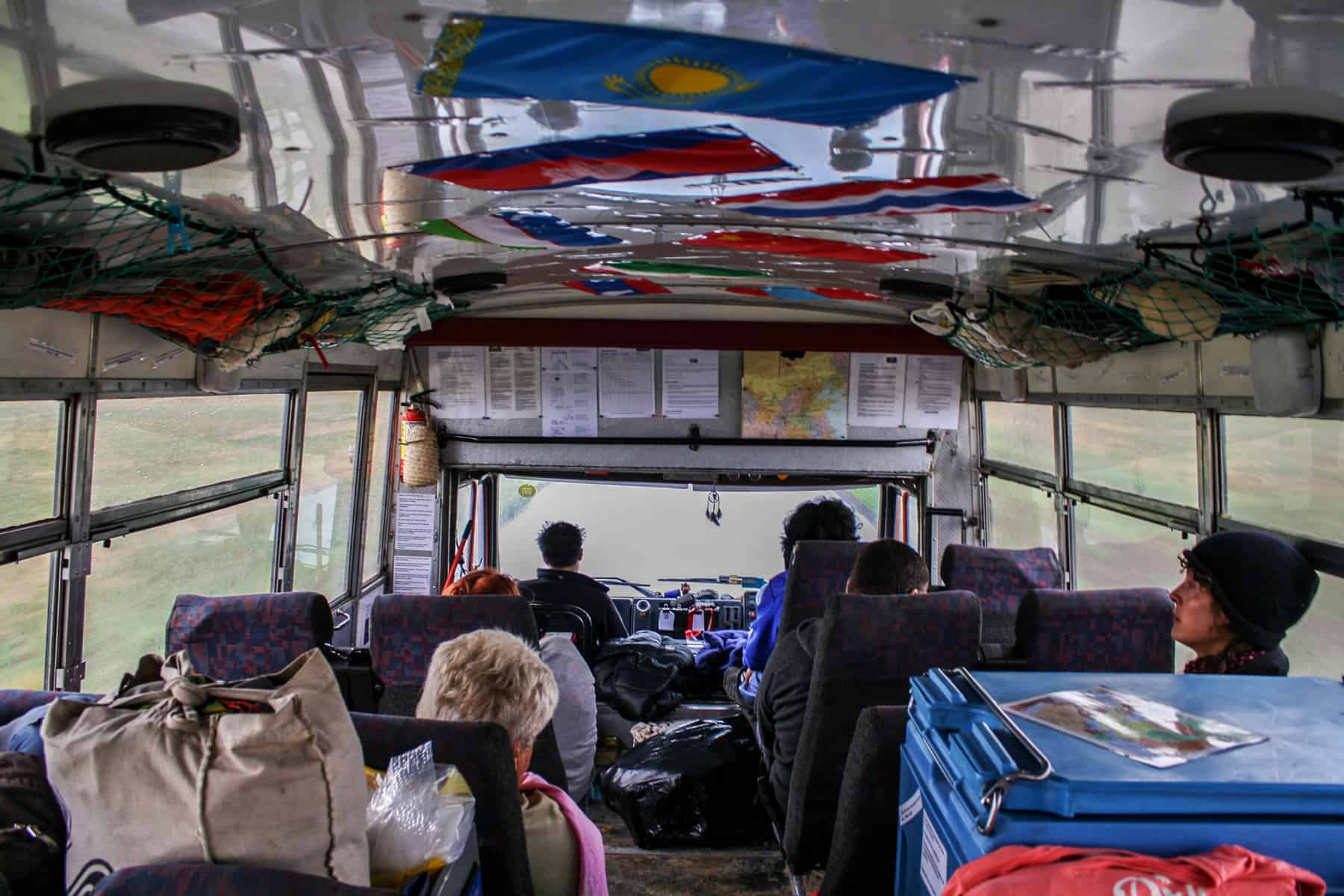
Inside the Overlanding truck on the journey travelling Mongolia
Along the Way
The two drivers are the mechanics, the navigators and the troubleshooters. Everything about the truck, from where it goes and how it gets there, hangs on their decision making, alongside our Mongolian guide who knew the land better than anyone else and could speak the language when we needed to call upon locals for help.
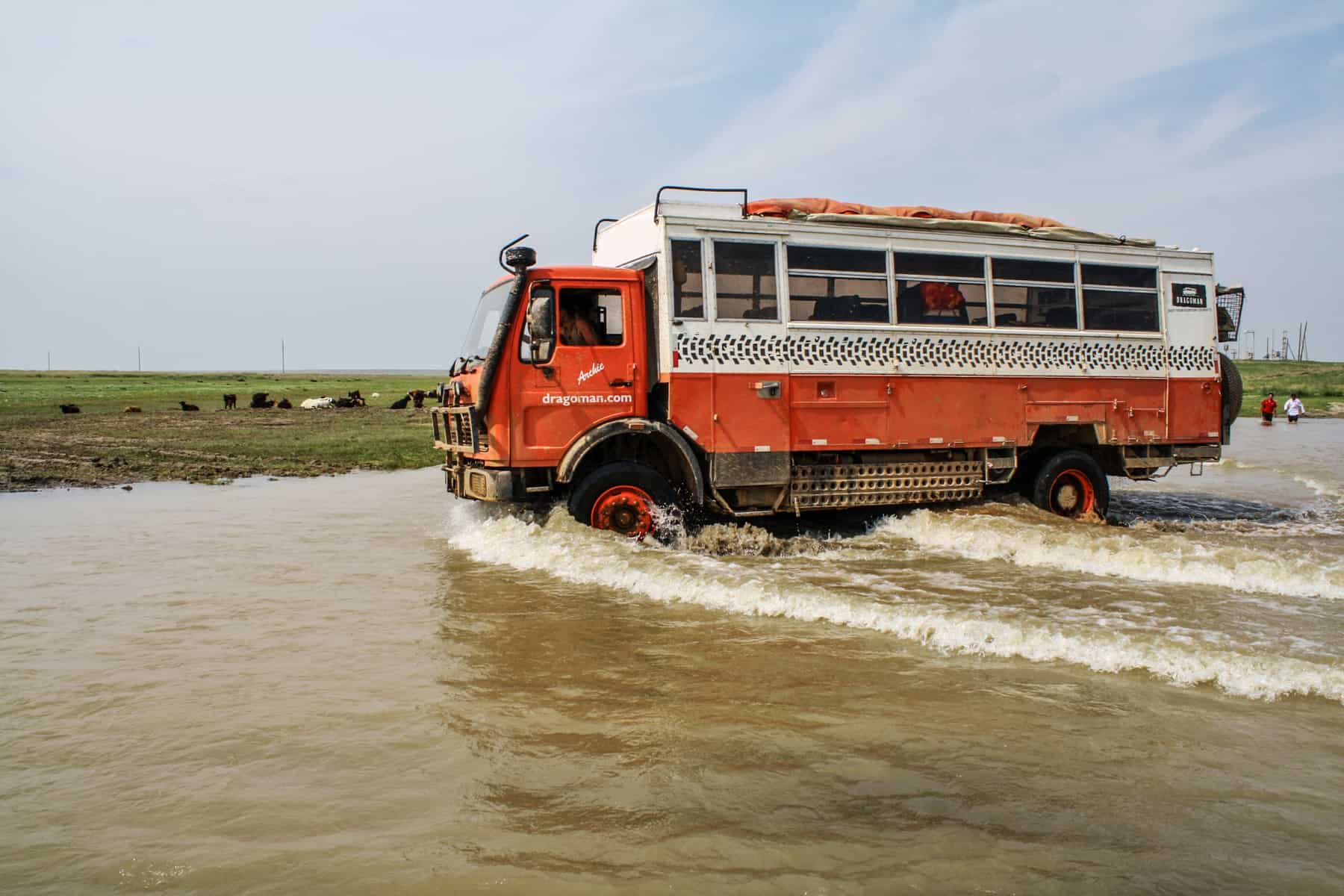
Overlanding in Mongolia was a real adventure.
Although the drivers would jump out to check the road, walking far ahead to determine the best track to take or check waterlogged areas (often by getting in the water) to limit the truck’s chances of getting bogged. We often stopped to help locals whose cars were stuck, knowing that karma would need to be returned one day.
The Realities of Rural Travel in Mongolia
“Ok, guys, you have to get off. It’s not looking good.” This phrase, accompanied by the engine’s low hum and strain as it finally gave up, became a regular occurrence during the three weeks I spent in Mongolia. Getting dirty in Mongolia is a given, but I never thought on my travels that I would push a truck out of thick, stodgy mud, build a road complete with a dam or wade knee-deep through a river to get to the other side.
In Mongolia, aside from the small handful of roads available, you will take the path less travelled, one that hasn’t been used for days or worn in by other vehicles for an easy pass. You could call it bad luck, or you could call it a reality, but travel comes with its challenges and getting stuck in Mongolia is by far the most common. While I wasn’t expecting substantial bogging incidents on this trip, I began to embrace them when they did happen. After all, the locals have to face these situations regularly. It became a part of what Mongolia is and what it means to cross her lands.
The drivers of the truck were responsible for assessing each situation when it arose. They were the first to get dirty, walk through the water and determine the outcome. At times it put you on edge, wondering how long you would be stuck somewhere with no one passing by for hours. At other times it merely meant us having to walk a short distance to lighten the truck.
Either way, the result was a massive whoop and roar for our truck, Archie, when he made it through. It felt good, and we then knew the next stage of the journey could begin. These are the times I’ll always remember.
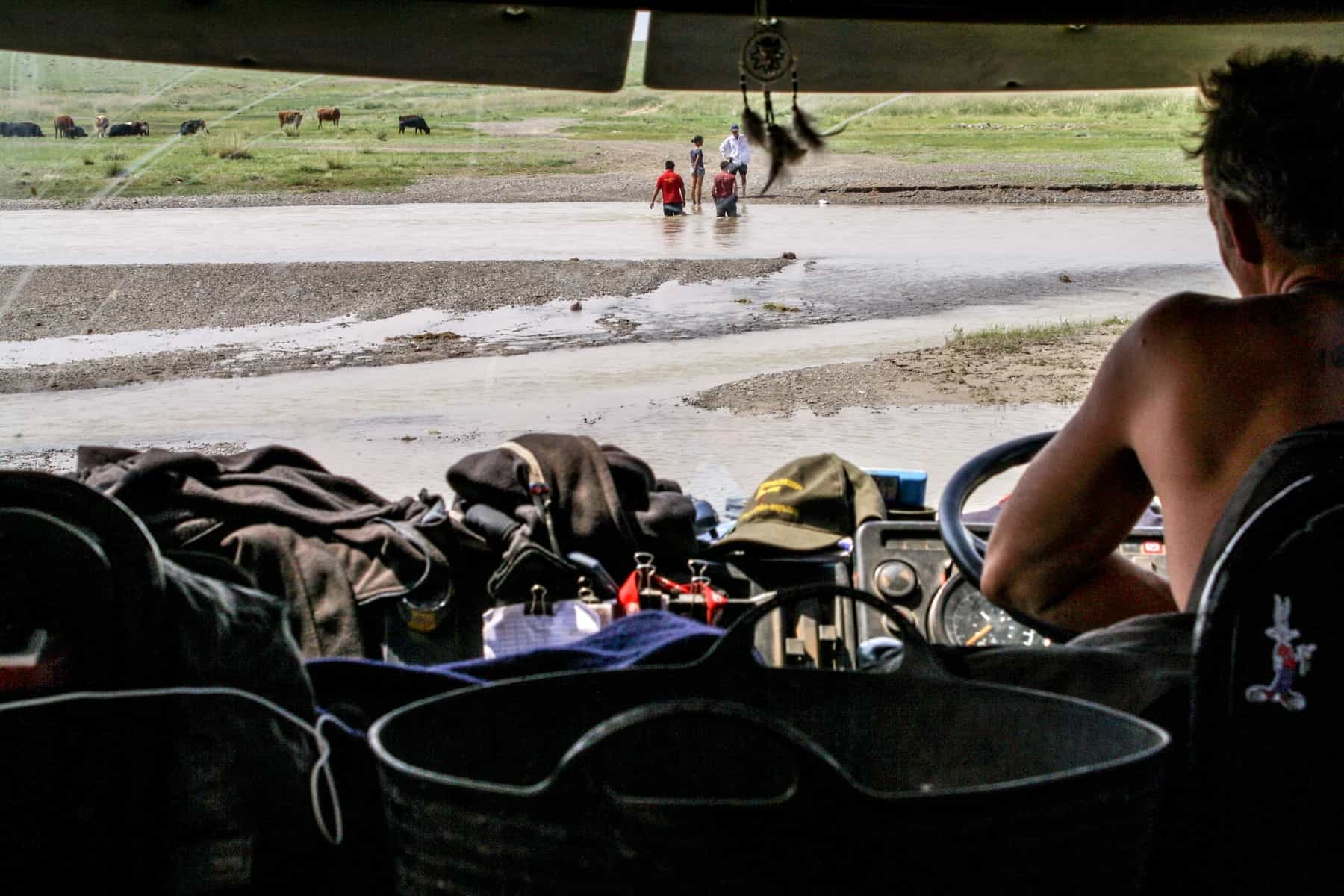
Our group helps find a track in the water for the truck to pass in Mongolia.
It had been raining on and off for a few days, mainly in short spurts in the evenings, and we were bumping along the wet dirt tracks just fine. When the truck stopped, and we saw that two pools of water had filled two road tracks, we knew a bogging incident was imminent. The drivers walked, pondered and walked through the water. Could we drive through it without getting stuck?
The usual scenario rested on two possibilities – drive through it or find hard enough ground around it. Except that this time it was different. We were told: “We need to empty this road of water and then let the ground dry out so we can cross over it.”
Cue the mad dash to empty our camping gear to find our plastic washing-up bowls and any other form of a plastic container to begin the removal process. The ladies rolled up their shorts to get right in there and scoop out the water as the men started digging to create a road. Everyone built a dam by hand on each side of the tyre track grooves so that the emptied water wouldn’t flow back in.
It was hard work, but we became a team, a great team. The sun was shining that day which meant we only had to wait a couple of hours while the heat dried out our creation. We ate, we played, we sang, and we marvelled at what resourceful people we were. It was a scary moment when Archie made his move to cross our road (our beautifully crafted highway that could be crushed in seconds and need rebuilding), but he made it in one unbeaten run, and our handmade route was left to the land and in nature’s control.
Happening upon grassy, muddy areas is sporadic. You can never tell exactly how hard the ground is beneath it. After bouts of rain, the ground softens, and even though there were times when the truck had to work a little harder, it made it through.
We had just had a fantastic afternoon checking out a local Nadaam festival and were in high spirits, which we needed knowing that we would be driving for the rest of the day. Except we didn’t – we were soon stuck in thick, sticky mud, and no amount of pushing and revving was going to change it.
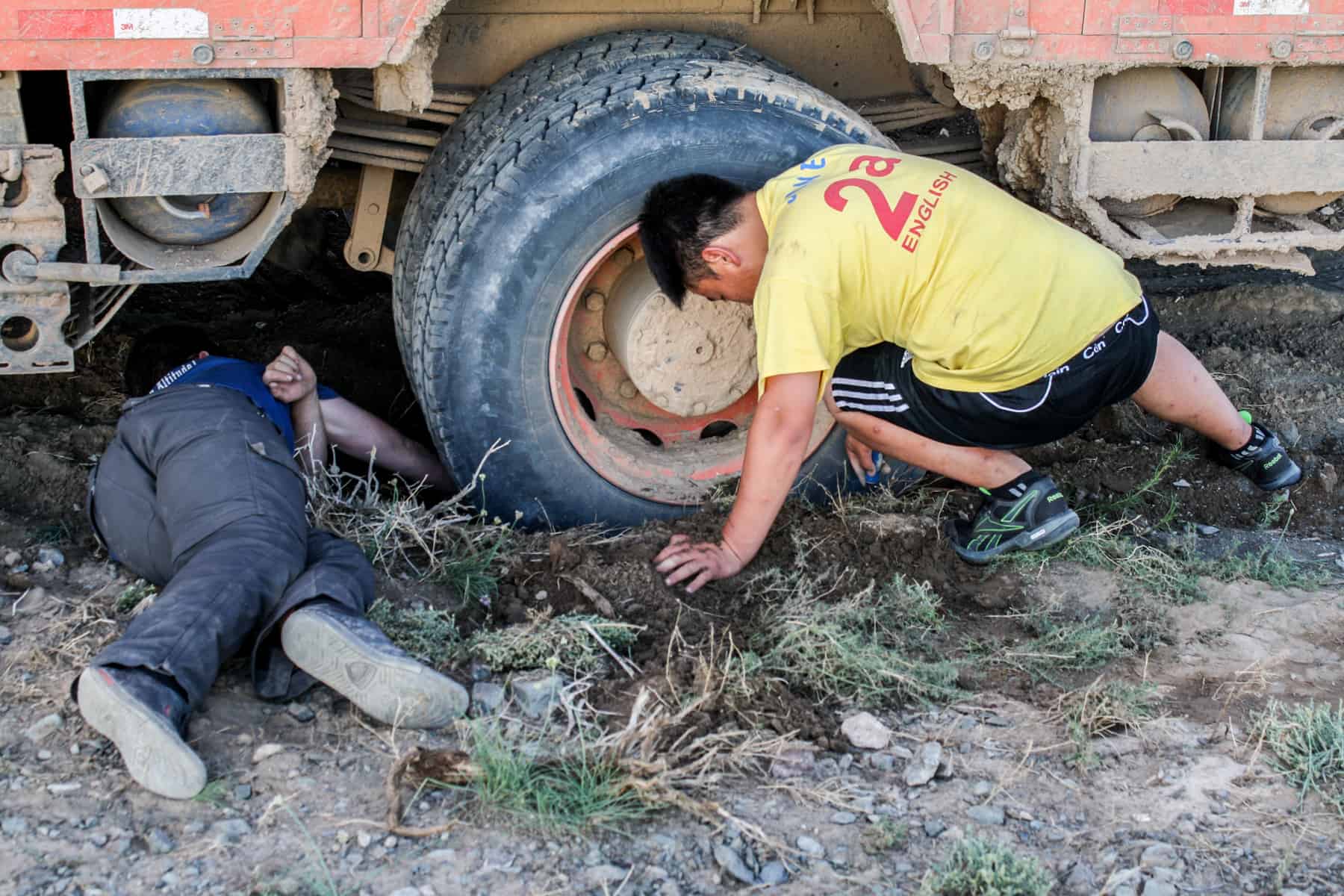
Digging out the truck wheels from the deep, wet mud in Mongolia
Our Mongolian guide walked to the nearest ger to get help, and the locals later returned on a motorbike to check out the situation. The whole family came out – we regularly became a source of fascination or amusement en route through the country. However, they kindly decided to use their big, industrial tractor to help pull the truck out of the mud – that too got stuck.
With two vehicles out of action and night starting to fall, we decided to set up camp on a drier patch of land nearby, and the drivers worked relentlessly with the locals throughout the evening. We got bogged at 5 pm, and it took until midnight for the truck to be pulled from sludge. It was a day wasted, but another example of how unpredictable travelling here can be.
When the truck stops dead at a deep area of water, you know the situation isn’t going to be resolved quickly. Can a truck this size pass through a river without sinking or getting stuck? Although we enjoyed paddling in the freshwater, we didn’t know whether we could have to completely re-route to get around it and lose more time.
The conclusion was that there was a distinct lack of knowledge about alternative roads around the river, and somehow we would have to find a way to get through it. With a small truck already stuck right in the middle, it was a scary prospect.
The drivers identified the most shallow and hard ground area in the water to pass, although we couldn’t be on the truck, unfortunately. You can imagine the chaos – a group of locals trying to rescue their vehicle and 20 non-locals trying to navigate through the water, knee-deep and screeching, scared of falling in.
My heart skipped a beat watching our truck splash through the water and wondering whether it would stop dead in its tracks and slowly swim in a sea of mud, taking all our belongings with it. But Archie made it, and this time, he got the biggest cheer. And a giant sigh of relief.
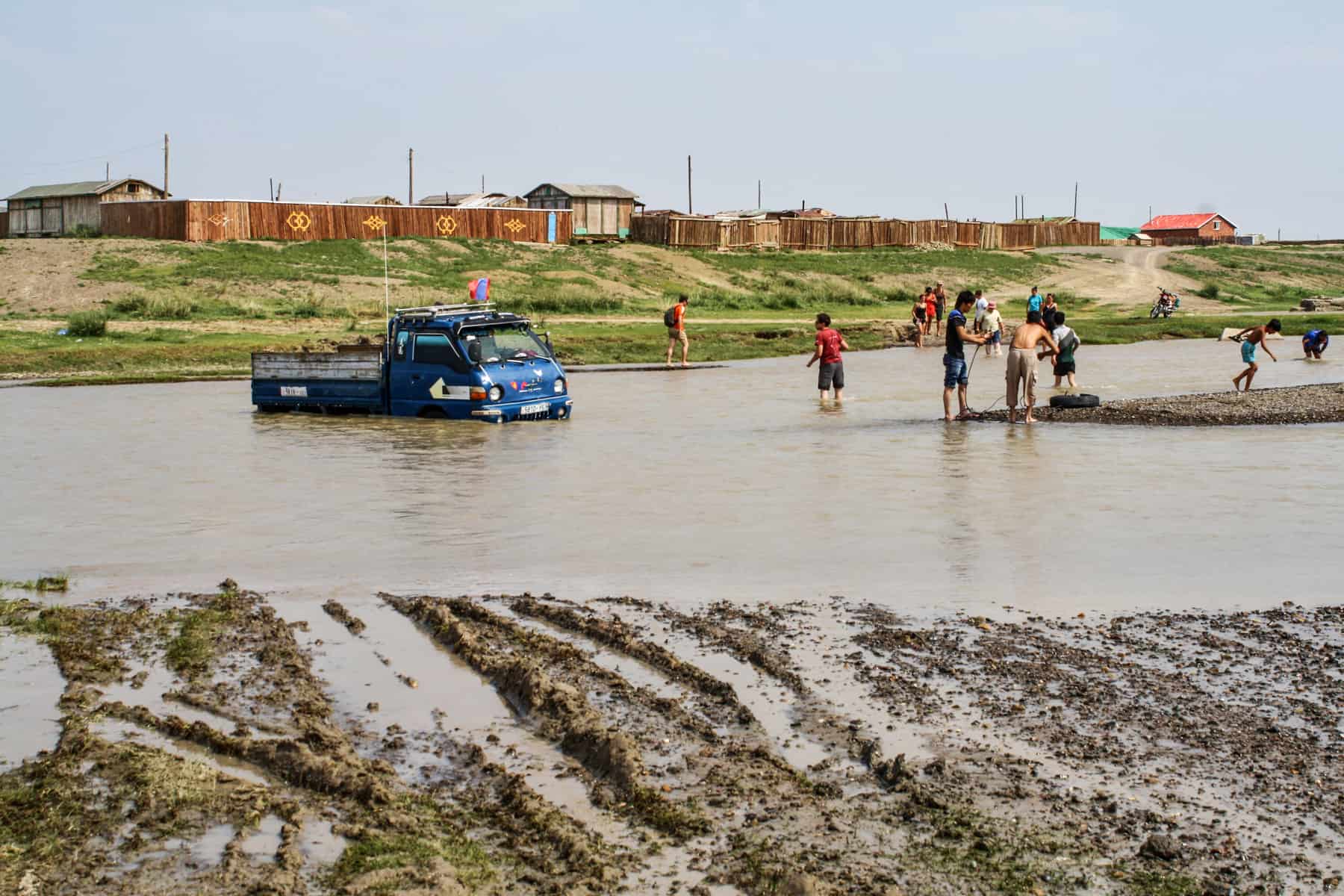
Typical river crossings in Mongolia and helping out locals who were also stuck
With unpredictable weather conditions, a challenging landscape to navigate and a trip mostly comprised of wild camping, packing for Mongolia requires some planning. In short, you need to factor in the following:
- Items of clothing that you don’t mind getting dirty and wholly ruined.
- Clothing layers for the constant switch of hot and cold climates – thermals to moisture-wicking and waterproof items.
- Sun protection and bug spray for mosquitos and sandflies.
- All medications you need as you’ll often be far from any significant stores or aid.
- Snacks from home as the food variation can get very repetitive.
For a more extensive overview, read my full Mongolia Packing List .
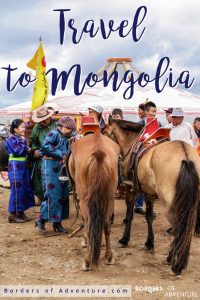
About Becki
Becki Enright is a British Travel Press Award-winning writer whose work focuses on changing perceptions about misunderstood aspects of destinations. Her writing combines storytelling with insight into the social, historical, political and economic factors that shape the country or place in relation to tourism. Becki has appeared live on Sky News and CNN and has contributed to high profile media including National Geographic, Time.com, Guardian online, New York Times, Grazia and Buzzfeed.
- Article Archives
- Work with me
- Privacy Policy

61 Useful Tips for Travelling to Mongolia (Backpacker’s Guide)
March 28, 2020.
Everything you need to know about travelling in Mongolia. Where to visit, how to get around, safety, and more are covered in this comprehensive travel guide.
Mongolia is one of my favourite countries I’ve ever visited. Known as the “land of the blue sky”, Mongolia is home to an incredible nomadic culture and gorgeous natural beauty. It’s also one of the least visited countries in the world, making it a great off-the-beaten-path backpacking destination.
I spent over three weeks backpacking around Mongolia and learned a lot about the best ways to travel around it. I can’t wait to get back soon and see more of it.
In this post, I’ll go over everything you need to know about travelling in Mongolia based on my experience.
After reading this guide, you’ll be ready to head out and see the rugged streets of Ulaanbaatar, the singing sand dunes of the Gobi Desert, and the endless steppe of the Orkhon Valley.
- 1 Backpacking Mongolia
- 2 Visas for travelling to Mongolia
- 3 Safety in Mongolia
- 4 Money in Mongolia
- 5 Communication in Mongolia
- 6 Getting to Mongolia
- 7 People & Culture of Mongolia
- 8 Where to visit in Mongolia
- 9 Tours in Mongolia
- 10 Food in Mongolia
- 11 Accommodation in Mongolia
- 12 Transportation in Mongolia
- 13 Mongolia Travel Itineraries
- 14 When to visit Mongolia
- 15 Travel Costs in Mongolia
- 16 Internet & SIM Cards in Mongolia
- 17 Solo Travel in Mongolia
- 18 Female Travel in Mongolia
- 19 Travelling in Mongolia Wrap-Up
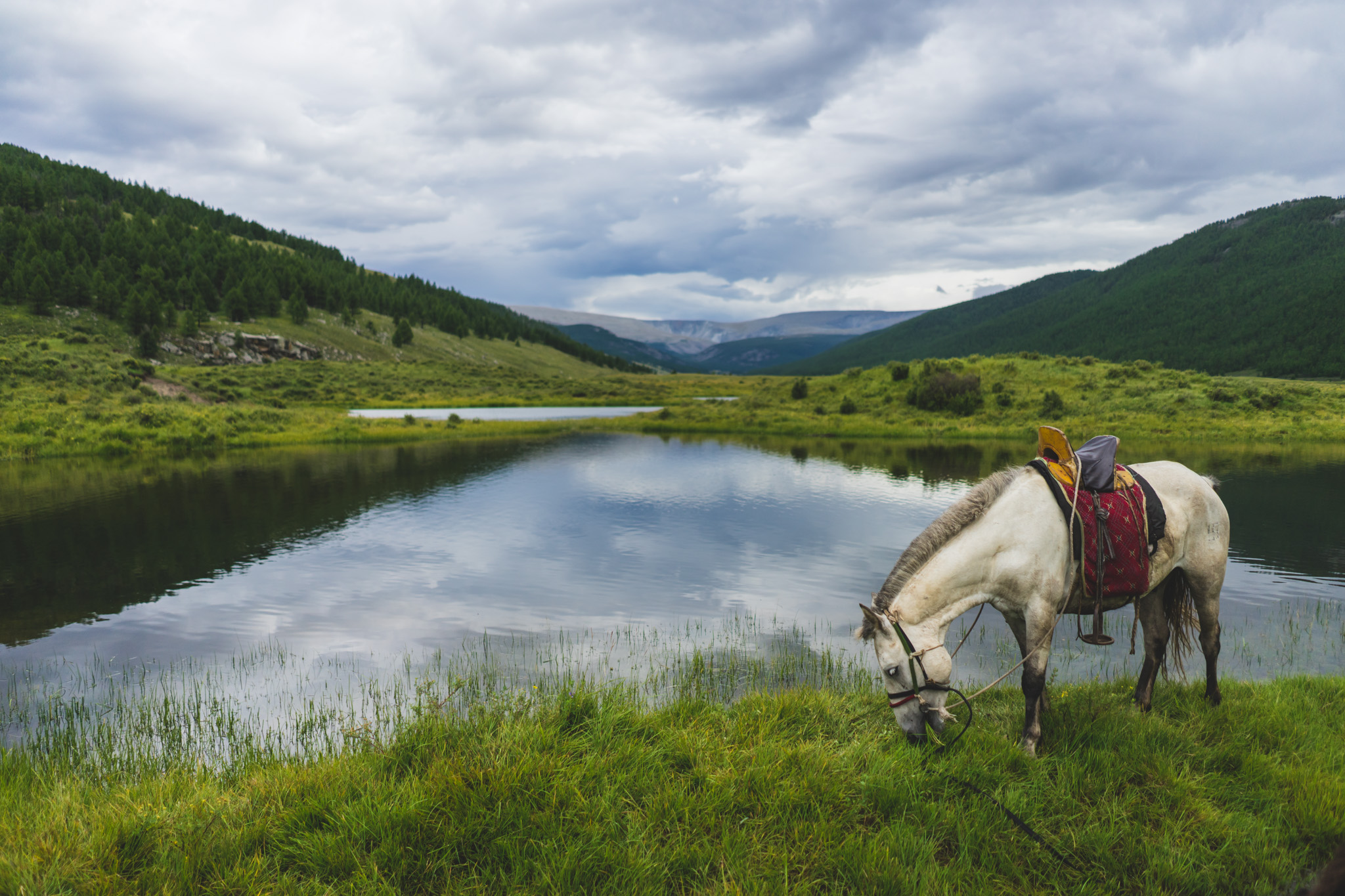
Backpacking Mongolia
Mongolia is the perfect backpacking destination. It’s got a ton of unique landscapes including the Gobi Desert to the Altai Mountains. Mongolians are very friendly and want to show tourists a good time. It’s an affordable country to travel in, especially if you’re willing to rough it a bit.
I definitely think more people need to add backpacking Mongolia to their bucket list. It’s a country like no other and is a must-see if you’re planning a long trip to Asia.
Visas for travelling to Mongolia
1 – Visa-free access to Mongolia: People from certain countries are lucky enough to get visa-free access to enter Mongolia by air or land! Visa-free length varies by passport, here is the current list:
90 days visa-free : Argentina, Belarus, Brazil, Chile, Kazakhstan, Kyrgyzstan, Macao, Serbia, Ukraine (with invitation), USA 30 days visa-free : Canada, Cuba, Germany, Israel, Japan, Laos, Malaysia, Russia, Singapore, Thailand, Turkey, Uruguay 21 days visa-free : Philippines 14 days visa-free : Hong Kong
2 – Mongolia visa at an embassy: If you’re not on the above list of countries, you should apply for your Mongolia visa at your nearest Mongolia embassy.
To apply for a tourist visa, you’ll need:
- Completed application form
- 3.5×4.5cm photo
- Copy of hotel booking in Mongolia
- Copy of flight/train tickets
For the most up-to-date requirements, contact the embassy that you wish to apply at.

3 – It is no longer possible to extend your visa in Mongolia: While you used to be able to apply for a 30-day visa extension in Ulaanbaatar, as of 2019 this is no longer the case.
Travellers have been reporting that they are told to simply pay a $4 per day overstay fee instead, as long as the overstay is less than 58 days. If you overstay longer than 58 days, you will be deported.
Safety in Mongolia
4 – Is it safe to travel to Mongolia?: I’d say that Mongolia is a pretty safe country to visit. According to the Canadian government (which is usually pretty conservative with travel advisories), you should simply exercise normal precautions while visiting Mongolia.
Be careful around drunk people. Unfortunately, certain people can become quite aggressive, especially if you’re a foreign dude talking to a Mongolian girl. Avoid walking around Ulaanbaatar in the dark – it’s better to take a taxi.
Carry some medical supplies if you’re going anywhere outside of Ulaanbaatar. It’s a long way to a pharmacy when you’re in the middle of the Gobi Desert.
Use common sense and you’ll be perfectly fine when backpacking Mongolia, but of course, you should purchase travel insurance before you visit Mongolia.
For more information, check out my post on staying safe in Mongolia .
Travel Insurance for Mongolia
5 – Travel insurance for Mongolia: No matter where you go, you should always have travel insurance – Mongolia is no exception. Even though Mongolia is safe, accidents can still happen.
I personally use and recommend World Nomads. It’s designed for adventurous travellers with cover for overseas medical, evacuation, baggage and a range of adventure sports and activities (important if you plan on doing any treks or other outdoor adventures while backpacking in Mongolia).
GET YOUR FREE QUOTE FROM WORLD NOMADS HERE
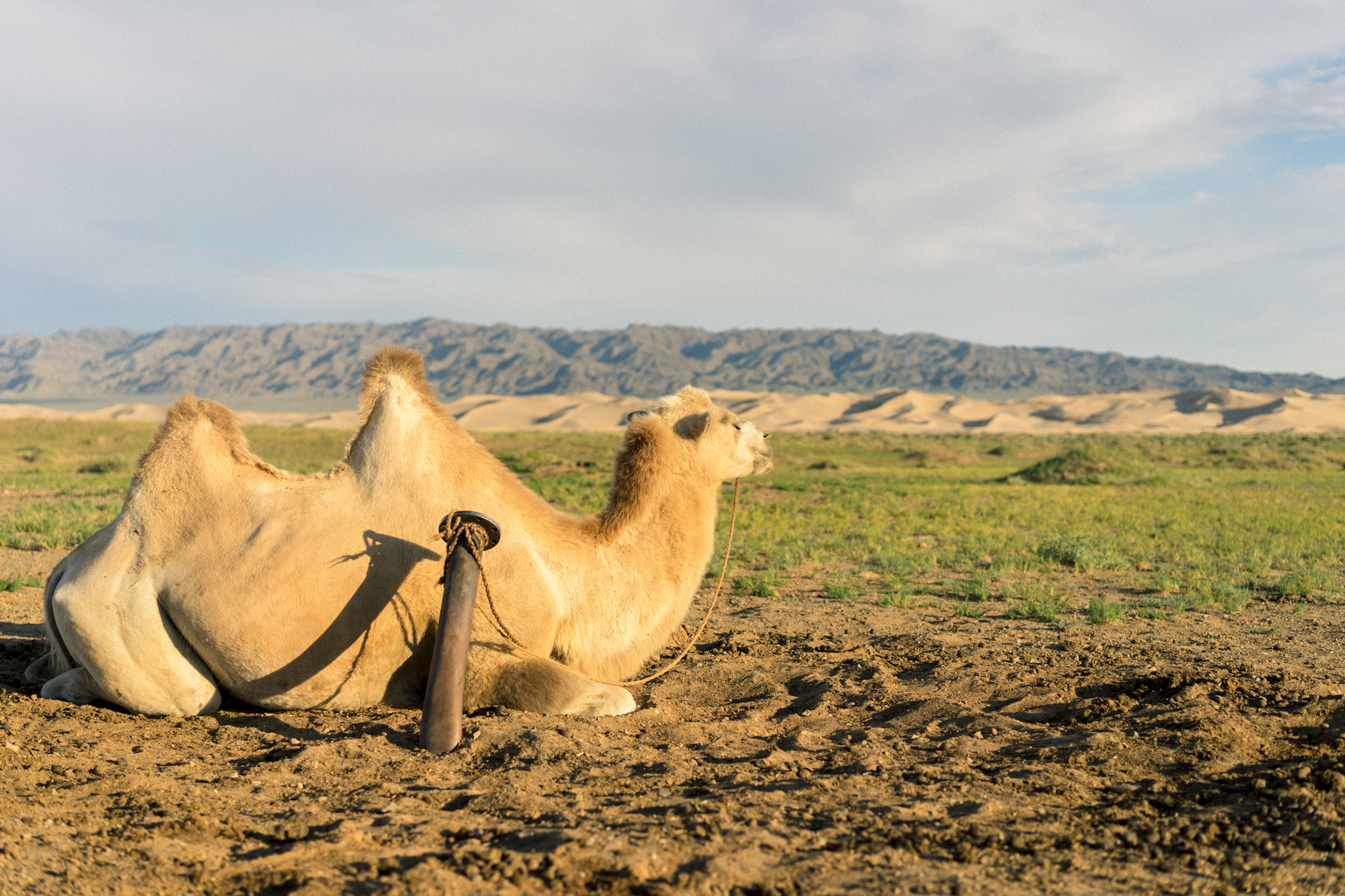
Money in Mongolia
6 – The Mongolian tugrik (MNT) is the official currency of Mongolia: Sometimes also written as tögrög, the Mongolian currency is quite low in value. The current rate as of January 2020 is 1 USD = 2740 MNT .
7 – There are plenty of ATM machines in Ulaanbaatar: In Ulaanbaatar, it’s easy to find an ATM machine that will accept an international Visa or Mastercard, and this is how I got all of my local currency during my trip to Mongolia. Credit cards are not commonly accepted at businesses in Mongolia, but you may have some luck at high-end hotels and restaurants.
8 – Outside of Ulaanbaatar, ATMs are unreliable: If you’re planning on heading out into the countryside, you should bring as much cash as you think you’ll need. It’s difficult to find a working ATM even in some of the larger towns, and even then it might be out of cash.
9 – Converting USD to MNT works too: You can also bring USD from home and convert it to tugrik when you’re in Mongolia, although you might not get quite as good a rate as if you’d used an ATM. It may be possible to change RMB, EUR, or RUB, but don’t count on this.
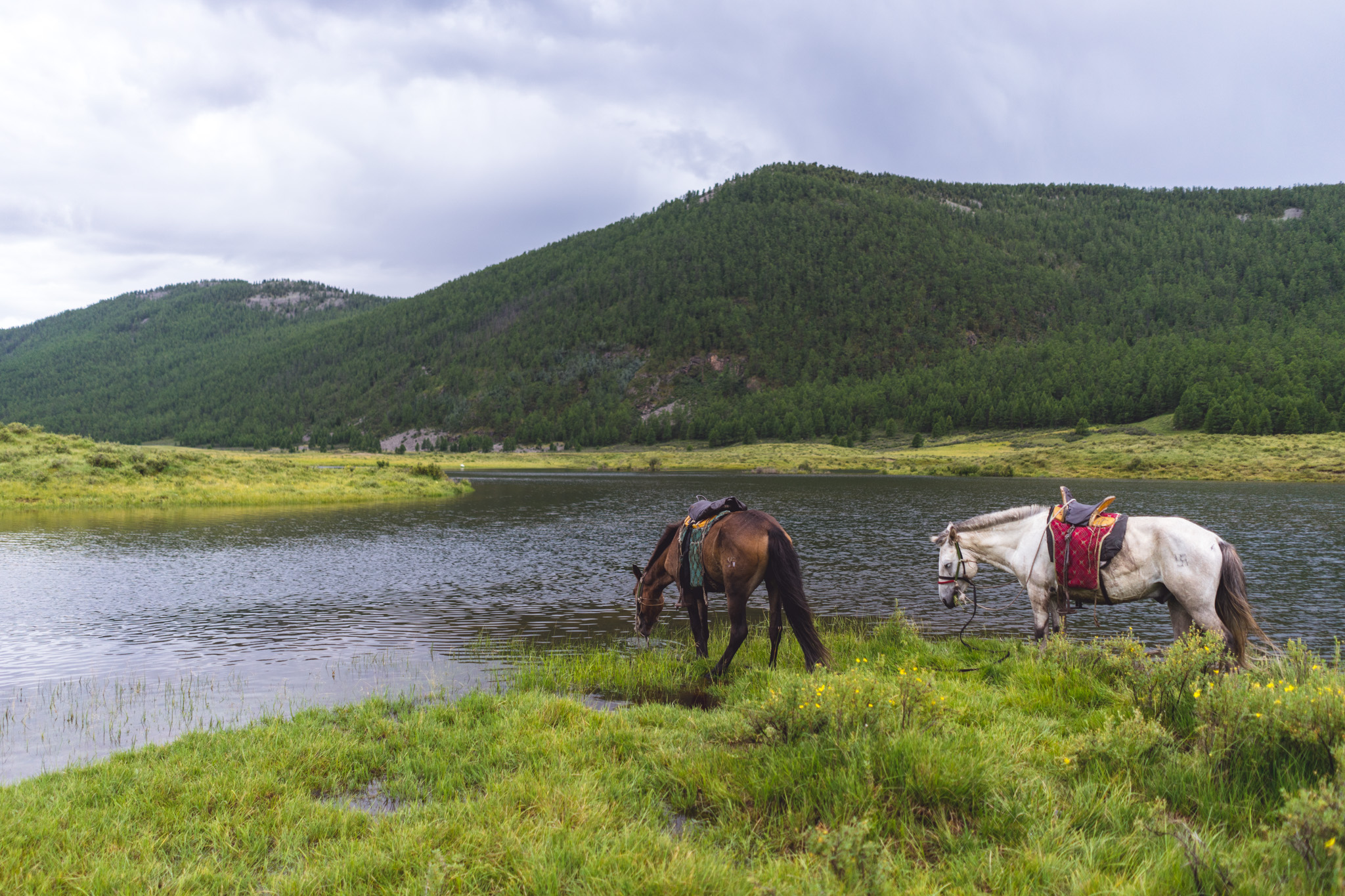
Communication in Mongolia
10 – Mongolian is the official language of Mongolia: Spoken by around 95% of the population, Mongolian is by far the most common language in Mongolia.
11 – In Mongolia, the language is written using the Cyrillic alphabet: While there is a traditional Mongolian script that is used in Inner Mongolia province of China, Mongolia uses the Cyrillic script to write Mongolian.
12 – You don’t need to know Mongolian to travel in Mongolia: You don’t need to know any Mongolian to travel in Mongolia, but knowing the Cyrillic alphabet can be a huge help. If you learn the Cyrillic alphabet, you’ll be able to read signs and certain words on menus. It only takes a few hours to learn the basics – check out this resource to learn more.
Luckily, most people who travel outside of Ulaanbataar will be with an English-speaking guide, so they’ll help you get over any language barriers in rural areas.
Really want to impress the locals? Pick up a Mongolian Phrasebook and try to use it while you’re in Mongolia!
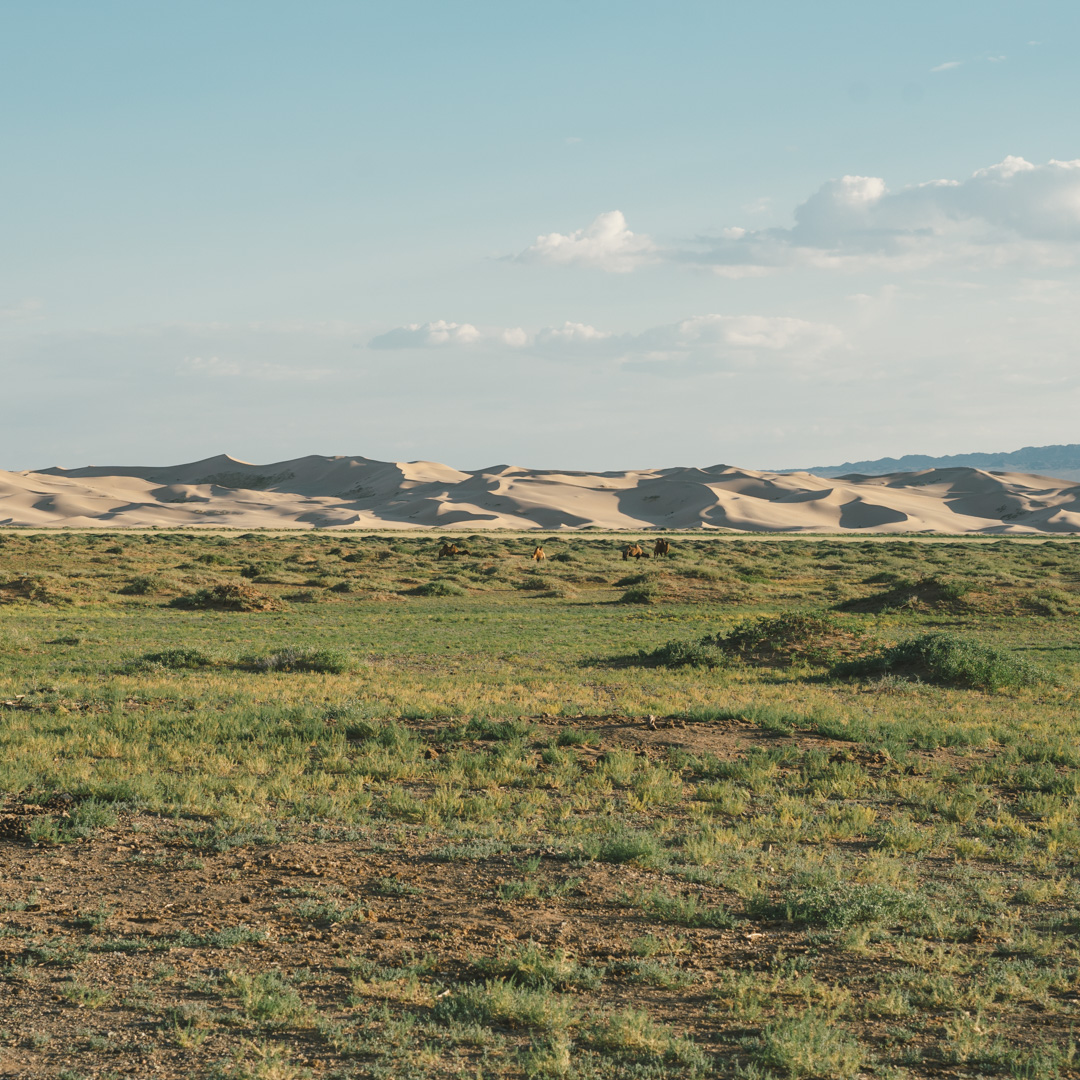
Getting to Mongolia
13 – Overlanding into Mongolia via either China or Russia is totally possible: There are a number of border crossings to both China and Russia that are open to foreigners. Border procedures are fairly straightforward, as long as you’ve got a valid visa (or don’t need one).
14 – The current border crossings with China are:
Erlian – Zamin Uud: This border crossing is quite straightforward. I wrote a complete guide to getting from Beijing to Ulaanbaatar , so check that out if you’re planning on taking that route (or that route in reverse).
Takashiken – Bulgan: Border crossing between Urumqi and the Mongolian Altai. It is possible to reach this border via public transport from Urumqi and continue onto Khovd by shared taxi. Expect long border procedures on the Chinese side (including a search of electronic devices).
One other lesser-used border that is open for tourists is the Khatavch – Bichigt Zuun crossing. Do note that the border crossings with Xinjiang Province are subject to random closures.
15 – The current border crossings with Russia are:
Kyakhta – Altanbulag : The main road border crossing between Ulan-Ude and Ulaanbaatar. There are direct buses between the two cities, taking about 12 hours to complete the trip.
Sükhbaatar – Naushki : This is the railroad border crossing for the Trans-Mongolian Railway between Ulan-Ude and Ulaanbaatar. Very straightforward – immigration officers will board your train and stamp you in.
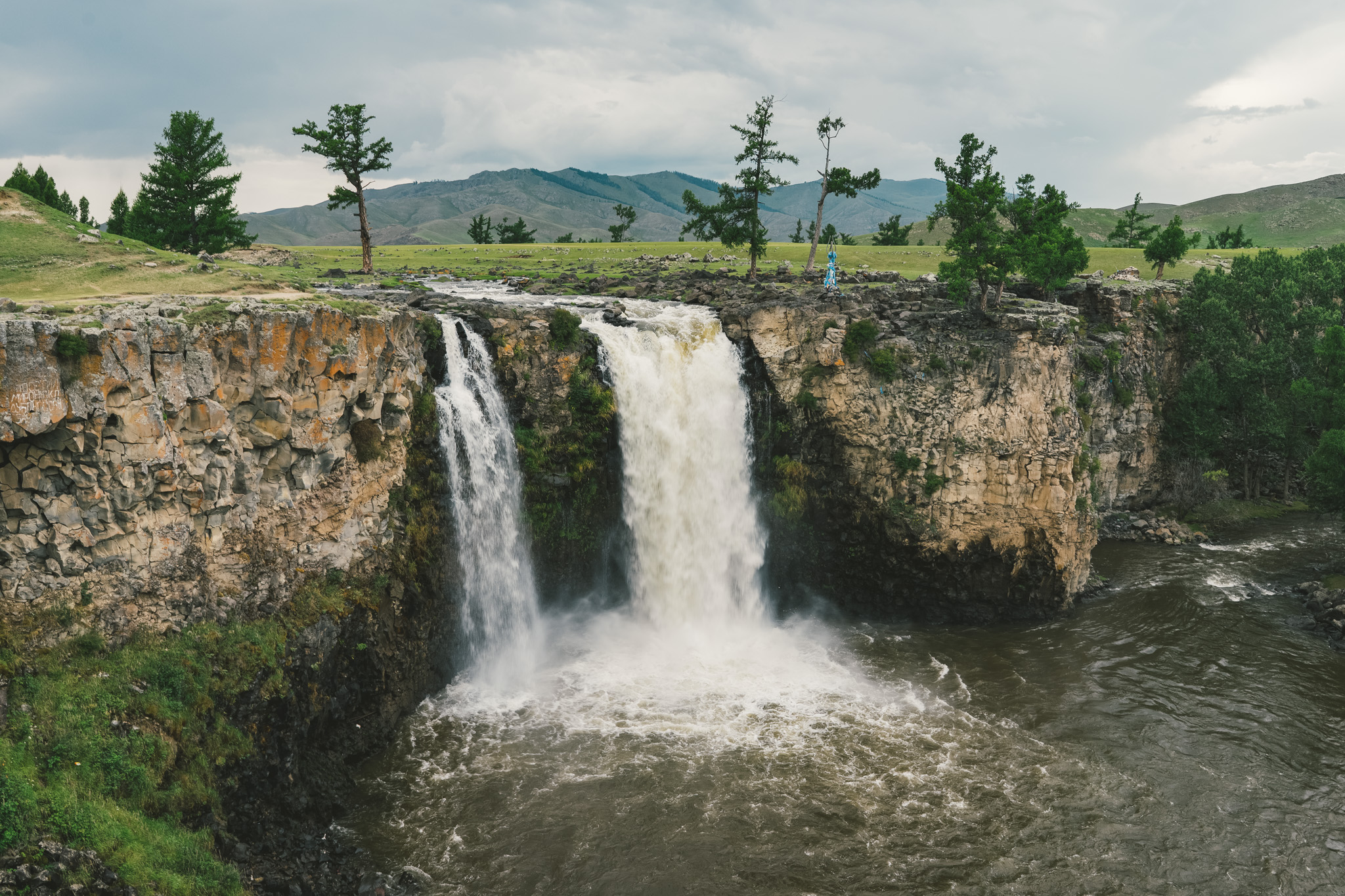
16 – Mongolia is an expensive country to fly into, and isn’t well connected by air: It can be a bit pricey to fly into Mongolia from Europe and North America. Ulaanbaatar (ULN) is the only airport in Mongolia with international flights, so you’ll most definitely be flying into here.
17 – Mongolia’s flag carrier is MIAT Mongolian Airlines: They offer direct flights to Frankfurt, Moscow, Bangkok, Beijing, Hong Kong, Guangzhou, Seoul, Busan, Tokyo, and Osaka.
Other airlines operate flights from Ulaanbaatar to Istanbul, Astana, Irkutsk, Tianjin, and Hohhot.
As you can see, there aren’t that many places you can fly to Mongolia from without a connecting flight.
I recommend using Google Flights to find the cheapest flights to Mongolia.
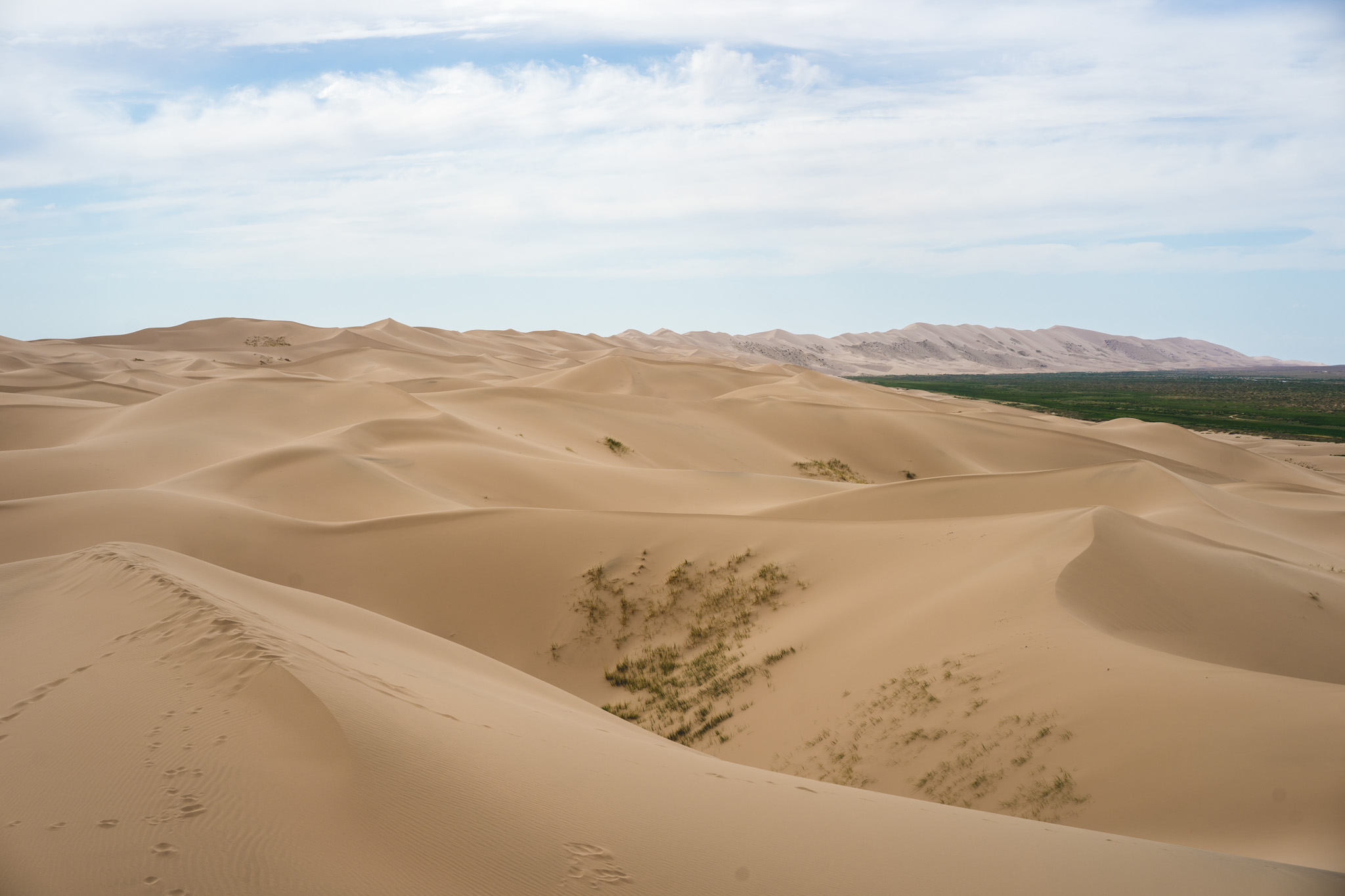
People & Culture of Mongolia
18 – Mongolia is the most sparsely populated country on Earth: A lot of the country’s traditions and culture stems from this fact.
19 – The country became independent from the Qing Dynasty in 1911: There is a lot of shared history between Mongolia and China, although nowadays Mongolians don’t look upon China very fondly.
20 – Most people in Mongolia are Mongolian: In fact, a whopping 96% of the population is Mongolian. The other 4% are Kazakhs in the far western Altai region of the country.
21 – Buddhism is the most popular religion in Mongolia: Over 50% of Mongolians are Buddhist, making it by far the most common religion. Another 39% are non-religious, and the remainders are split up between Islam, Shamanism, and Christianity.
22 – There isn’t really a dress code in Mongolia: There is no set dress code here, but it is still a conservative society so it’s best to dress modestly. In the central areas of Ulaanbaatar, things are a bit more liberal.
Where to visit in Mongolia
23 – Most of Mongolia is empty, so getting around can take a long time:
The country can be divided up into six distinct regions based on differences in culture and geography. Each region requires at least a week to properly visit (aside from Ulaanbaatar).
Let’s cover all of the best places to visit during your travels in Mongolia.
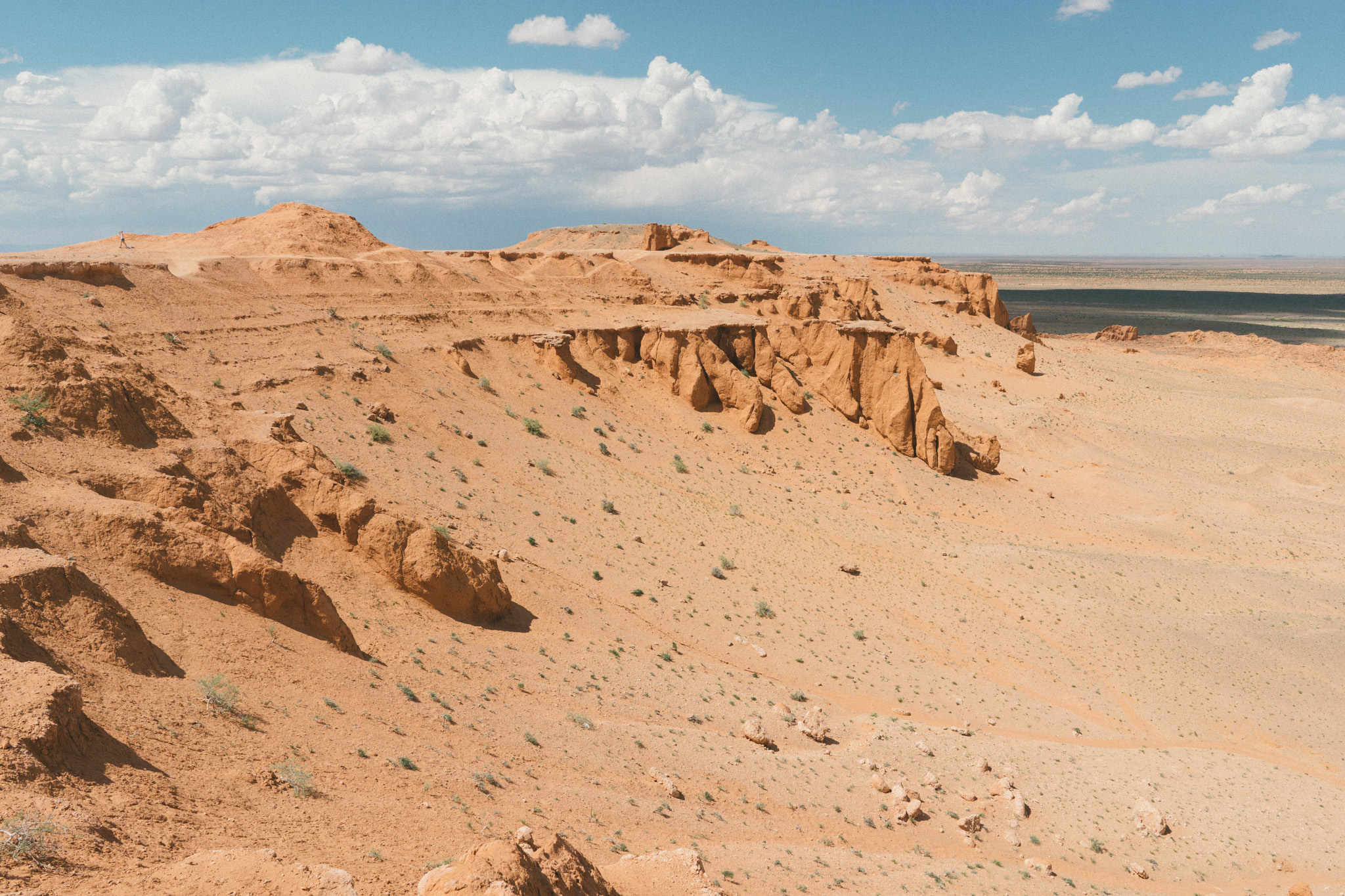
Backpacking Ulaanbaatar
24 – Almost every traveller will begin their adventure in Mongolia’s capital city of Ulaanbaatar: Ulaanbaatar is the only real city in Mongolia and is home to over half of the countries population. The city is connected to China and Russia via the Trans-Mongolian Railway and has an international airport.
The city is a great place to organize tours into the countryside, visit museums, eat, shop, and chill out after a long journey through the steppe.
I’ve met a lot of travellers who told me that they hated Ulaanbaatar, but I kinda liked it. There are some nice western-style cafes, good restaurants, and some malls if you need to get any gear.
25 – There isn’t much to do in Ulaanbaatar, but it’s alright for a couple of days: While most travellers visiting Ulaanbaatar are here to organize the rest of their Mongolia adventure, there are a few things worth checking out in the city itself.
When you arrive, pay a visit to the Genghis Khan Square and take in the atmosphere of the political center of Mongolia. Next, make your way to the Gandantegchenling Monastery for a look at some of Mongolia’s Buddhist traditions.
If you’ve got some extra time, you can also check out the National History Museum . For any shopping that you need to do, hit up the State Department Store.
26 – Ulaanbaatar is full of great hostels: It’s the perfect place to meet other people who want to travel around Mongolia.
I’d recommend staying at the Golden Gobi Hostel when you’re in Ulaanbaatar.
They’re super organized with arranging tours to the other parts of Mongolia, and the hostel is a great place to meet other travellers. I had a great time here!
Also, consider Sunpath Mongolia – they provide similar quality and services to the Golden Gobi hostel.

Backpacking Central Mongolia
27 – Central Mongolia one of the more popular regions among travellers: It’s not far from Ulaanbaatar and offers gorgeous natural beauty along with hospitable nomadic people.
The main tourist sights in Central Mongolia are the Gorkhi-Terelj National Park, the ancient city of Karakorum, and the incredible Orkhon Valley.
28 – Gorkhi-Terelj National Park: Located only 70 kilometres from Ulaanbaatar and is a great place to visit if you have a short amount of time in Mongolia. In the park, you can go hiking, horseback riding, and stay with nomadic families.
Gorkhi-Terelj NP is one of the most popular tourist destinations in Mongolia, so there are plenty of tourist camps offering all sorts of services.
You can access the park via 2 daily buses departing from Ulaanbaatar – do note that there is a 3000₮ entrance fee at the park gate.
29 – Karakorum: The city of Karakorum was the capital of the Mongol Empire and visited by Marco Polo on his during his travels through the area.
When you’re here, roam around the historic former capital of Mongolia and learn more about its history.
30 – The Orkhon Valley: This gorgeous valley is located about 300 kilometres from Ulaanbaatar and follows the banks of the Orkhon River. It’s a lush grassland home to many nomadic people who still live traditional lives in ger camps. Orkhon Valley is also home to Mongolia’s tallest waterfall.
The Orkhon Valley is the perfect place to embark on a multi-day horse trek or spend some time living with a local family. The landscapes here are beautiful, and it’d be a shame to only visit for a day! Try not to miss the Naiman Nuur National Park (Eight Lakes).
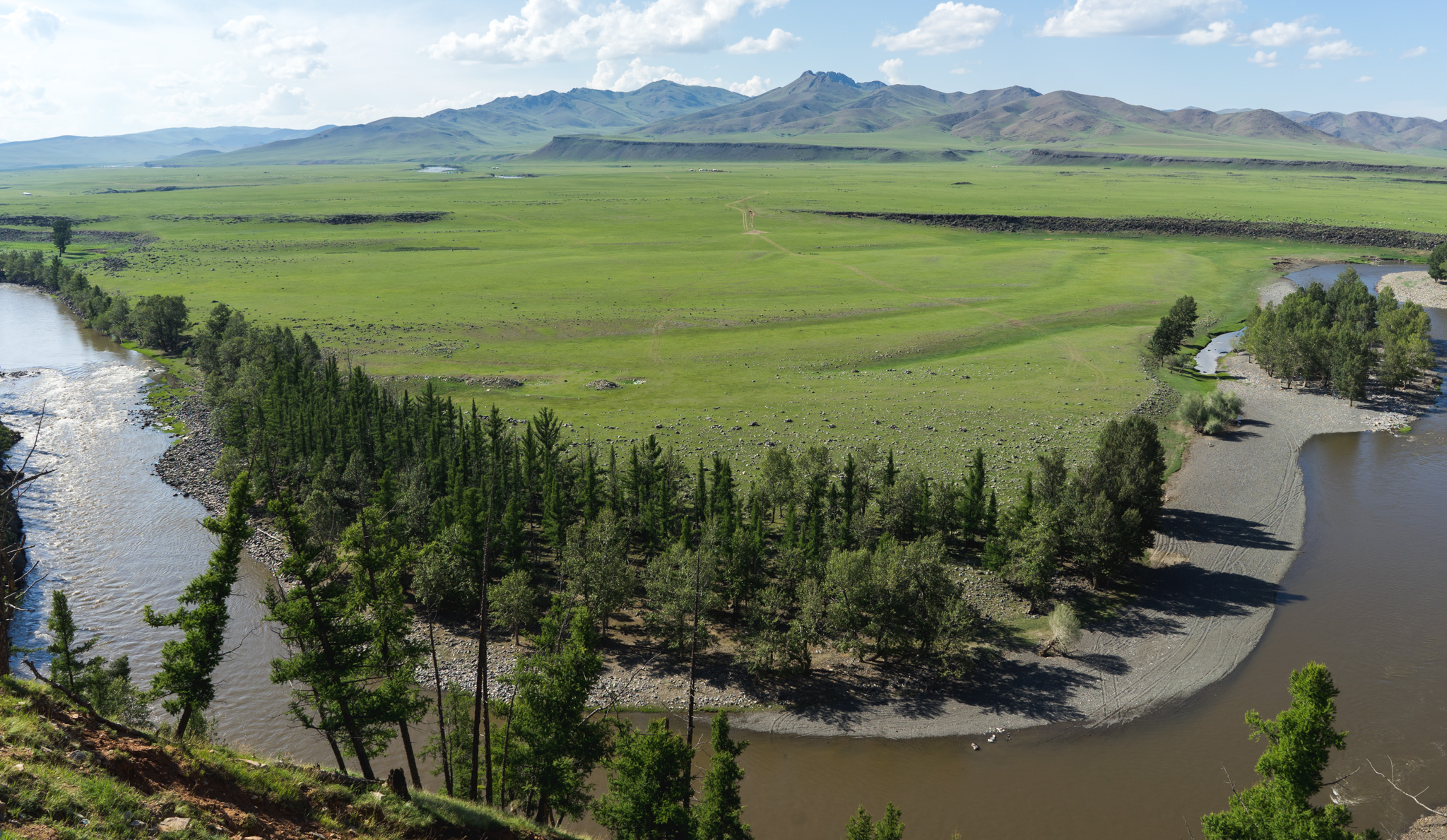
Backpacking the Gobi Desert
31 – Basically all of Southern Mongolia is covered by the Gobi Desert: It’s Asia’s largest desert and is home to camels, massive sand dunes, and a ton of other interesting sights.
This region is fairly accessible from Ulaanbaatar. Dalanzadgad is the capital of the region, and you can get there from Ulaanbaatar by bus in about 10 hours.
The main sights to visit in the Gobi Desert are:
32 – Yolyn Am: Yolyn Am is probably not what you would’ve expected from the Gobi Desert. It’s a deep, narrow gorge that often has snow left in it well into summer months.
When here, you should spend a couple of hours hiking (or horseback riding if you’re confident) through the gorge.
33 – Bayanzag (Flaming Cliffs): The Flaming Cliffs are one of the more famous spots in the Gobi Desert, for good reason! They’re absolutely stunning and make for epic photographs (especially at sunset).
In the 1920s, the first-ever dinosaur eggs were discovered here by an American paleontologist, and a number of subsequent fossil finds have occurred here.
34 – Khongoryn Els: When you think of the Gobi Desert, giant sand dunes probably come to mind. Don’t worry, Khongoryn Els has got you covered!
Some of the dunes are over 300 meters tall, and they go on for over 100 kilometres. Hiking up the tallest dune and watching the sunset was one of my favourite travel experiences.
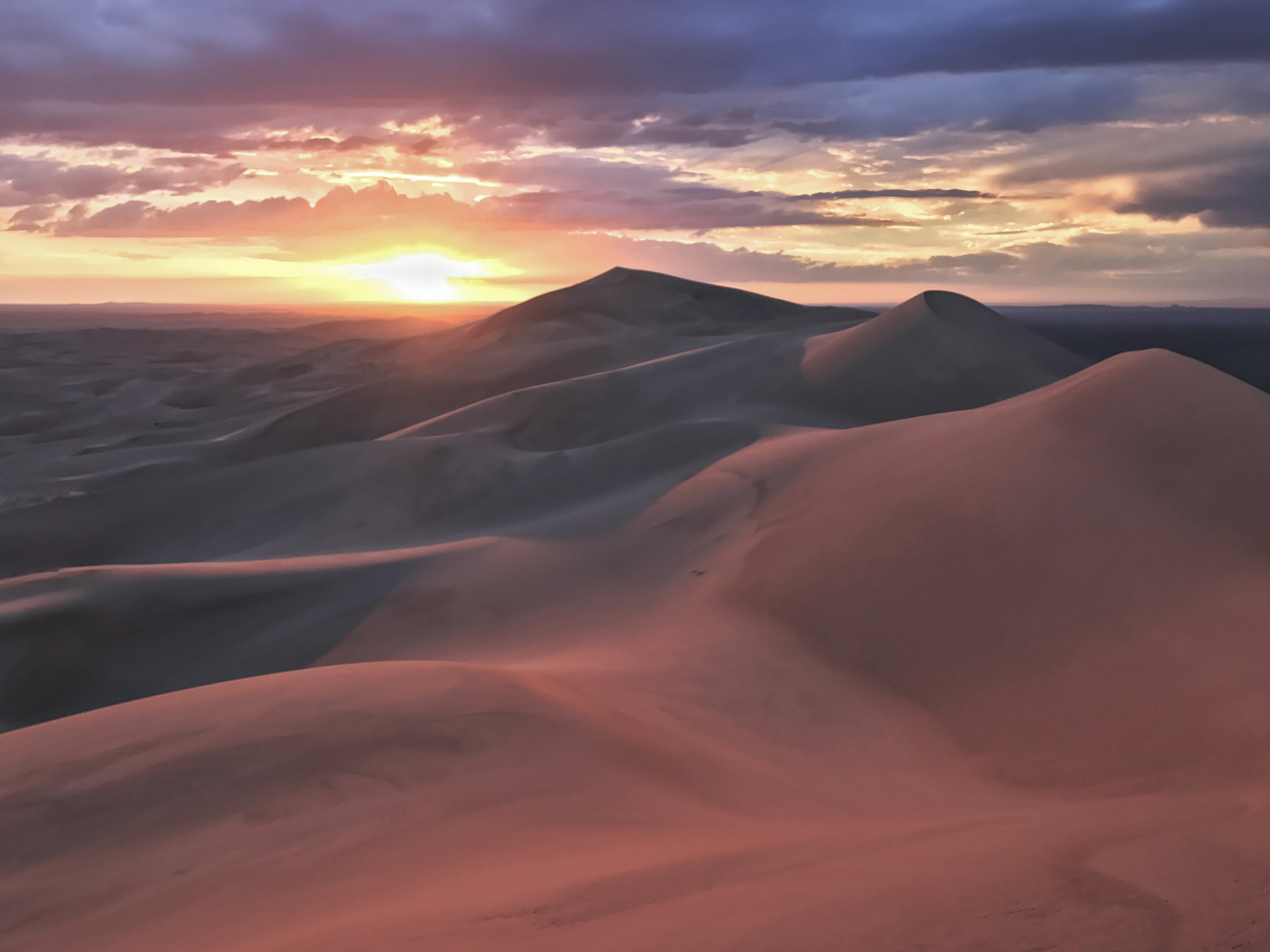
Backpacking Northern Mongolia
35 – Mongolia’s north is home to Lake Khuvsgul, the most beautiful lake in the country: In the northwest of Lake Khuvsgul, the Tsaatan tribe are one of the only remaining groups of nomadic reindeer herders.
Most travel around Northern Mongolia will be based out of the town of Moron. Getting to Moron can take a while – there are buses running from Ulaanbaatar that take about 12 hours, or you can take a flight for around $150 USD.
Visiting the Tsaatan tribe can take some time, requiring a multi-day horse riding journey. If you plan on visiting the Tsaatan, do your research and find an outfitter that places an importance on sustainability and preservation of the Tsaatan culture.
Backpacking Western Mongolia
36 – Western Mongolia is the most remote part of Mongolia: Most travellers will visit this region to journey into the Altai Mountains. Ölgii is the starting town for most adventurers in the region. Ölgii a 48-hour bus ride from Ulaanbaatar, or a short flight.
In early October, the Kazakh inhabitants of the region host the Golden Eagle Festival.
I haven’t visited this region yet, but I plan on making it a large focus of my next trip to Mongolia.
Backpacking Eastern Mongolia
37 – Eastern Mongolia is rarely visited but is home to the birthplace of Genghis Khan: Much of the region is a vast steppe without many interesting tourist sights. If you’ve been to Eastern Mongolia, let me know more about it and I’d love to update this section!
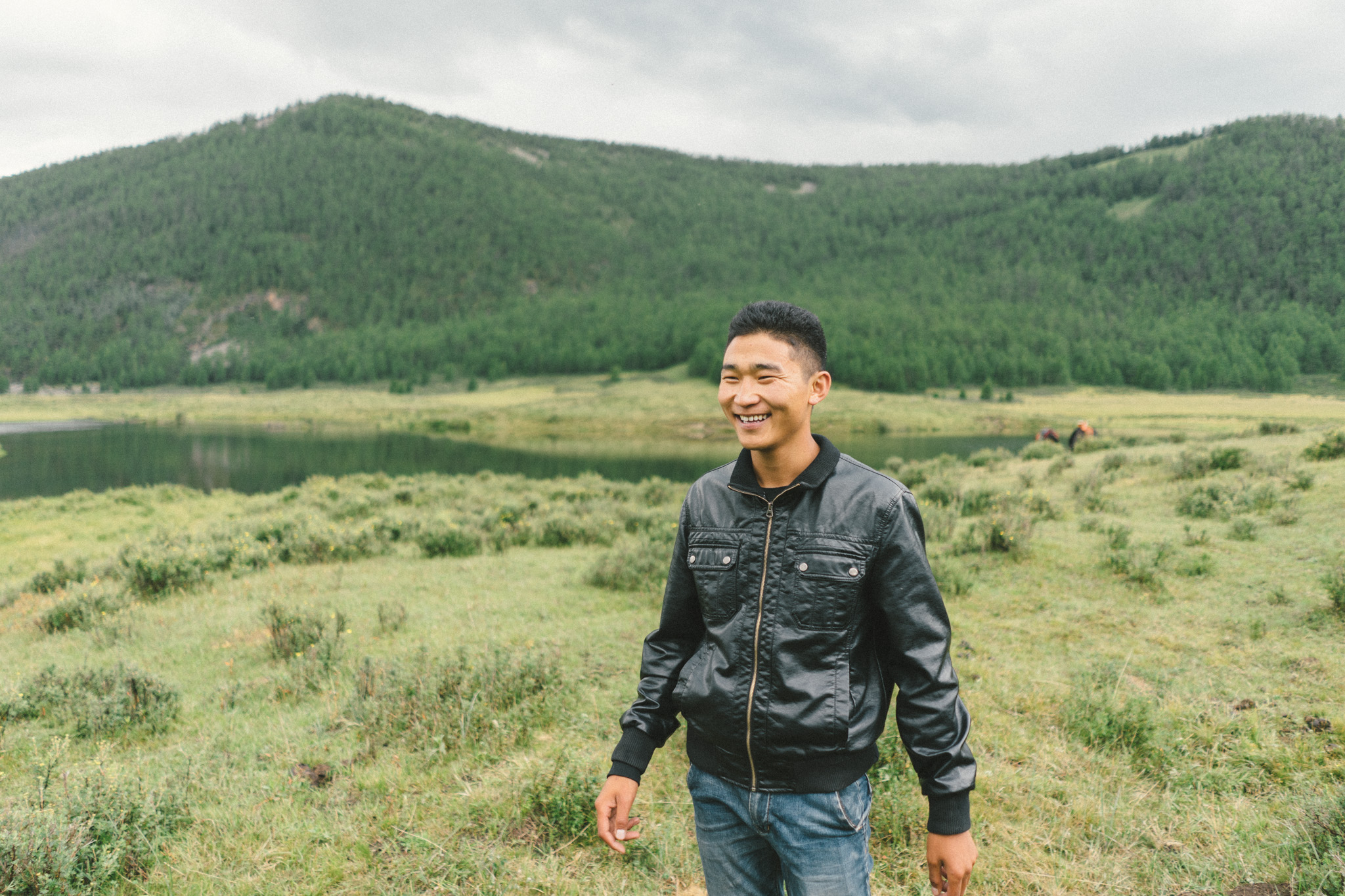
Tours in Mongolia
38 – So, how do you organize a trip in Mongolia?: Before my trip to Mongolia, my biggest challenge was figuring out how I was going to get around the country! Public transportation connects the main regional hubs to Ulaanbaatar, but other than that there isn’t any way of getting around.
All of the incredible sights are hours away from town and require a 4×4 vehicle to reach.
This means that the typical “backpacker” travel style of staying in hostels and taking public transportation doesn’t work here.
39 – Group tours in Mongolia are a great option: Almost every hotel, hostel, and guesthouse in Ulaanbaatar will offer group tours.
An organized group tour in Mongolia will typically include the following things:
- Vehicle and driver
- English-speaking guide
- Accommodation in gers or tents
- Food (not including snacks or alcohol)
- Entrance fees and activities
As you can see, a group tour will include pretty much everything you need!
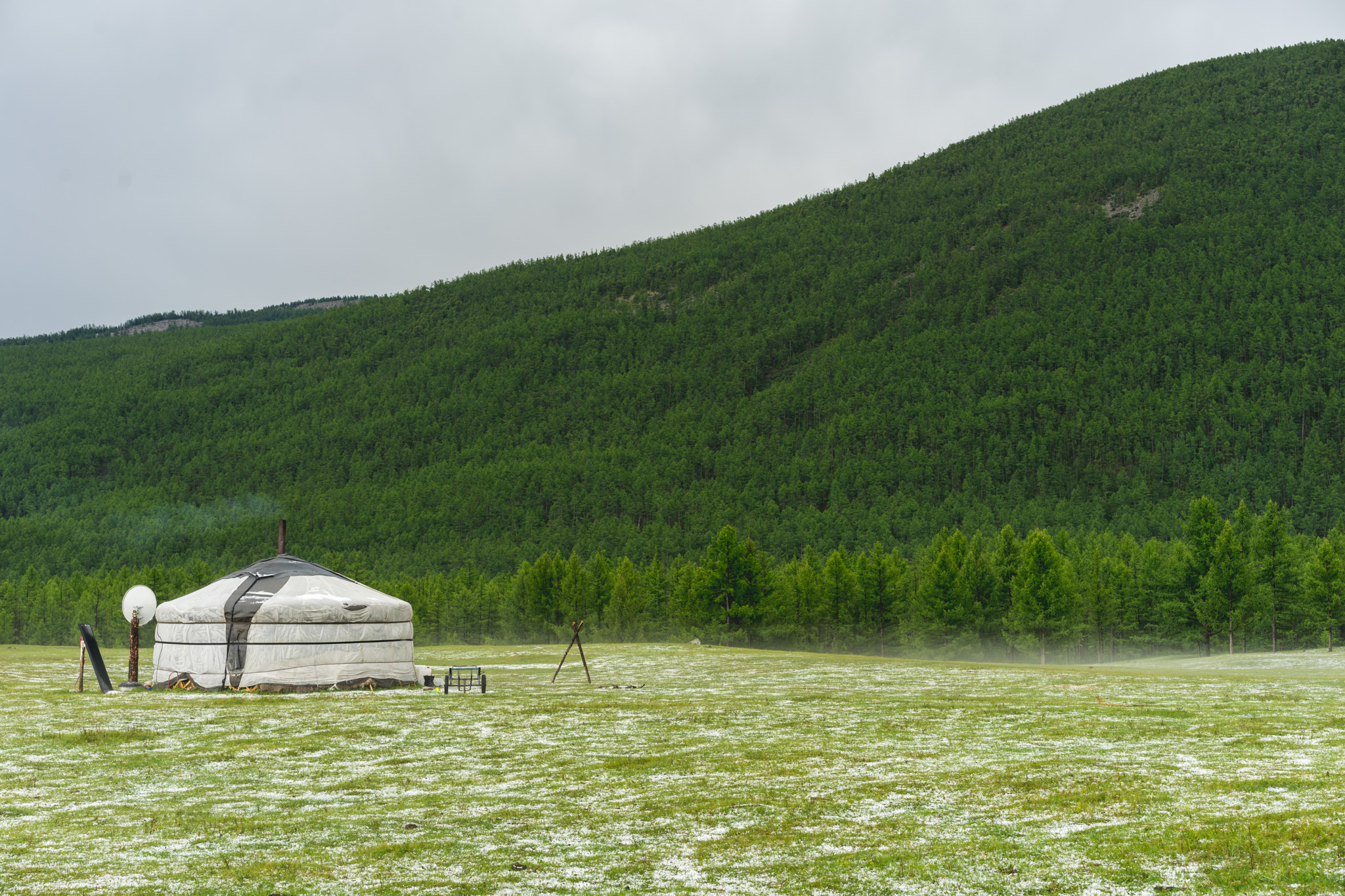
40 – How much do group tours typically cost?: The tour cost depends on the number of people who sign up. Expect to pay between $50-70 USD per day for a group tour that has a few other backpackers on it.
It’s hard to give an exact number, so make sure to budget for the high end to be safe.
When you are in Ulaanbaatar, I’d recommend staying at the Golden Gobi hostel . They’re very well organized and have multiple tours leaving every day in the summer.
Another hostel that I heard good things about is Sunpath Mongolia . If you can’t find the tour you’re looking for, or Golden Gobi is all sold out, consider staying there.
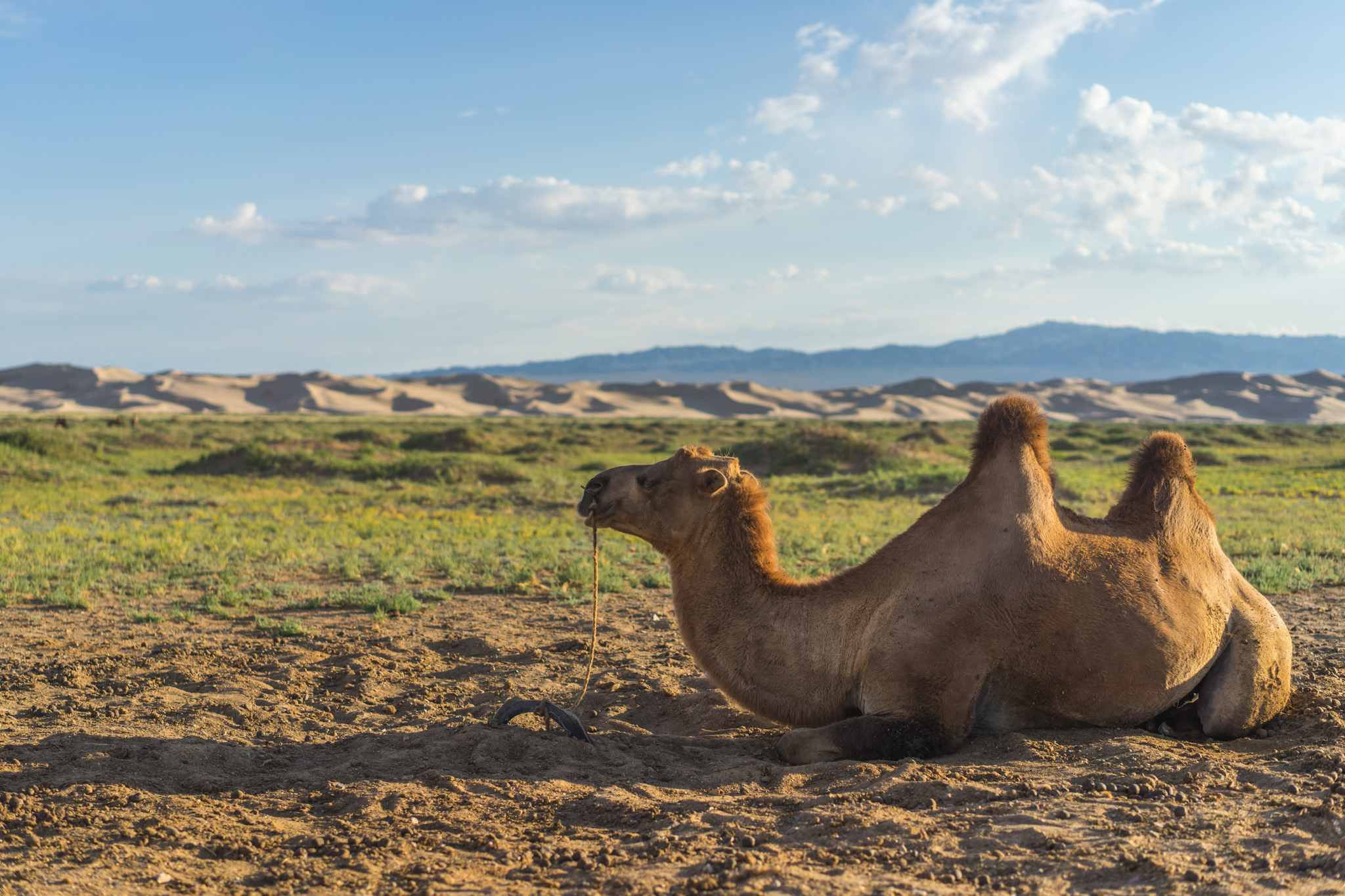
41 – Don’t arrange your group tour from outside of Mongolia: It will cost a lot more. It’s much easier to arrange things on the ground in Ulaanbaatar with any other travellers that you may meet.
Both of the above hostels have many tours leaving each day, so it’s easy to show up and join a group that’s leaving the next day.
Independent travel in Mongolia
42 – Independent travel is also possible, but much more challenging: If you want to independently backpack around Mongolia, you’re gonna need your own vehicle or a lot of cash.
If you have your own vehicle (4×4, bicycle, motorbike, horse), then getting around won’t be too difficult.
Most tourist sights have ger camps that you can pay to stay in, but you’ll need to bring a tent and cooking supplies for the places that don’t have ger camps.
If you don’t have your own form of transportation, you’ll need to hire a private vehicle and driver. Hiring a private vehicle will cost a couple of hundred dollars per day.
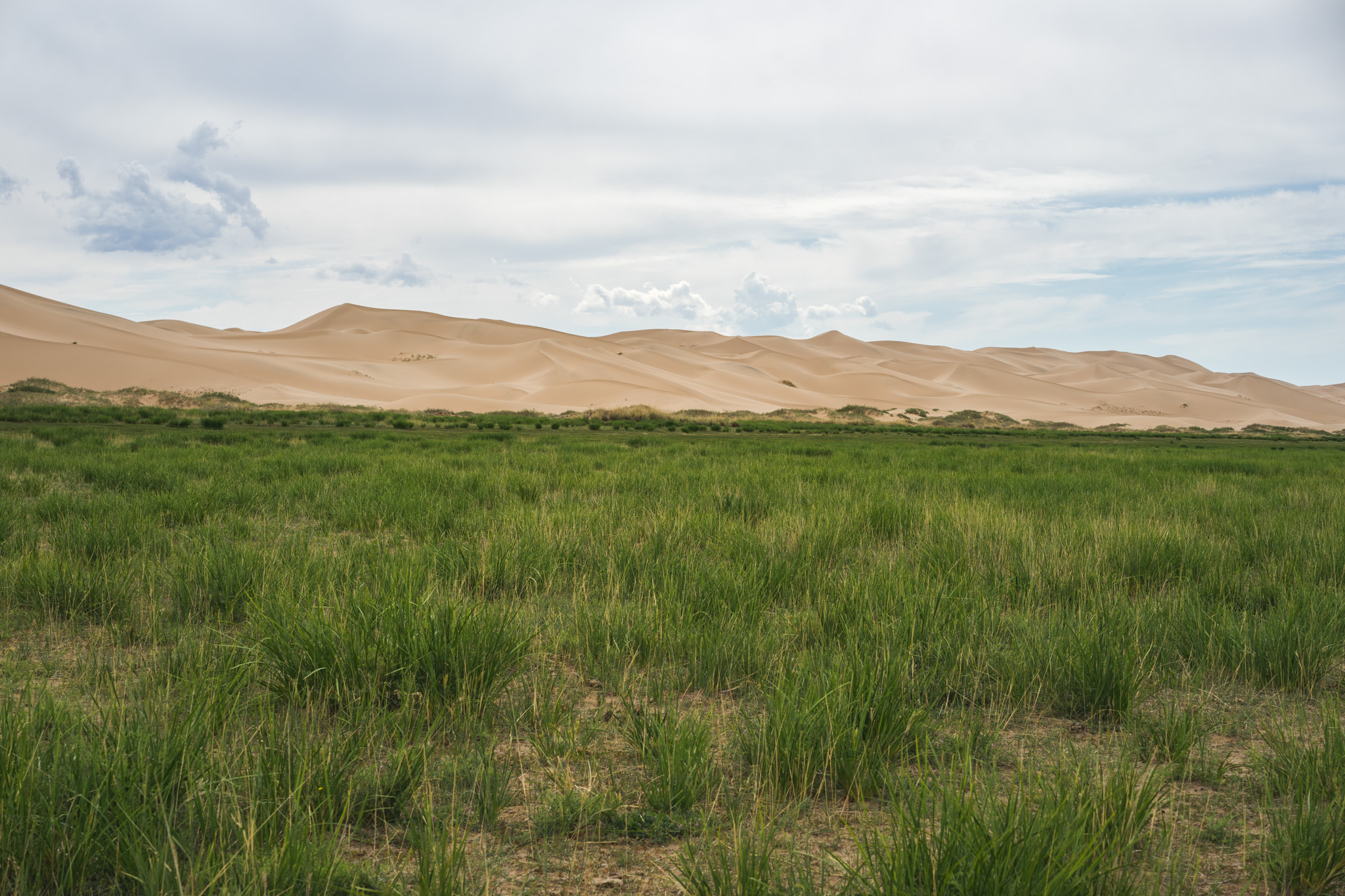
Food in Mongolia
43 – Outside of Ulaanbaatar, food in Mongolia is pretty basic: As many people still live nomadic lives in rural Mongolia, they aren’t able to grow things like fruits and vegetables. Because of this, their diets still consist of mostly meat and dairy products.
Ulaanbaatar has pretty decent options for food, however. There are some good Indian, Chinese, and Korean restaurants if you want some flavour after spending time in rural Mongolia.
44 – You need to try airag when you’re in Mongolia: Araig (called kumis in Central Asia) is a dairy product made from fermented horse milk. It’s sour is very unique, and it’s even got a light alcohol percentage due to the fermentation.
In rural parts of Mongolia, you’ll see people drinking this all the time! It’s served in a bowl, and if you finish your bowl you’ll instantly get a refill.
45 – It can be a bit challenging to travel here as a vegetarian: In Ulaanbaatar, you’ll find a few options for vegetarian-friendly food, but in rural areas don’t expect locals to know what you’re talking about.
If you travel on a tour, you should tell your guide in advance so they can make the appropriate accommodations.

Accommodation in Mongolia
46 – In Ulaanbaatar, all sorts of accommodation are available: Ulaanbaatar is full of hotels, hostels, and guesthouses. It’s up to you to choose which one you’d prefer, but hostels are usually the best bet if you also want to find people to group up with for a tour.
I’d recommend staying at the Golden Gobi hostel . I stayed here both times I was in Ulaanbaatar and arranged my tour through them and had no complaints.
47 – Rural areas have more basic accommodation: When travelling through the rural parts of Mongolia, accommodation will either be in basic homestays, ger stays, or camping. If you travel with an arranged tour, they’ll sort all of this out for you. Most places like these aren’t displayed online anywhere.
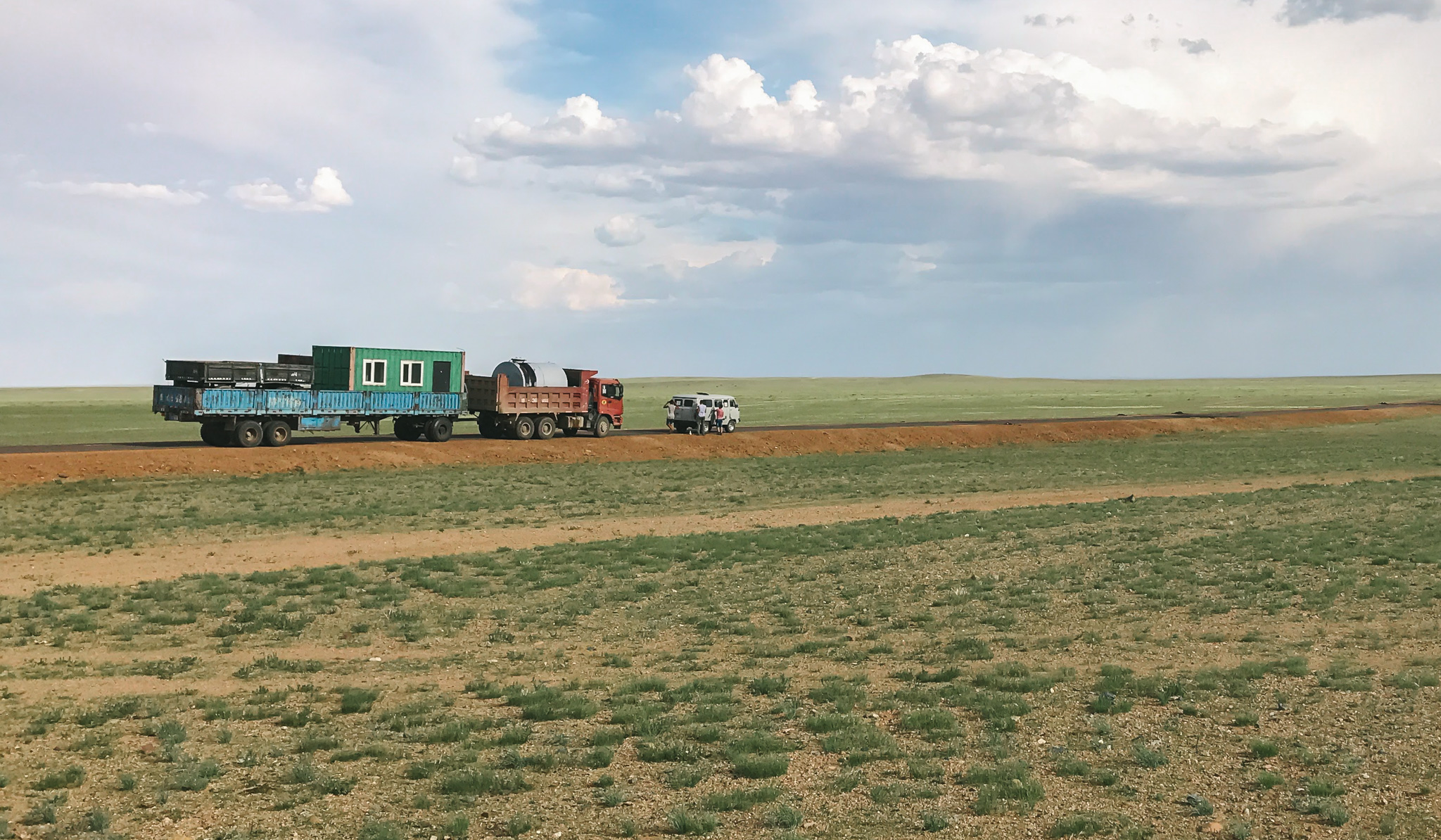
Transportation in Mongolia
48 – Getting around Mongolia takes a long time: Unless you’re travelling between a large town and Ulaanbaatar, there aren’t really paved roads in Mongolia. This makes getting around take forever.
49 – There is a decent bus network: There are buses running between Ulaanbaatar and all of the major towns, although these all take a long time. Getting from Ulaanbaatar to Khovd in Western Mongolia can take upwards of 40 hours.
50 – Hitchhiking is also possible: Although be prepared to be patient. Hitchhiking on main roads is doable, but if you want to go to touristy sights it will be rather difficult as there isn’t any local traffic.
51 – Flying long distances is a good idea: If you want to avoid taking a 40-hour bus ride from Ulaanbaatar to Khovd, there are some domestic airlines in Mongolia that fly routes such as that one. It isn’t the cheapest option, but it is your best bet if you’re short on time.

Mongolia Travel Itineraries
Mongolia 1-week itinerary.
With a week in Mongolia, you’ll want to stick around the Ulaanbaatar area.
Spend a couple of days in Ulaanbaatar visiting its main sights, and then head to the Gorkhi-Terelj National Park. I’d recommend spending a few nights here, you’ll get to stay in a ger, try fermented horse milk, and go horseback riding.
If you arrange a driver with your hostel in Ulaanbaatar, you could also take a trip to the ancient capital of Karakorum. It’s a good 5-6 hour drive from Ulaanbaatar, so plan accordingly. I’d only recommend this if you’re really info Mongolian history, as there isn’t much else to do in Karakorum.
Mongolia 2-week itinerary
Two weeks is the perfect amount of time to check out Ulaanbaatar, Central Mongolia, and the Gobi Desert.
A typical tour of Central Mongolia and the Gobi departing from Ulaanbaatar will take about 12 days, and you’ll get to spend time in all the major sights.
For info on arranging a tour like this, see the Group tours in Mongolia section above.
The Gobi and Central Mongolia offer a perfect intro to the country and are what I’d recommend for a first-time visitor.
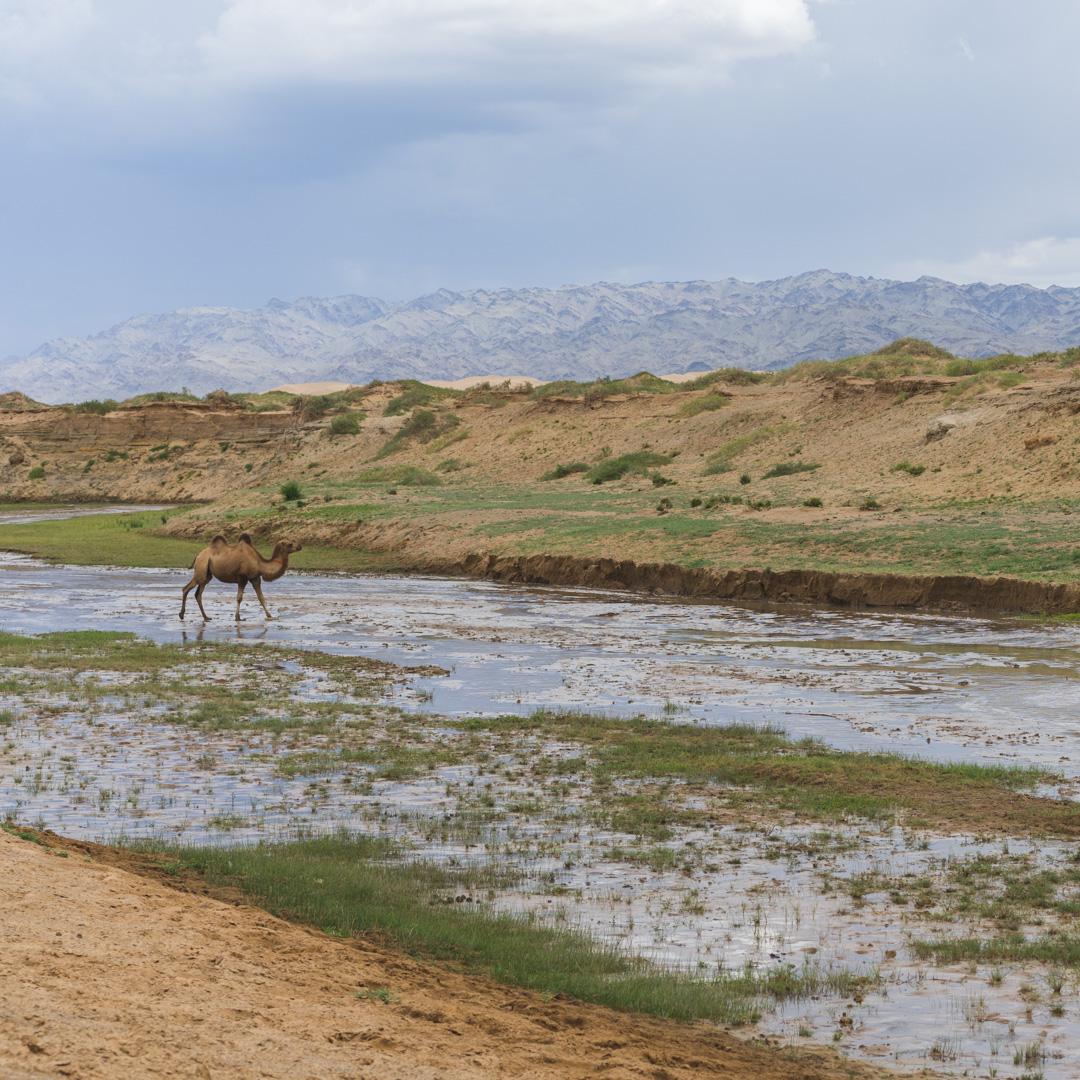
Mongolia 3-week itinerary
With three weeks, you’re able to add on another region to the above itinerary. Northern Mongolia would make the most sense, as you’re able to drive there pretty easily after visiting Central Mongolia.
A week in Northern Mongolia probably won’t be enough time to go and visit the Tsaatan people, so plan for a longer amount of time in the north if this is something you wish to do.
Mongolia 1-month itinerary
A month in Mongolia – I’m jealous! With this amount of time, you could make it all the way out to the western part of the country. You’ll be able to go hiking in the Altai mountains and meet the Kazakh people that inhabit that area.
Western Mongolia will take up about two weeks (the exact amount of time depends on if you fly or bus there). For your other two weeks in the country, consider checking out the Gobi and Central Mongolia. You’ll also probably want to plan some rest time in Ulaanbaatar.
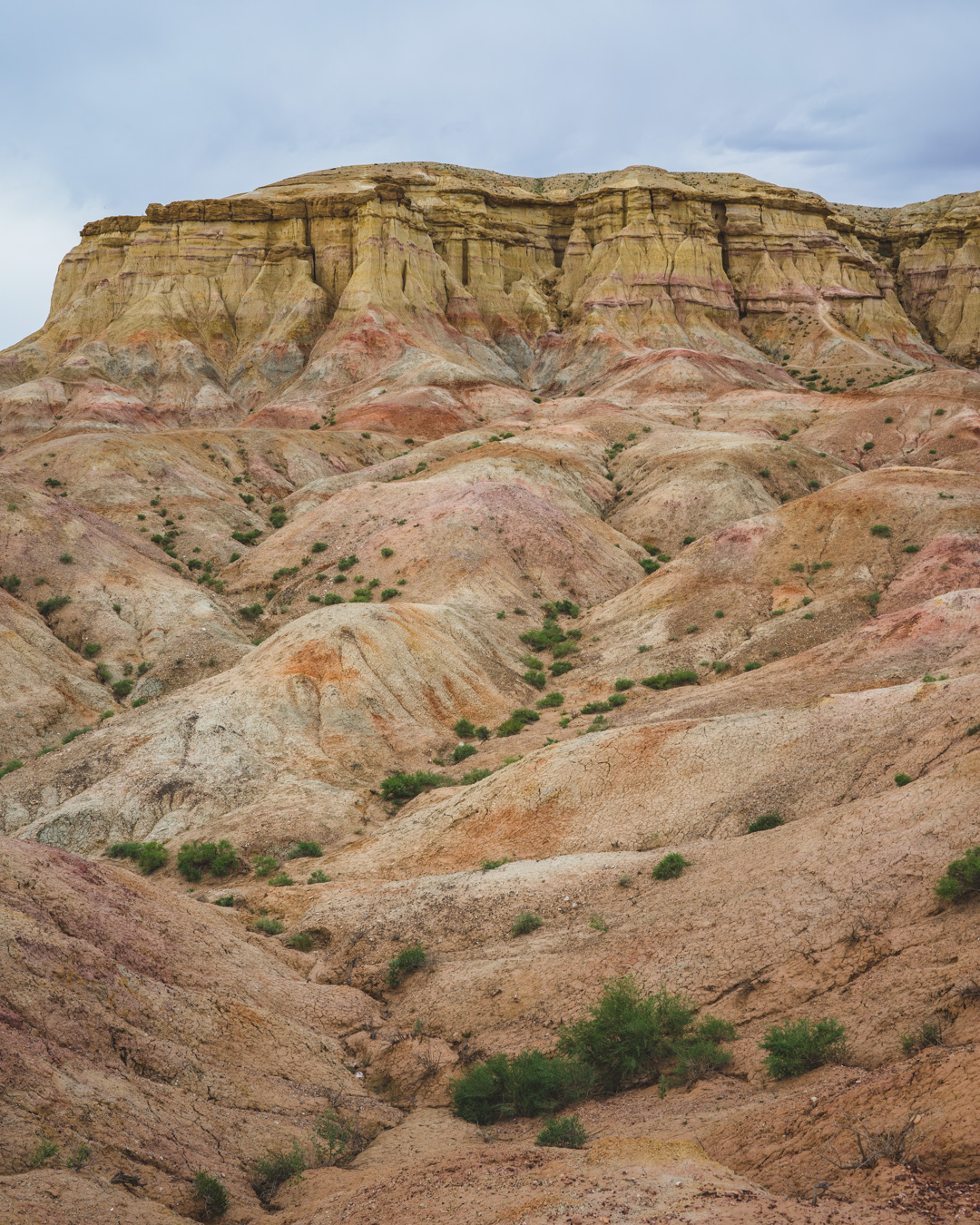
When to visit Mongolia
52 – Mongolia can be visited year-round: But.. you’ll have a vastly different experience in the summer than you would have in the winter. For most people, the best time to visit Mongolia is in summer, but let me go over the pros and cons of the different seasons.
53 – What is Mongolia like in the winter?: Unless you like -30°C weather, it’s probably best to avoid visiting Mongolia in the winter (November to March). If you do visit Mongolia in the winter, dress warm and you’ll experience a Mongolia that few other backpackers do!
Be warned – in the winter, Ulaanbaatar becomes one of the most polluted cities on Earth due to wood-burning heating.
54 – What is Mongolia like in the spring?: In the spring (April to May), weather can still be unpredictable and roads can be quite muddy as the snow is still melting.
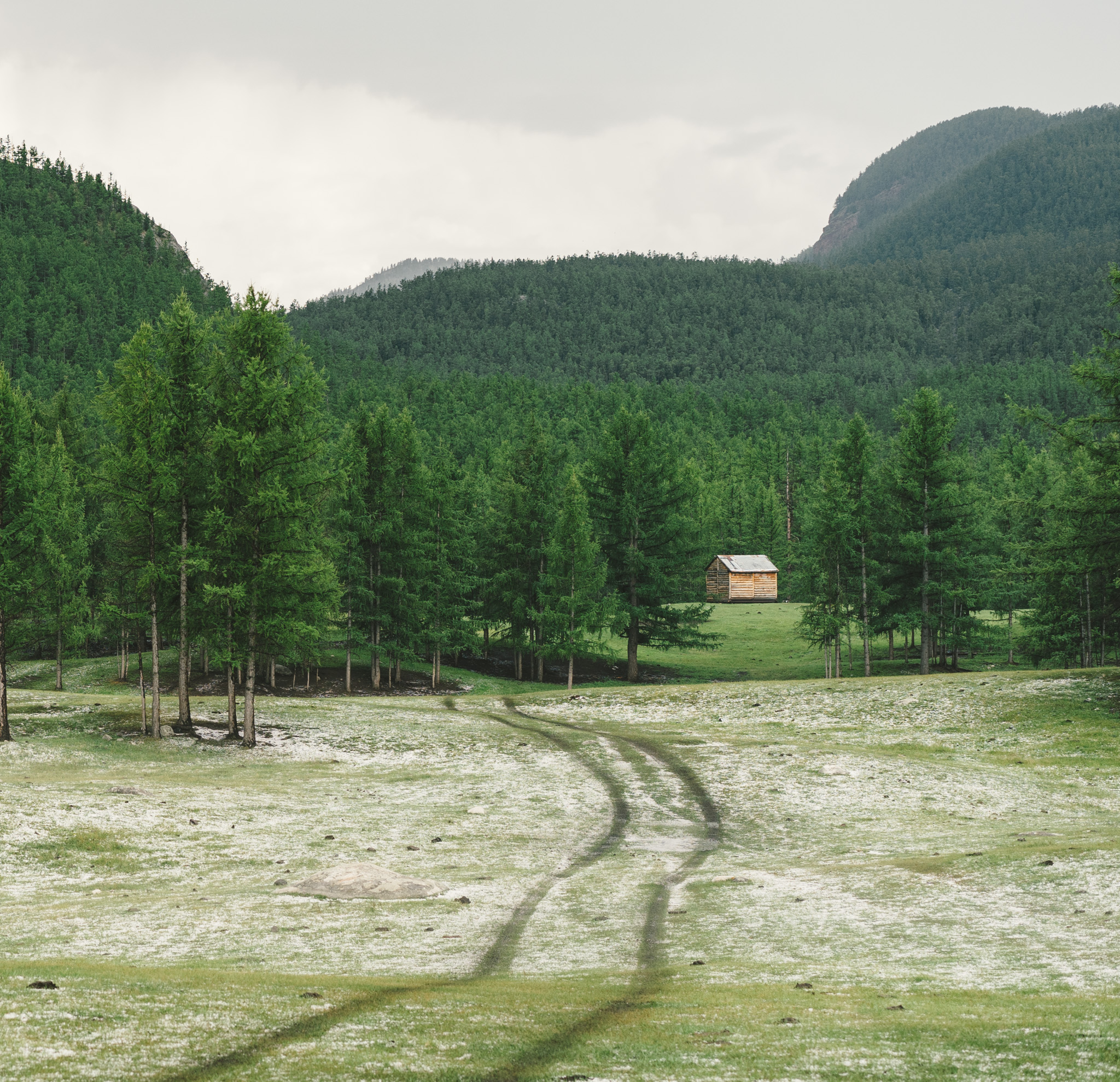
55 – What is Mongolia like in the summer?: Mongolia’s summer lasts from June to August and is definitely the best time of year to visit Mongolia. In the summer, the steppes will be green and the skies will be blue (for the most part). Still, be prepared for any type of weather.
I backpacked around Mongolia in August, and when I was in the Gobi Desert climbing the Khongoryn Els sand dunes, it started pouring rain. Later on, I was in the Orkhon Valley and we were hit with a hail storm that covered our ger in ice. Be sure to bring gear for any sort of situation.
In late July/early August, the Naadam festival takes place all over the country. It’s an incredible experience that shouldn’t be missed!
56 – What is Mongolia like in the fall?: In the fall temperatures begin to drop, but gorgeous fall colours help make up for it. After summer, fall is probably the best time to visit Mongolia.
If you’re in Mongolia in early October, try to make it out for the Golden Eagle Festival in Ölgii.
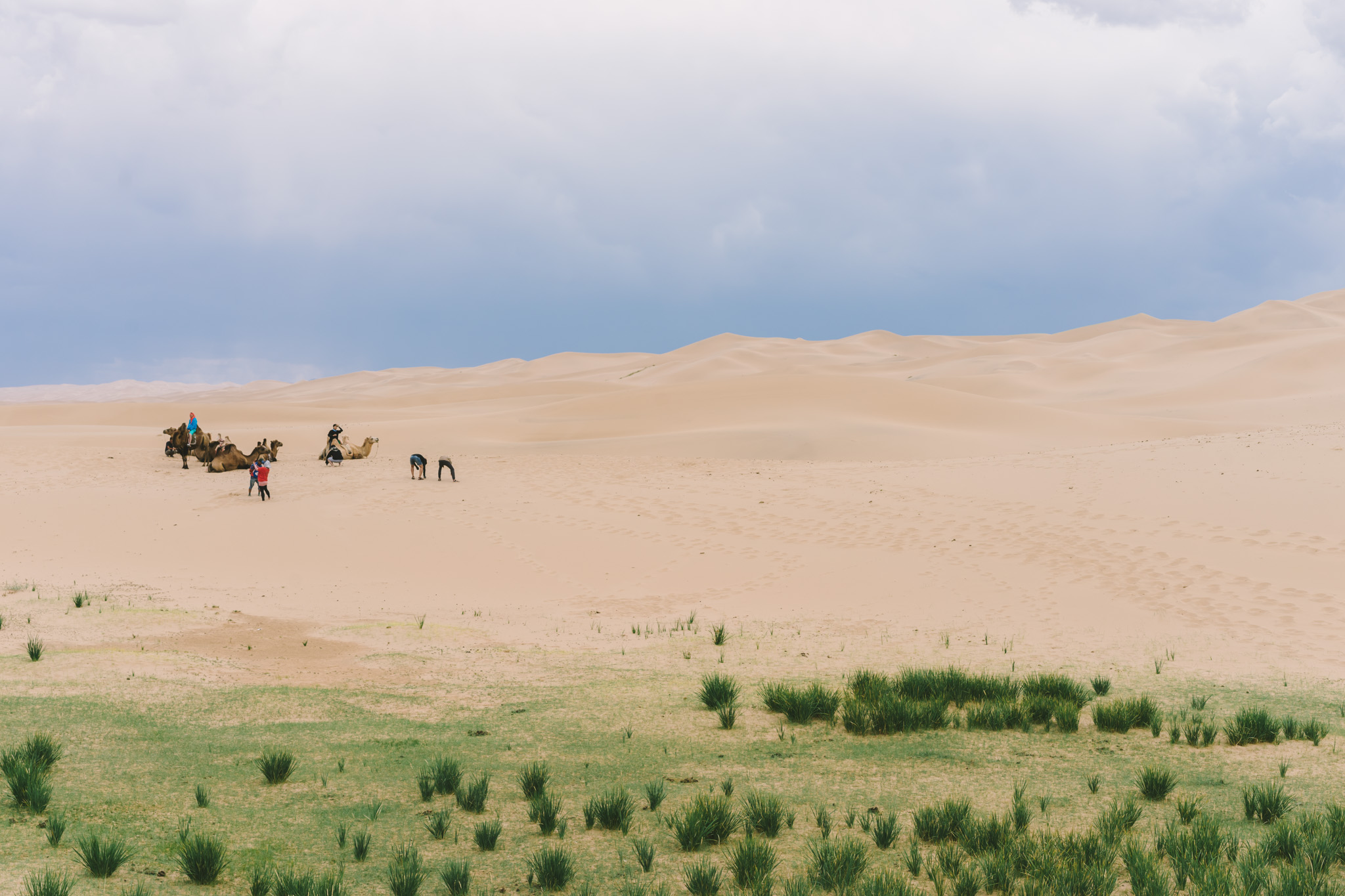
Travel Costs in Mongolia
57 – How much does it cost to backpack in Mongolia?: Well, Mongolia lies somewhere in the middle of the budget range. It’s more expensive to travel in than places like Vietnam or India, but cheaper than Japan or Korea. Due to its massive size and low population, a tour is pretty much required to see anything outside of Ulaanbaatar.
To be safe, budget between $50 and $70 per day in Mongolia if you plan on taking a group tour.
If you’re just visiting Ulaanbaatar, costs will be much lower. A hostel dorm bed (Again, I recommend the Golden Gobi ) will be less than $10 USD, and you can eat at local restaurants for only a few dollars.
Check out the State Department Store if you need to do any shopping – they have everything from camping gear to televisions.
Internet & SIM Cards in Mongolia
58 – In the countryside, internet access is non-existent: As most of Mongolia is extremely sparsely populated, expect to be offline most of the time while you’re travelling in Mongolia.
59 – What about in Ulaanbaatar and larger towns?: WiFi isn’t great, but I recommend picking up a local SIM card from either MobiCom or Unitel . With one of these local SIM cards, you’ll have 4G coverage in Ulaanbataar and quite a few towns around the country. You can purchase a SIM at any of the MobiCom or Unitel shops – just be sure to bring your passport.
Basic data packages are quite cheap – you can get about 10GB of data for around $5.
For detailed info about the different plans offered by the telecoms, check out the Mongolia Prepaid SIM Card Wiki.
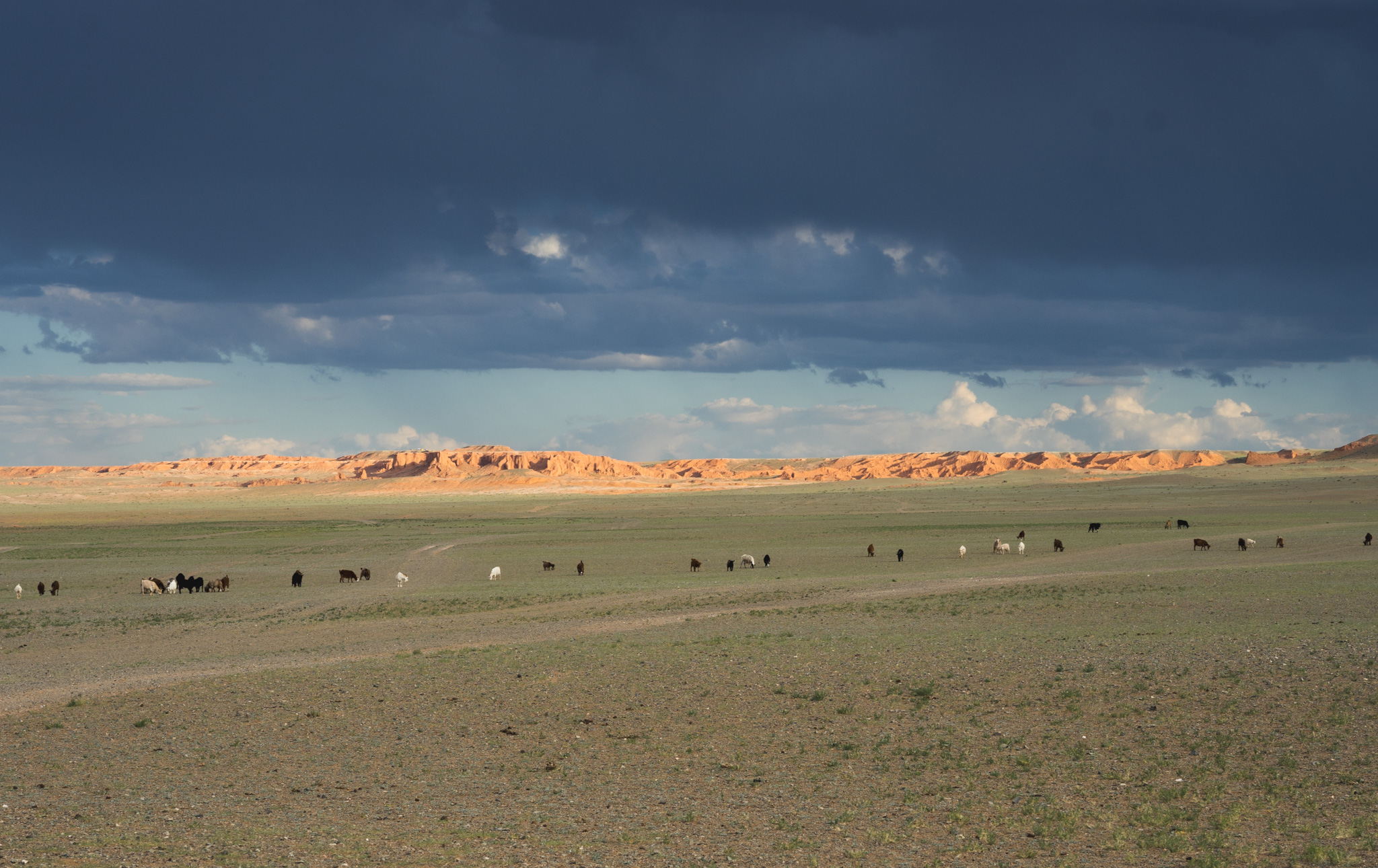
Solo Travel in Mongolia
60 – It’s easy to meet other backpackers in Ulaanbaatar: Before my trip to Mongolia, I was a bit worried about going solo. I was worried that I wouldn’t be able to find any other travellers who wanted to visit the same places as me, and therefore worried that I would be stuck paying a lot more money for my tour.
Fortunately, it’s super easy to find people to split your tour costs with in Ulaanbaatar. As long as you don’t plan on going wayyy off of the beaten path, you’ll be able to find someone. Most hostels in Ulaanbaatar communicate with each other, so they’ll ask the other hostels if they have anyone with your same plans and put you in contact.
Don’t worry about heading to Mongolia solo – you’ll be able to meet other travellers and make some new friends!
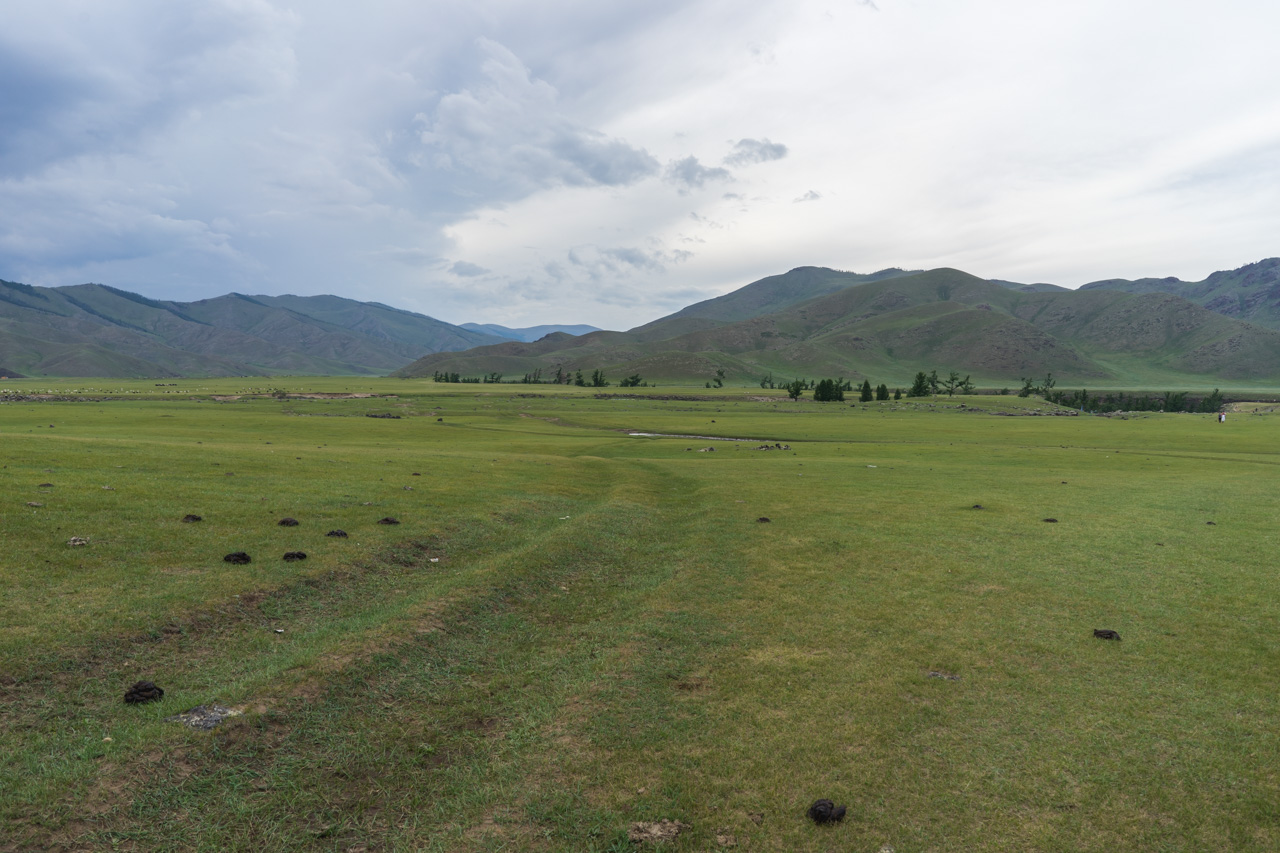
Female Travel in Mongolia
61 – Mongolia is a great destination for female travellers: Mongolia is a safe destination for female travellers, and you’ll definitely find plenty of others there.
You’ll need to be careful to dress somewhat conservatively and follow the female safety practices that you would anywhere else. Avoid heading out alone in the dark (in Ulaanbaatar), and you will be fine.
Here’s some great info on female travel in Asia – be sure to check it out if it’ll be your first time in Asia.
Travelling in Mongolia Wrap-Up
And that’s it for my guide to travelling in Mongolia! I hope this helped you plan your Mongolia adventure.
If you’ve got any questions about backpacking in Mongolia, feel free to ask me!
Remember to check out my guide to getting from Beijing to Ulaanbaatar , if you’re planning on taking that route.
I’ve also got a few other comprehensive backpacking guides – feel free to check them out if you’re planning a trip!
- China Backpacking Guide
- Pakistan Backpacking Guide
- Wakhan Corridor Travel Guide
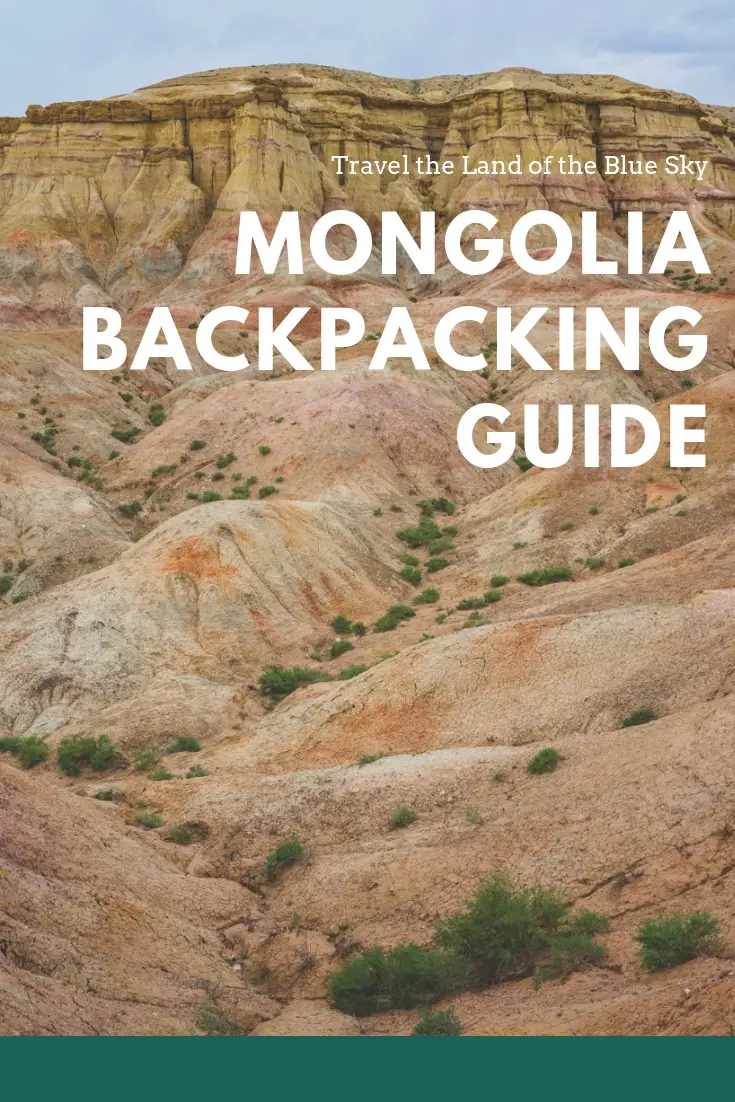
Yay transparency! There are affiliate links in this guide. If you book or buy something using my links, I’ll make a bit of money at no extra cost to you.
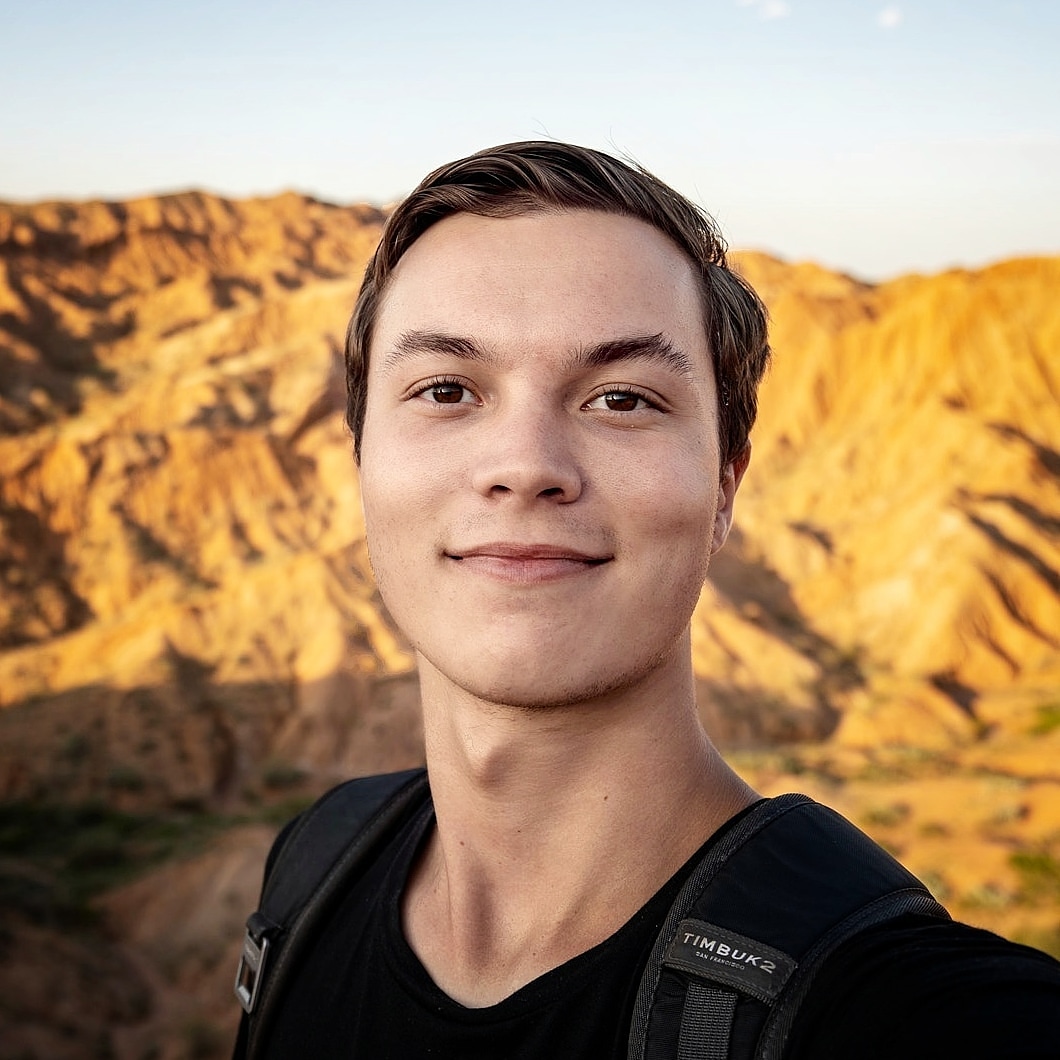
21-year old Canadian dude who loves to visit off-the-beaten-path places, climb tall mountains, and try delicious foods.
Read more about me
Want more like this?
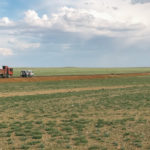
Leave a Reply Cancel reply
Your email address will not be published. Required fields are marked *

Search Smartraveller

Latest update
Exercise normal safety precautions in Mongolia.
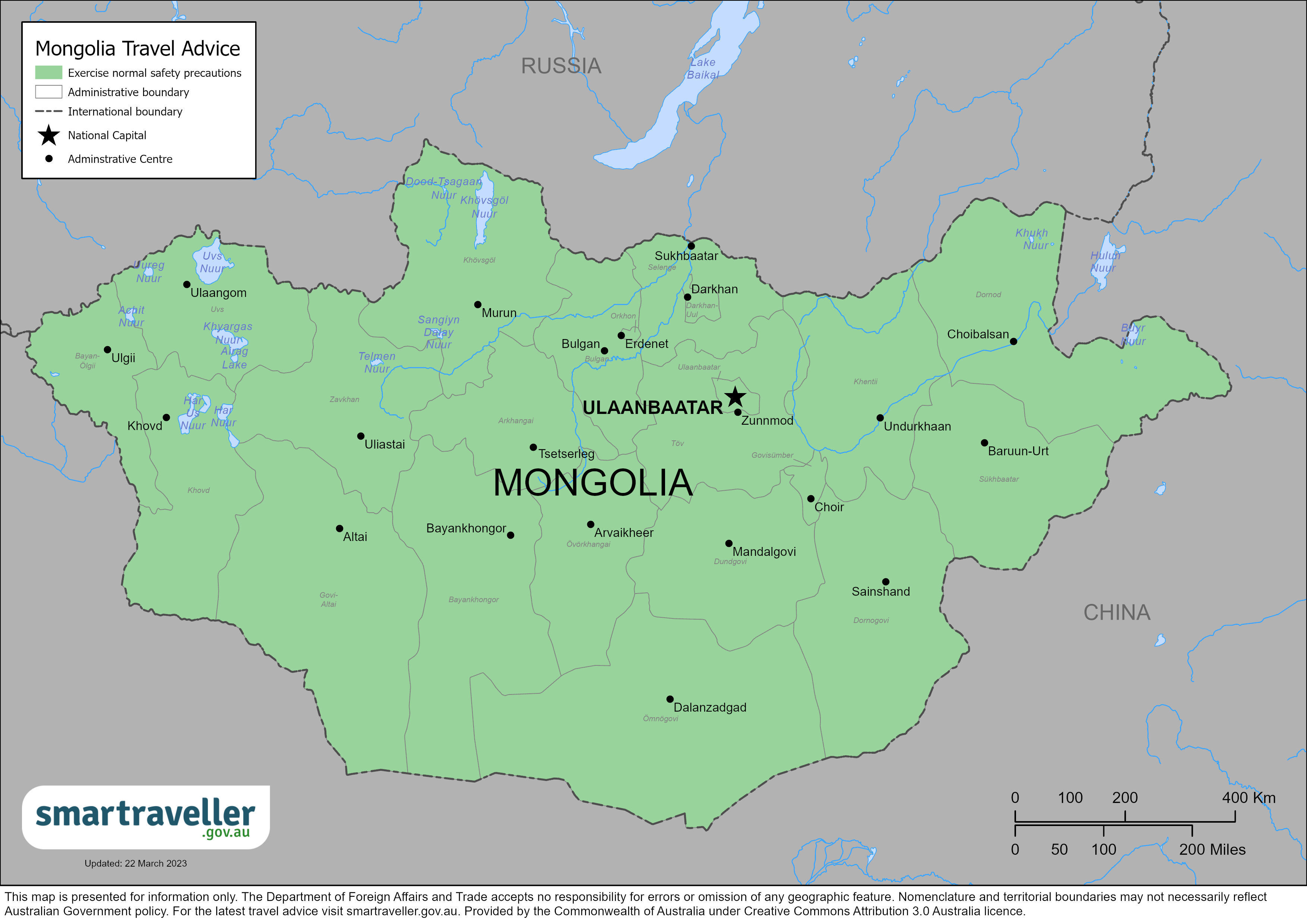
Mongolia (PDF 302.82 KB)
Asia (PDF 2.21 MB)
Local emergency contacts
Fire and rescue services, medical emergencies, advice levels.
Exercise normal safety precautions in Mongolia.
- While uncommon, violent crime is present in Mongolia, particularly in Ulaanbaatar. Criminals have assaulted and sexually harassed foreigners during the day and in busy areas. Crime is more common during major festivals and the summer tourist season. Be aware of your surroundings.
- Pickpocketing and bag snatching is common, especially on public transport and in crowded areas. Criminals posing as police have robbed travellers in the Sukhbaatar Square area of Ulaanbaatar. Be alert to thieves, especially on public transport.
- Protests can turn violent. Avoid large public gatherings.
- Mongolia's weather is extreme. Temperatures vary from 35°C in summer to minus 40°C in winter. Winter lasts from October to March. Snowstorms can also happen outside winter months. Make sure you have adequate clothing and footwear year-round. Weather conditions can change quickly.
- Earthquakes, flooding and fires sometimes occur. Follow the advice of local officials.
Full travel advice: Safety
- The standard of medical care is poor, particularly outside Ulaanbaatar. Bring basic medical supplies with you. You'll have to pay up-front, even in an emergency. If you're seriously ill or injured, you'll need medical evacuation. Ensure your travel insurance covers this.
- Rabies is a risk. It's fatal without immediate treatment. Avoid dogs and other mammals. Get medical help straight away if an animal bites or scratches you.
- Waterborne, foodborne and other infectious diseases are common. These include hand, foot and mouth disease (HFMD), hepatitis and measles. Drink only boiled or bottled water. Avoid raw or undercooked food.
- During winter, the air in Ulaanbaatar is very polluted. If you have breathing problems, speak to your doctor before you travel.
Full travel advice: Health
- Don't use or carry illegal drugs. Severe penalties include long jail terms.
- Always carry your passport. If you live in Mongolia, also carry your residency card.
- Mongolia doesn't recognise dual nationality. Always travel on your Australian passport. Dual nationals living in Mongolia may need to do national service. Contact the nearest Mongolian embassy for details.
- Same-sex relationships are legal. However, LGBTI travellers may face violence, discrimination and harassment. Avoid public displays of affection.
Full travel advice: Local laws
- Australian tourists can enter Mongolia for stays of up to 30 days without a visa.
- Entry and exit conditions can change at short notice. You should contact the nearest embassy or consulate of Mongolia for the latest details.
Chinggis Khan International Airport is recommended for entry to and exit from Mongolia.
- If you're staying longer than 30 days, register with the Office of Immigration in Ulaanbaatar. You must do this within seven days of arriving. If you're on a working visa, ensure your employer has registered for you. Working visa holders must de-register before leaving the country.
- Speak to Mongolian authorities or the nearest Embassy of Mongolia if you plan to travel to regional areas.
Full travel advice: Travel
Local contacts
- The Consular Services Charter details what we can and can't do to help you overseas.
- For consular help, contact the Australian Embassy in Ulaanbaatar.
- To stay up to date with local information, follow the Embassy's social media accounts.
Full travel advice: Local contacts
Full advice
Crimes against travellers are most common during the:
- Tsagaan Sar Festival in January or February
- Naadam Festival in July
- summer tourist season
Violent crime
While uncommon, violent crime occurs in Mongolia, particularly in Ulaanbaatar.
Criminals have randomly assaulted foreigners, even during the day and in busy areas.
Criminal attacks have included:
- physical assaults on foreign men in the company of local women
- harassment and sexual assault of foreign women
Petty crime
Pickpocketing and bag snatching are also common.
Be alert to thieves on public transport and in crowded areas in Ulaanbaatar, such as:
- Chinggis Khaan International Airport
- the Gandan Monastery
- the State Department Store
- the Naran Tuul Covered Market ('Black Market')
- the Central Post Office
- the Ulaanbaatar Railway Station
- when crossing a road in a pedestrian crowd
Travellers on trains between Mongolia and Russia are also a common target for thieves.
Pay close attention to your belongings, particularly in crowded areas and on public transport.
Criminals have targeted travellers using taxis to rob and harass them.
Only use licensed taxis, preferably booked through your accommodation.
Criminals posing as police officers have robbed travellers. This has happened in the Sukhbaatar Square area of Ulaanbaatar. Mongolian police officers are required to have name tags on their uniforms and carry ID. It is appropriate to ask to see their ID.
Cyber security
You may be at risk of cyber-based threats during overseas travel to any country. Digital identity theft is a growing concern. Your devices and personal data can be compromised, especially if you're connecting to Wi-Fi, using or connecting to shared or public computers, or to Bluetooth.
Social media can also be risky in destinations where there are social or political tensions or laws that may seem unreasonable by Australian standards. Travellers have been arrested for things they have said on social media. Don't comment on local or political events on your social media.
More information:
- Cyber security when travelling overseas
Civil unrest and political tension
Public protests and events that draw large groups of people can turn violent.
Be alert in areas with large crowds.
More information:
Demonstrations and civil unrest
Terrorism is a threat worldwide.
Climate and natural disasters
Mongolia experiences natural disasters and severe weather , such as:
- earthquakes
- forest fires
Severe weather
Temperatures vary from 35°C in summer to minus 40°C in winter.
Winter is long and severe. It lasts from October to March.
Many accidents happen during winter due to black ice, especially in urban areas. Pedestrians are involved in these accidents too.
Snowstorms can happen outside winter months. Make sure you have adequate clothing and footwear at all times of year.
Weather conditions can change quickly, even in summer. This increases your risk of hypothermia.
The rainy season happens between July and September. Flooding may happen. Avoid flood areas, monitor local media reports and follow the instructions of local authorities.
Earthquakes and natural disasters
Mongolia experiences earthquakes.
Forest or grass fires can be a risk in the drier months.
If a natural disaster occurs:
- follow the advice of local authorities
- monitor the media for the latest information
Register with the Global Disaster Alert and Coordination System to receive alerts on major disasters.
Travel insurance
Get comprehensive travel insurance before you leave.
Your policy needs to cover all overseas medical costs, including medical evacuation. The Australian Government won't pay for these costs.
If you can't afford travel insurance, you can't afford to travel. This applies to everyone, no matter how healthy and fit you are.
If you're not insured, you may have to pay many thousands of dollars up-front for medical care.
- what activities and care your policy covers
- that your insurance covers you for the whole time you'll be away
Physical and mental health
Consider your physical and mental health before you travel, especially if you have an existing medical condition.
See your doctor or travel clinic to:
- have a basic health check-up
- ask if your travel plans may affect your health
- plan any vaccinations you need
Do this at least eight weeks before you leave.
If you have immediate concerns for your welfare or the welfare of another Australian, call the 24-hour Consular Emergency Centre on +61 2 6261 3305 or contact your nearest Australian Embassy, High Commission or Consulate to discuss counselling hotlines and services available in your location.
- General health advice
- Healthy holiday tips (Healthdirect Australia)
Not all medication available over the counter or by prescription in Australia is available in other countries. Some may even be considered illegal or a controlled substance, even if prescribed by an Australian doctor.
If you plan to bring medication, check if it's legal in Mongolia. Take enough legal medicine for your trip.
The range of medicine available in Mongolia is limited.
Carry a copy of your prescription and a letter from your doctor stating:
- what the medicine is
- your required dosage
- that it's for personal use
Authorities could refuse you entry or prosecute you if you arrive without a prescription for your medication.
Health risks
The standard of medical care is poor, particularly outside Ulaanbaatar. If you're in Mongolia, monitor your health closely.
Avoid contact with dogs and other animals as they may carry dangerous diseases, such as rabies .
If an animal bites or scratches you:
- wash the wound thoroughly with soap and water for 10 to 15 minutes
- get urgent medical help
Other health risks
Waterborne, foodborne and other infectious diseases are common. These include:
- sexually transmitted infections
- hand, foot and mouth disease
- tuberculosis
Serious outbreaks sometimes occur.
To protect yourself from illness:
- drink boiled water or bottled water with sealed lids
- avoid ice cubes
- avoid uncooked and undercooked food, such as salads
Get urgent medical help if you suspect food poisoning or have a fever or diarrhea.
Infectious diseases
Air pollution
During winter, from October to March, the air in Ulaanbaatar is dangerously polluted. This is because people burn coal and rubber for heating.
Speak to your doctor before travelling if you have breathing-related problems.
Medical care
Medical facilities.
The standard of medical care is poor, particularly outside Ulaanbaatar.
Bring basic medical supplies with you.
Doctors and hospitals require payment before treating you, even if it's an emergency.
If you become seriously ill or injured, you'll need to be evacuated to get proper care. Medical evacuation can be very expensive. You'll probably need to pay up-front. Delays are common while waiting for approvals.
Severe weather and snowfall can delay or stop medical evacuations from remote places.
You're subject to all local laws and penalties, including those that may appear harsh by Australian standards. Research local laws before travelling.
If you're arrested or jailed, the Australian Government will do what it can to help you under our Consular Services Charter . But we can't get you out of trouble or out of jail.
Arrested or jailed
Penalties for drug offences are severe and include long prison terms in local jails.
Carrying or using drugs
By law, you must always carry your passport when travelling in Mongolia.
If you live in Mongolia, you must also carry your residency card.
If you're involved in legal action, authorities might not let you leave. You may have to wait until the issue is resolved. This includes when criminal investigations have started after commercial disputes.
Australian laws
Some Australian criminal laws still apply when you're overseas. If you break these laws, you may face prosecution in Australia.
Staying within the law and respecting customs
Dual citizenship
Mongolia doesn't recognise dual nationality.
If you're a dual citizen, this limits the consular services we can give if you're arrested or detained.
Always travel on your Australian passport .
If you're a dual national who plans to live in Mongolia, you may need to complete national service. Contact the nearest embassy of Mongolia before travelling.
Dual nationals
Local customs
Same-sex relationships are legal.
However, the Mongolian National Human Rights Commission has reported LGBTI travellers can face violence and discrimination.
Members of the LGBTI community have also reported harassment.
Avoid public displays of affection.
LGBTI travellers
Visas and border measures
Every country or territory decides who can enter or leave through its borders. For specific information about the evidence you'll need to enter a foreign destination, check with the nearest embassy, consulate or immigration department of the destination you're entering.
Australian tourists can enter Mongolia for stays of up to 30 days without a visa.
Foreign nationals may apply for short-term (up to 60 days) diplomatic, official, or business visas on the condition they meet health-related entry requirements.
Entry and exit conditions can change at short notice. Contact the nearest embassy or consulate for details about visas, currency, customs and quarantine rules.
Border measures
You need to carry proof of your onward or return ticket to enter Mongolia.
Staying in Mongolia
All businesses and services remain open and available.
Departure from Mongolia
Monitor the Australian Embassy website and social media for major updates and follow the advice of local authorities.
Other formalities
You must show proof of a return airfare or onward travel to enter Mongolia.
If you're staying longer than 30 days, you must register with the Office of Immigration in Ulaanbaatar within 7 days of arriving.
This includes people on working visas. Confirm your employer has registered on your behalf.
If you don't register, authorities can fine you.
If you have a working visa, you must de-register before leaving Mongolia.
You may need an HIV/AIDS test if you:
- plan to work, either paid or voluntary
- marry a Mongolian national
Travel with children
If you're travelling with a child who isn't yours, you must show a notarised letter. The letter must be from the child's legal guardian granting you permission to travel with the child.
Advice for people travelling with children
Import rules
Authorities have strict rules about importing:
- electrical equipment
- some technological equipment
The Mongolian Border Protection Authority (Mongolian) will check the equipment. It will work out if tax applies.
These rules also cover items being donated, such as medical equipment.
They don't apply to common personal items, such as laptops and tablets.
Some countries won't let you enter unless your passport is valid for 6 months after you plan to leave that country. This can apply even if you're just transiting or stopping over.
Some foreign governments and airlines apply the rule inconsistently. Travellers can receive conflicting advice from different sources.
You can end up stranded if your passport is not valid for more than 6 months.
The Australian Government does not set these rules. Check your passport's expiry date before you travel. If you're not sure it'll be valid for long enough, consider getting a new passport .
Lost or stolen passport
Your passport is a valuable document. It's attractive to people who may try to use your identity to commit crimes.
Some people may try to trick you into giving them your passport. Always keep it in a safe place.
If your passport is lost or stolen, tell the Australian Government as soon as possible:
- In Australia, contact the Australian Passport Information Service .
- If you're overseas, contact the nearest Australian embassy or consulate
Passport with 'X' gender identifier
Although Australian passports comply with international standards for sex and gender, we can't guarantee that a passport showing 'X' in the sex field will be accepted for entry or transit by another country. Contact the nearest embassy, high commission or consulate of your destination before you arrive at the border to confirm if authorities will accept passports with 'X' gender markers.
- LGBTI travellers
The local currency is Mongolian Tugrik (MNT).
Some banks in Ulaanbaatar buy Australian dollars. Check the banks' websites before you travel.
You can generally exchange:
- Russian roubles
- Chinese yuan
However, these currencies may not be accepted everywhere.
US currency dated before 2000 may not be accepted in Mongolia, even by banks.
Bank notes of different amounts are exchanged at different rates. Lower value notes receive a lower rate.
Outside Ulaanbaatar, carry cash.
There are few ATMs outside Ulaanbaatar.
Some smaller shops, supermarkets and restaurants don't accept credit cards.
Travel between Mongolia and Russia
If, despite our advice, you travel to Russia, you may experience border and customs difficulties when entering by train from Russia.
Declare all goods and cash when entering and leaving Russia.
The Embassy of Russia in Mongolia can issue tourist visas for Russia.
Travel advice for Russia
Travel between Mongolia and China
If you travel between Mongolia and China, you must follow China's entry and exit rules. This is the case even if you are only transiting through China.
The Embassy of China in Mongolia can only issue a visa for China to residents of Mongolia.
If you're going to China, you must get a visa before you travel.
- Travel advice for China
Local travel
Driving permit.
You can't drive a vehicle or ride a motorbike with an Australian driver's licence or International Driving Permit (IDP) in Mongolia.
For short visits, use taxis or hire a car with a driver.
If you plan to stay more than 12 months, apply for a Mongolian licence.
National Police Agency
Travel by car
To travel to Mongolia by car, you must get approval from the Mongolian Customs Office before you enter.
For this, you'll need to provide:
- copy of bio data page of passport;
- copy of driver’s licence
- car registration papers;
- ownership certificate;
- travel route and Mongolian contact numbers.
The Mongolian Customs Office will make a record on the foreign citizen’s visa stamp that the citizen has entered with a car, which will be checked when the citizen leaves the country.
Mongolian Border Protection checks the visa in addition to asking for car related documents and requires advance notice if a large number of foreign citizens enter the country by car at the same time.
Road travel
Driving in Mongolia can be dangerous, especially at night, due to poor:
- road conditions
- vehicle maintenance
- local driving practices
There are few sealed roads outside of Ulaanbaatar.
You're 4 times more likely to die in a traffic accident in Mongolia than in Australia.
Many accidents happen during winter due to black ice, especially in urban areas. Right-hand drive vehicles cause many accidents on rural roads. Pedestrians are often injured.
Take care as a pedestrian. Drivers don't always give way, even at marked pedestrian crossings.
To protect yourself when driving beyond city limits, take:
- a GPS or compass
- communications equipment, such as a satellite phone
- emergency medical supplies
Communication and medical facilities are often poor outside cities.
Driving or riding
Snowfall and dust storms
For most of the year, heavy snowfall can:
- restrict access to many regional areas
- greatly increase risks of car travel between towns
To drive safely while travelling during snowy periods:
- allow for additional travel time
- make sure your insurance policy covers delays and cancellations
Severe weather and snowfall can also restrict medical evacuations from remote places.
Take care as a pedestrian during severe weather. Heavy snow can cause black ice on footpaths and road crossings.
Dust storms during May and June can affect visibility when driving.
If you ride a motorcycle, always wear a helmet.
Road safety and driving
Taxis can be dangerous. Book a reliable, licensed taxi company through your accommodation, restaurant, or venue.
Public transport
Local transport providers may not carry accident liability insurance. This includes bus and private car operators.
Always use seatbelts, even if others don't.
If appropriate safety equipment isn't available, use another provider.
Transport and getting around safely
DFAT doesn't provide information on the safety of individual commercial airlines or flight paths.
Check Mongolia's air safety profile with the Aviation Safety Network.
Regional travel
Access to some regional districts is occasionally restricted for quarantine, including:
- bird flu (avian influenza)
- hand, foot and mouth disease (HFMD)
- bubonic or pneumonic plague
Restrictions can change.
Speak to the Mongolian authorities or the nearest Embassy of Mongolia if you plan to travel to regional areas.
Emergencies
Depending on what you need, contact your:
- family and friends
- travel agent
- insurance provider
Always get a police report when you report a crime.
Your insurer should have a 24-hour emergency number.
Consular contacts
Read the Consular Services Charter for what the Australian Government can and can't do to help you overseas.
You can get consular help from the Australian Embassy in Mongolia.
Australian Embassy, Ulaanbaatar
Australian Embassy
Shangri-La Centre, Level 20
Olympic St 19A, SB District
Ulaanbaatar 14241, Mongolia
Phone: (+976) 7013 3001
Email: [email protected]
Website: http://mongolia.embassy.gov.au/
Facebook: Australian Embassy in Mongolia
Twitter: @AusAmbMongolia
Check the Embassy website for details about opening hours and any temporary closures.
24-hour Consular Emergency Centre
In a consular emergency, if you can't contact an embassy, call the 24-hour Consular Emergency Centre on:
- +61 2 6261 3305 from overseas
- 1300 555 135 in Australia

Travelling to Mongolia?
Sign up to get the latest travel advice updates..
Be the first to know official government advice when travelling.
Travel Vaccines and Advice for Mongolia

Mongolia is known for its natural beauty, from the tall mountains, blue lakes, and huge steppes. Travellers can go hiking, horseback riding, or camping and see wonders.
Mongolians are also known for being hospitable. It can be easier to find people to talk with or offer you help if you need it. But, despite the beauty of the rural areas, the cities are truly modern.
There is much to see and do in the former home of the Mongolian Empire.
Do I Need Vaccines for Mongolia?
Yes, some vaccines are recommended or required for Mongolia. The PHAC and WHO recommend the following vaccinations for Mongolia: COVID-19 , hepatitis A , hepatitis B , typhoid , rabies , meningitis , polio , measles, mumps and rubella (MMR) , Tdap (tetanus, diphtheria and pertussis) , chickenpox , shingles , pneumonia and influenza .
See the bullets below to learn more about some of these key immunizations:
- COVID-19 – Airborne – Recommended for all travellers
- Hepatitis A – Food & Water – Recommended for most travellers
- Hepatitis B – Blood & Body Fluids – Accelerated schedule available
- Typhoid – Food & Water – Shot lasts 2 years. Oral vaccine lasts 5 years, must be able to swallow pills. Oral doses must be kept in refrigerator.
- Rabies – Saliva of Infected Animals – High risk country. Vaccine recommended for long-term travellers and those who may come in contact with animals.
- Measles Mumps Rubella (MMR) – Various Vectors – Given to anyone unvaccinated and/or born after 1957. One time adult booster recommended.
- TDAP (Tetanus, Diphtheria & Pertussis) – Wounds & Airborne – Only one adult booster of pertussis required.
- Chickenpox – Direct Contact & Airborne – Given to those unvaccinated that did not have chickenpox.
- Shingles – Direct Contact – Vaccine can still be given if you have had shingles.
- Pneumonia – Airborne – Two vaccines given separately. All 65+ or immunocompromised should receive both.
- Influenza – Airborne – Vaccine components change annually.
- Meningitis – Airborne & Direct Contact – Given to anyone unvaccinated or at an increased risk, especially students.
- Polio – Food & Water – Considered a routine vaccination for most travel itineraries. Single adult booster recommended.
See the tables below for more information:
If you plan to interact with animals, consider receiving a rabies vaccine . Healthcare is limited in Mongolia and a rabies vaccine can help avoid a serious health threat.
See our vaccinations page to learn more about these infections and vaccines. Ready to protect yourself? Book your travel health appointment today by calling or schedule online now .
Do I Need a Visa for Mongolia?
Canadian citizens using a Canadian passport are free to enter Mongolia without a visa for a stay of up to 30 days.
If you are staying for more than 30 days, you must register with Mongolian Immigration within seven days of arrival.
Sources: Embassy of Mongolia and Canadian Travel and Tourism
Visit the Canadian Travel and Tourism website for more information on entry and exit requirements.
What is the Climate Like in Mongolia?
Mongolia has a continental climate with very long and cold winters and short summers. Winter nights often reach near zero. But, summers can easily reach over 35 degrees. The country is very sunny, with an average of 250 sunny days each year. There is very little rainfall in Mongolia, the most occurring in July and August.
How Safe is Mongolia?
Mongolia is a relatively safe country to visit. Petty crime, such as pick-pocketing or bag-snatching, does occur in crowded places. Muggings are on the rise. Avoid travelling alone in unknown, dark neighborhoods. Travellers should take precautions when visiting large cities or when travelling at night. Travel in groups and do not enter unmarked taxis.
The Mongolian Horse Trek
An amazing way to experience the Mongolian nomad’s life is to go on a Mongolian Horse Trek. You will ride through the steppes, fish in clear rivers and get to know nomad families. You can also camp outdoors in beautiful fields or near sacred Mongolian places. This is the ideal adventure for those who love the outdoors and want to understand the nomadic lifestyle.
What Should I Take to Mongolia?
Be sure to bring these items with you on your trip to Mongolia:
- Comfortable Shoes – Mongolia is known for its beautiful scenery. To see it all, you’ll want to have a comfortable pair of shoes.
- Warm Clothing – Mongolia can get below freezing in the winter. Make sure you pack very warm clothes if visiting then.
- Plug Adapters – Mongolian power sockets are type C and E. An adapter is needed when travelling.
Canadian Embassy to Mongolia
Canadian consular services can help travellers with many issues they may face including passport services. Once in Mongolia, the information for the Canadian Embassy is:
Canadian Embassy to Mongolia Central Tower, Sukhbaatar district 8th horoo, Great Chinggis Khaan’s Square -2, Ulaanbaatar, Mongolia Tel.: (976-11) 332-500
Stay safe abroad with Passport Health. Call or book online now and start travelling safely today!
Customer Reviews
Passport health – travel vaccines for mongolia.
On This Page: Do I Need Vaccines for Mongolia? Do I Need a Visa for Mongolia? What is the Climate Like in Mongolia? How Safe is Mongolia? The Mongolian Horse Trek What Should I Take to Mongolia? Canadian Embassy to Mongolia
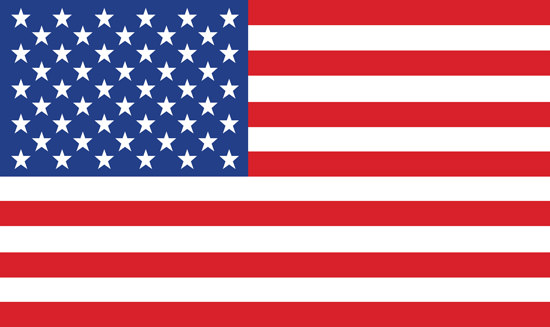
- PIPEDA Policy and Consent Form
- Privacy Policy
- Automatic Data Collection Statement

IMAGES
VIDEO
COMMENTS
at the Gandantegchinlen Monastery. at the State Department Store in Ulaanbaatar. While in Mongolia: Ensure that your belongings, including your passport and other travel documents, are secure at all times. Exercise caution in crowded areas. There have been incidents of violent crime, such as assaults and robberies.
5. Download podcasts and audiobooks for those long road trips. Mongolia is three times the size of France, and most roads are bumpy tracks, which translates to low average speeds even in a modern 4WD. Expect to spend hours bouncing along through vast, unchanging landscapes - beautiful but somewhat repetitive.
This is not a year-round destination for most people. Ulaanbaatar is actually the coldest capital in the world with an average temp of -1 degrees C. Up north, temperatures drop to -45 C in winter. If you plan to travel around the country plan your visit for the travel season. Peak season if you can.
Canada and Mongolia. Services for Canadians if you're visiting, studying, working or doing business in Mongolia. Includes information about coming to Canada. Travel advice and advisories - Mongolia. Exercise normal security precautions. Travel advice, passport and entry requirements, health and safety information, and more.
Flights from the US and Canada. When taking a flight from the U.S., you'll be landing at the Chinggis Khaan International Airport (ULN), 15 kilometers away from Ulaanbaatar, the Mongolian capital. However, it will take a few connection flights. By Korean Air, you can catch a connecting flight to Ulaanbaatar from Seoul.
This travel guide for Mongolia includes all recommended vaccines and medications to travel to Mongolia, safety advice and in-country recommendations for medical care in Mongolia. X. ... Travelling outside of Canada 16 June, 2021. More News. CALL: 1-888-224-8809 Mon to Thu 8AM - 6PM Friday 8AM - 5PM.
Best in Travel. Mongolia: Behind the scenes of our Best in Travel Video. Oct 30, 2023 • 3 min read. ... Tips & Advice. The 12 most incredible places to visit in Mongolia. Aug 30, 2023 • 9 min read. Destination Practicalities. The best times to visit Mongolia.
The Best Time To Visit: July to December. The best time for traveling to Mongolia is during the warmer, drier months between May and October with spring and fall being the absolute best. We visited during the summer and while we should've had decent weather, we actually saw quite a bit of rain.
Call us in Washington, D.C. at 1-888-407-4747 (toll-free in the United States and Canada) or 1-202-501-4444 (from all other countries) from 8:00 a.m. to 8:00 p.m., Eastern Standard Time, Monday through Friday (except U.S. federal holidays). See the State Department's travel website for the Worldwide Caution and Travel Advisories.
Here are some other great things to see and experience when visiting Mongolia in June, July, and August: Annual Naadam Festival. PlayTime Music Festival. Spirit of Gobi Music Festival. Tenger World Shaman Festival. Mongol Derby. Monkey Run Mongolia. Free Daily Cultural Shows in Ulaanbaatar.
While in Mongolia: Ensure that your belongings, including your passport and other travel documents, are secure at all times. Exercise caution in crowded areas; There have been incidents of violent crime, such as assaults and robberies. Incidents occur more frequently in major cities.
Wherever you choose to travel in Mongolia, here are five things to know before you go. ... Transport in Mongolia: Tips for Traveling Around Safely. ... World Nomads (Canada) Ltd (BC: 0700178; Business No: 001 85379 7942 RC0001) is a licensed agent sponsored by AIG Insurance Company of Canada at 120 Bremner Boulevard, Suite 2200, Toronto ...
Reissued with obsolete COVID-19 page links removed. Exercise normal precautions in Mongolia. Read the country information page for additional information on travel to Mongolia.. If you travel to Mongolia, you should: Enroll in the Smart Traveler Enrollment Program (STEP) to receive Alerts and make it easier to locate you in an emergency.; Monitor local media for breaking events and adjust your ...
Mongolia Travel Guides. The best tips and advice for visiting Mongolia in 2024, including up-to-date travel guides, packing tips, budgeting advice, and your most common Mongolia travel questions answered. Mongolia is one of the most fascinating places to visit in the world because it has it all.
Quick Tips for Planning Your Mongolia Itinerary. Here are a few quick tips for planning your trip that will make your Mongolia itinerary run more smoothly: Plan *almost* everything in advance. Mongolia is not a place to "wing it". You won't find hotels everywhere. Or water, for that matter. Wi-Fi won't necessarily work once you leave ...
Budget: The cost of travel in Mongolia can vary widely depending on your travel style and itinerary. Budget accommodation and food can be found for around $20-30 per day, while mid-range hotels and restaurants can cost around $50-80 per day. Tours and activities can range from $50-100 per day and up.
How to travel by Train. If you planning to take train to Mongolia you can have legendary Trans-Siberian Railway. It runs 7925km which is longest rail line in the world. When you traveling in Beijing, China or Moscow, Russia it will easy to catch train to Mongolia. From Moscow to Ulaanbaatar takes 5 days and 28 hours from Beijing.
Where to Go in Mongolia - Itinerary. Day 1: Visiting Ulaanbaatar. Day 2: Getting from Ulaanbaatar to the Gobi desert. Day 3: Visit the Baga Gazryn Chuluu Rock Formations. Day 4: Sleep at a Ger Camp in the Gobi Desert. Day 5: Dalanzagad to Gobi Discovery Ger Camp. Day 6: Hiking in Yolin Am - Mongolia's Ice Valley.
21 days visa-free: Philippines. 14 days visa-free: Hong Kong. 2 - Mongolia visa at an embassy: If you're not on the above list of countries, you should apply for your Mongolia visa at your nearest Mongolia embassy. To apply for a tourist visa, you'll need: Completed application form. 3.5×4.5cm photo.
If, despite our advice, you travel to Russia, you may experience border and customs difficulties when entering by train from Russia. Declare all goods and cash when entering and leaving Russia. The Embassy of Russia in Mongolia can issue tourist visas for Russia. More information: Travel advice for Russia
Advice. Travellers'. Diarrhea Kits. Available. Mongolia is known for its natural beauty, from the tall mountains, blue lakes, and huge steppes. Travellers can go hiking, horseback riding, or camping and see wonders. Mongolians are also known for being hospitable. It can be easier to find people to talk with or offer you help if you need it.
Living in Mongolia. Travelling to Mongolia. FCDO travel advice for Mongolia. Includes safety and security, insurance, entry requirements and legal differences.